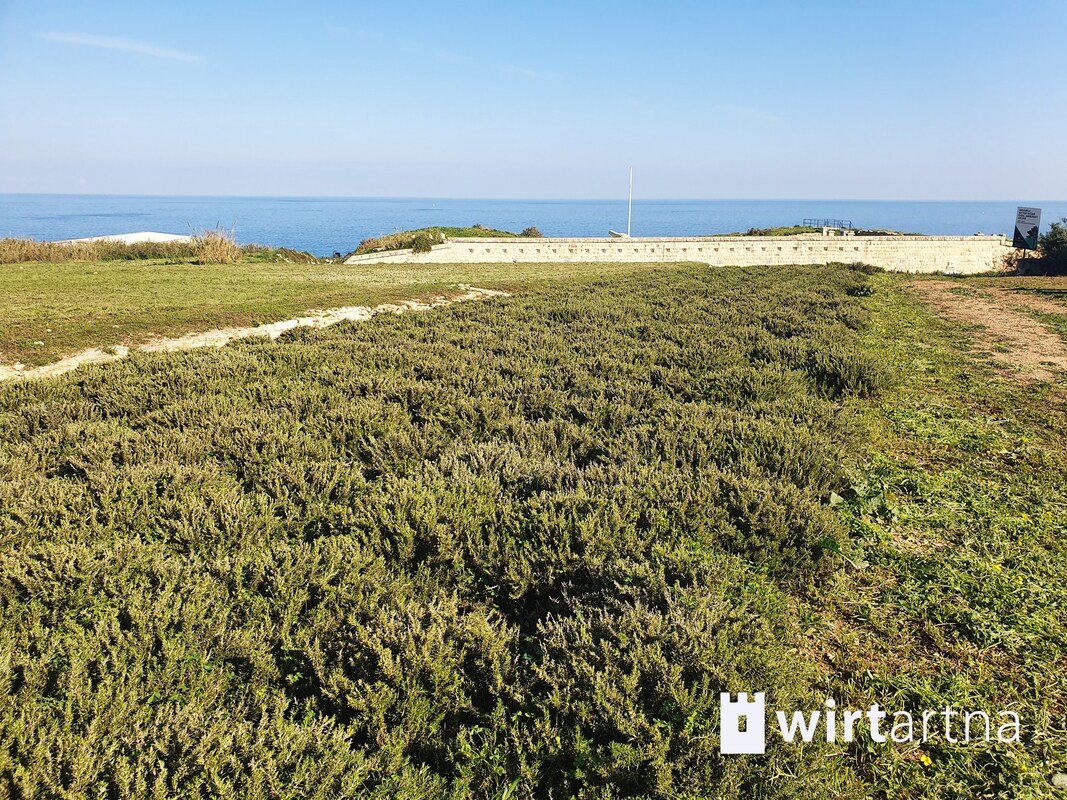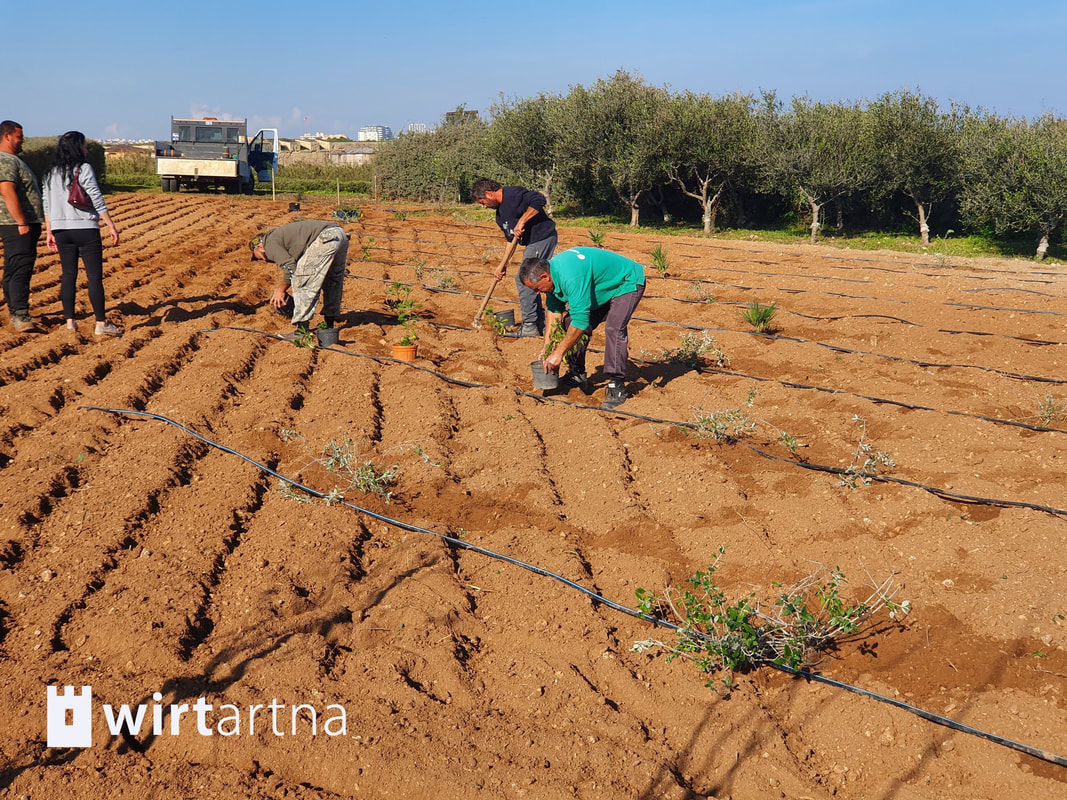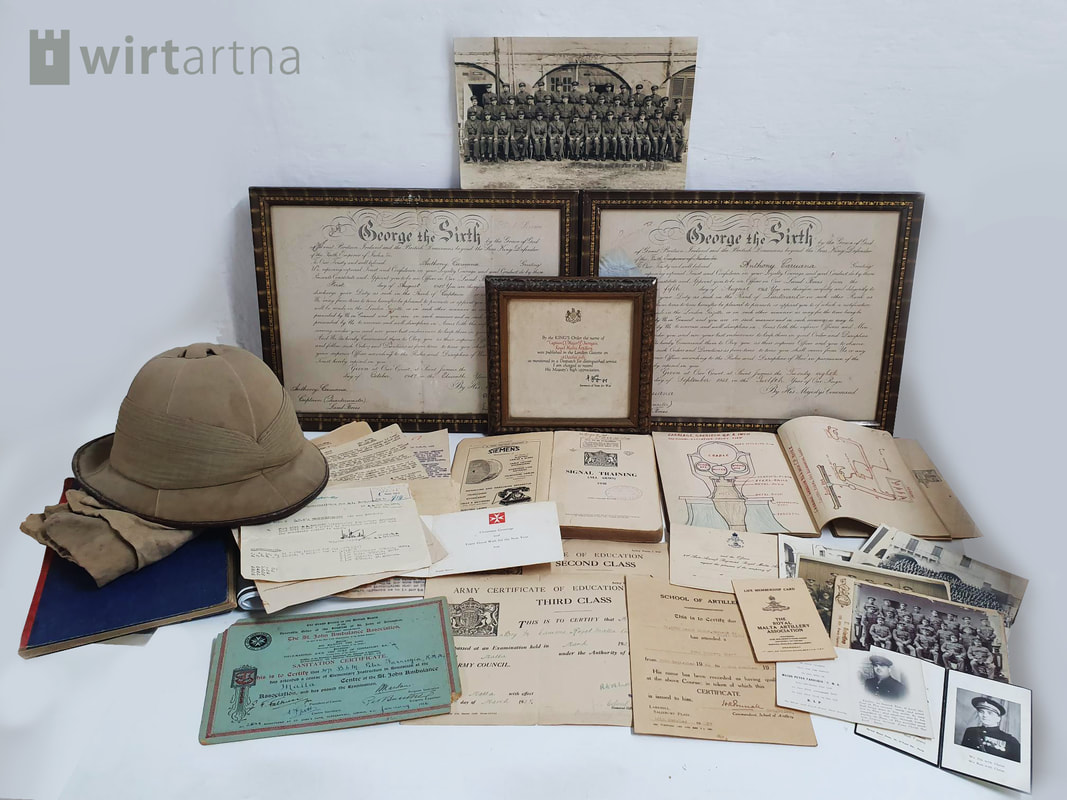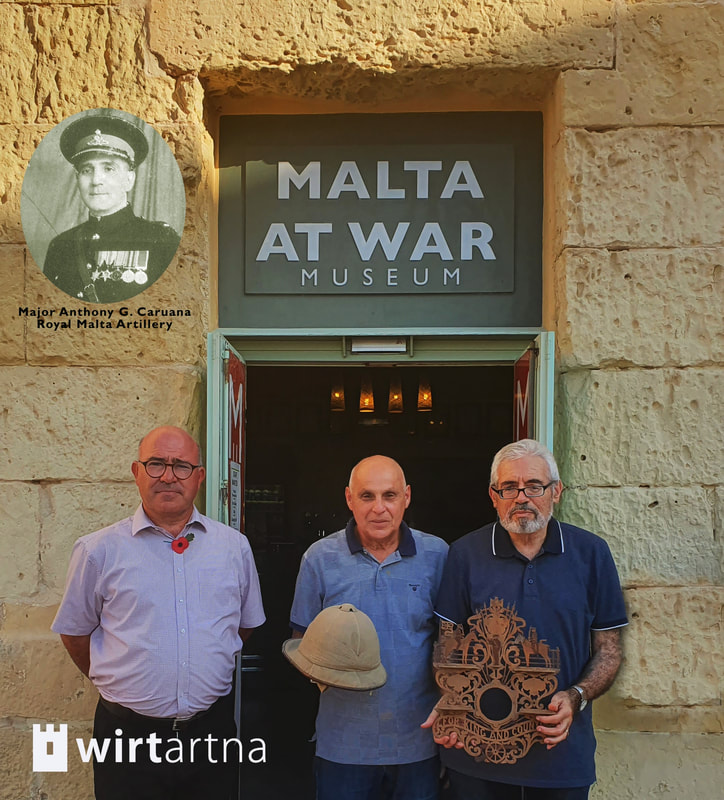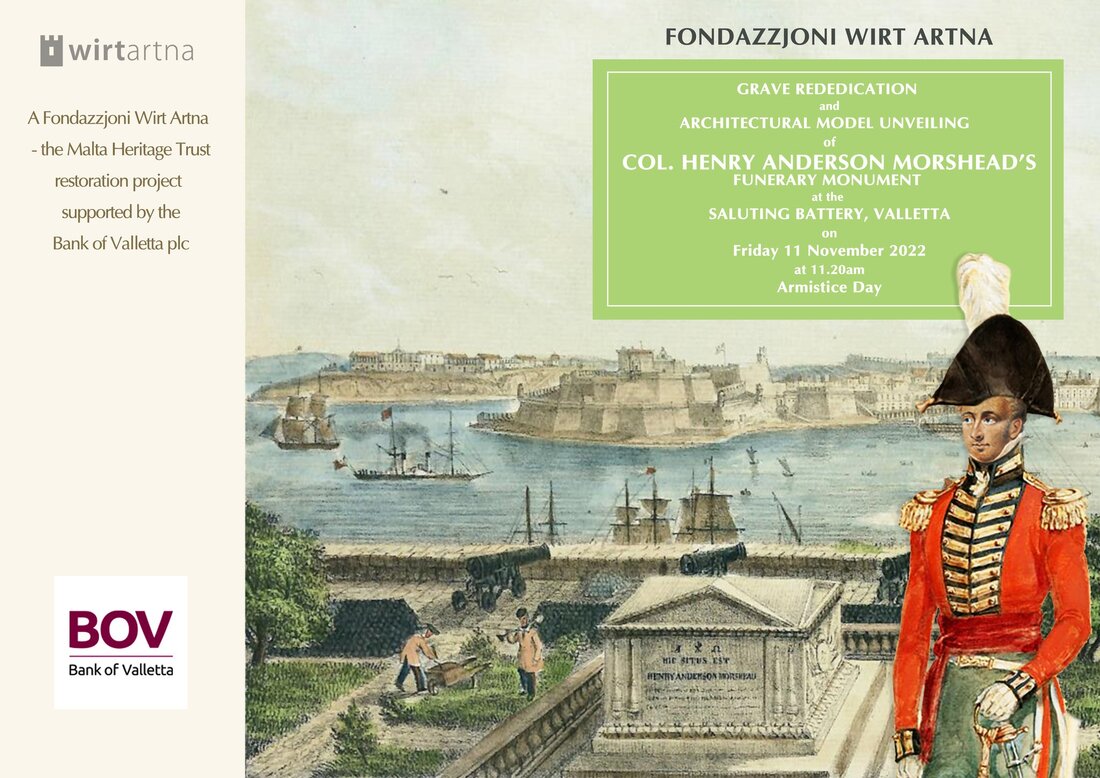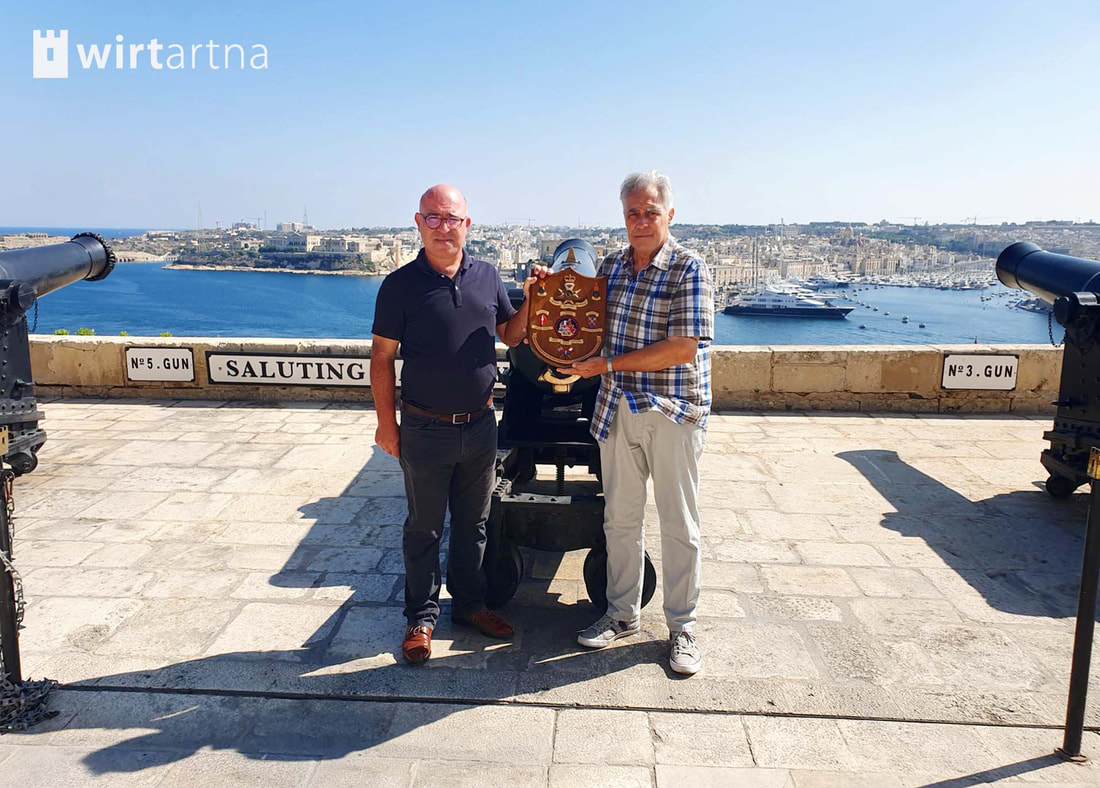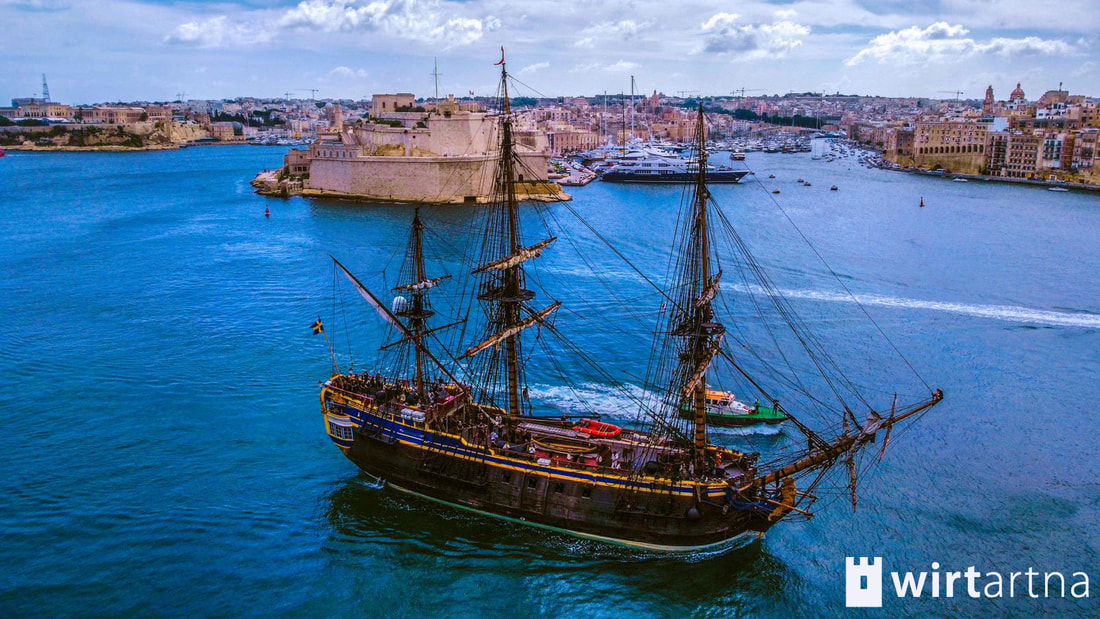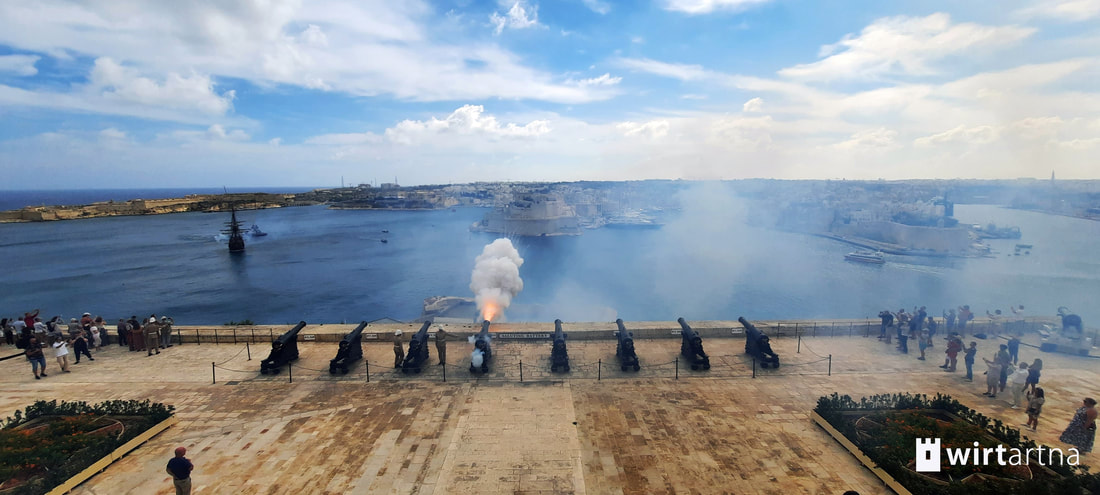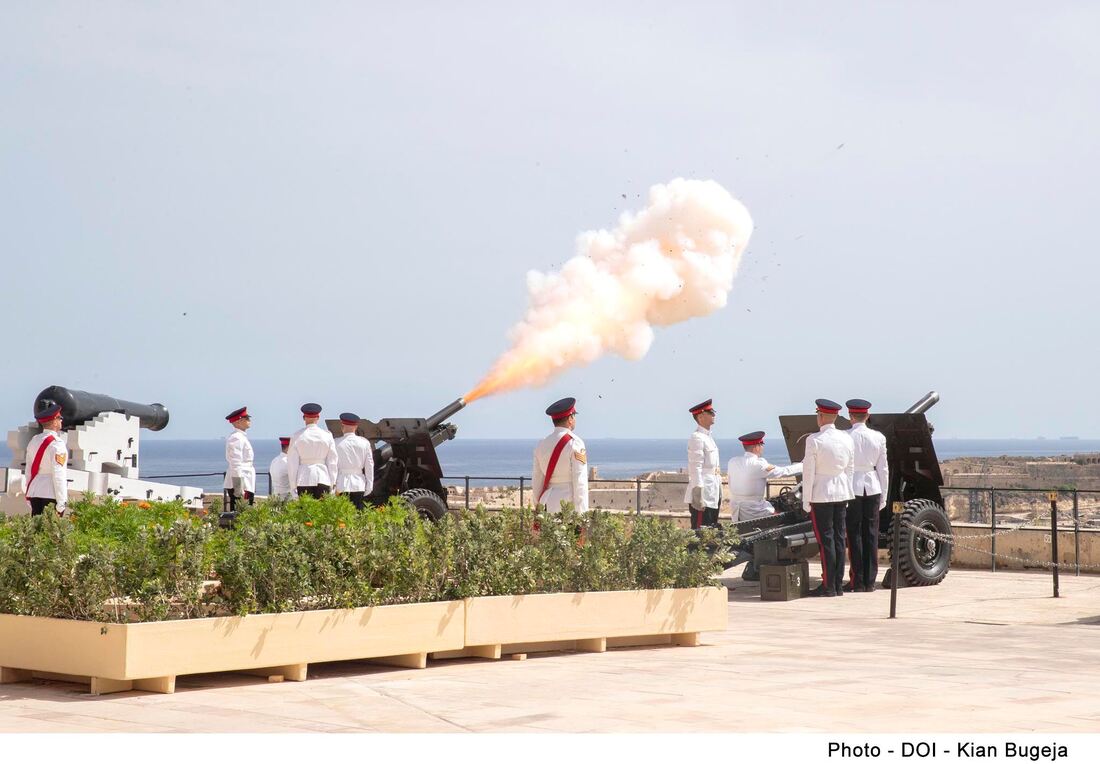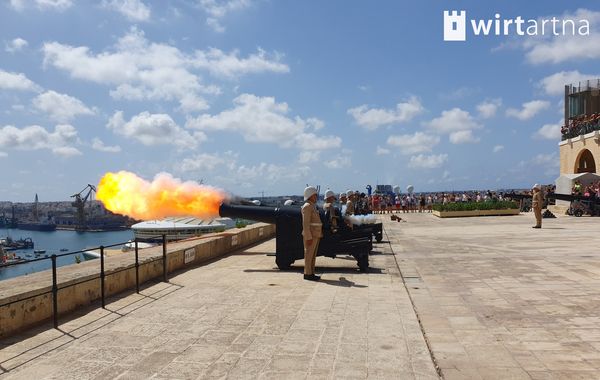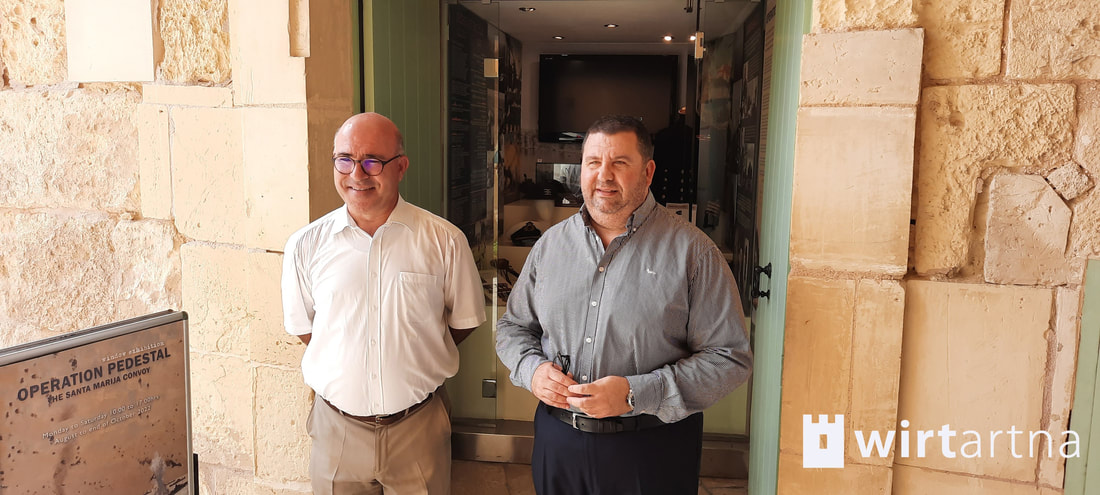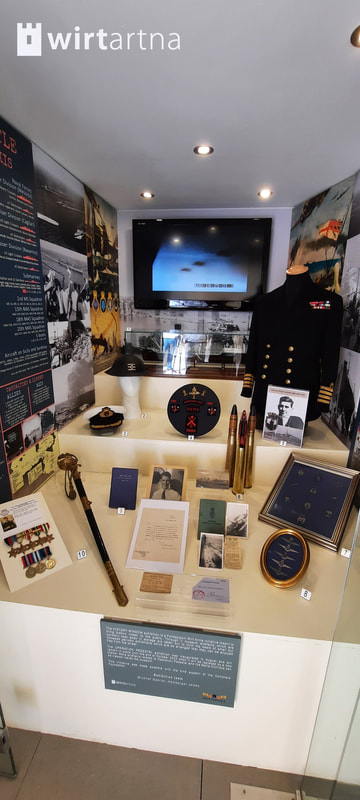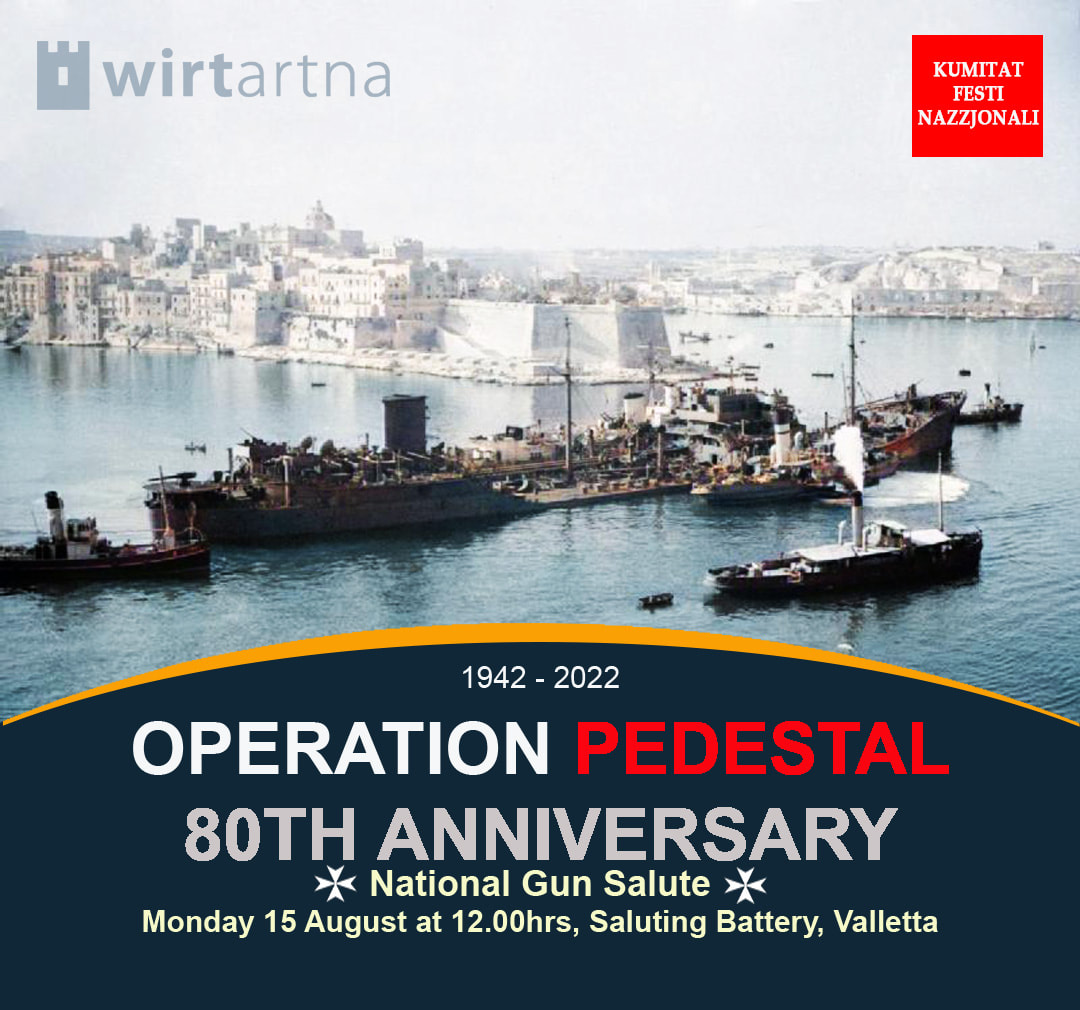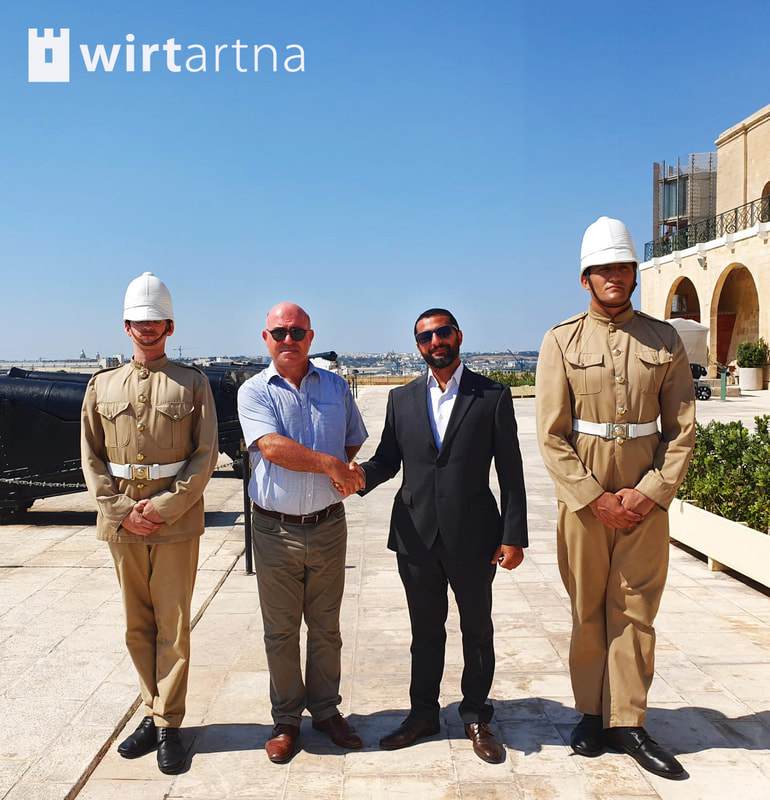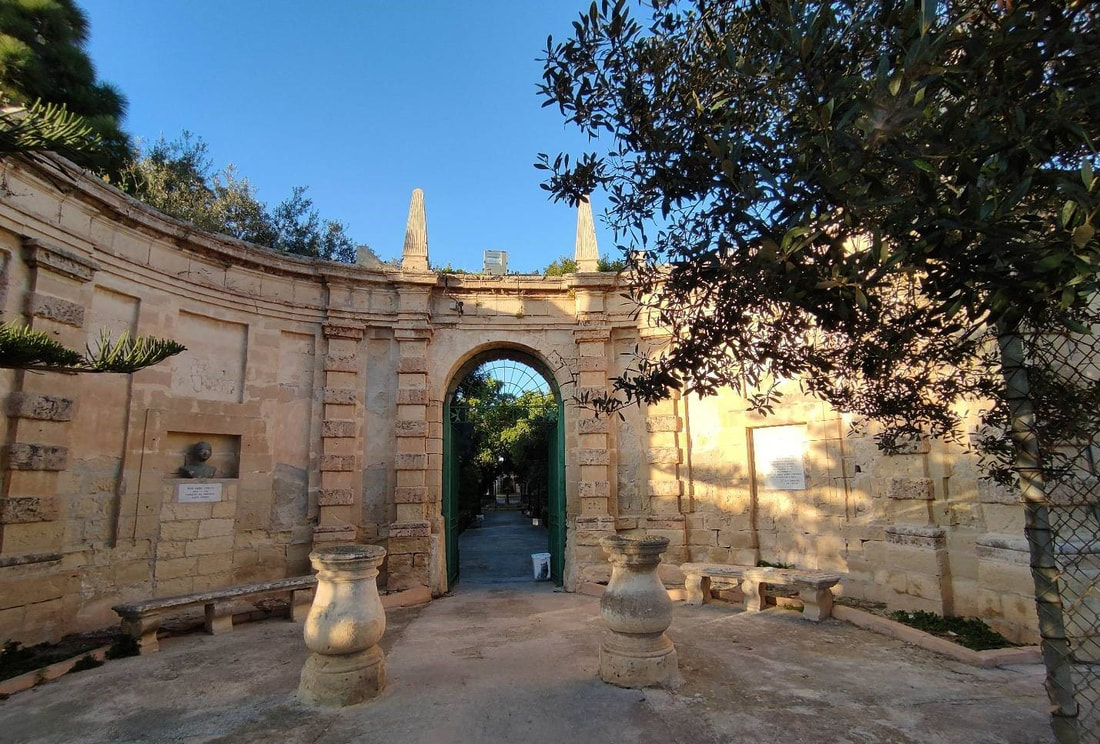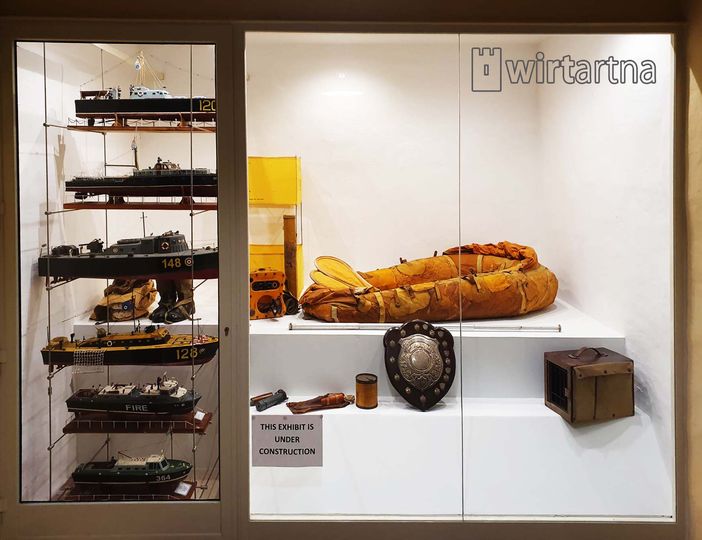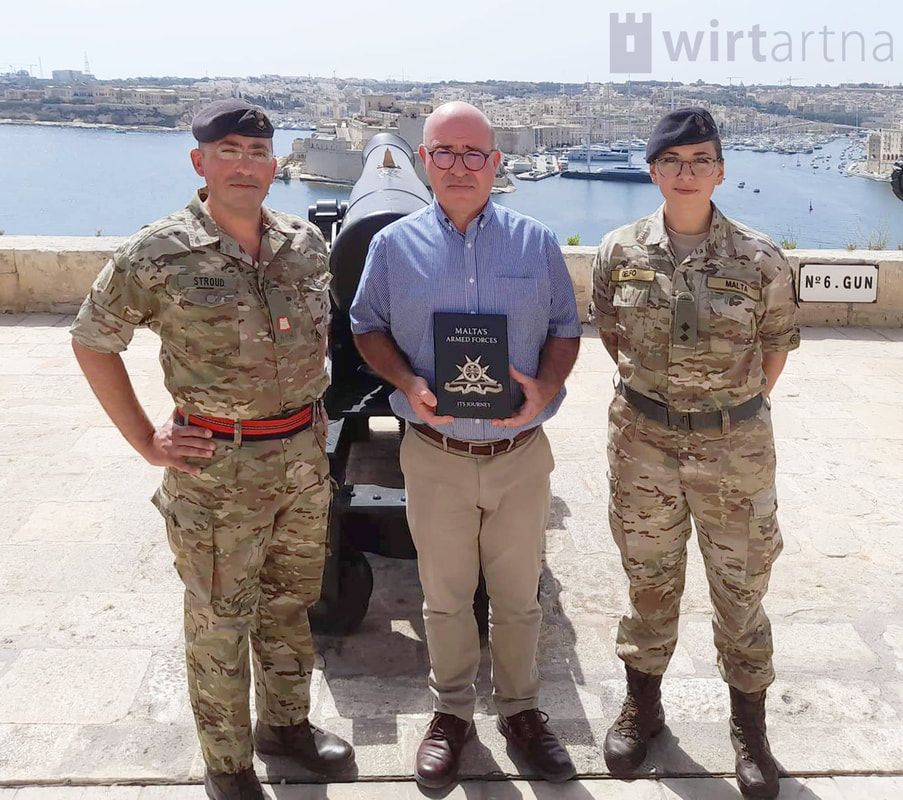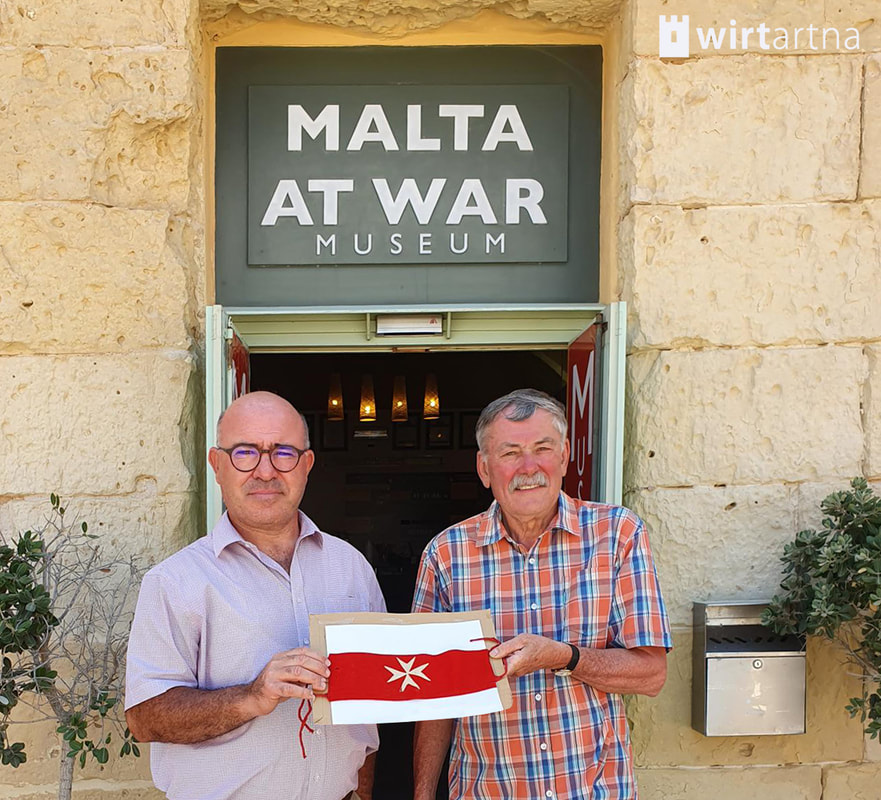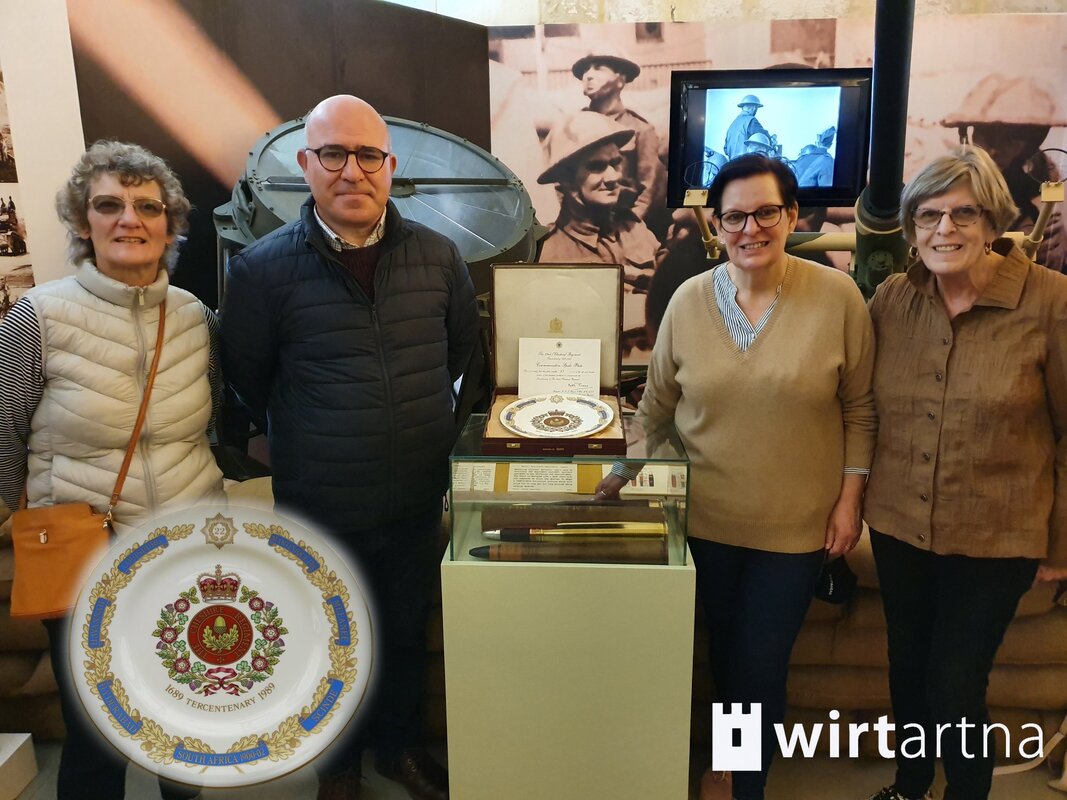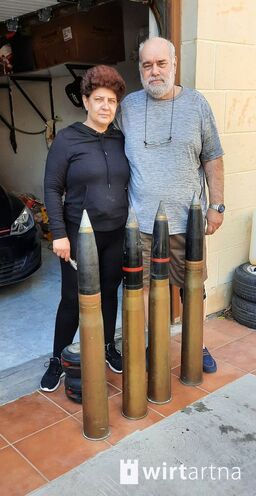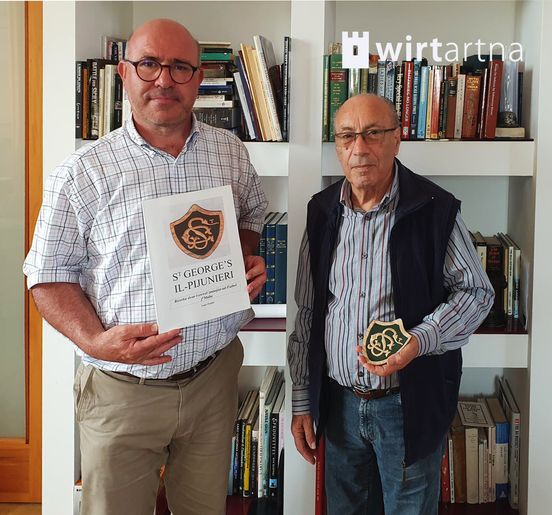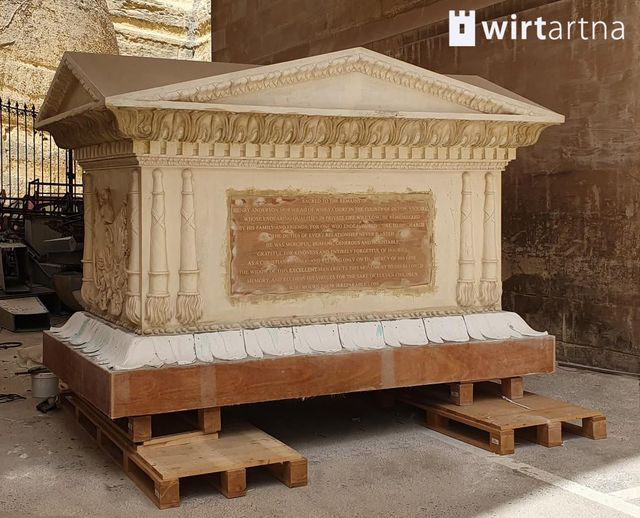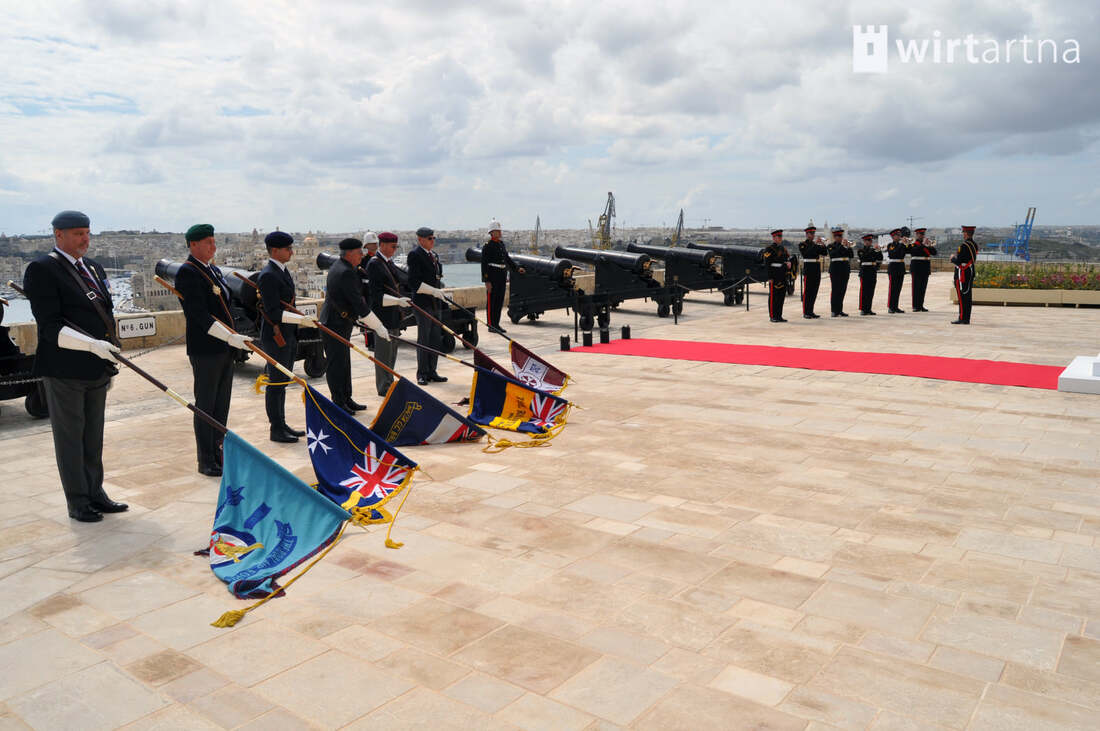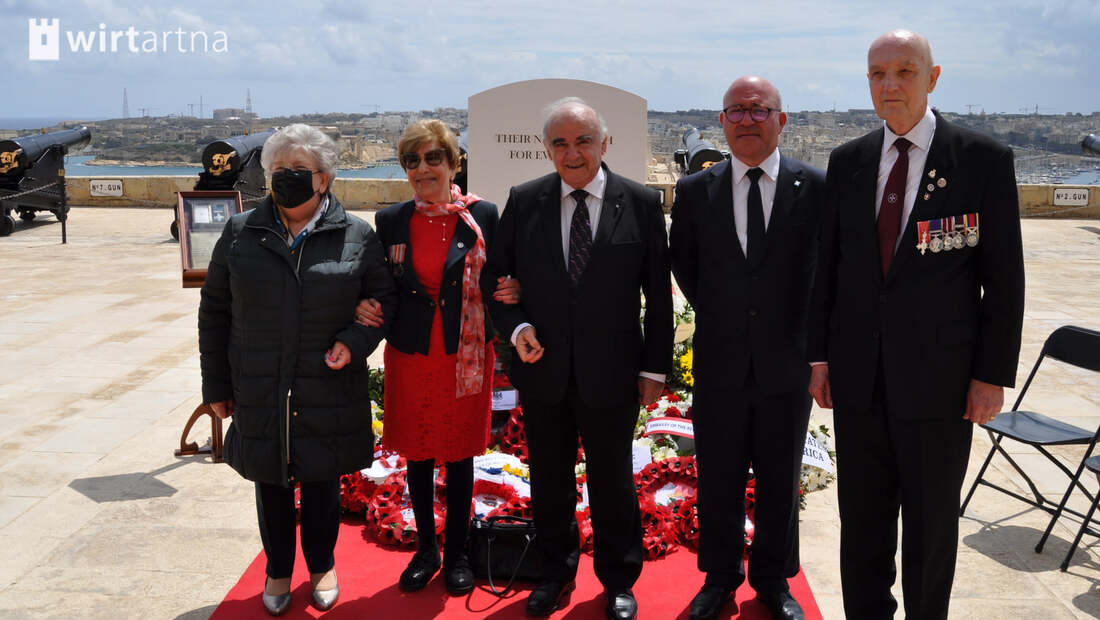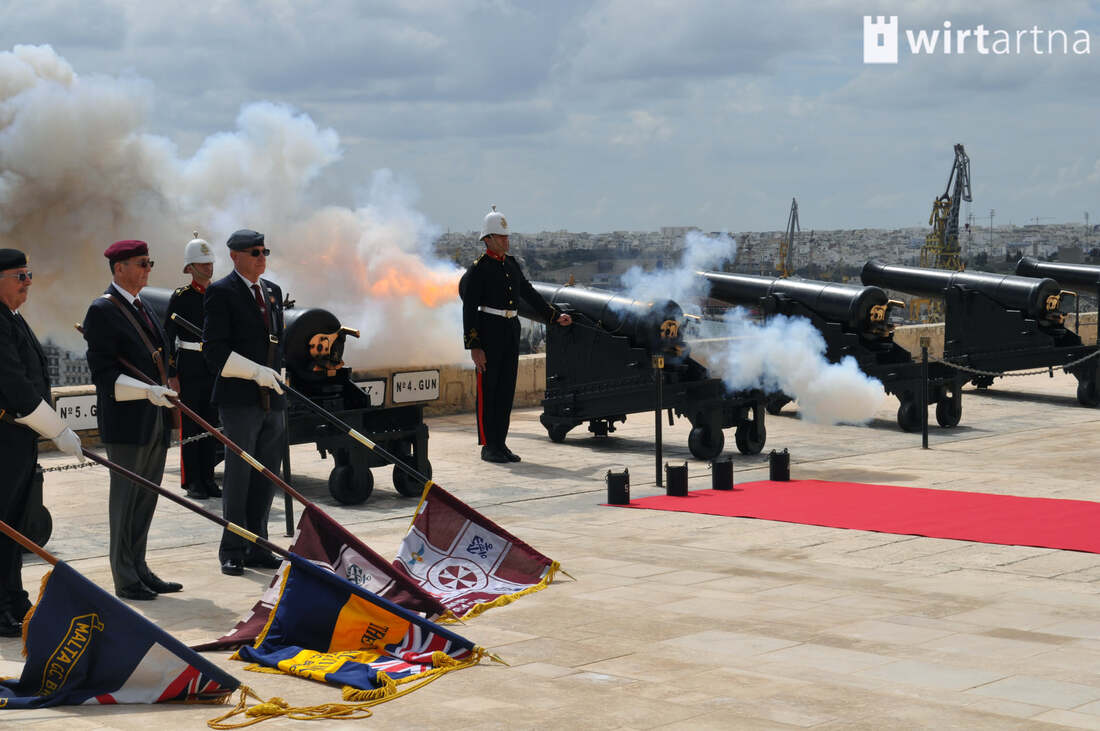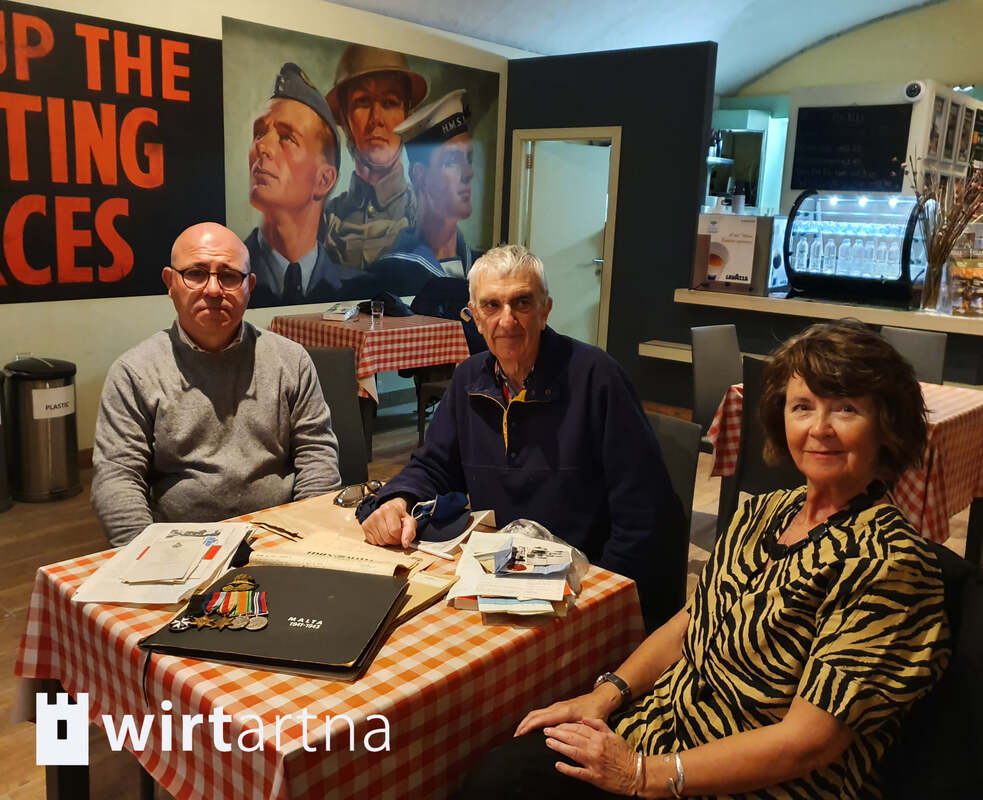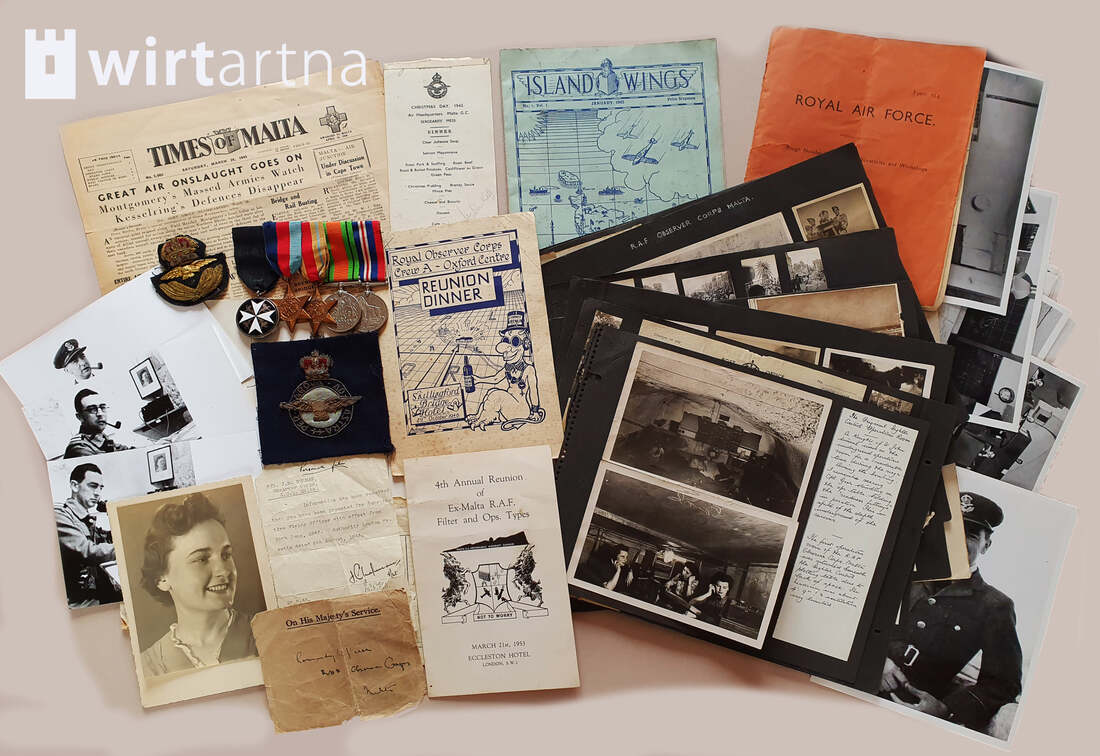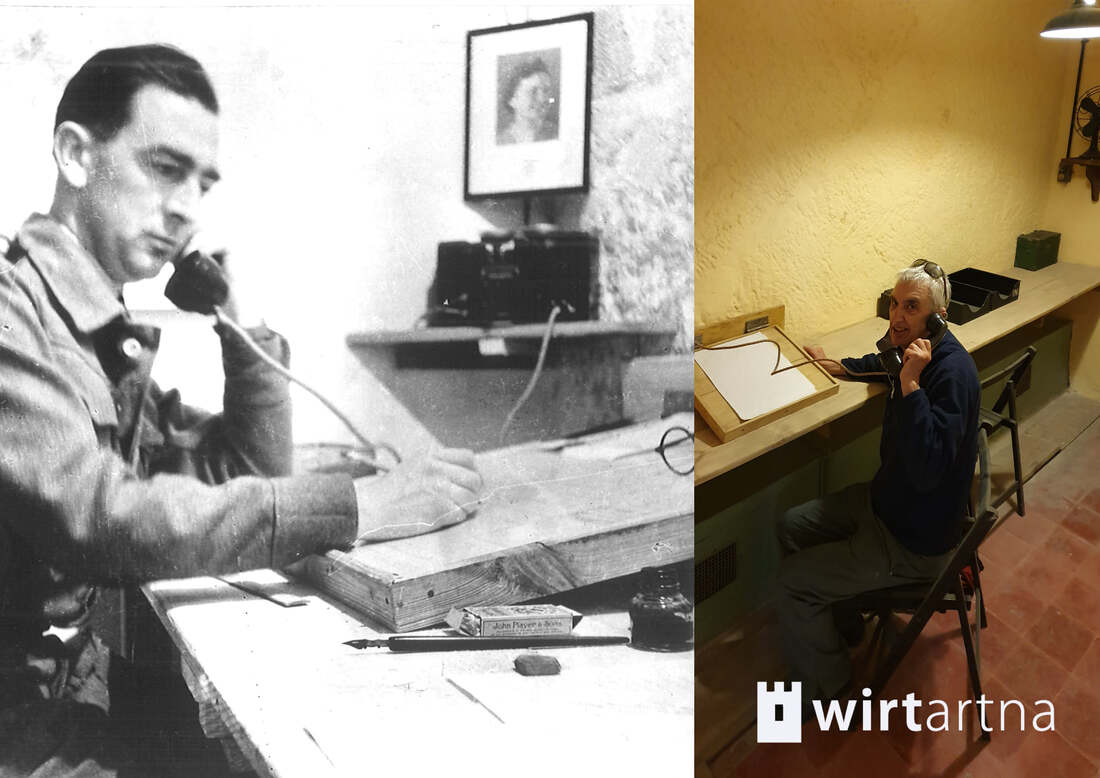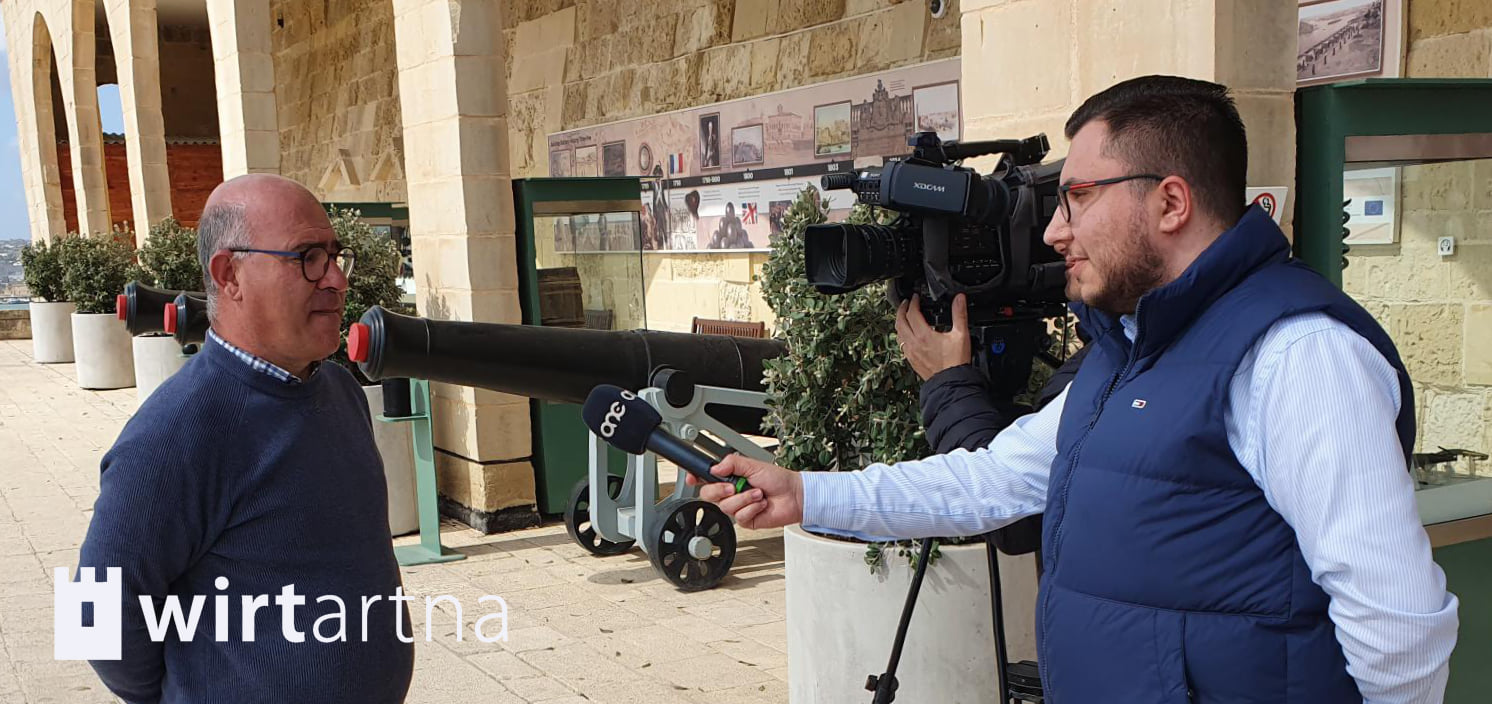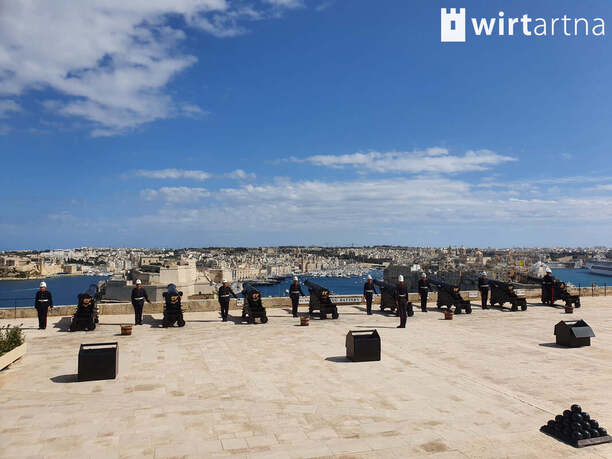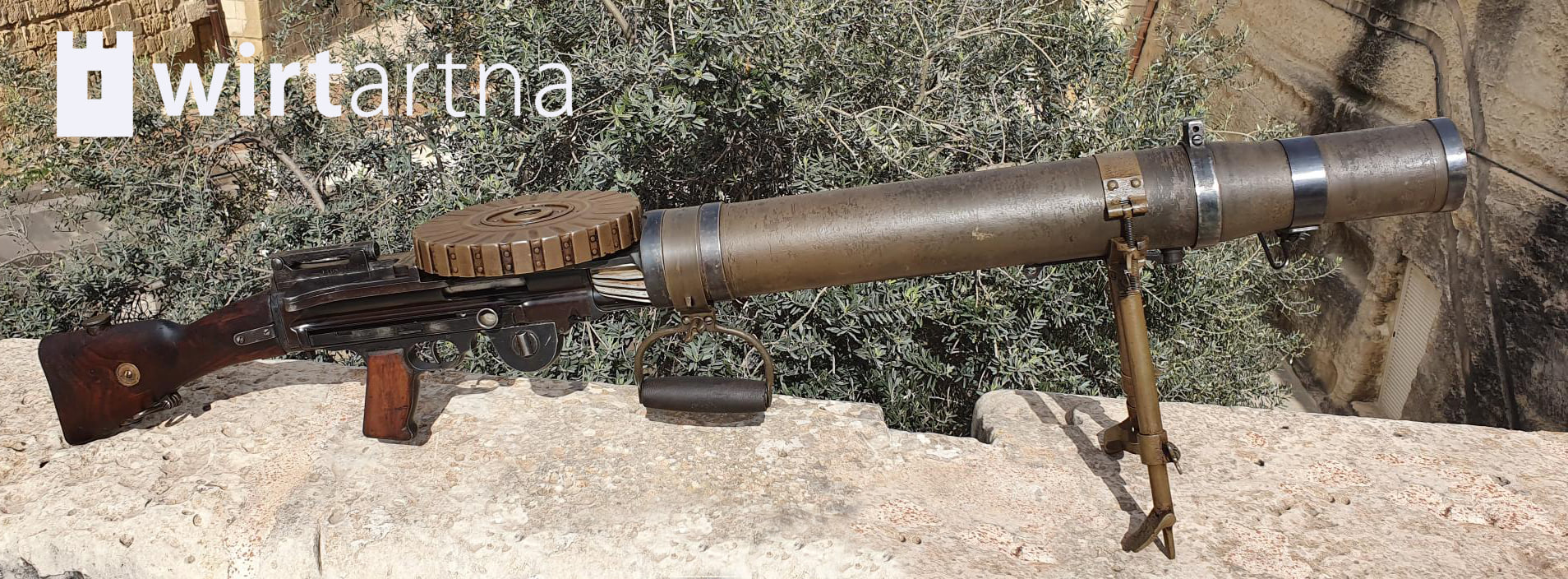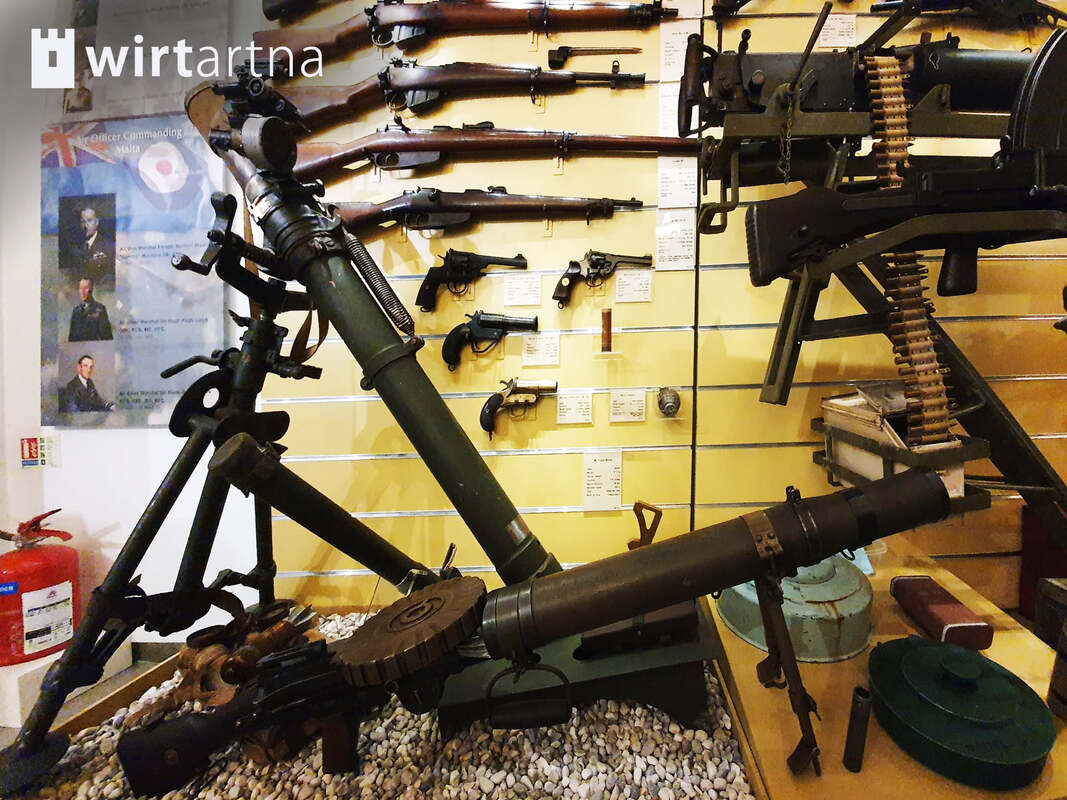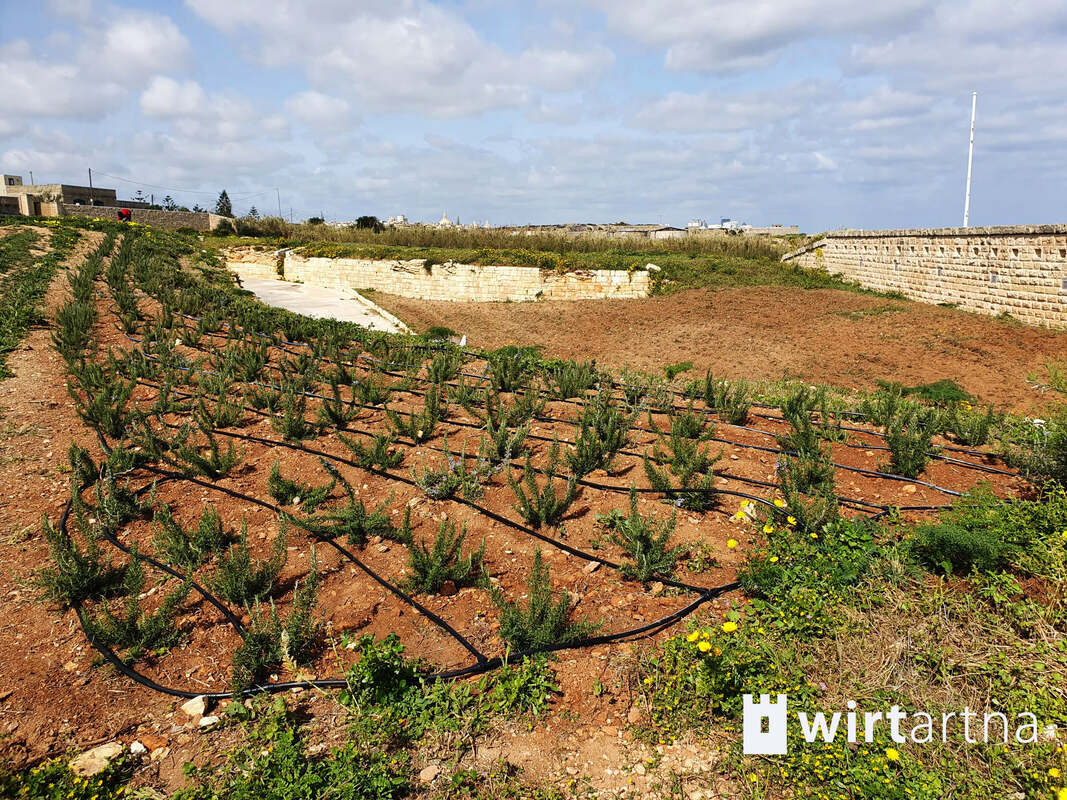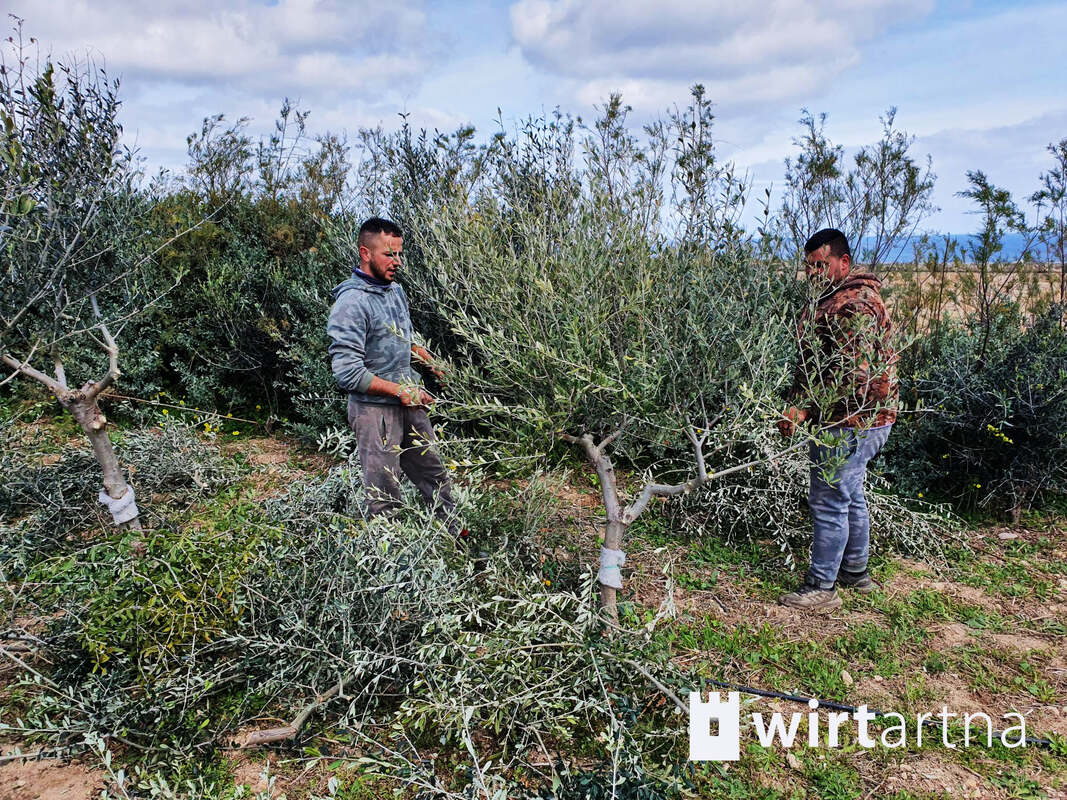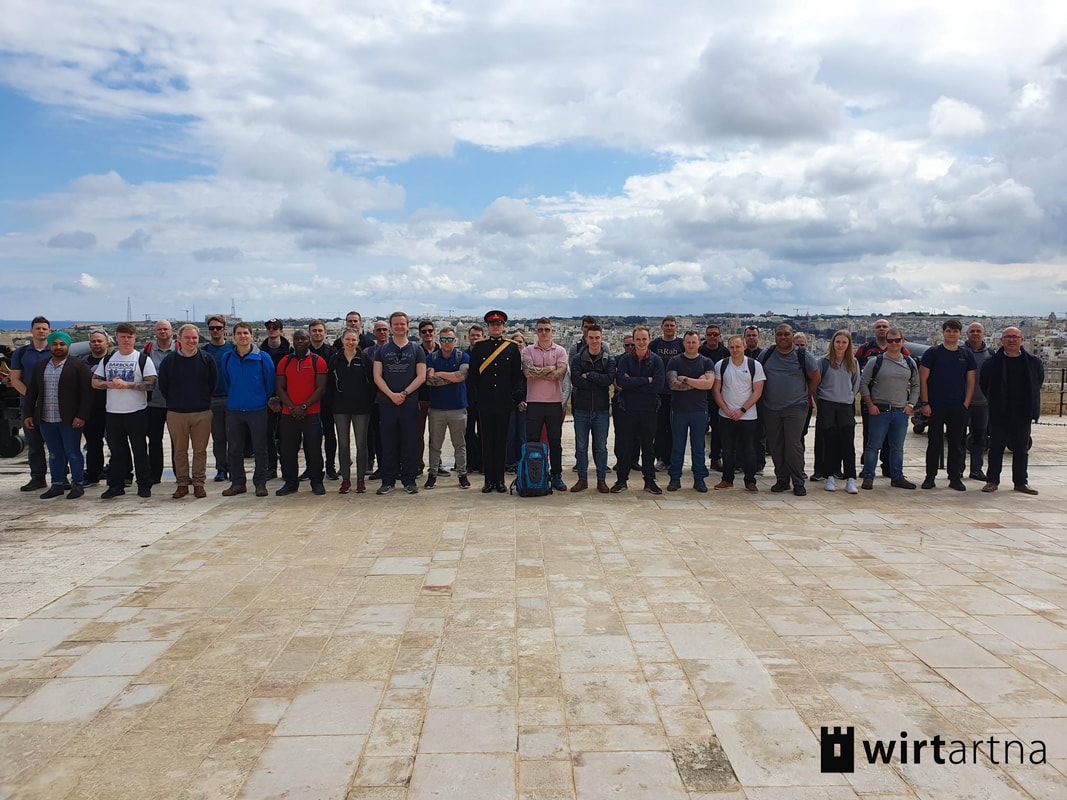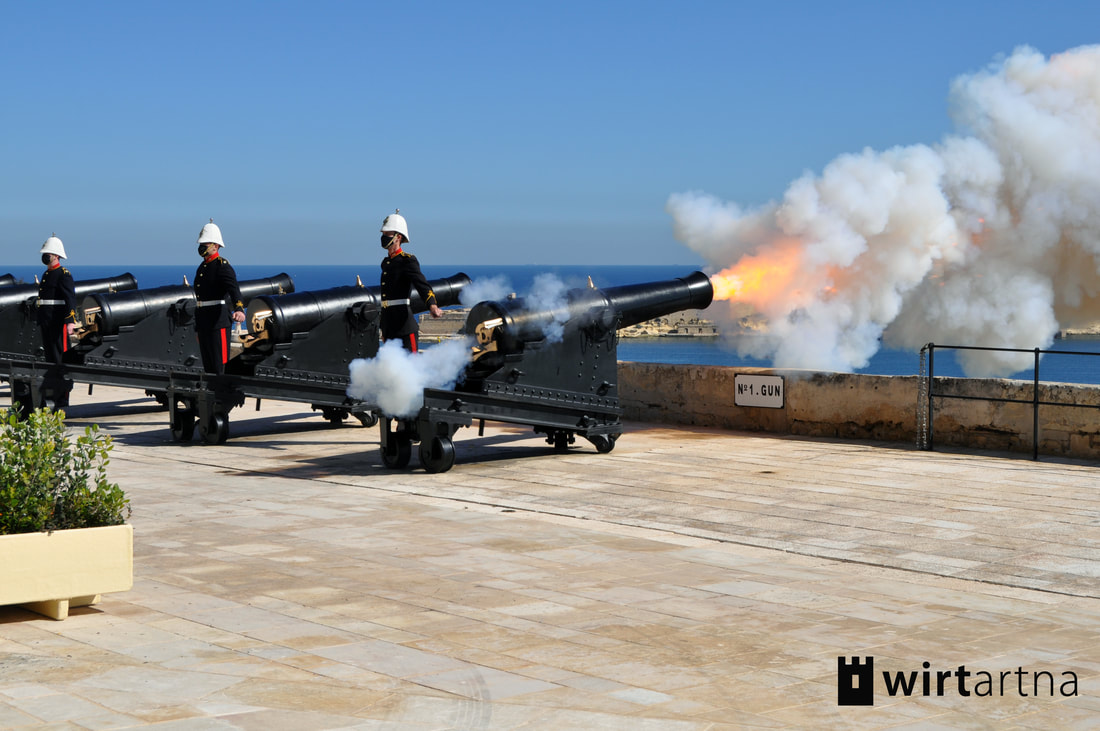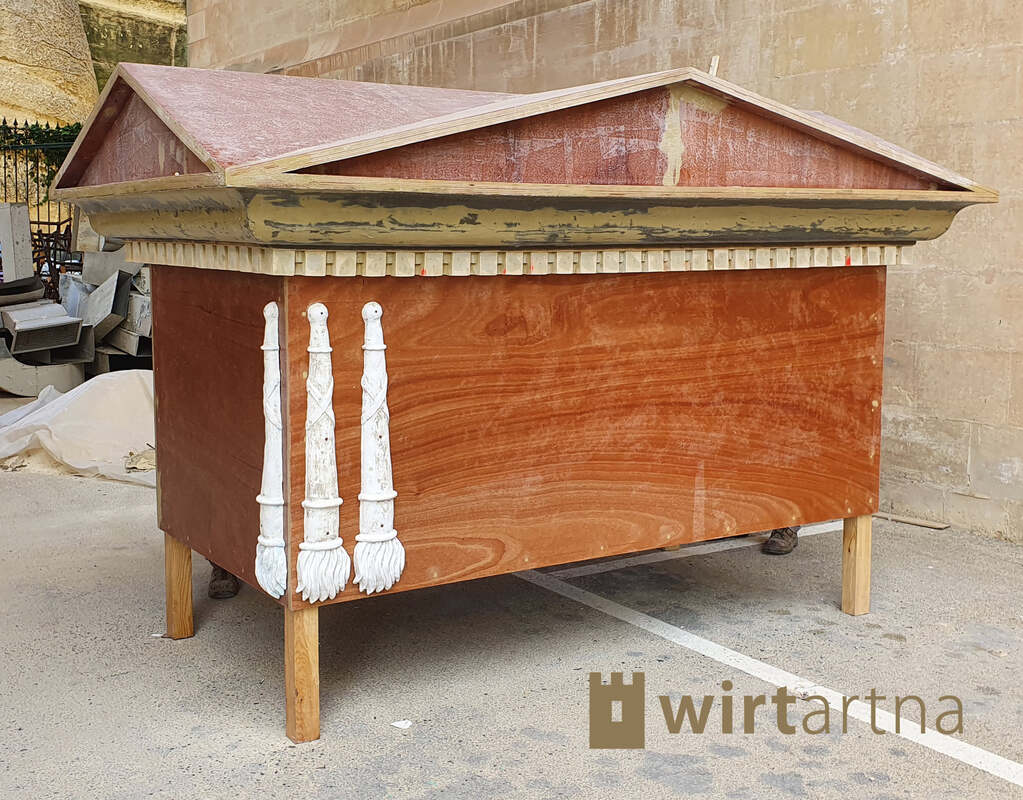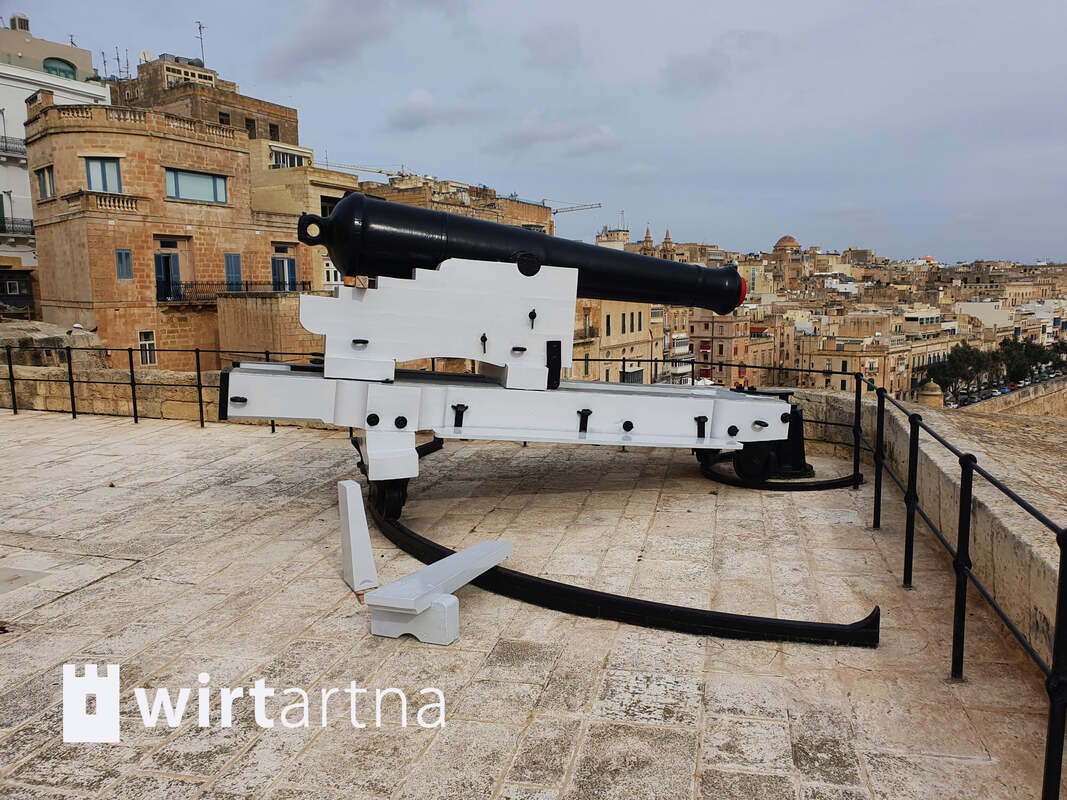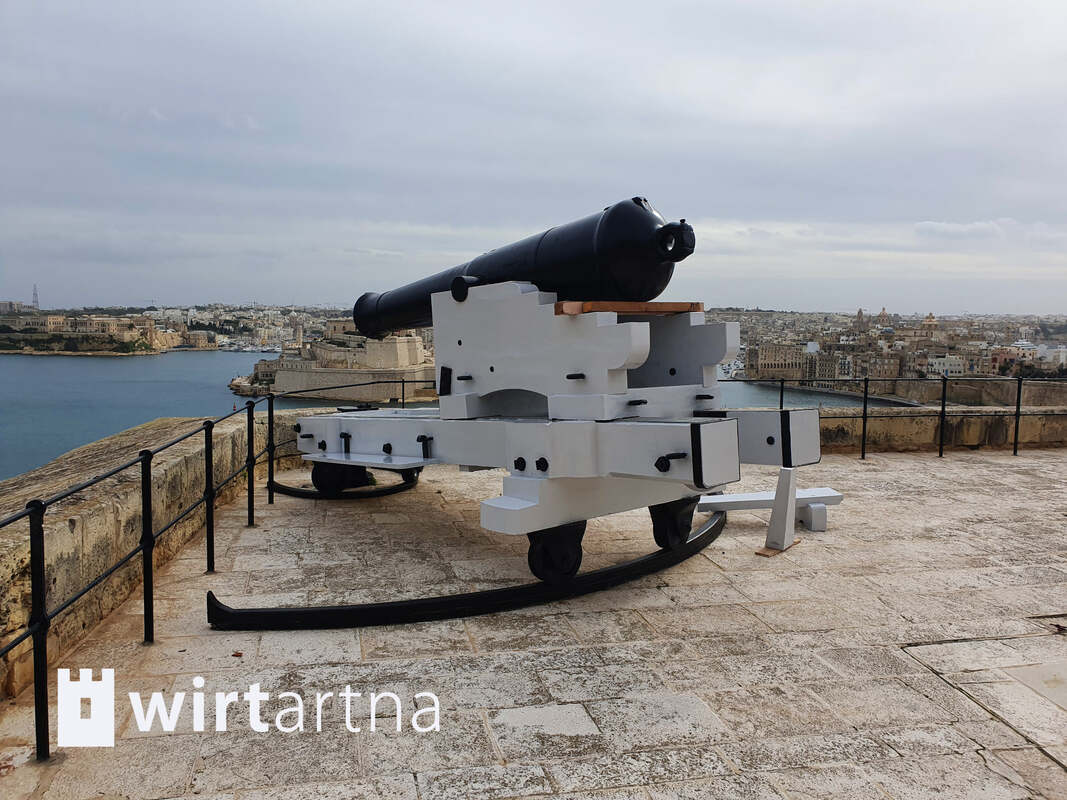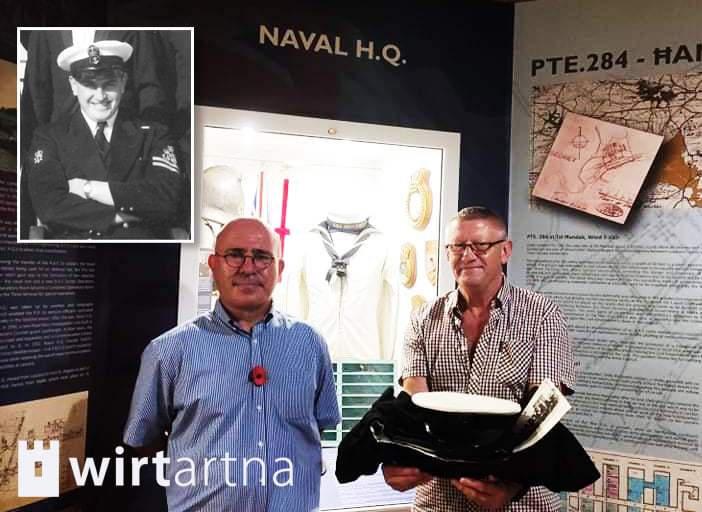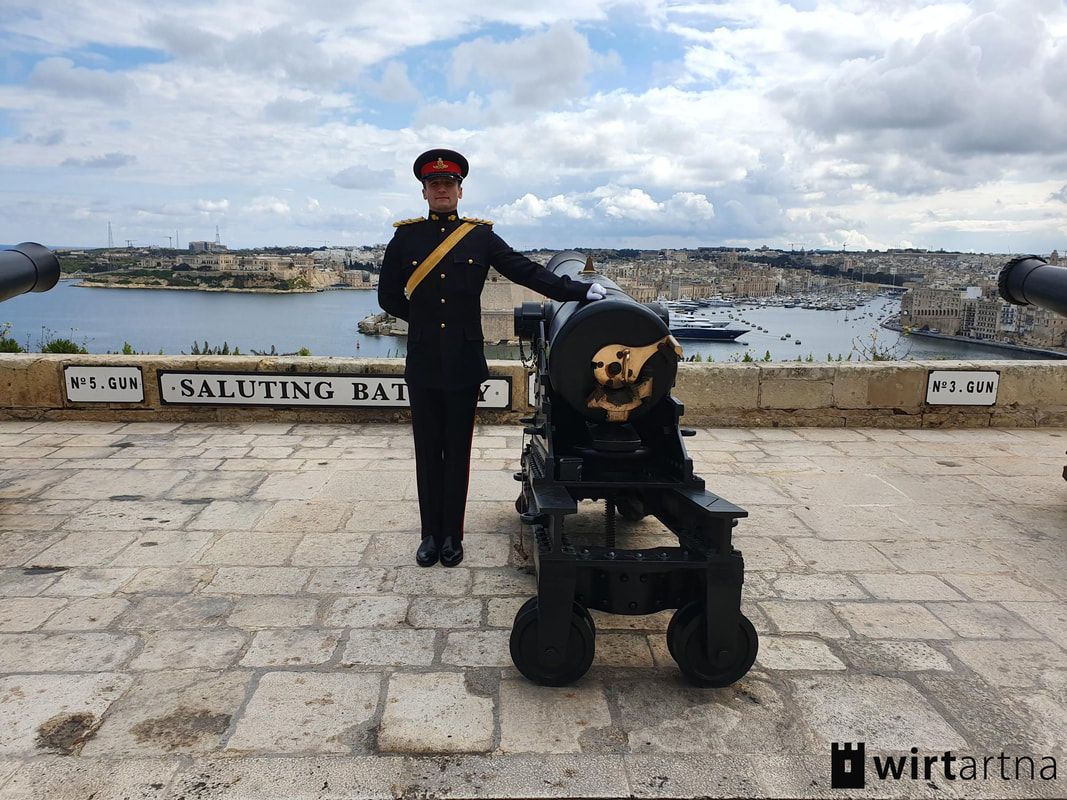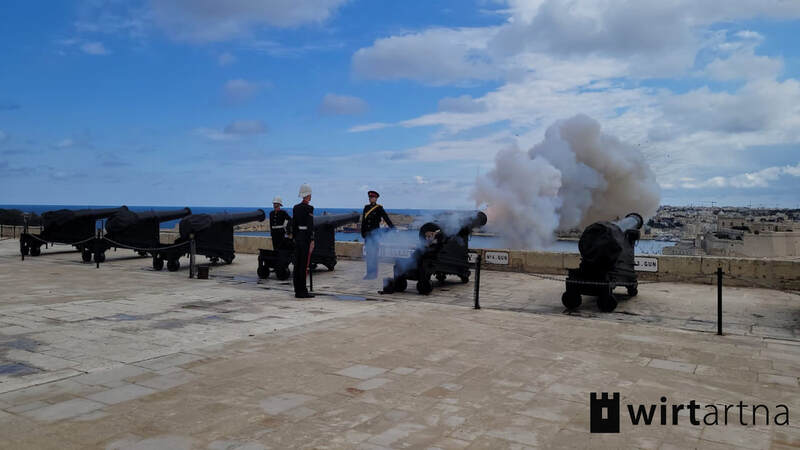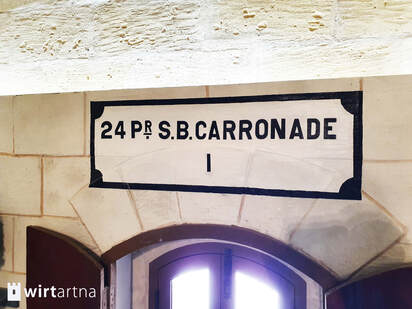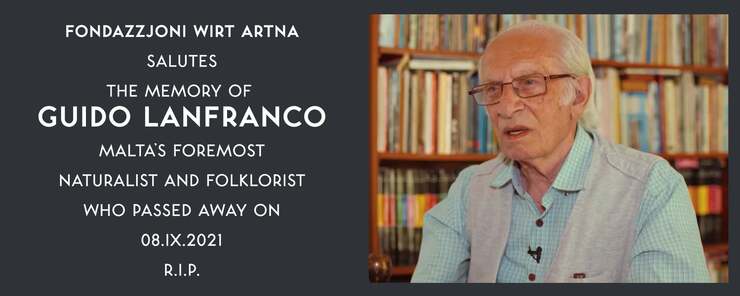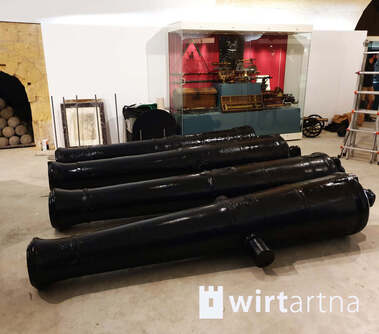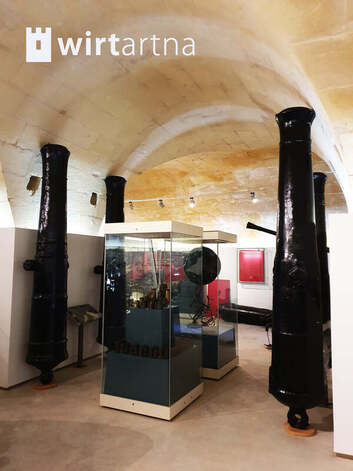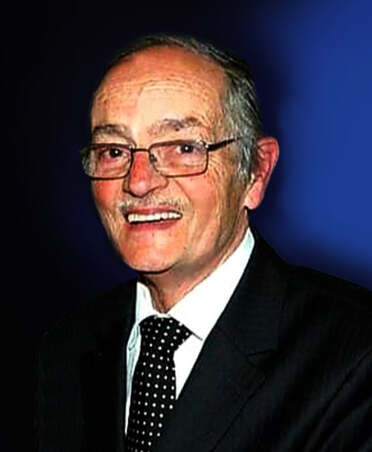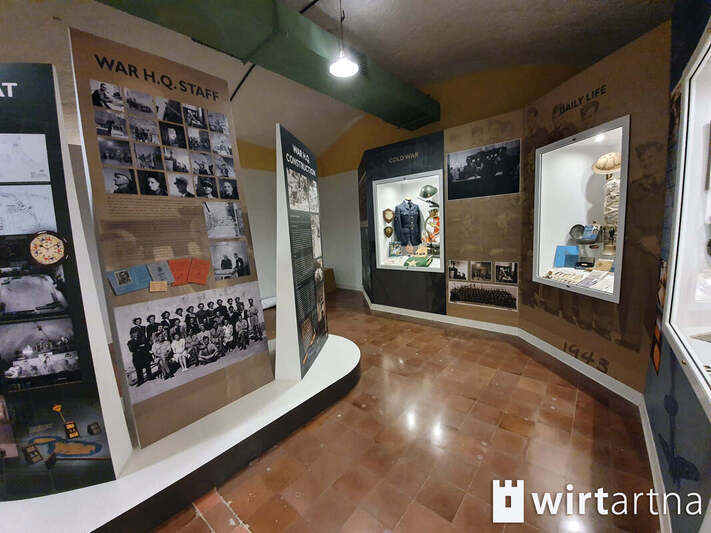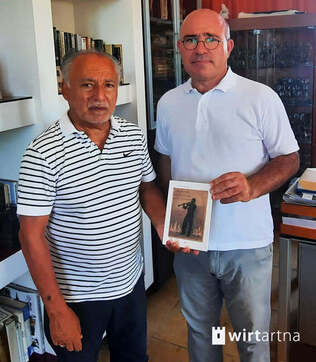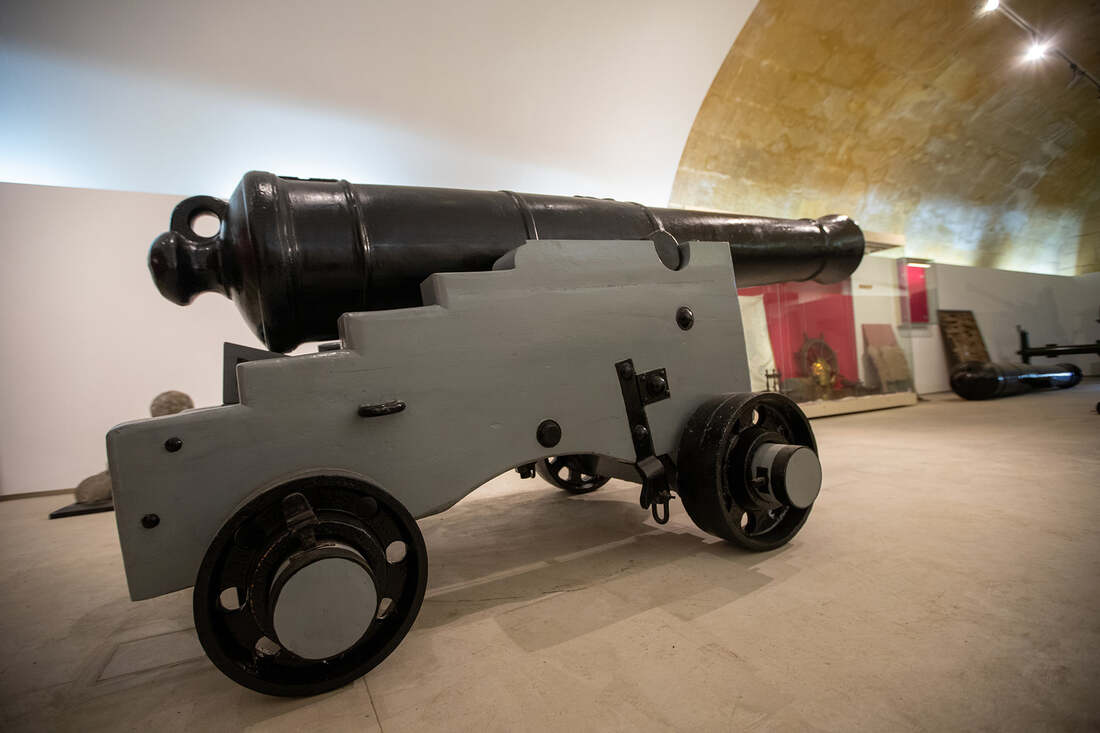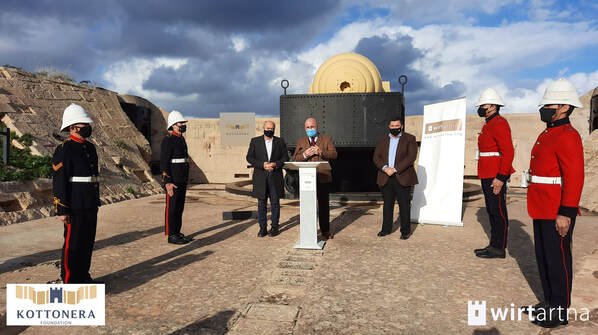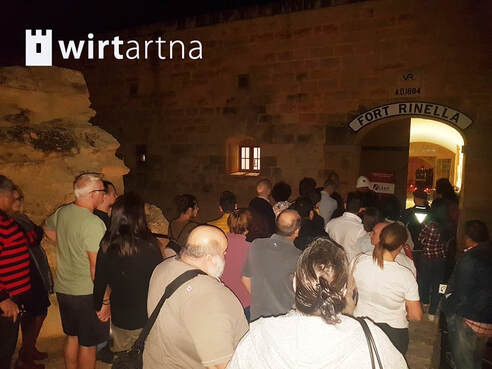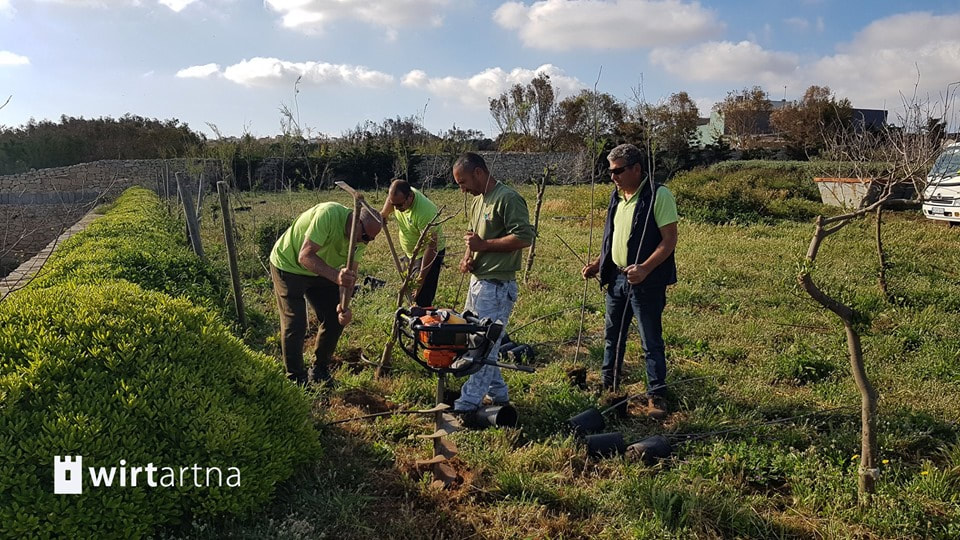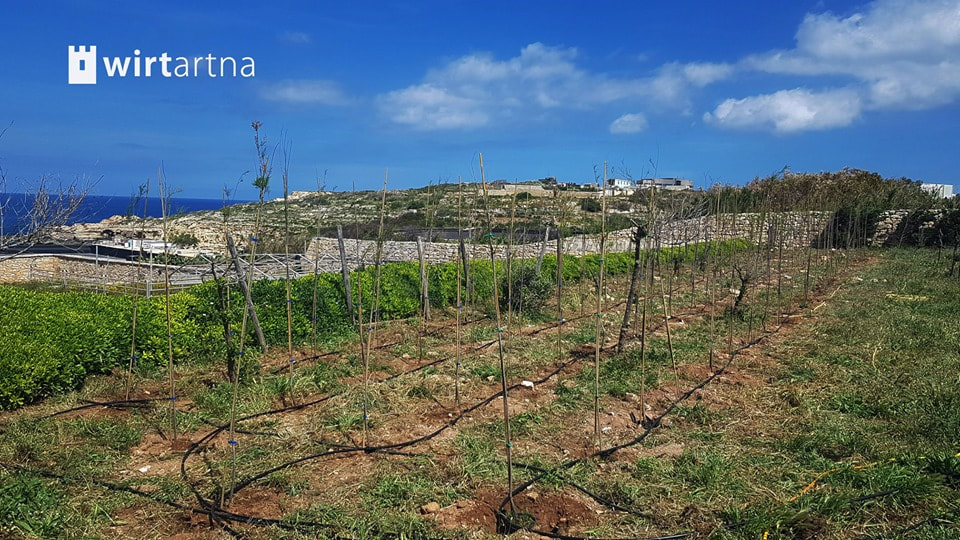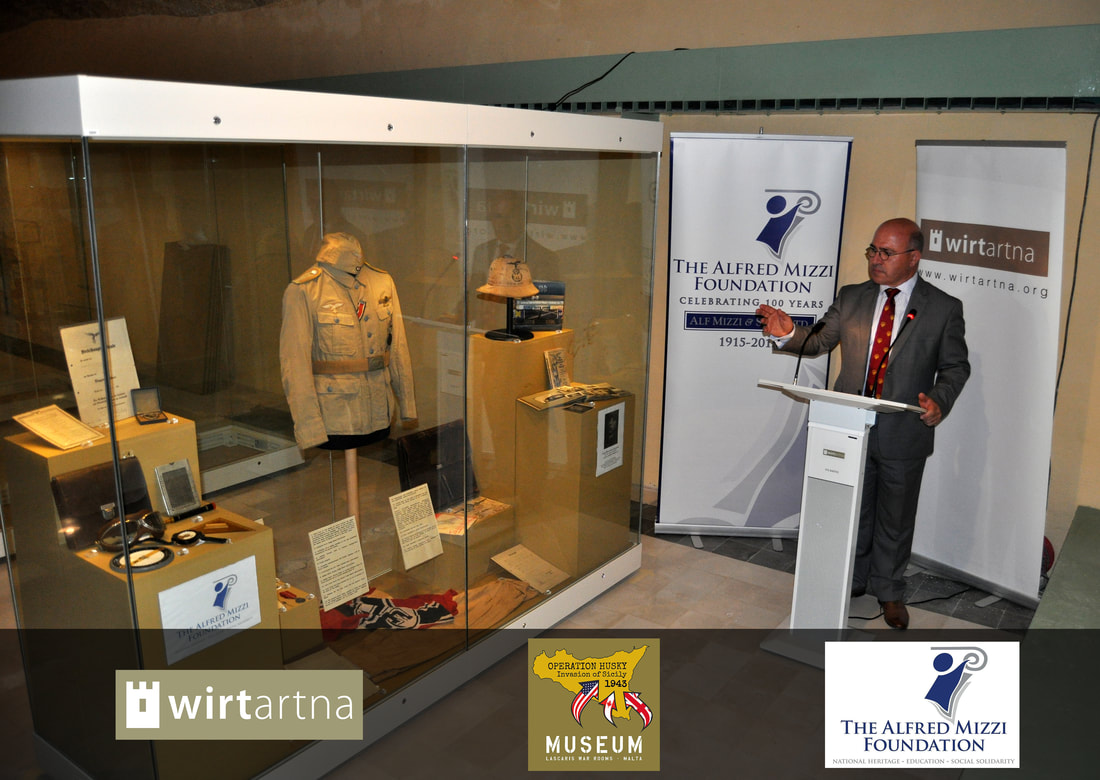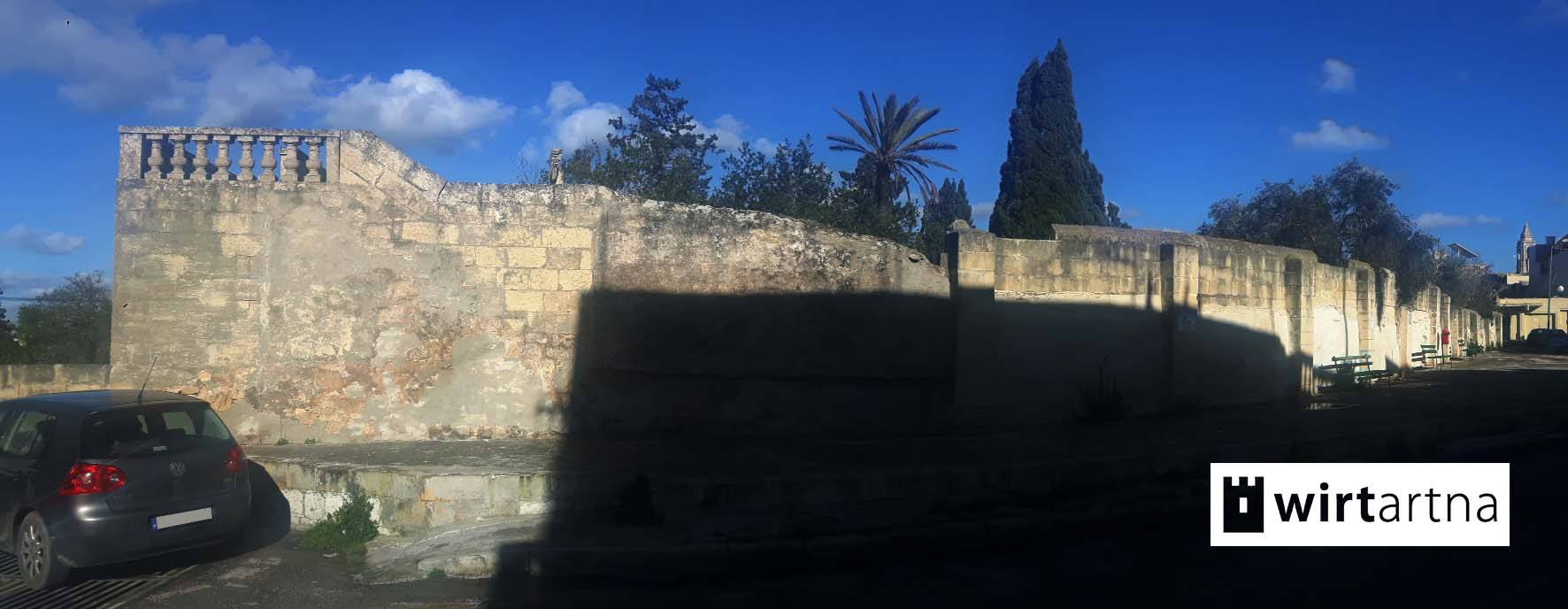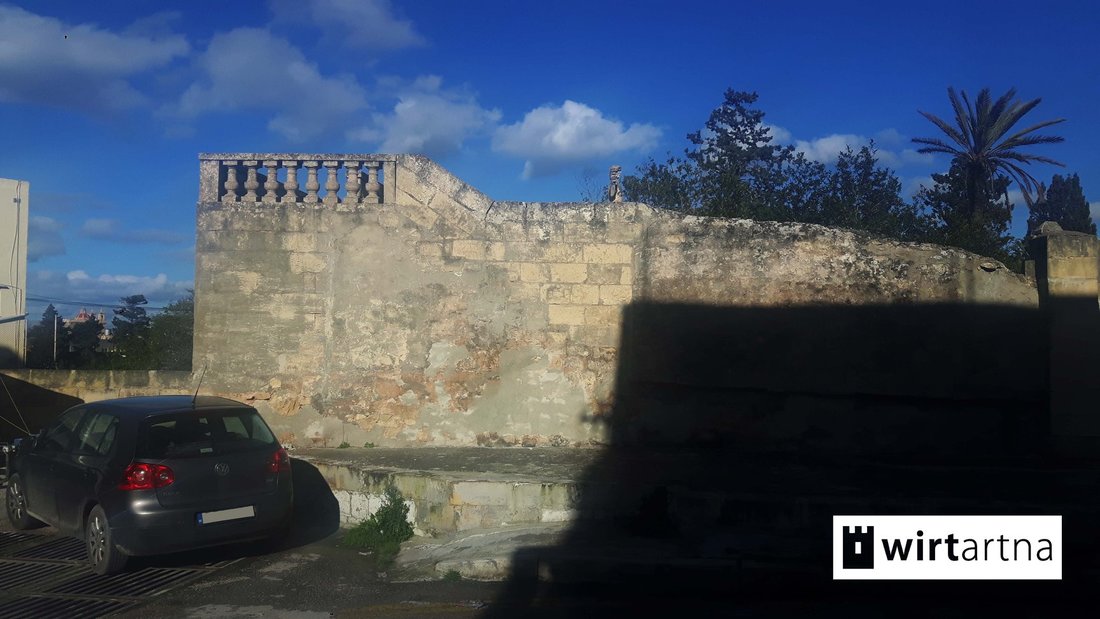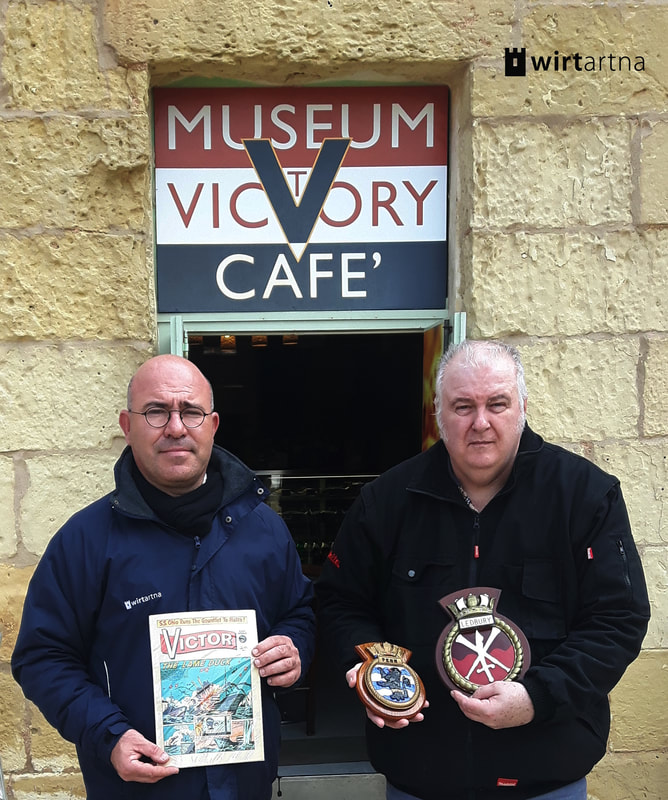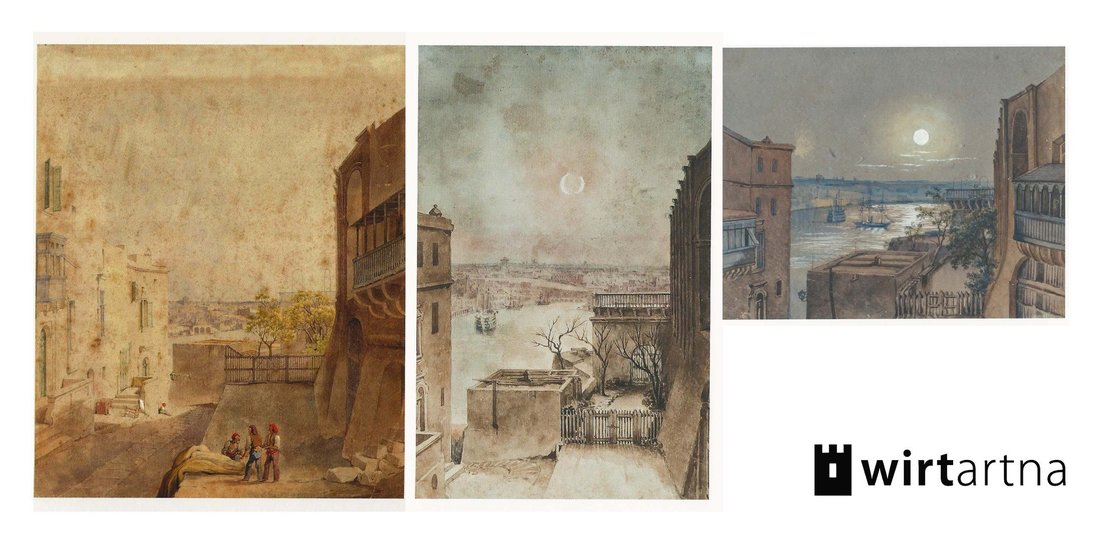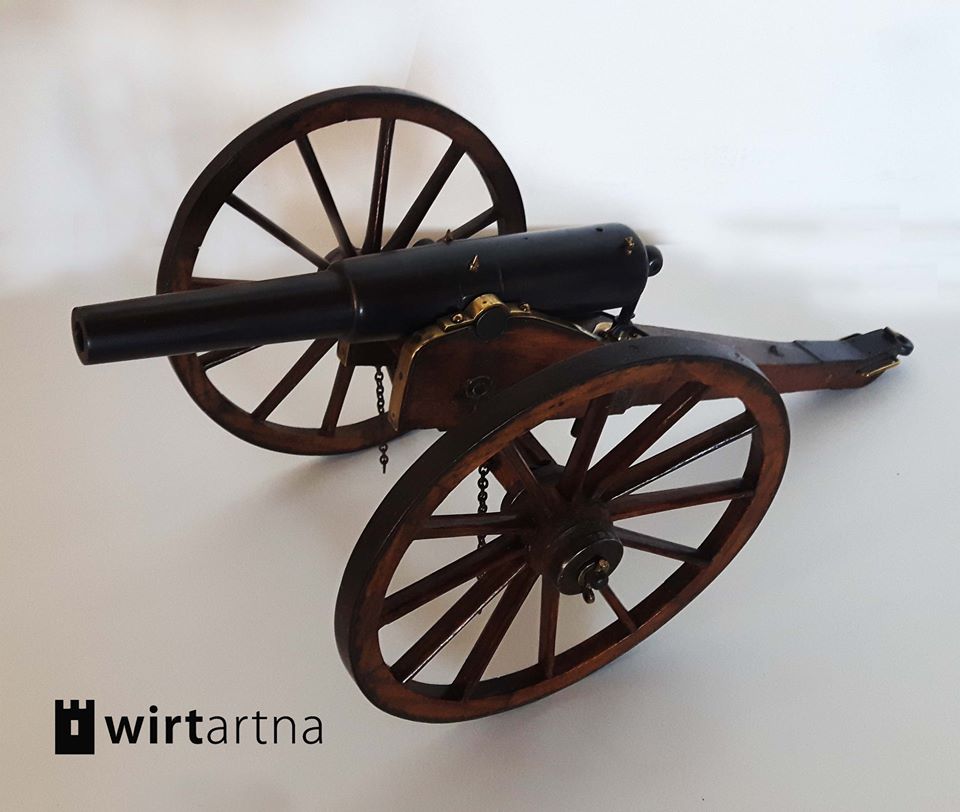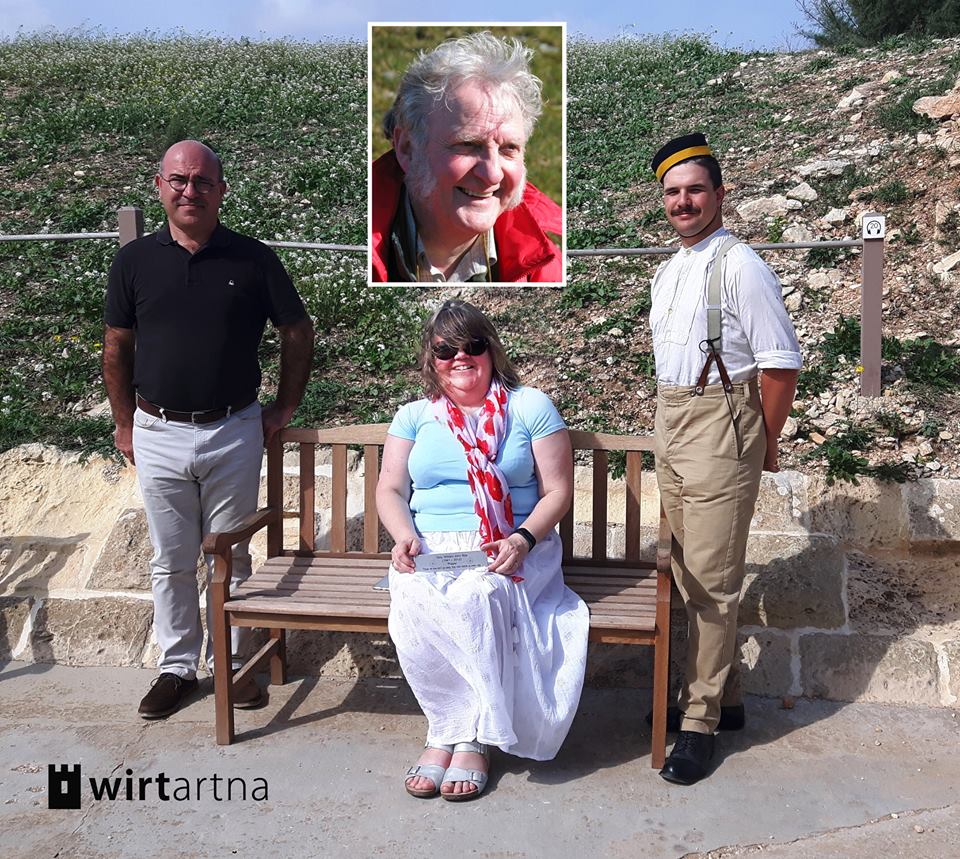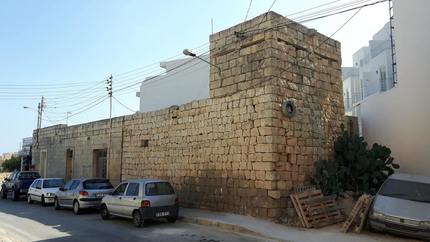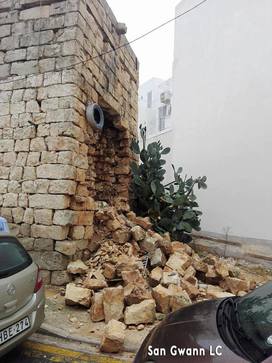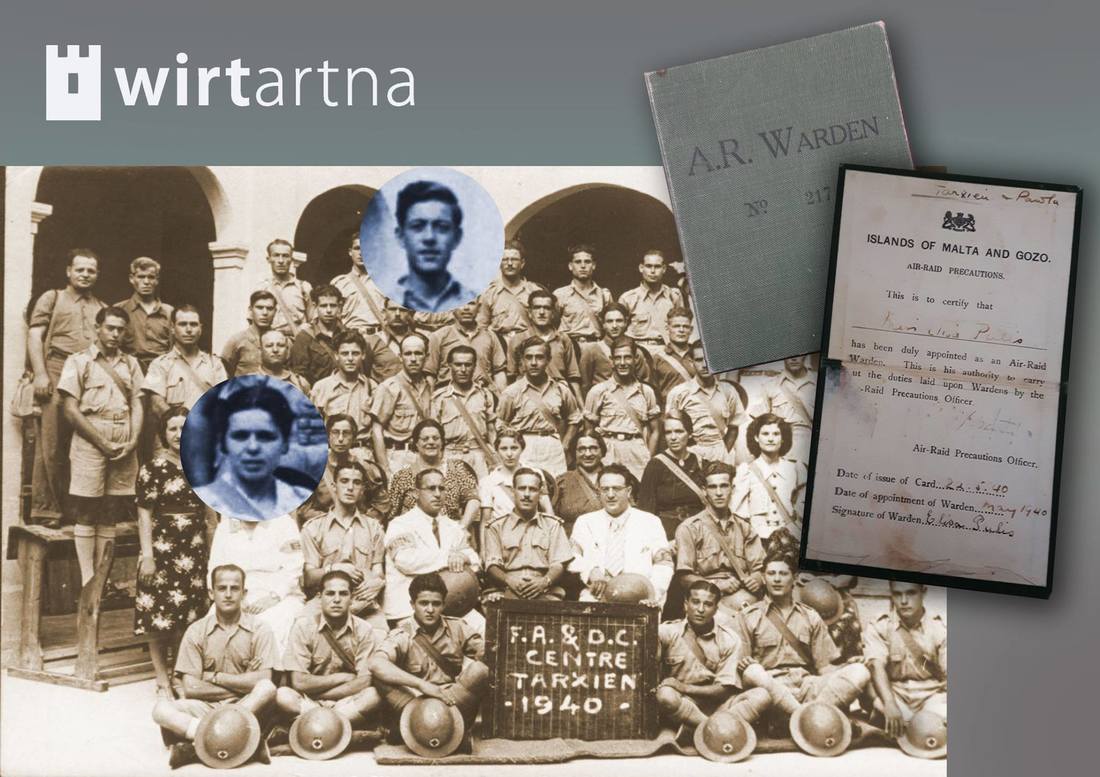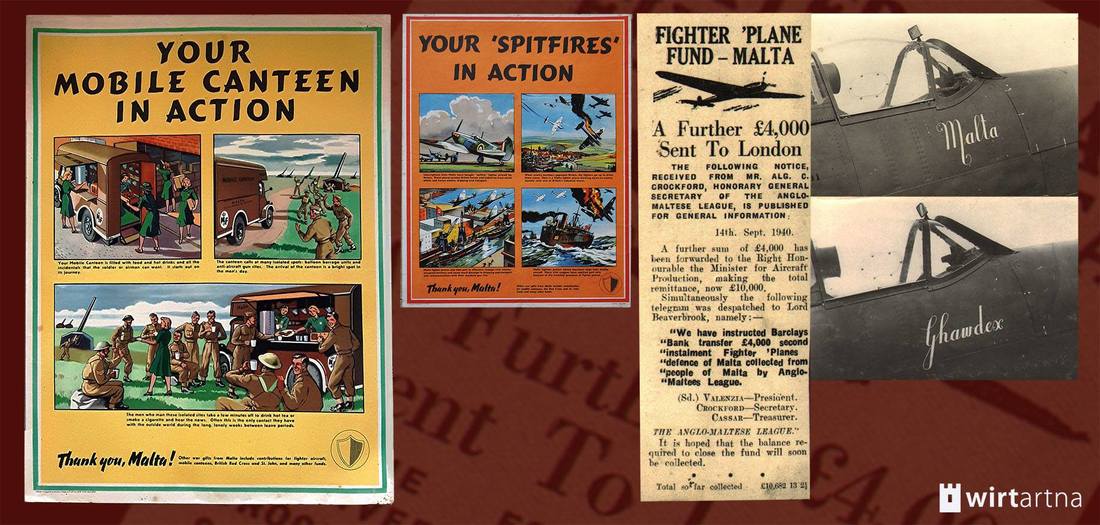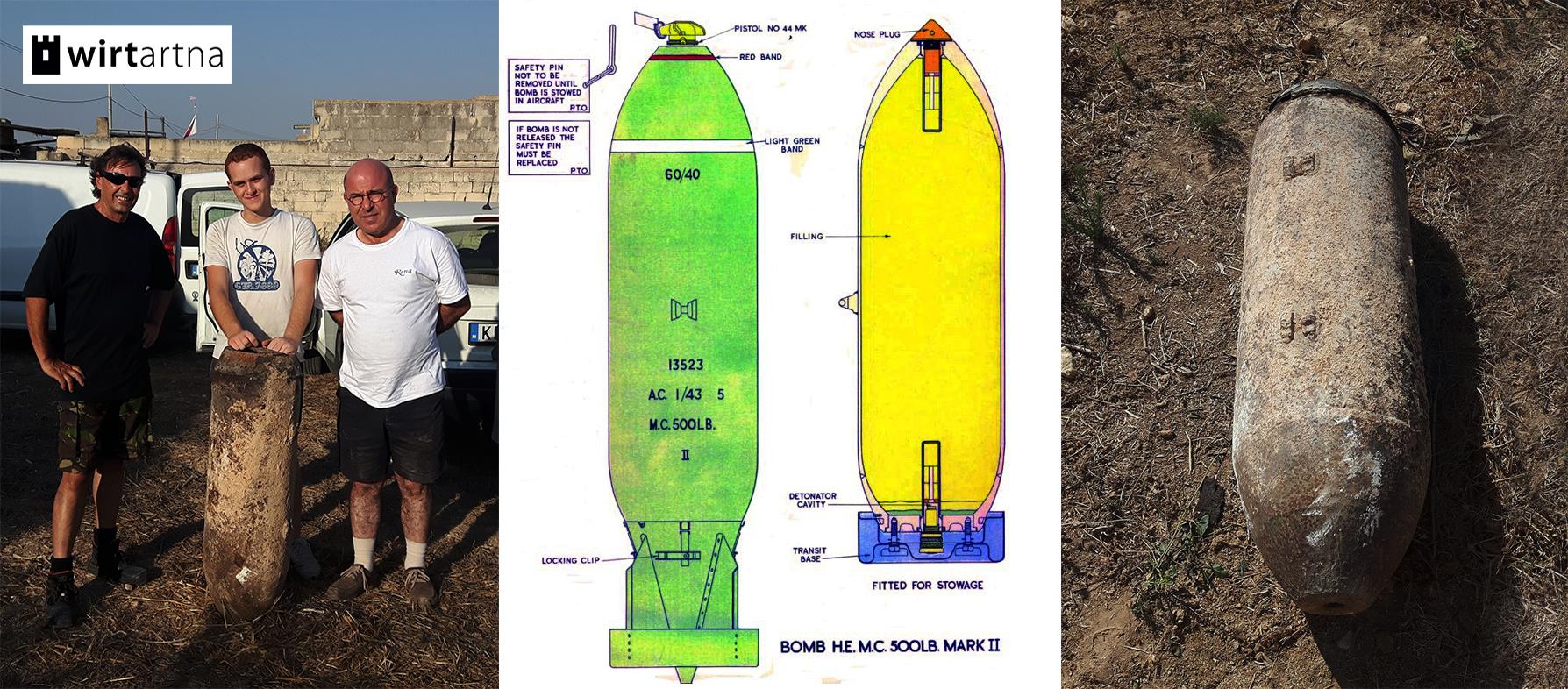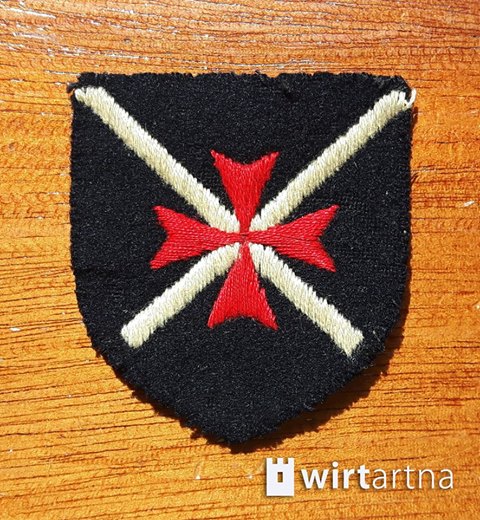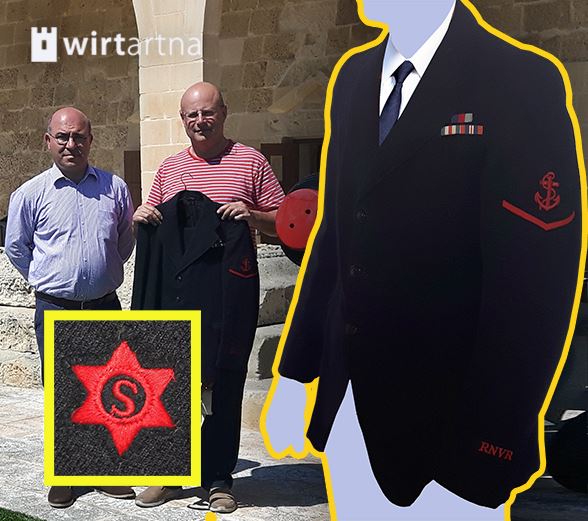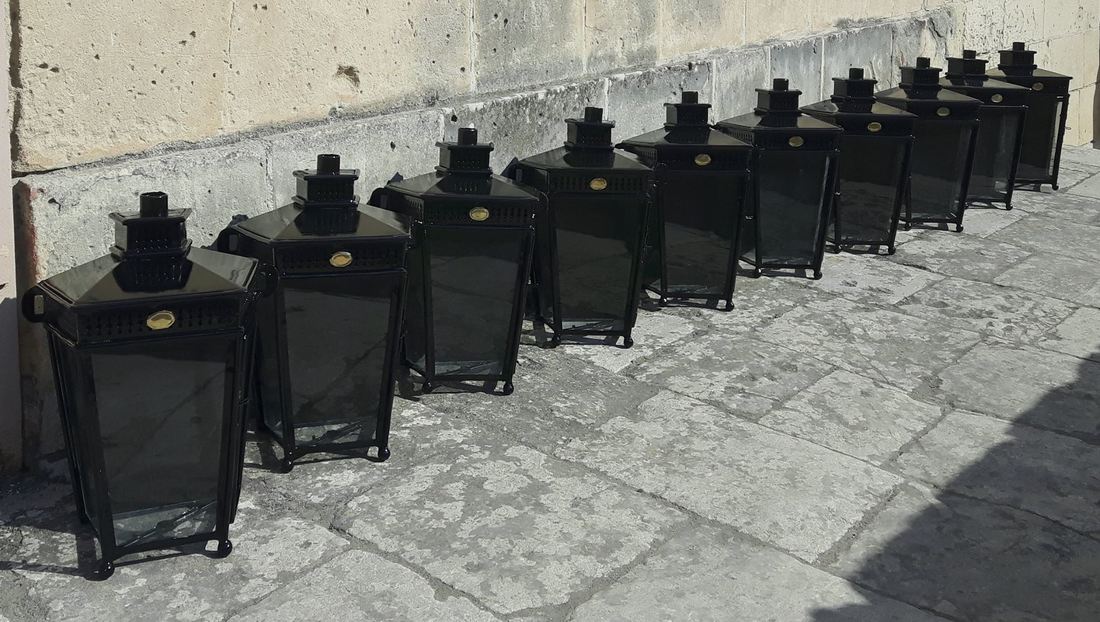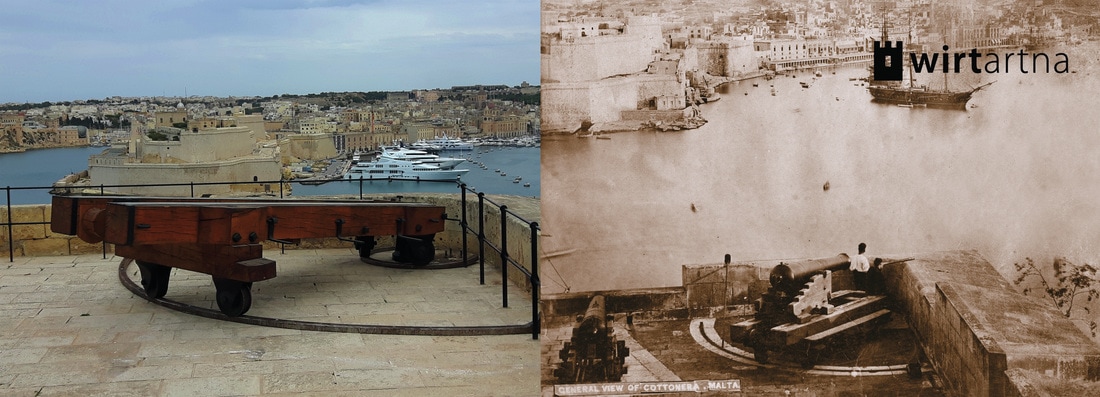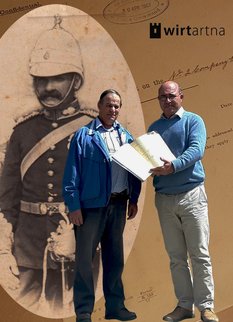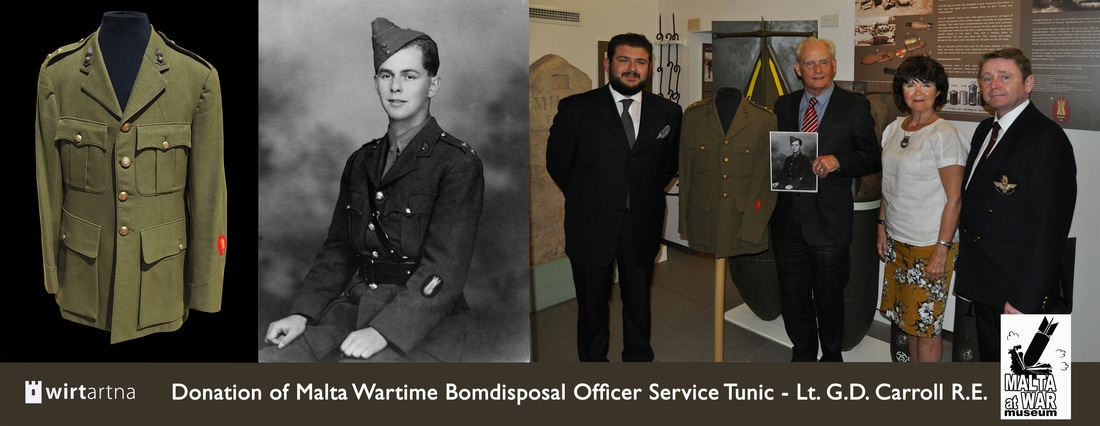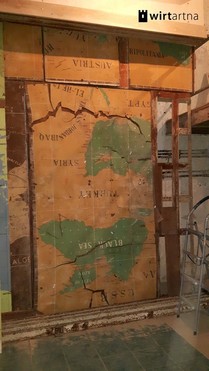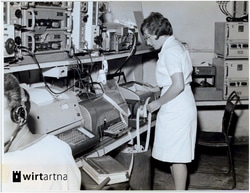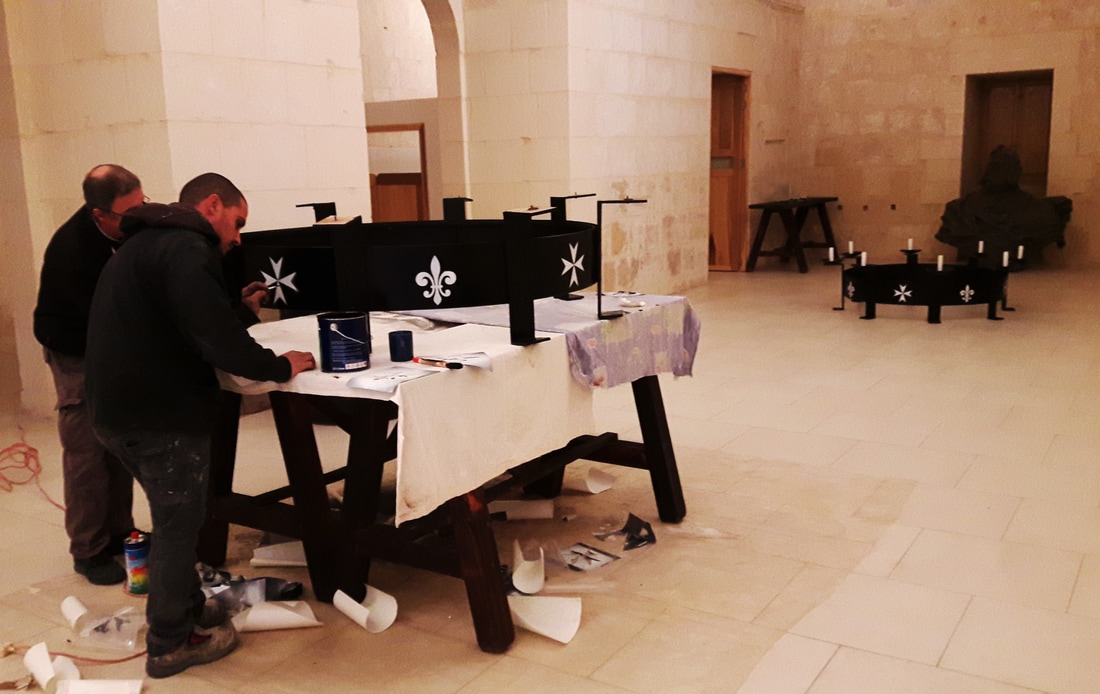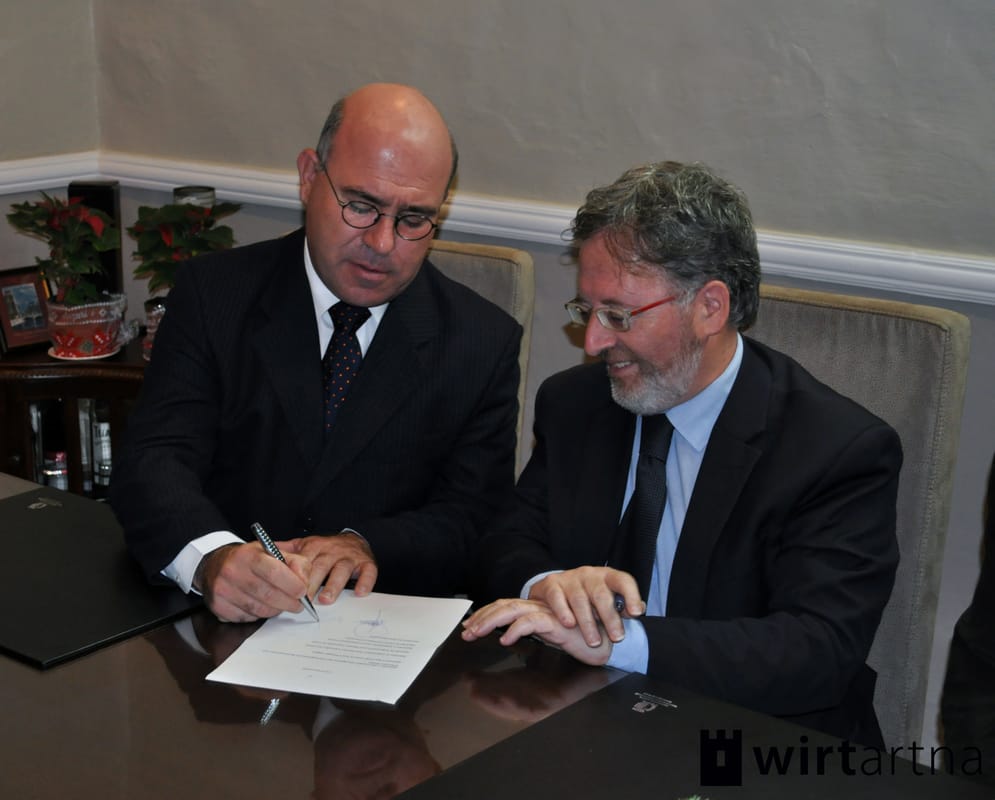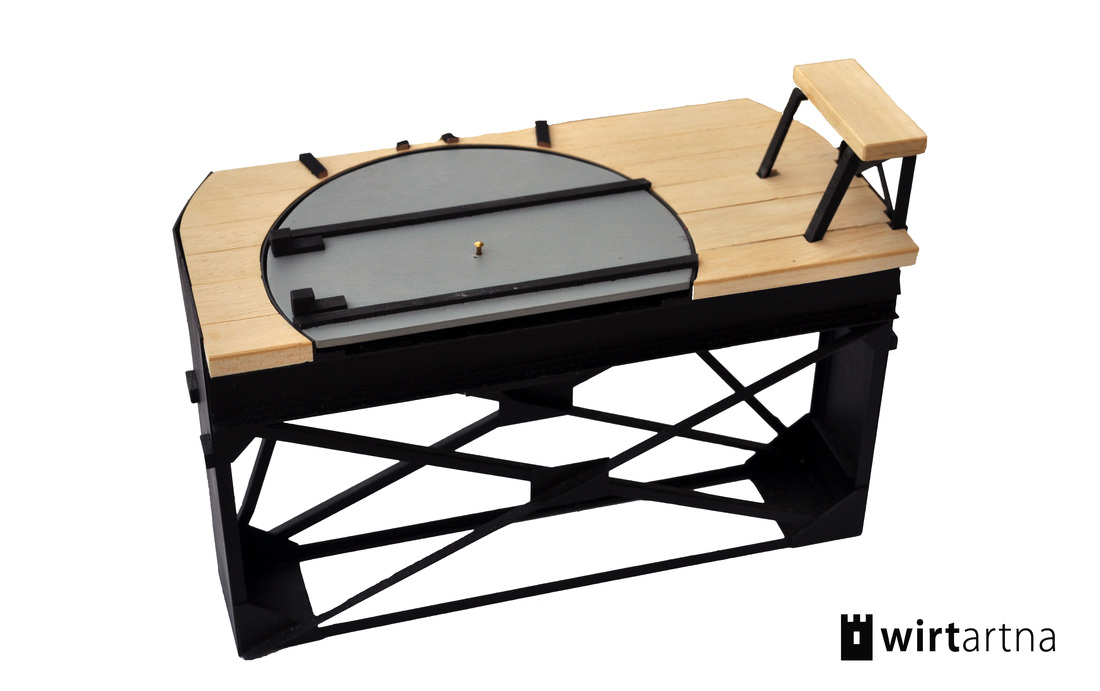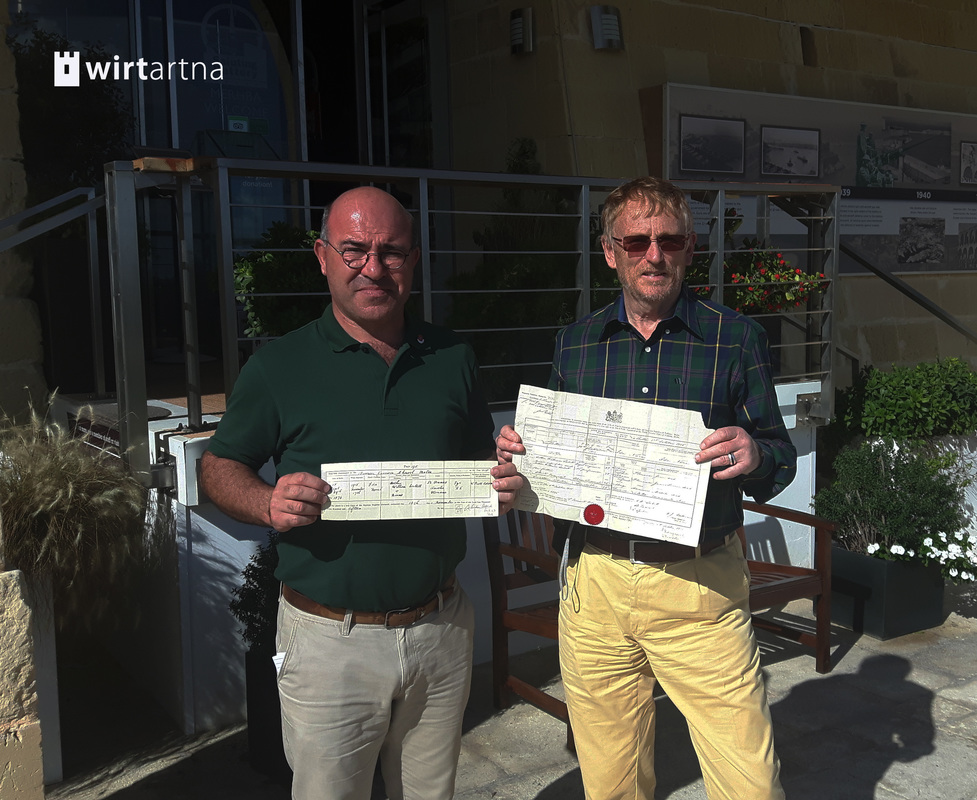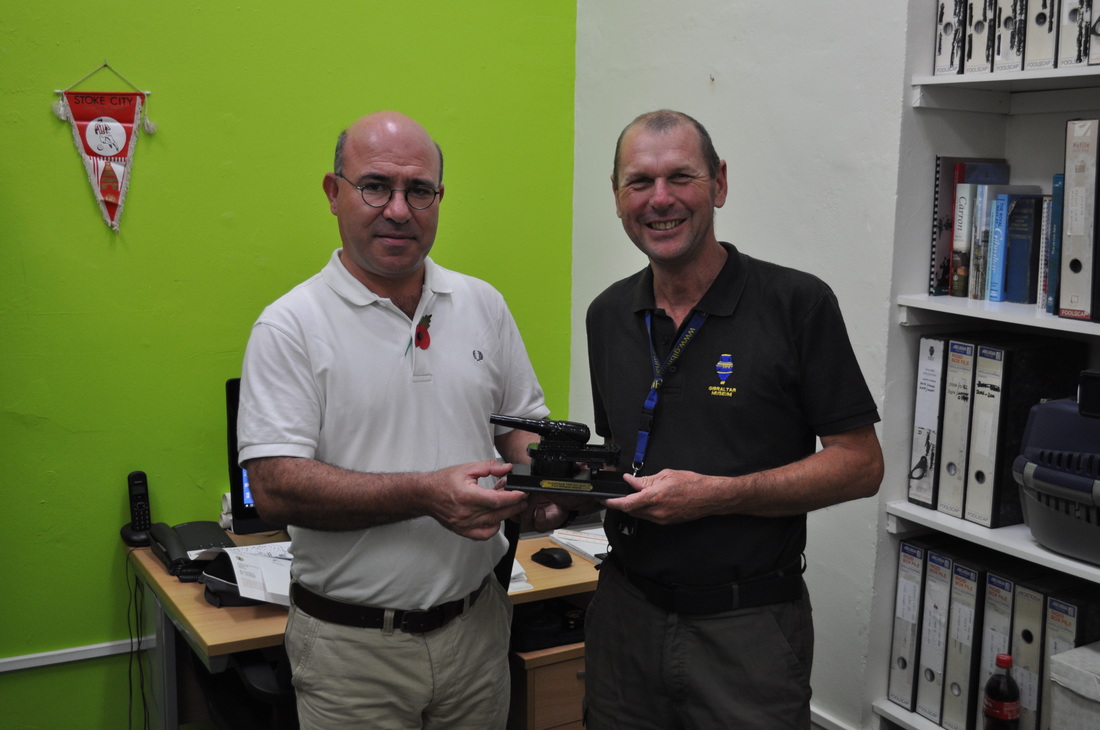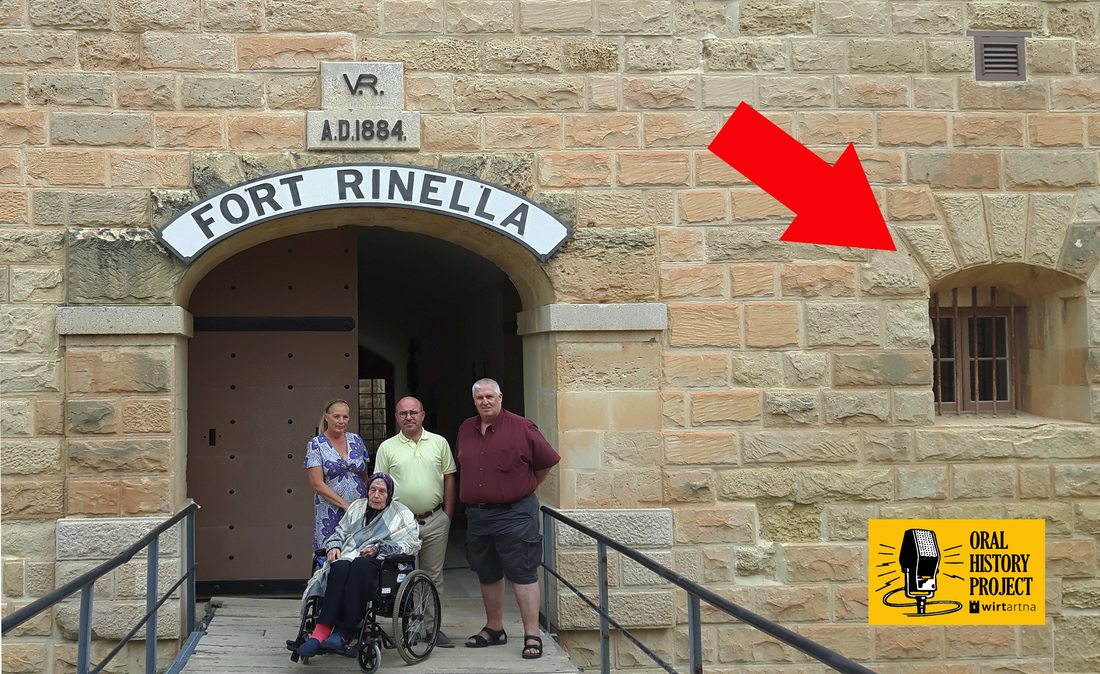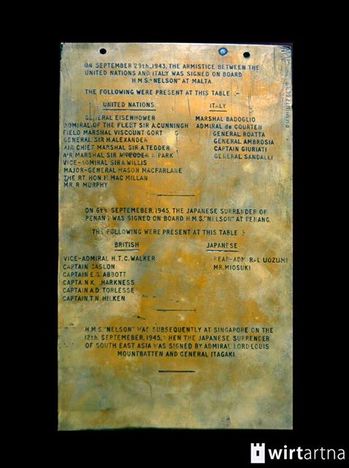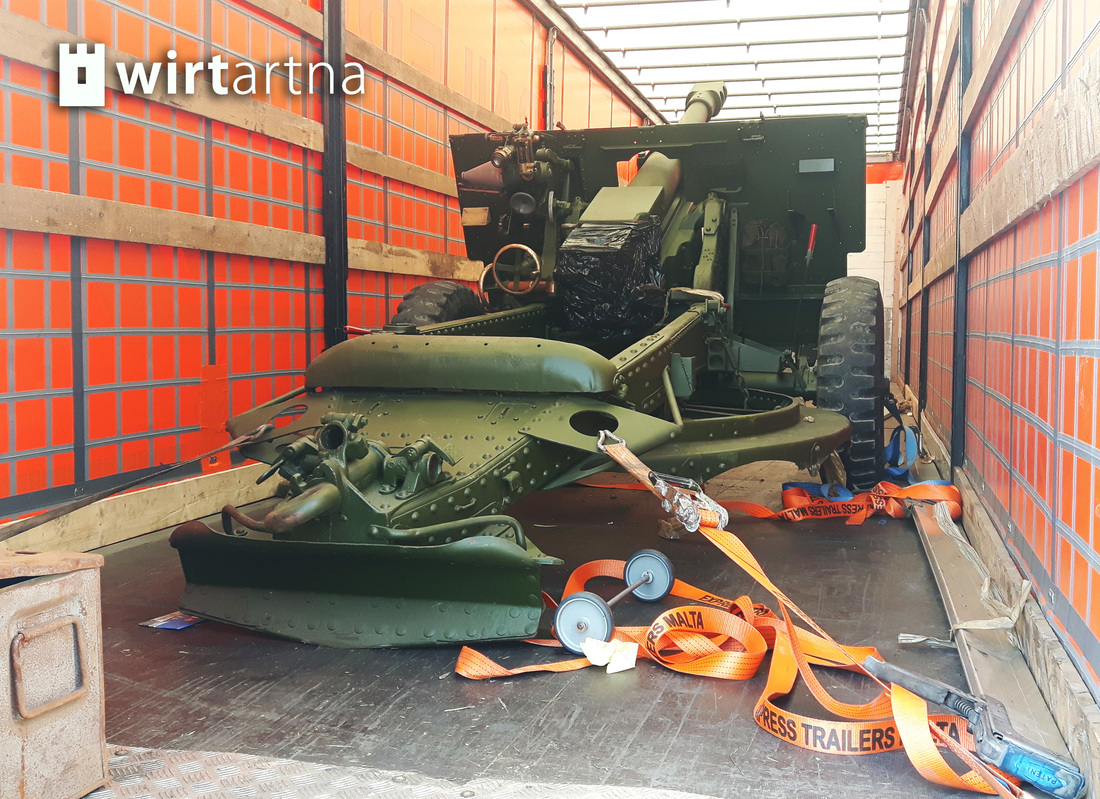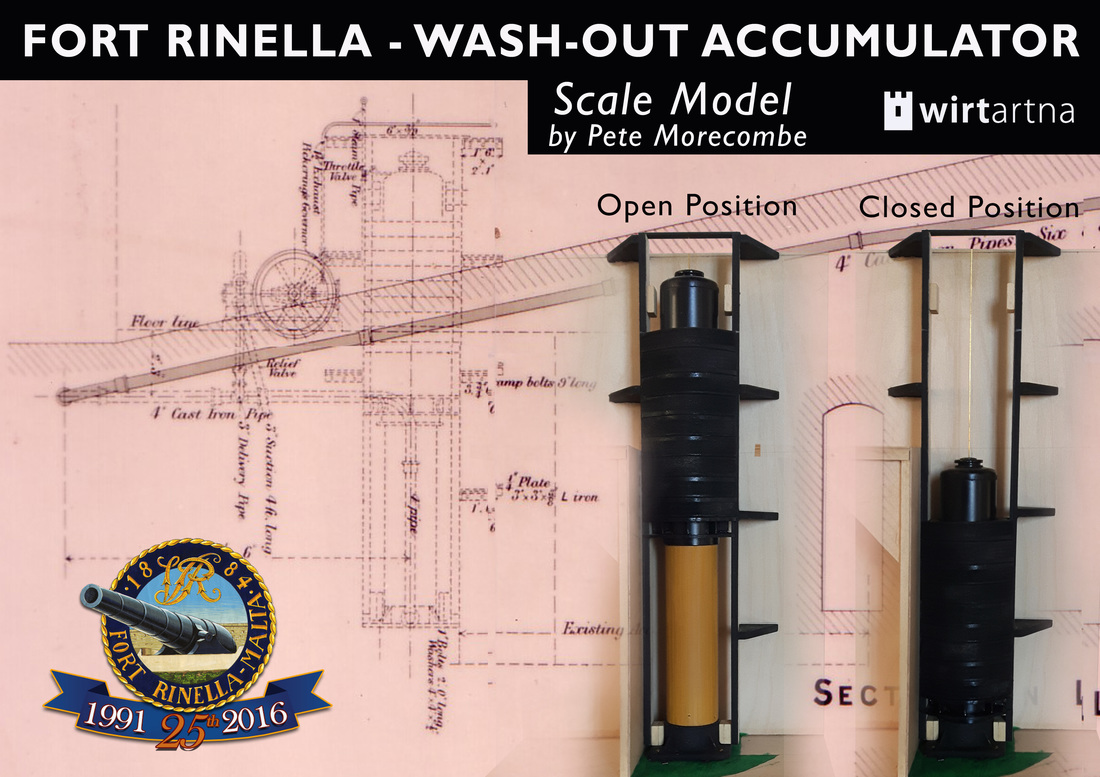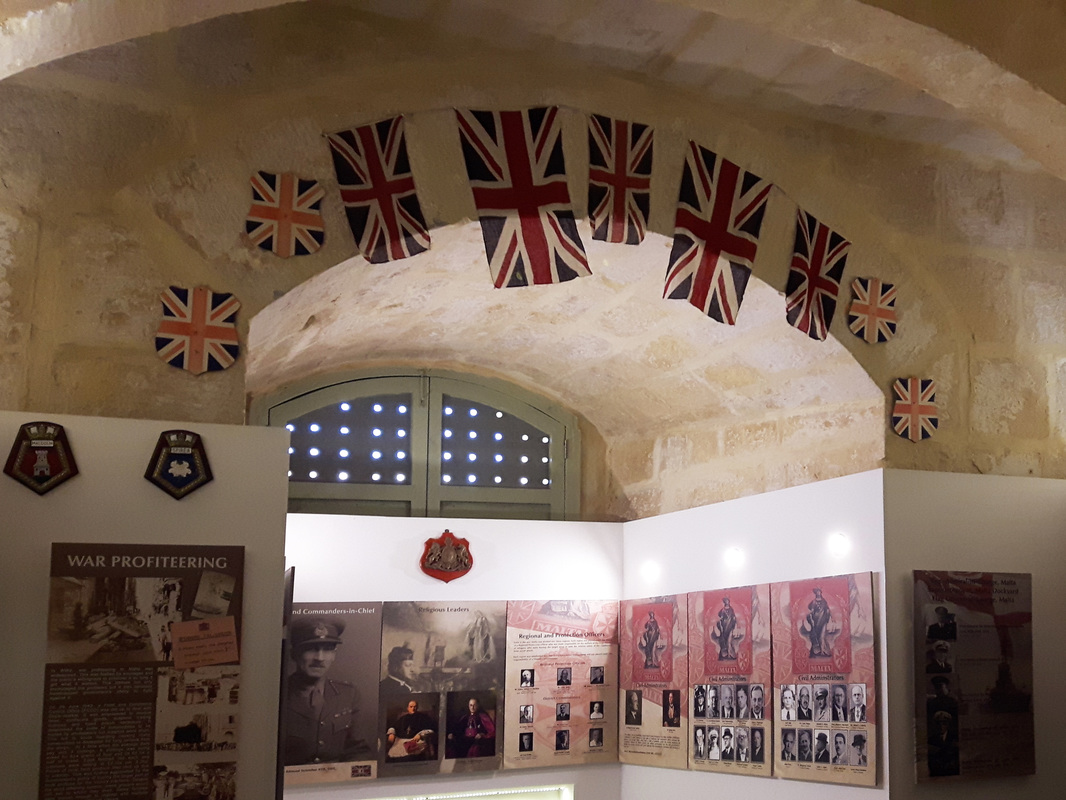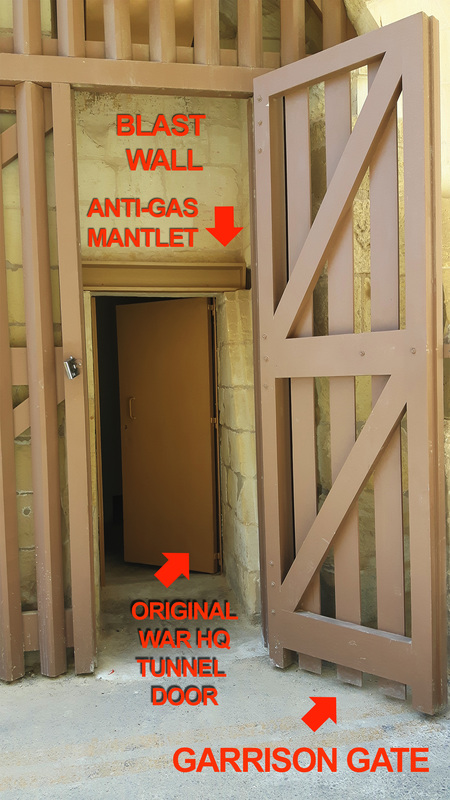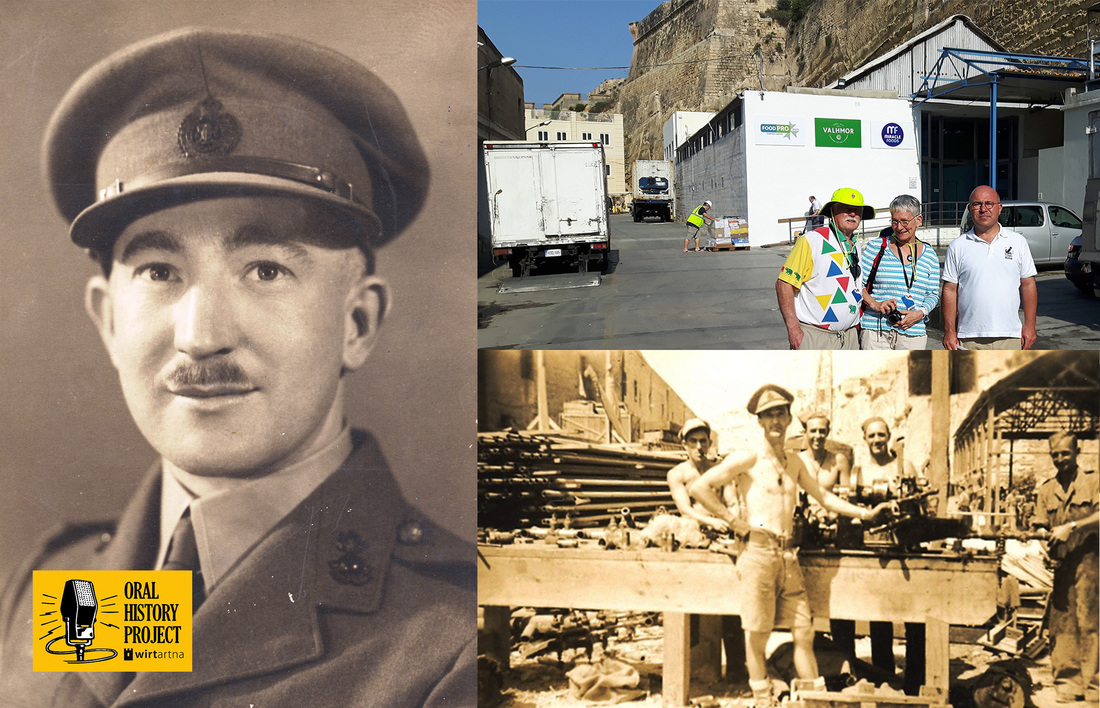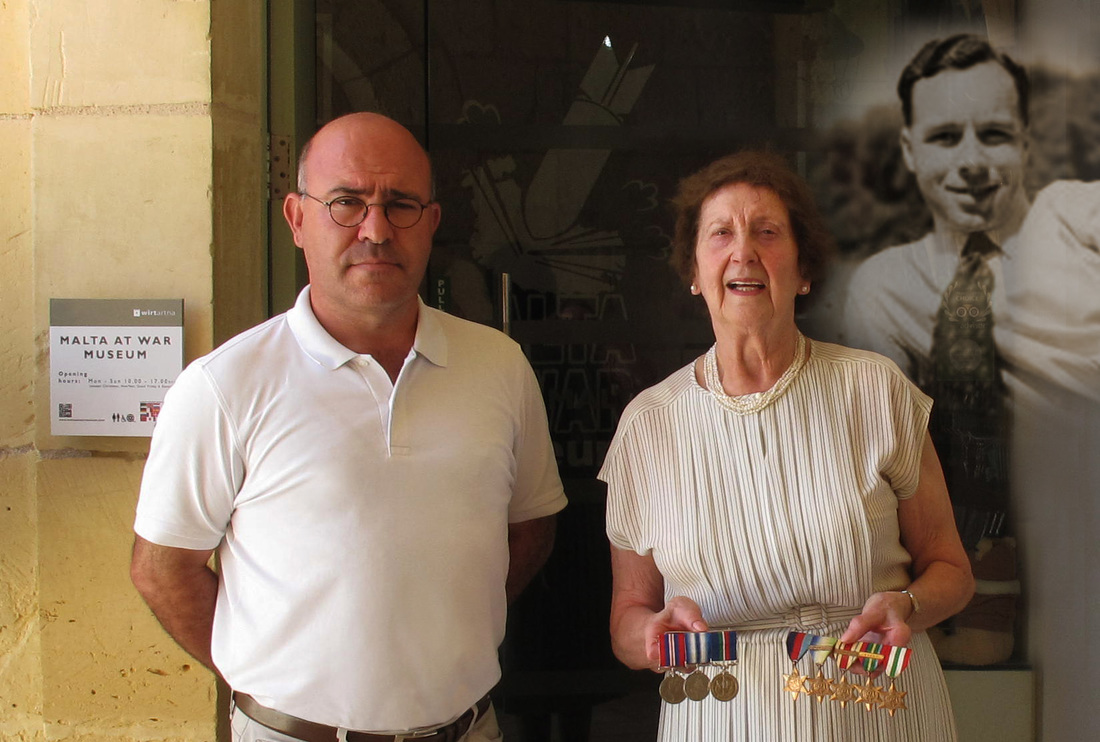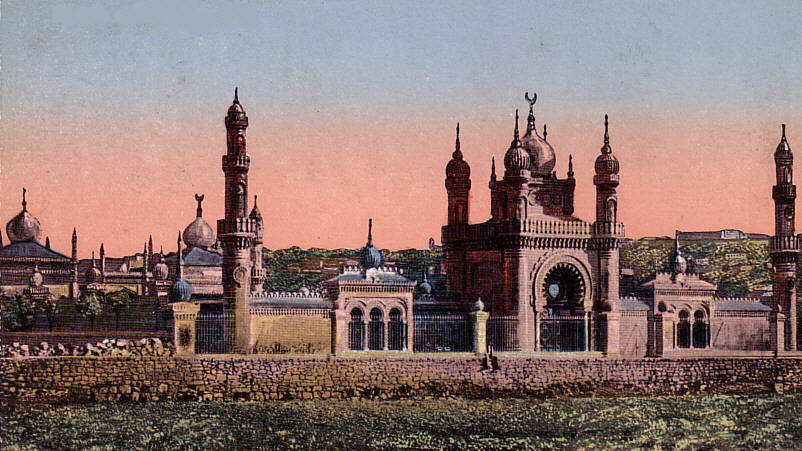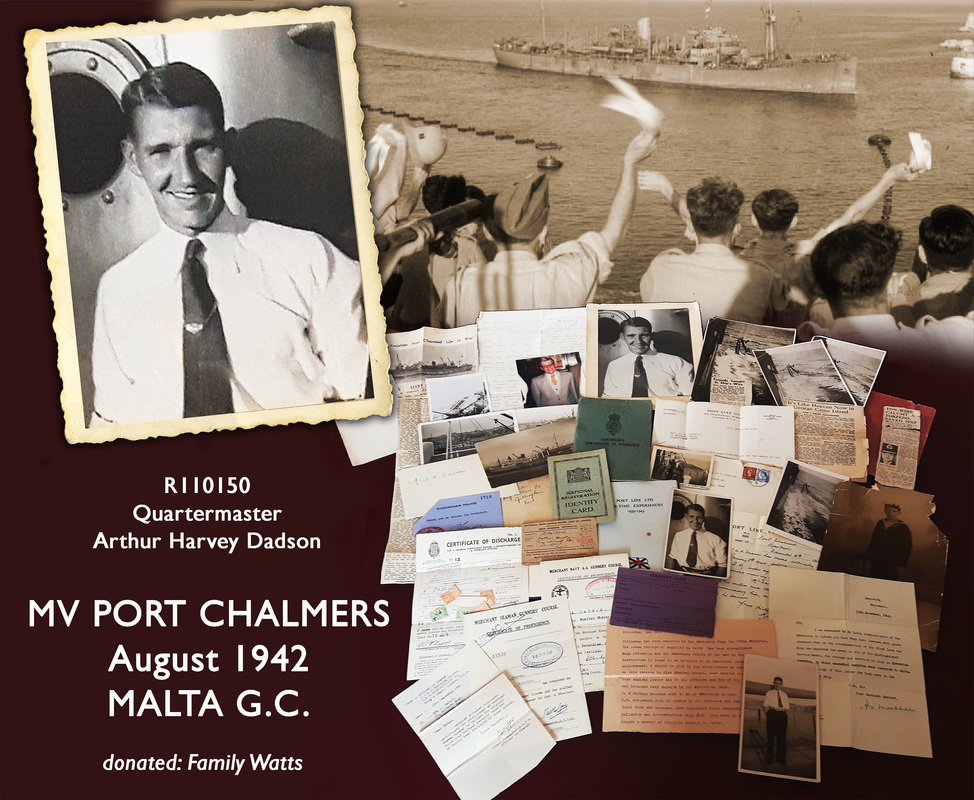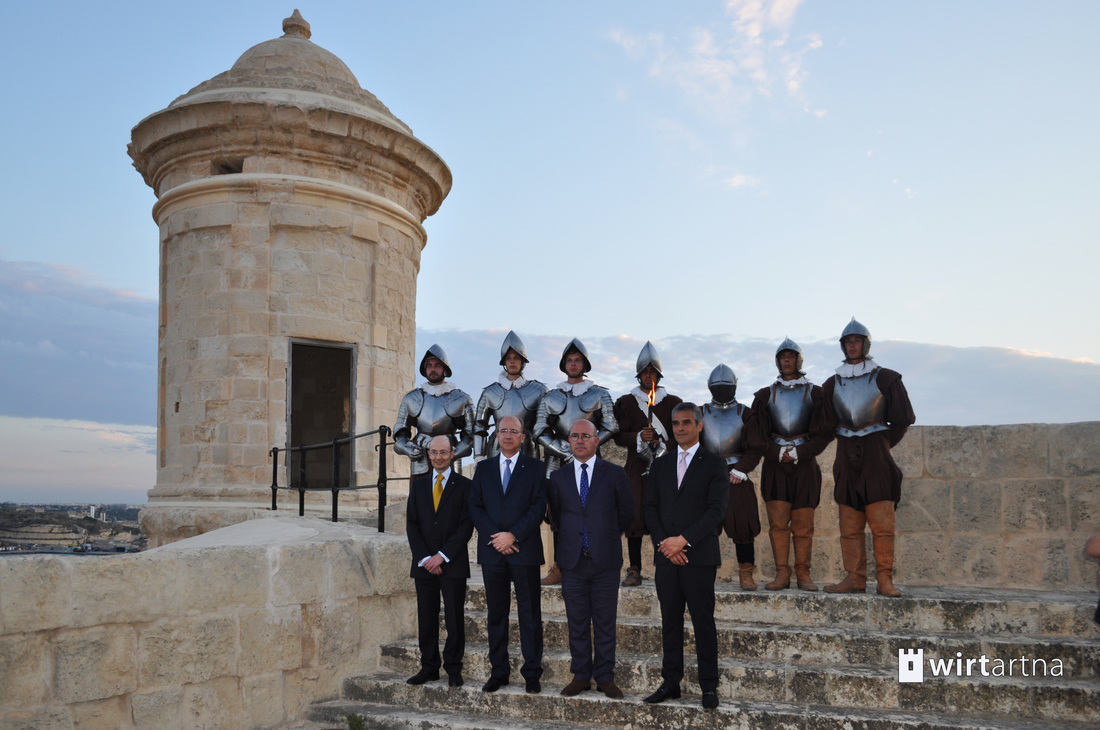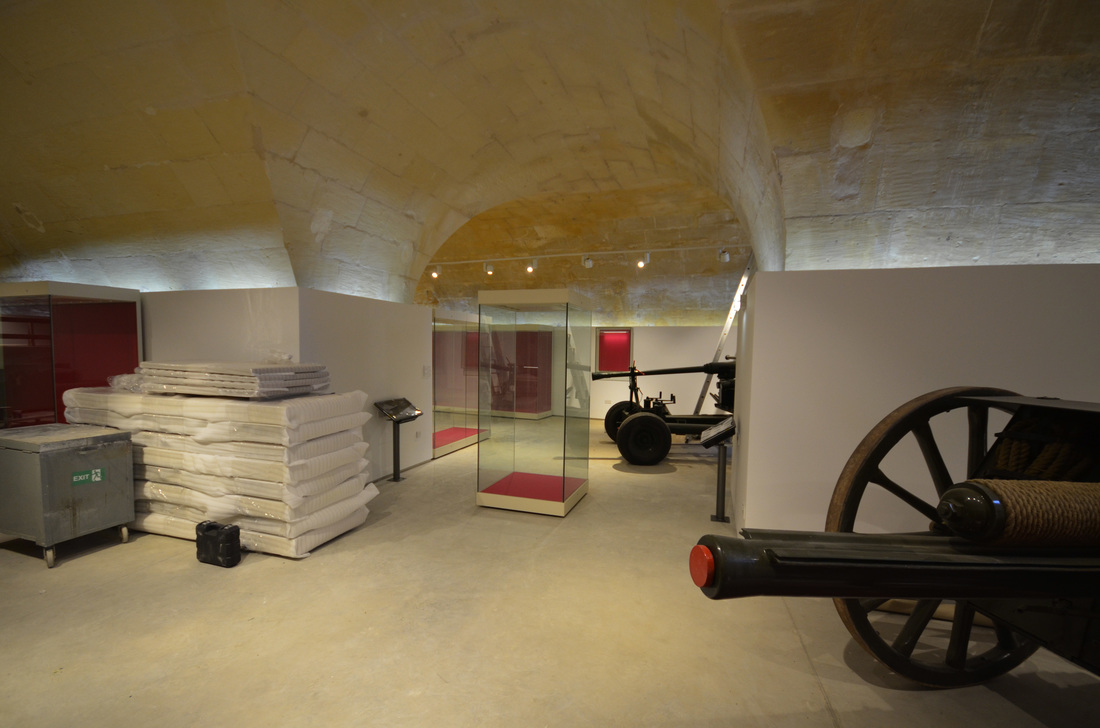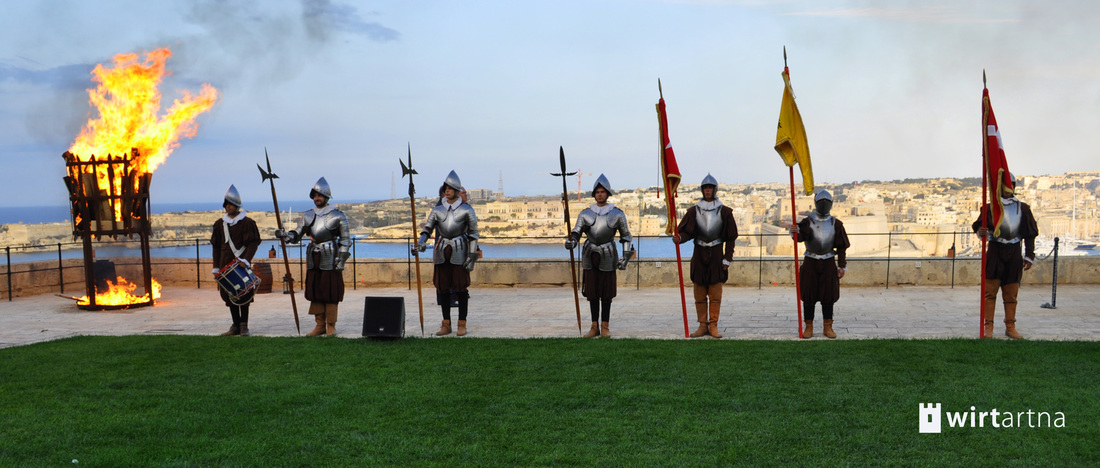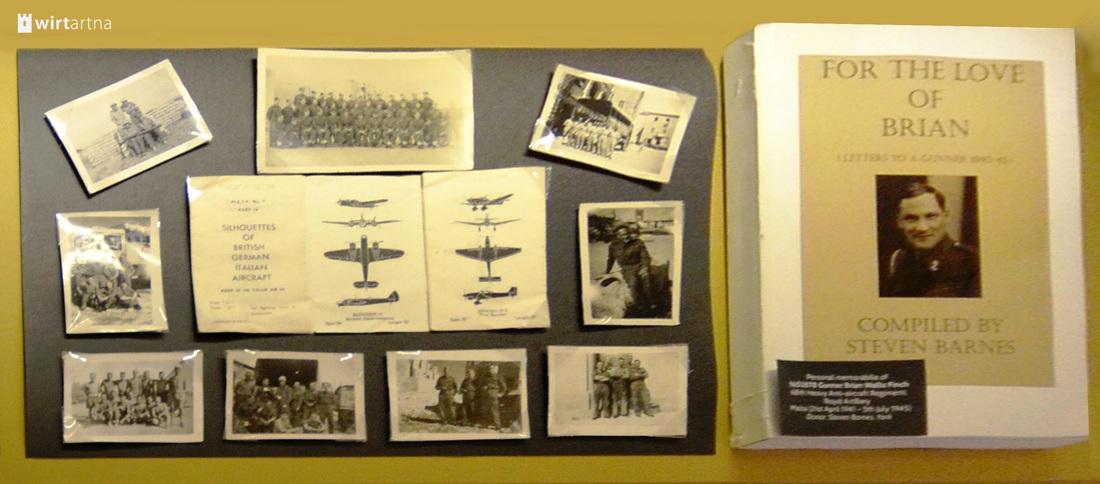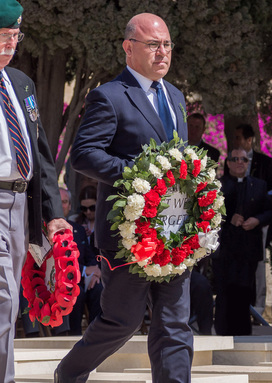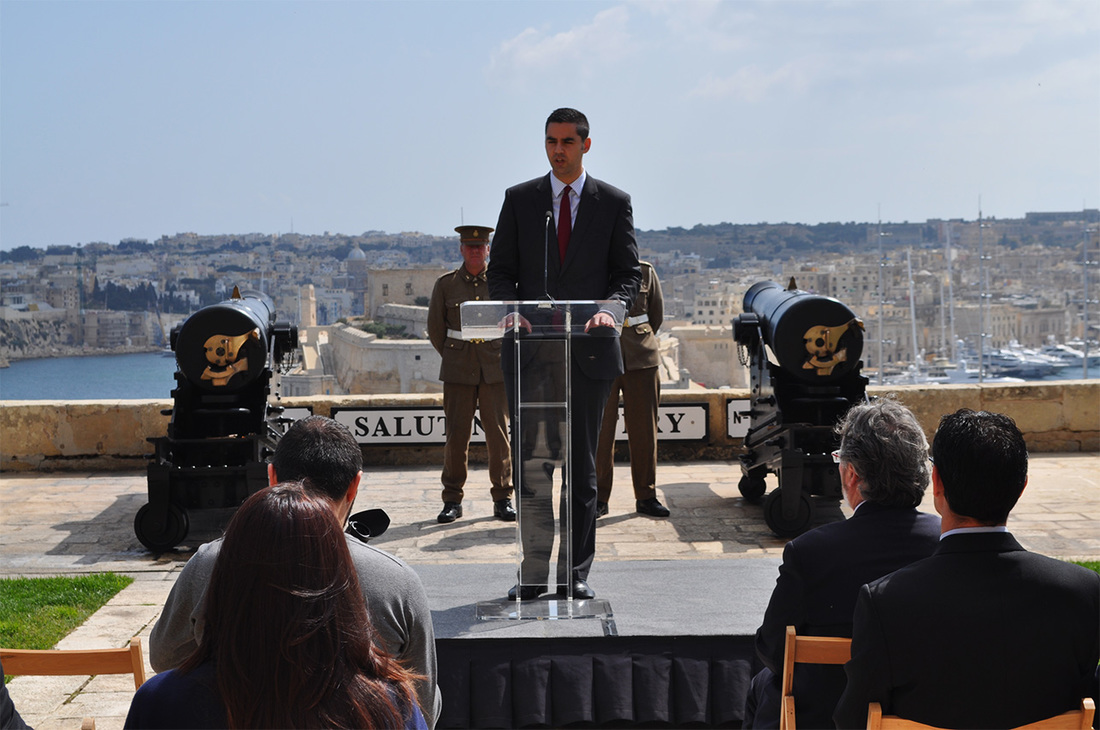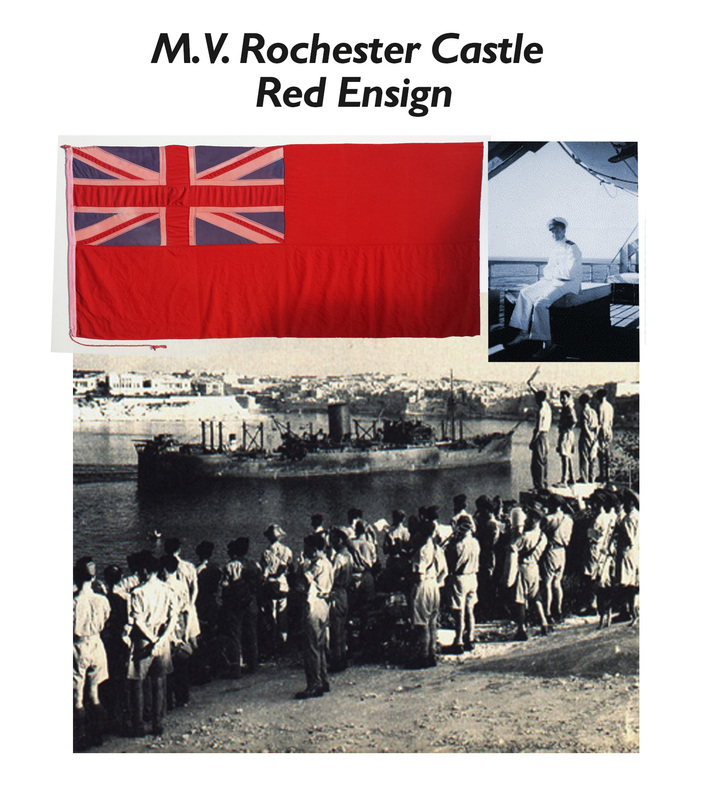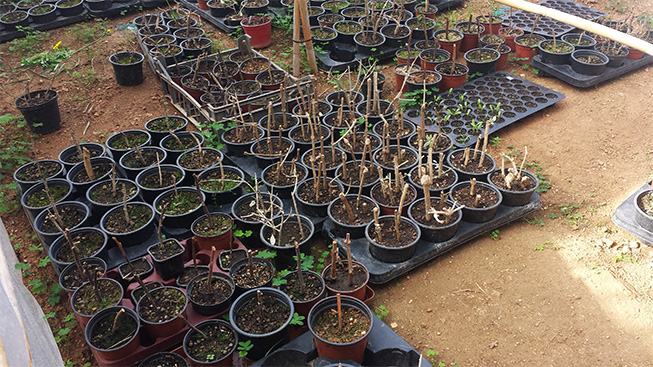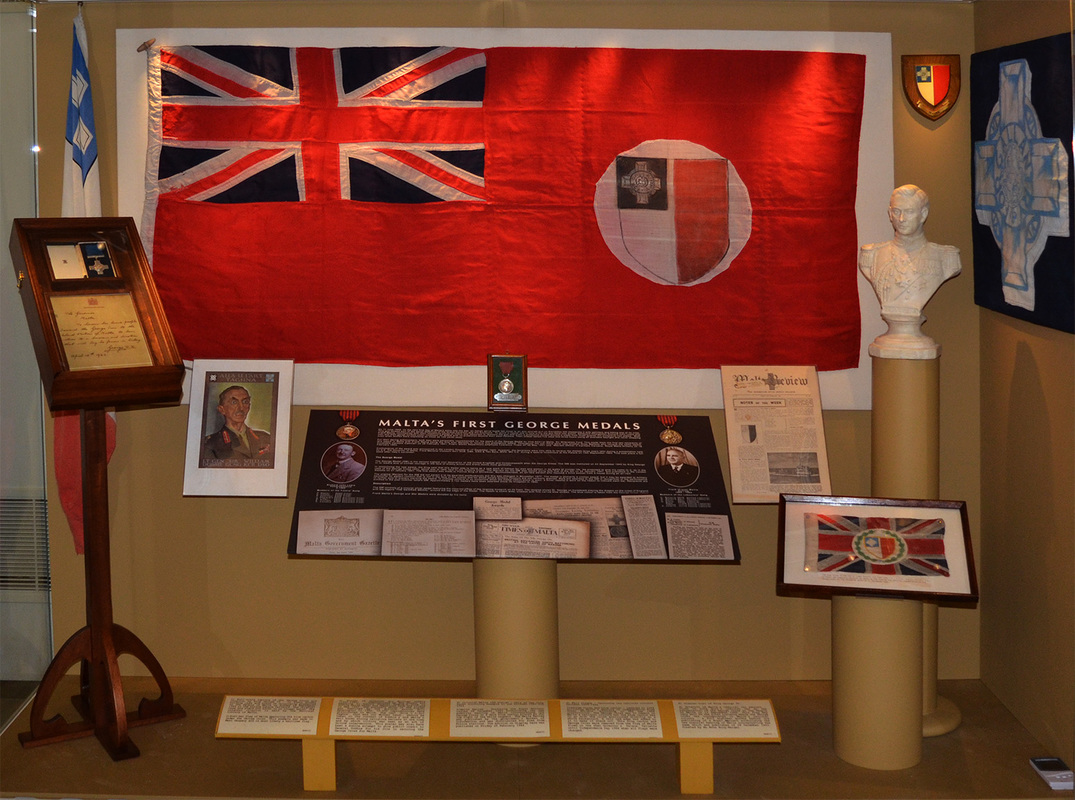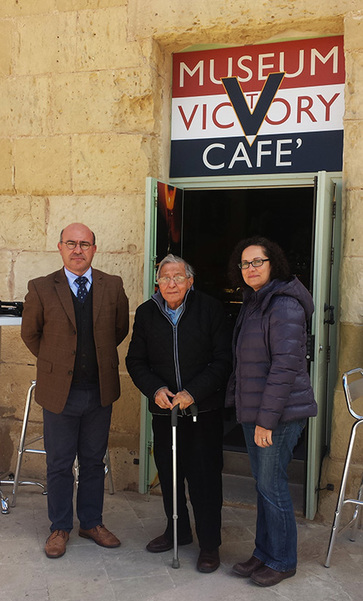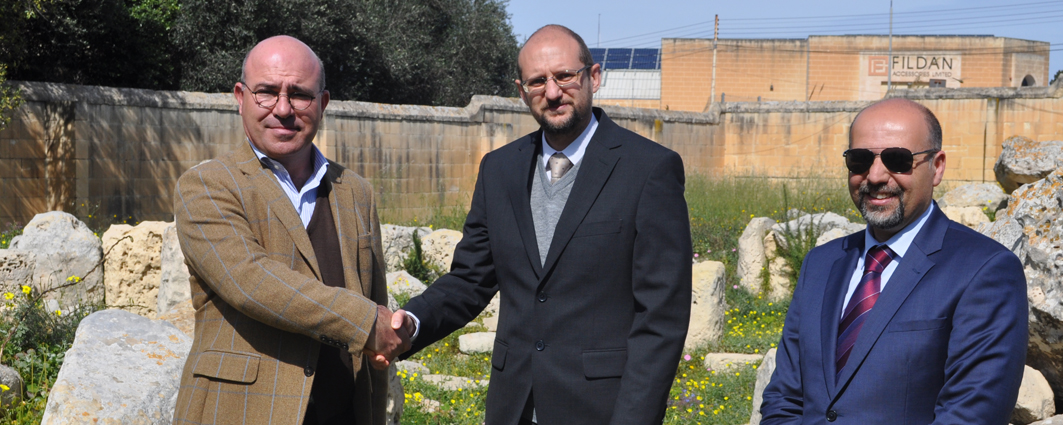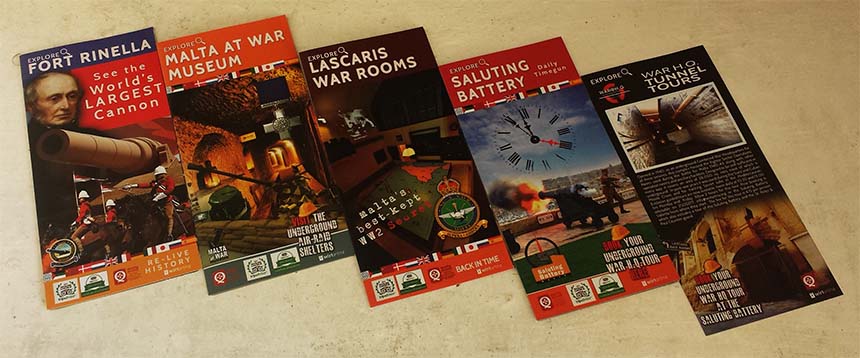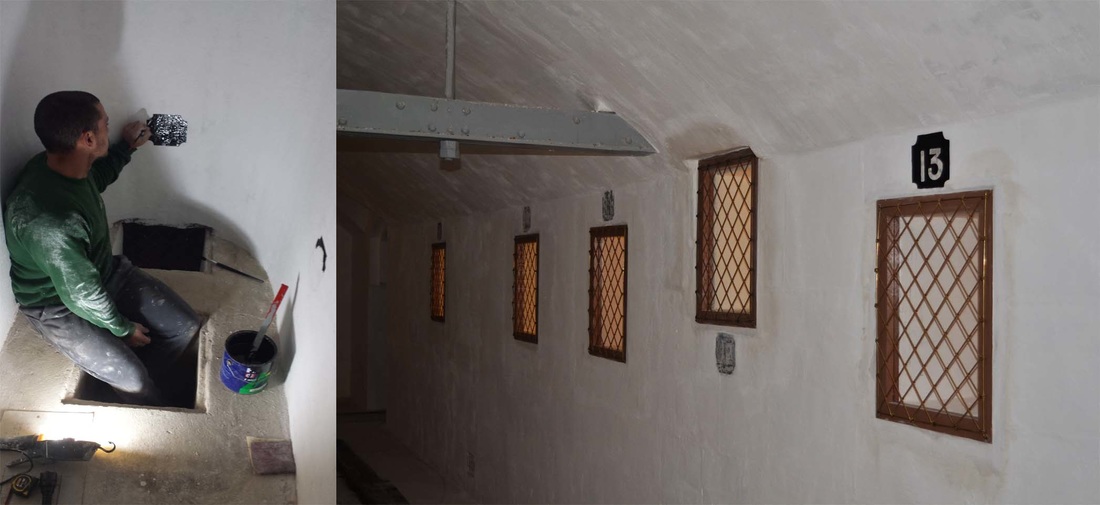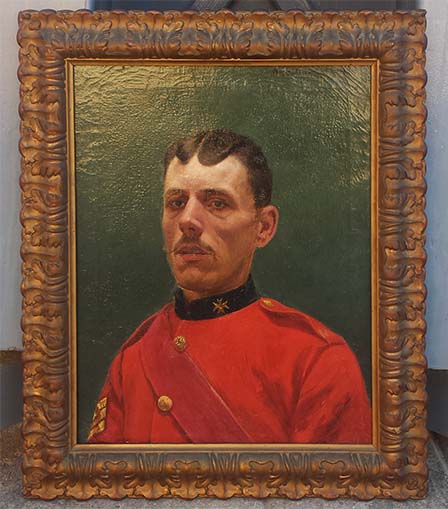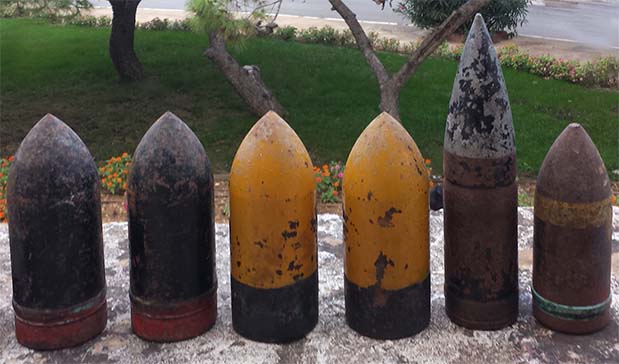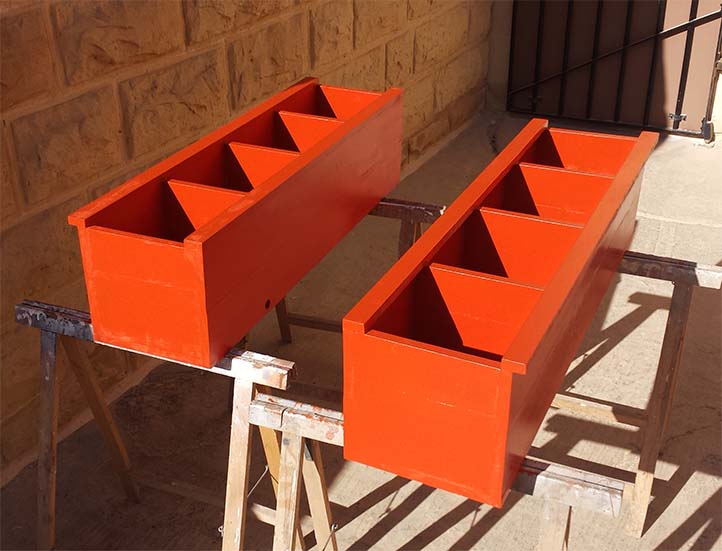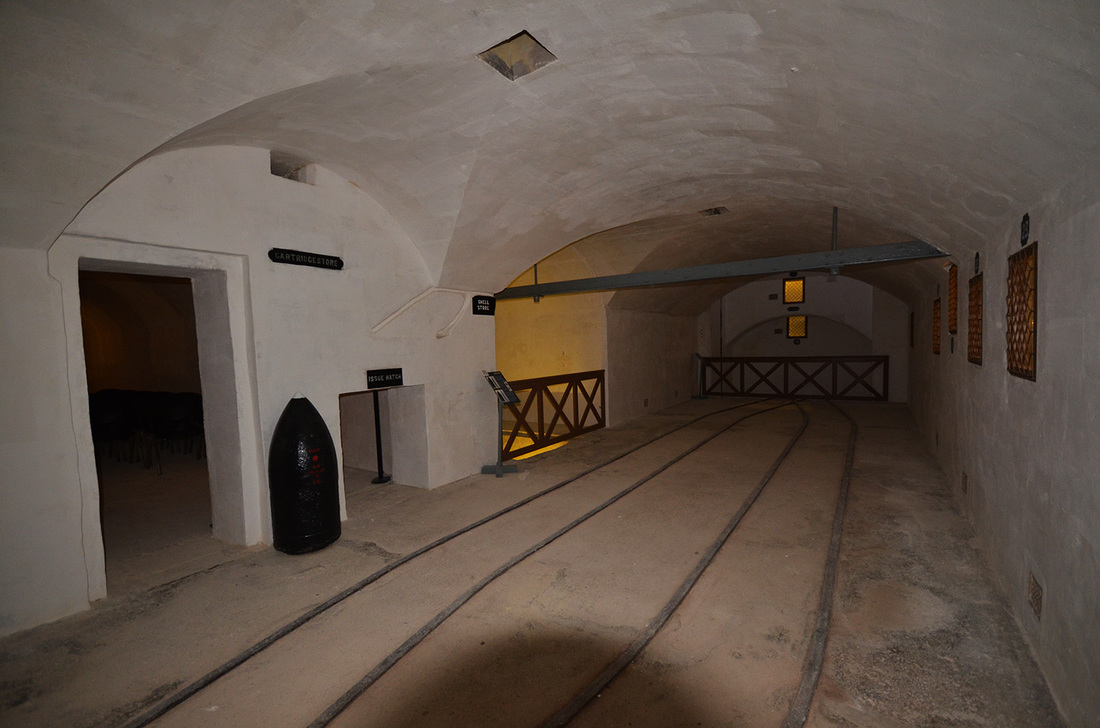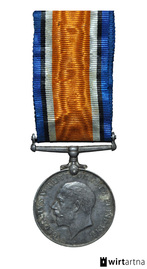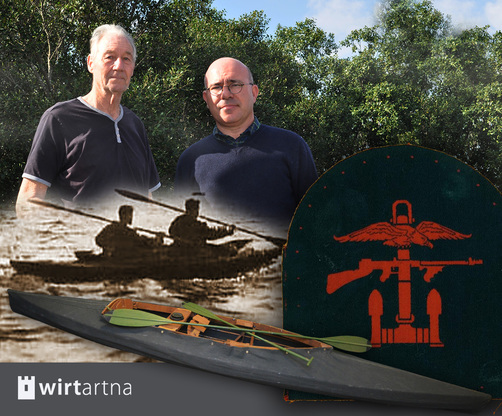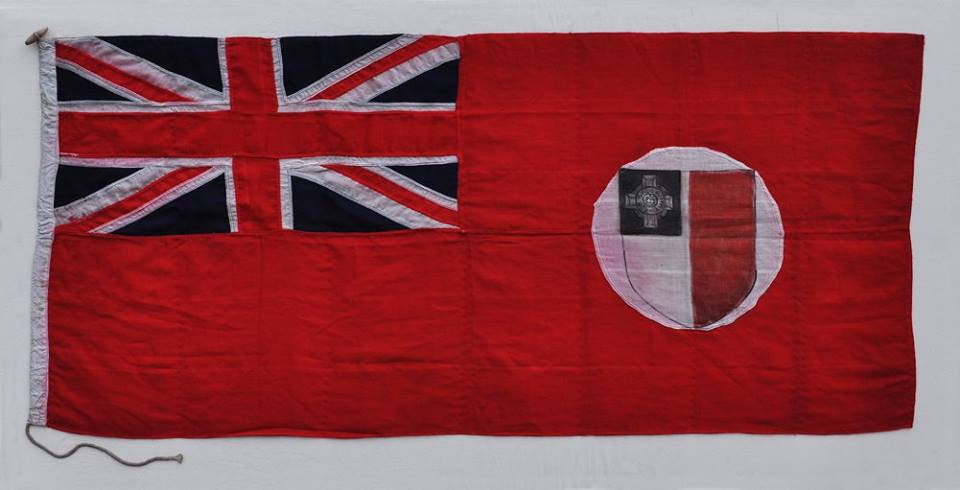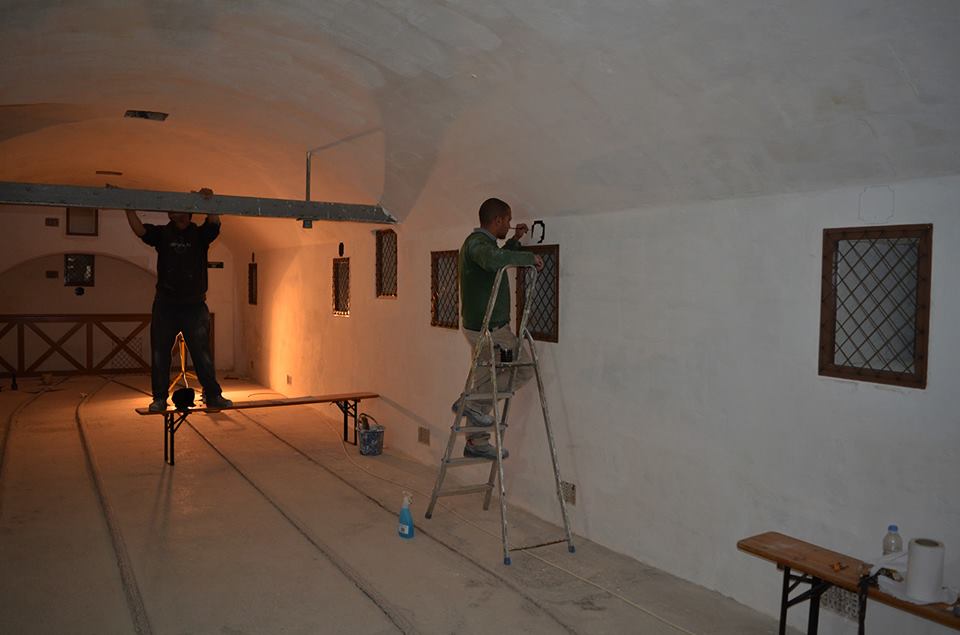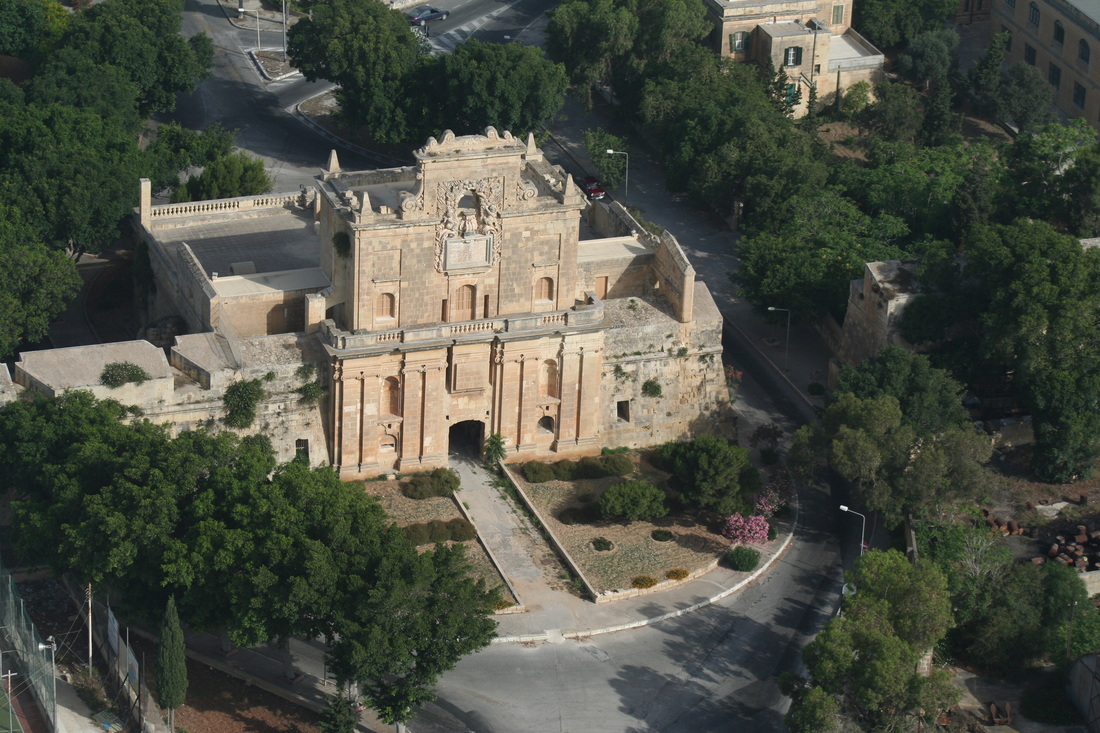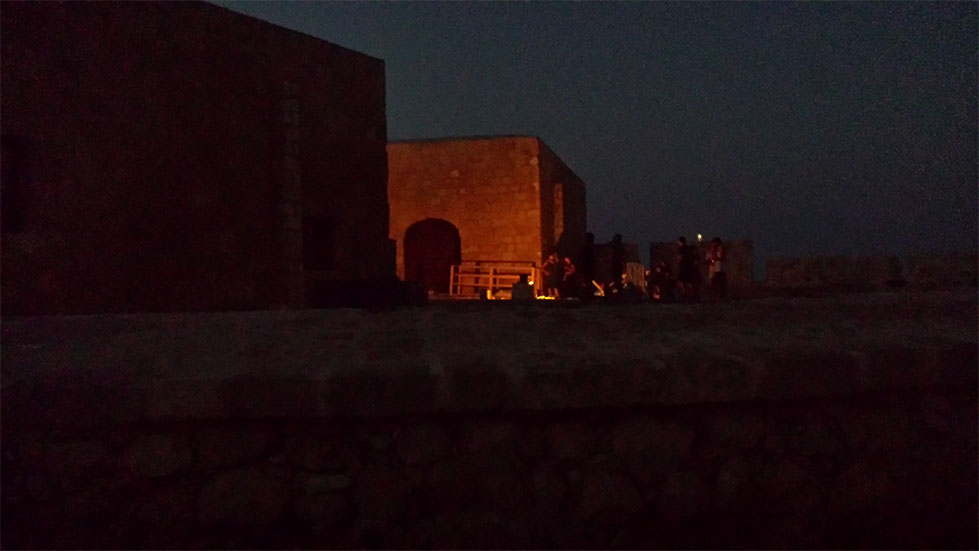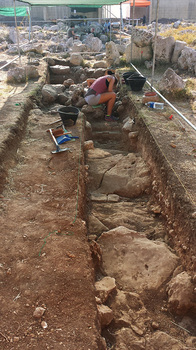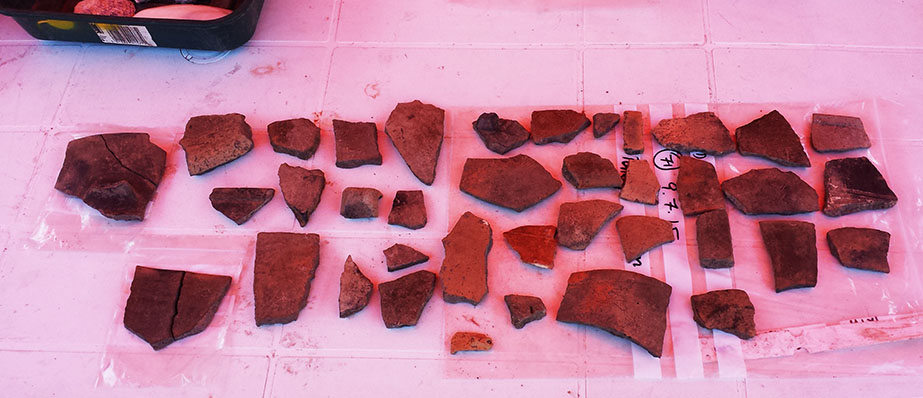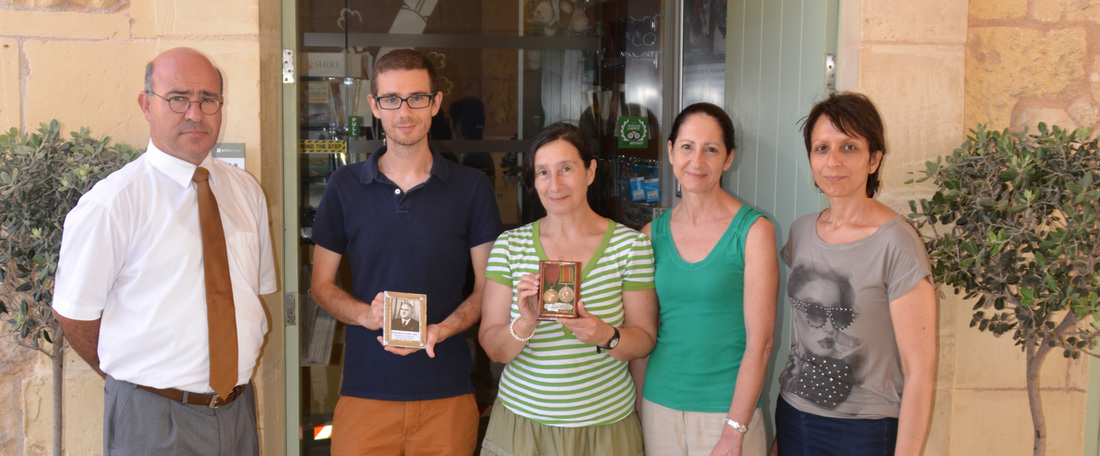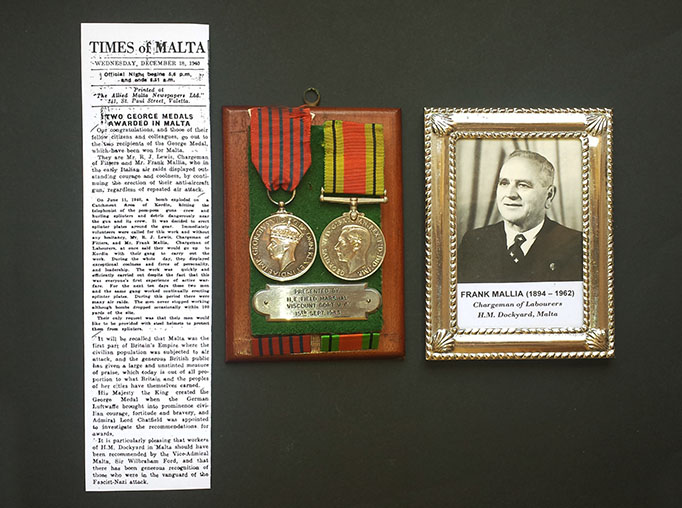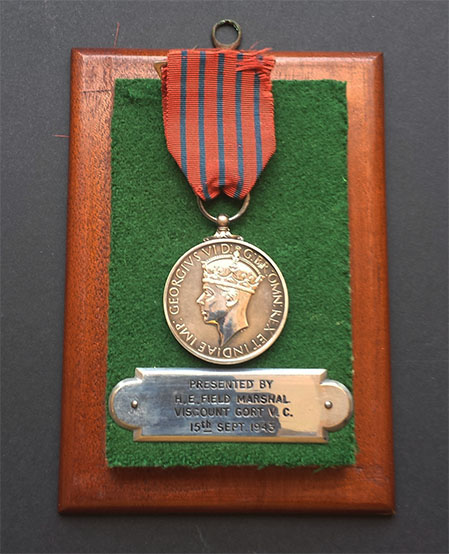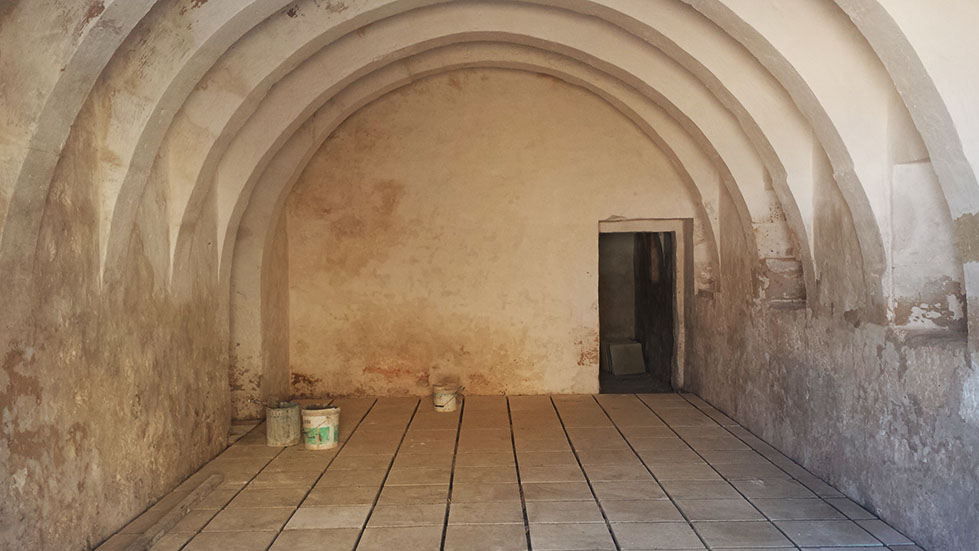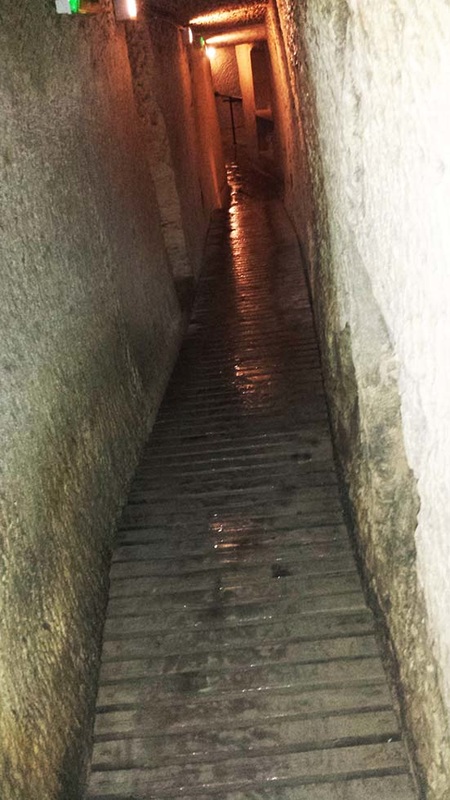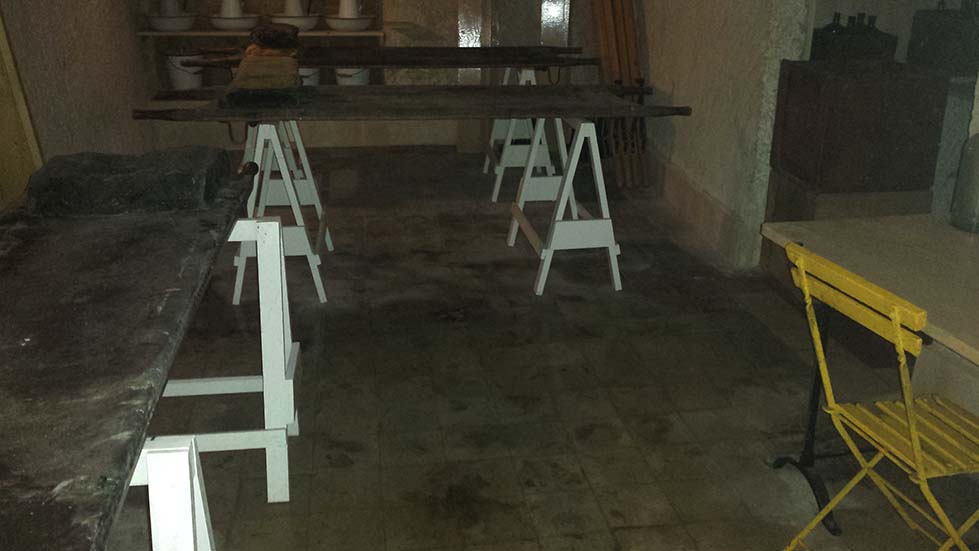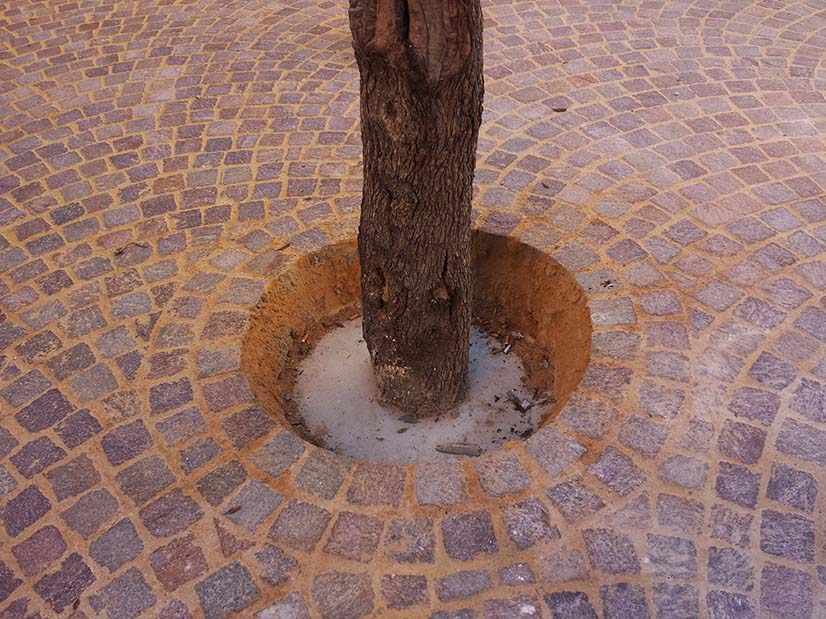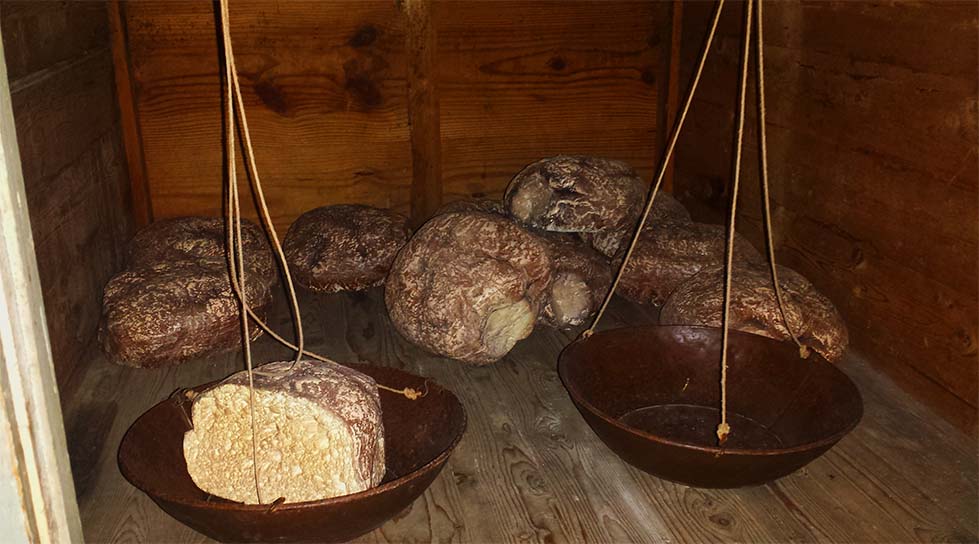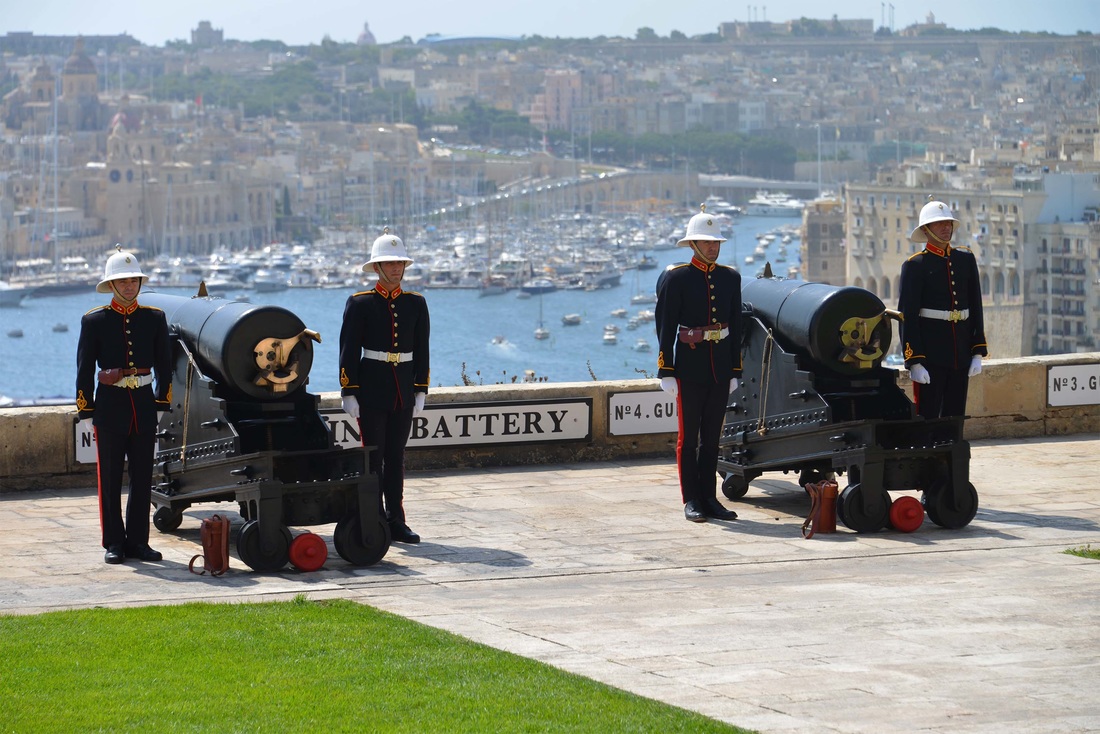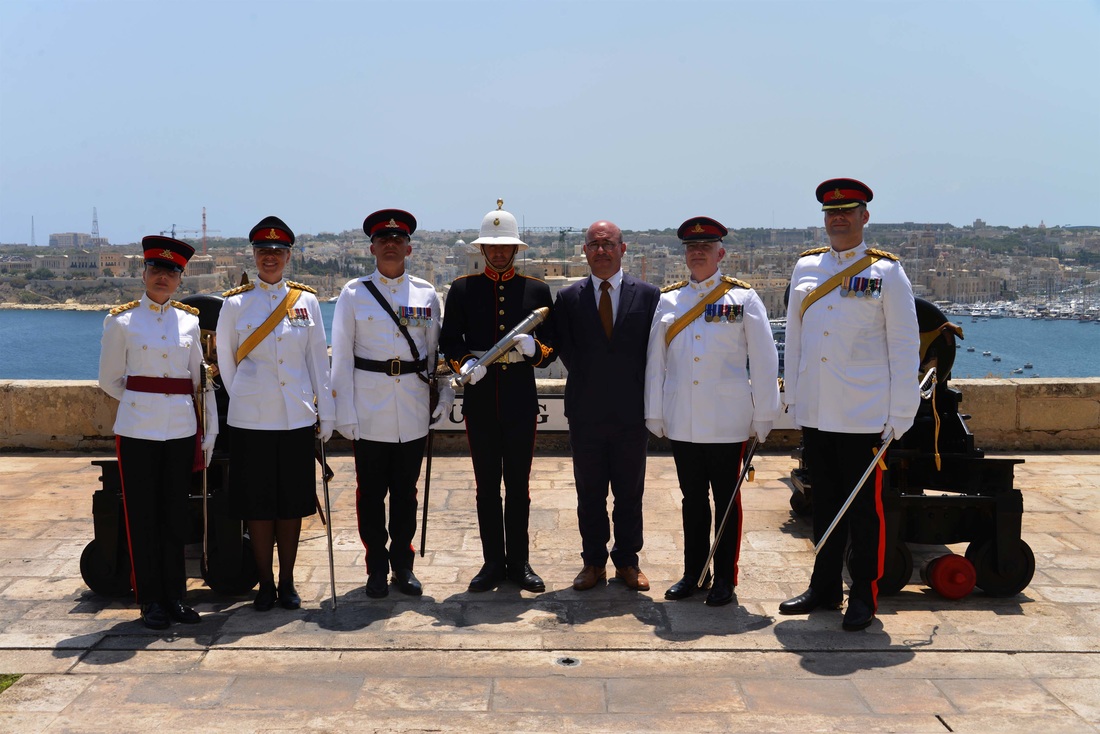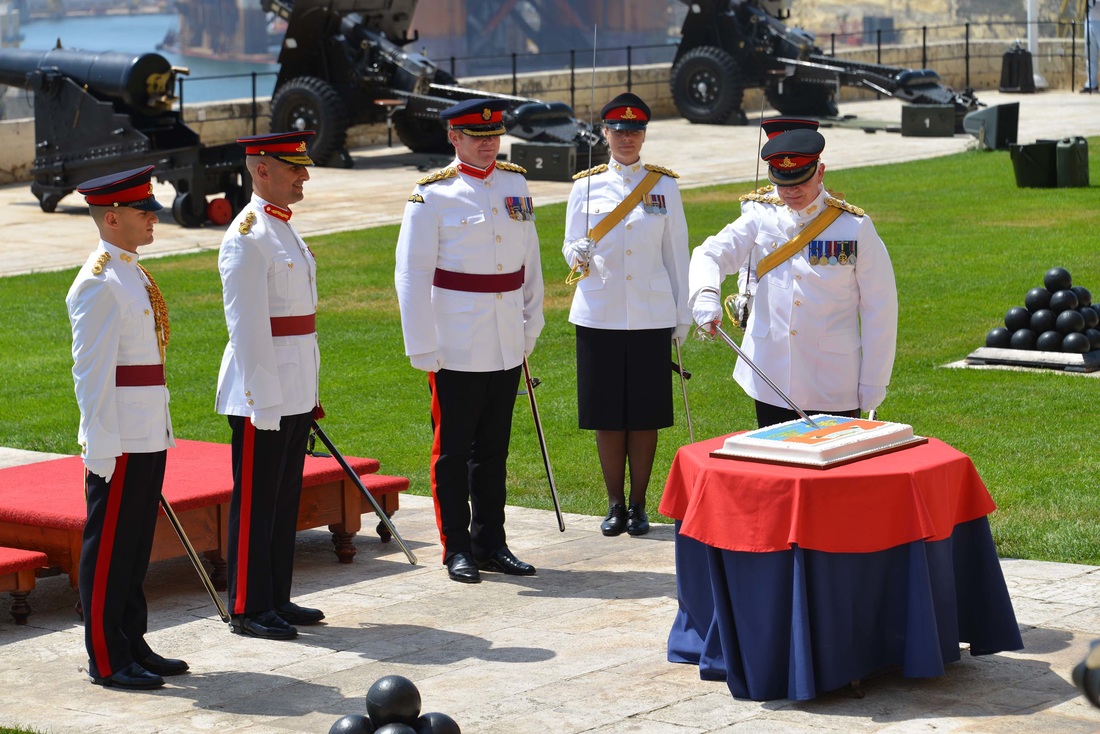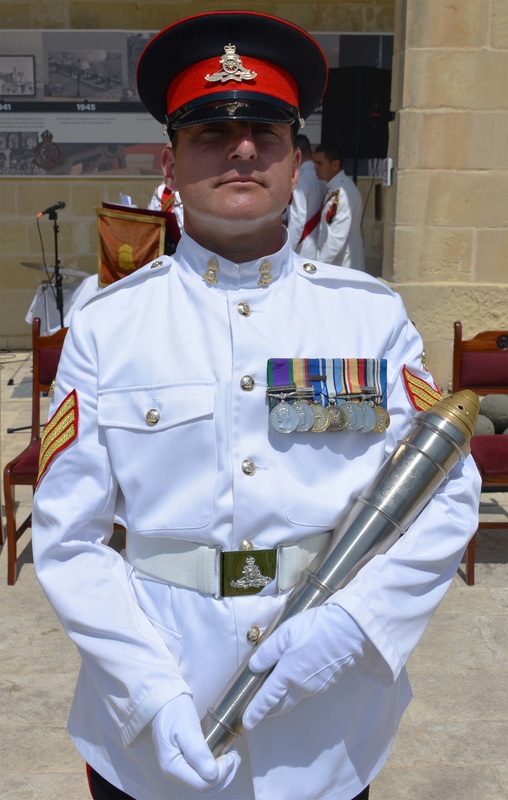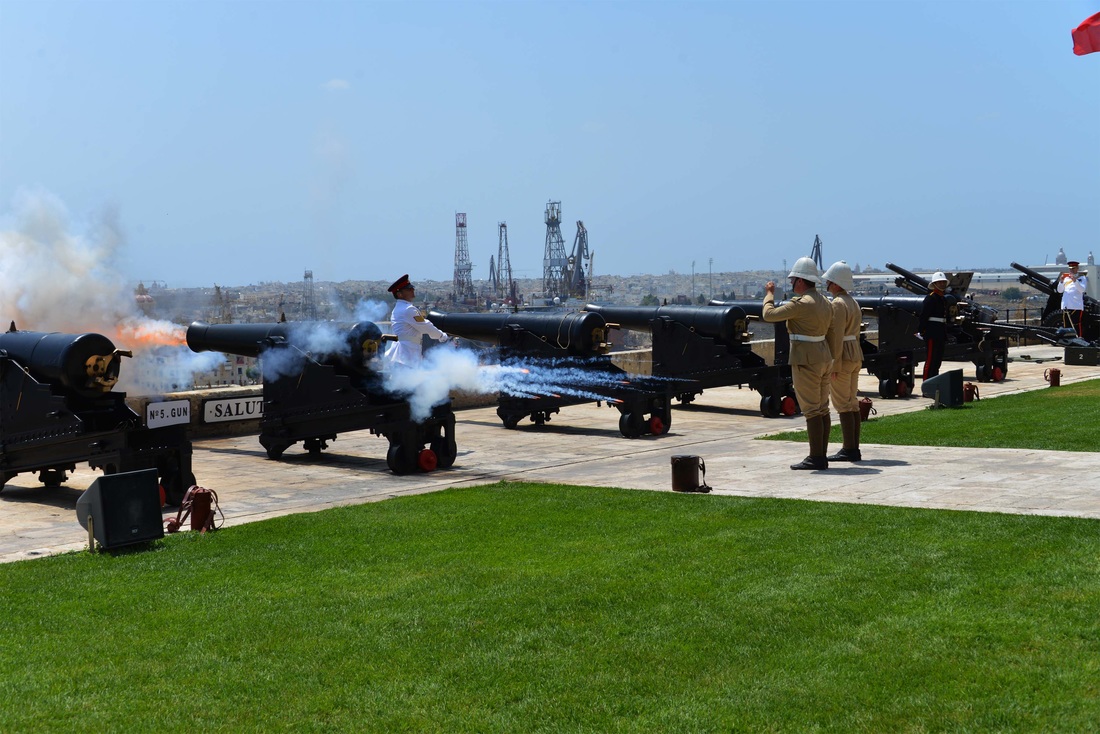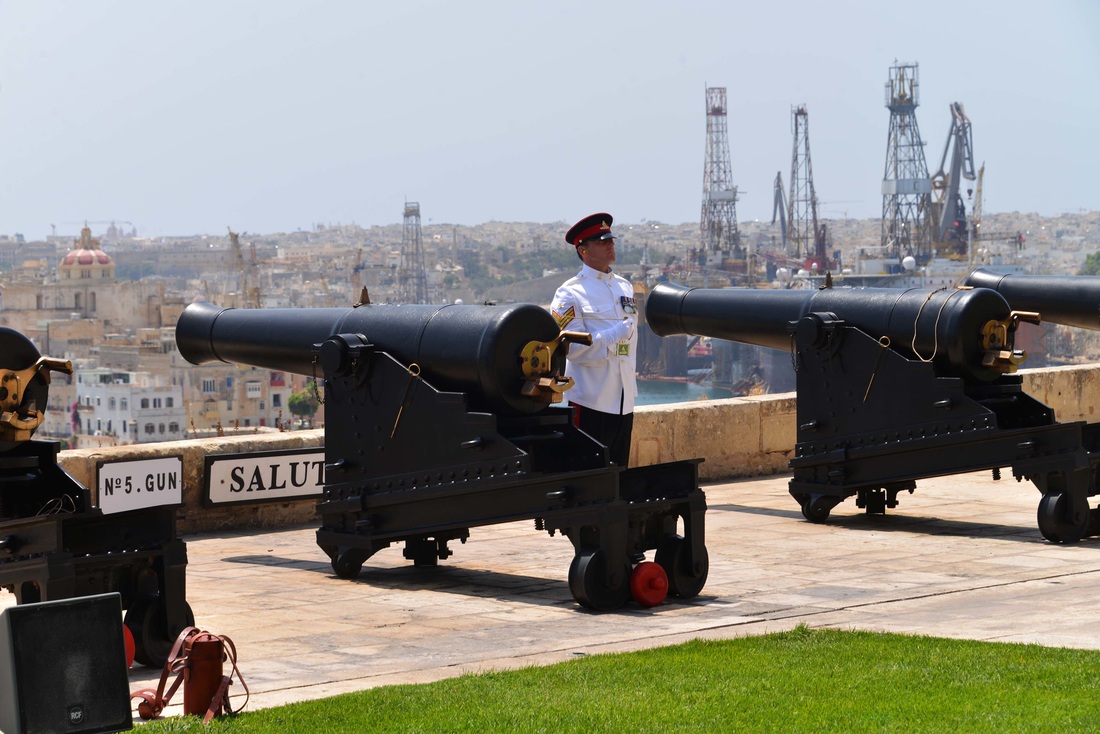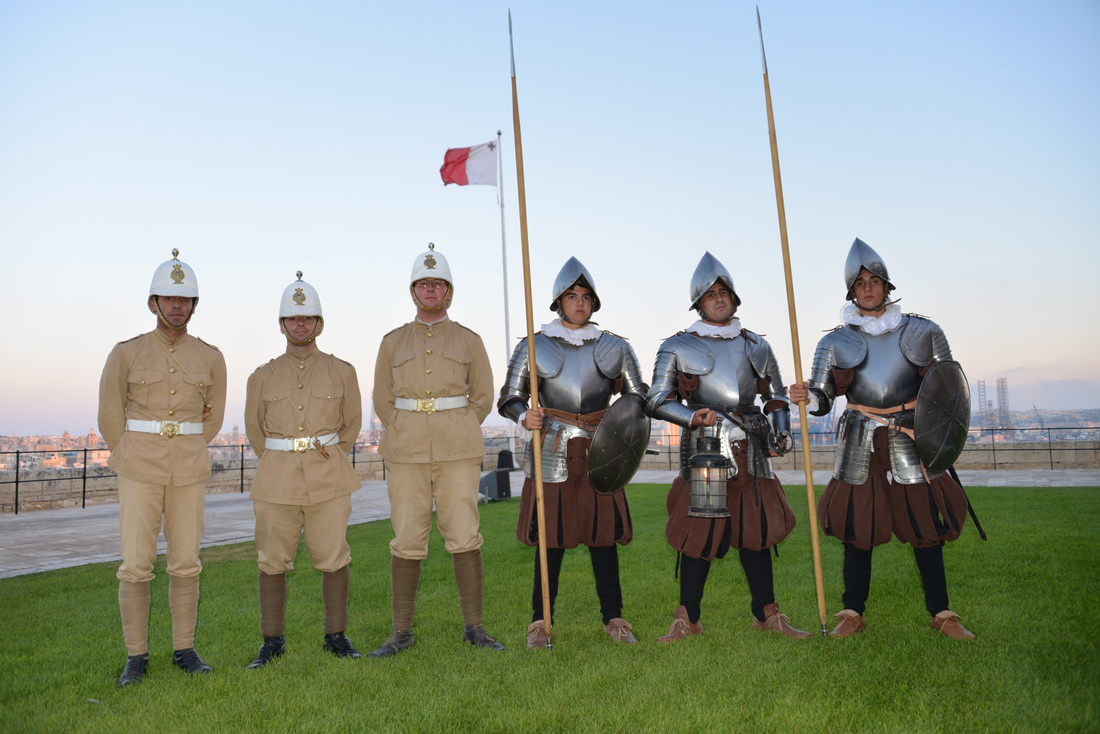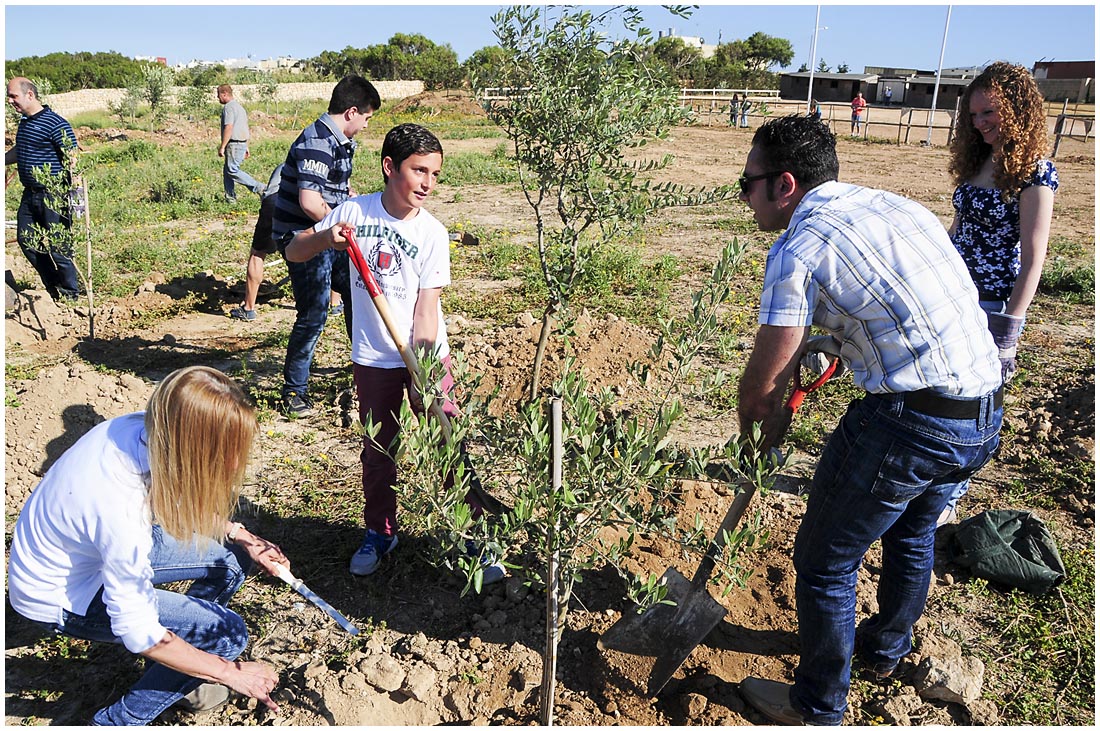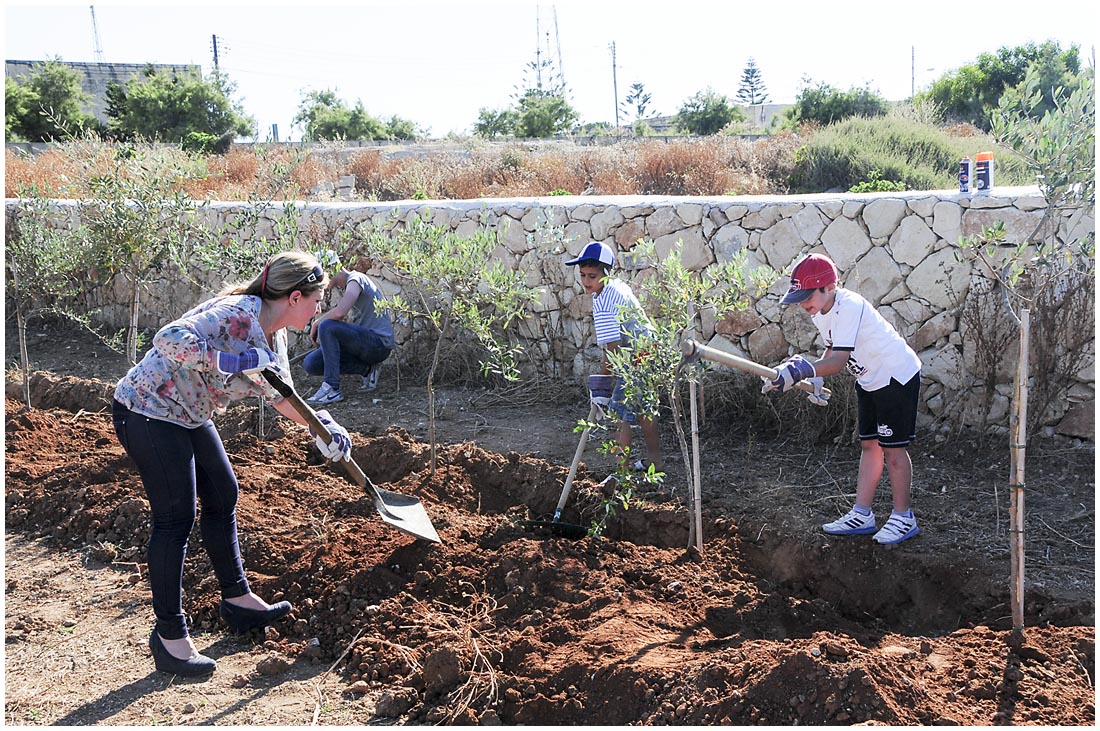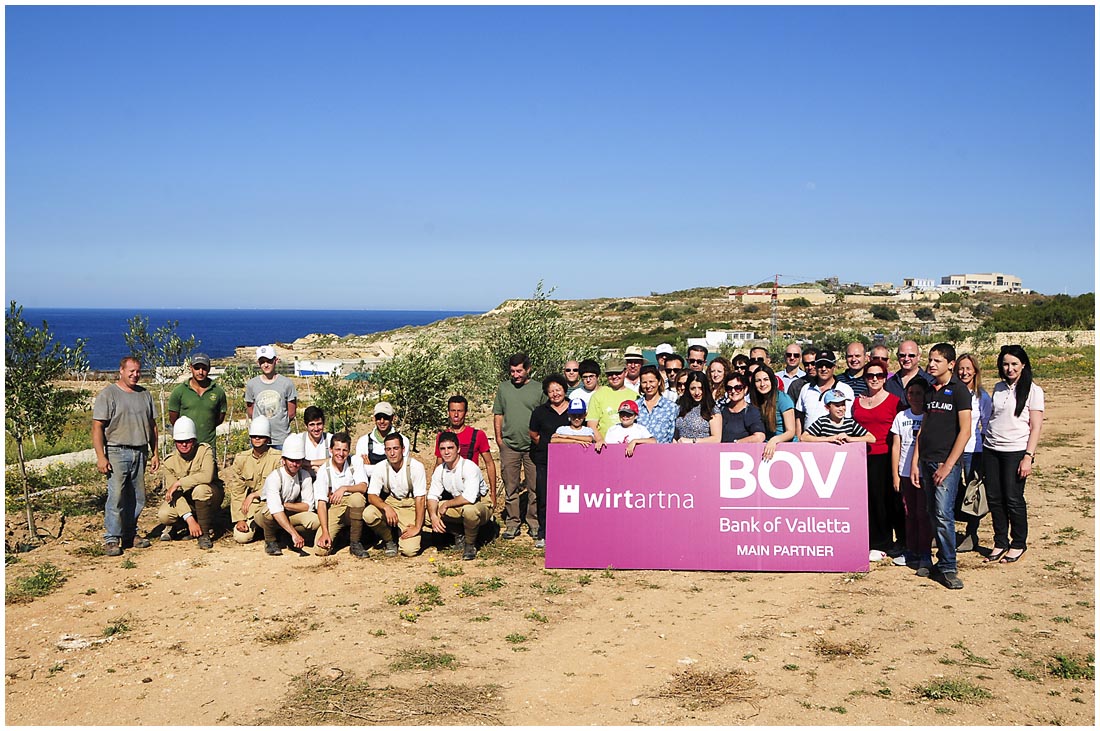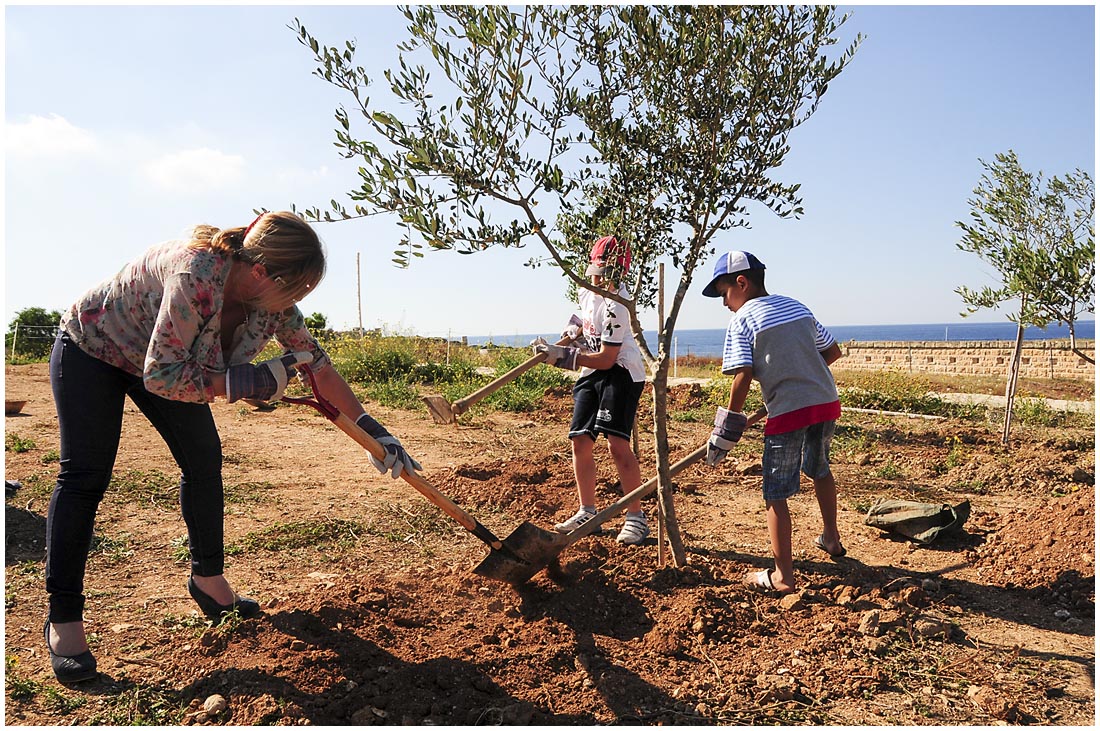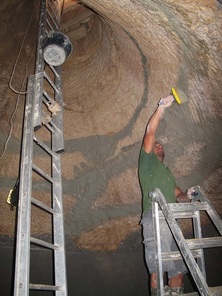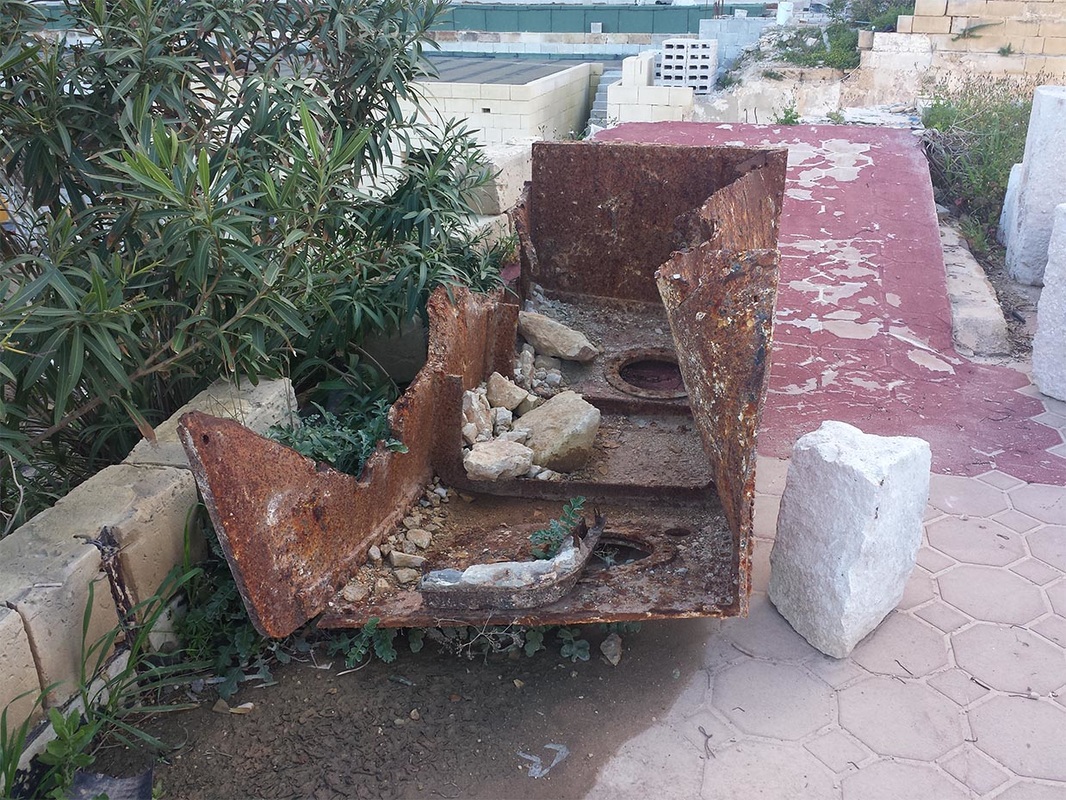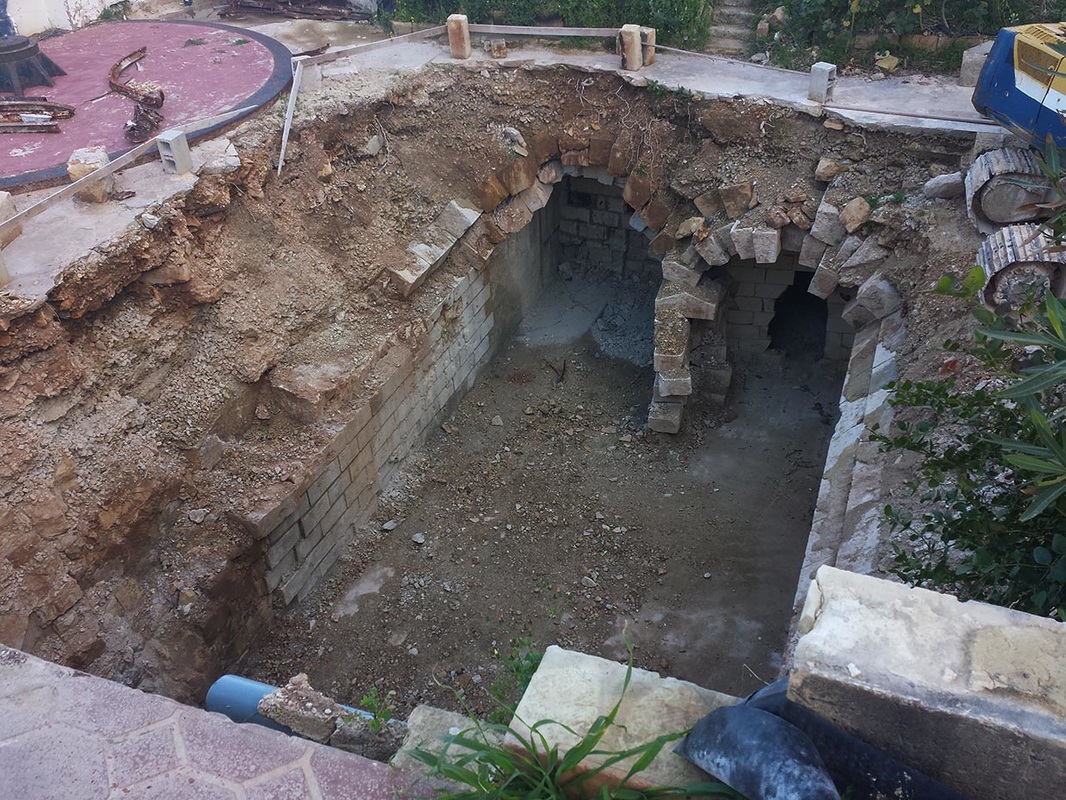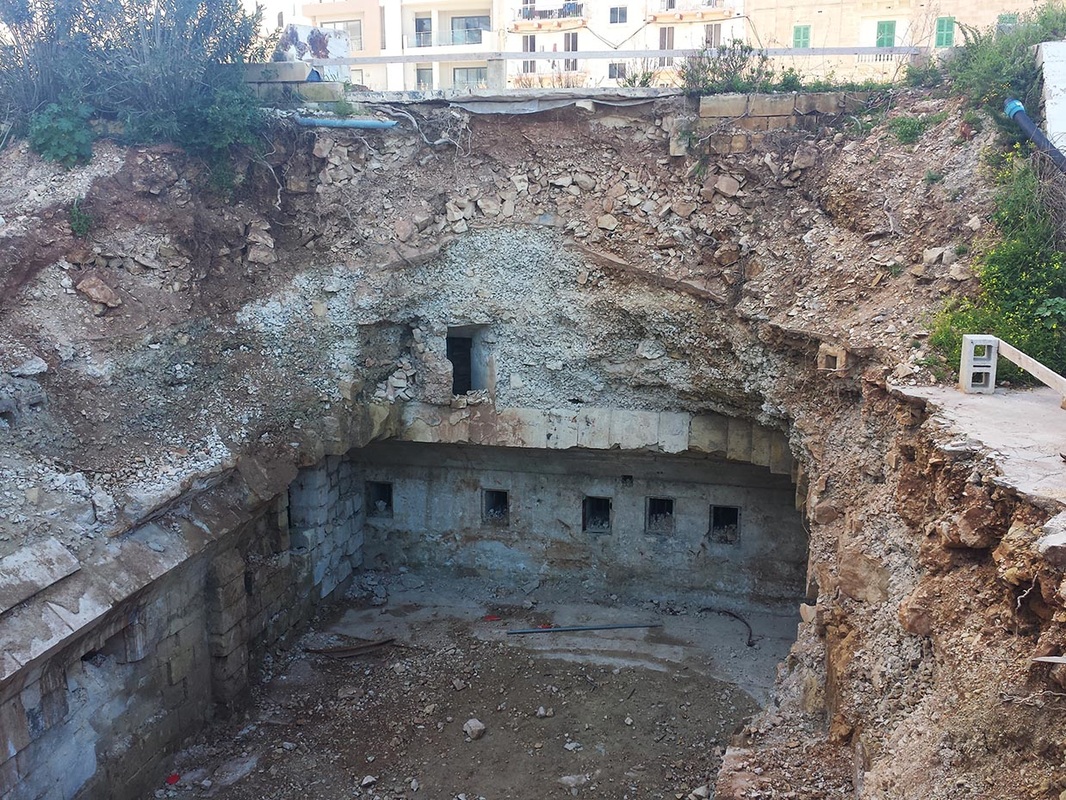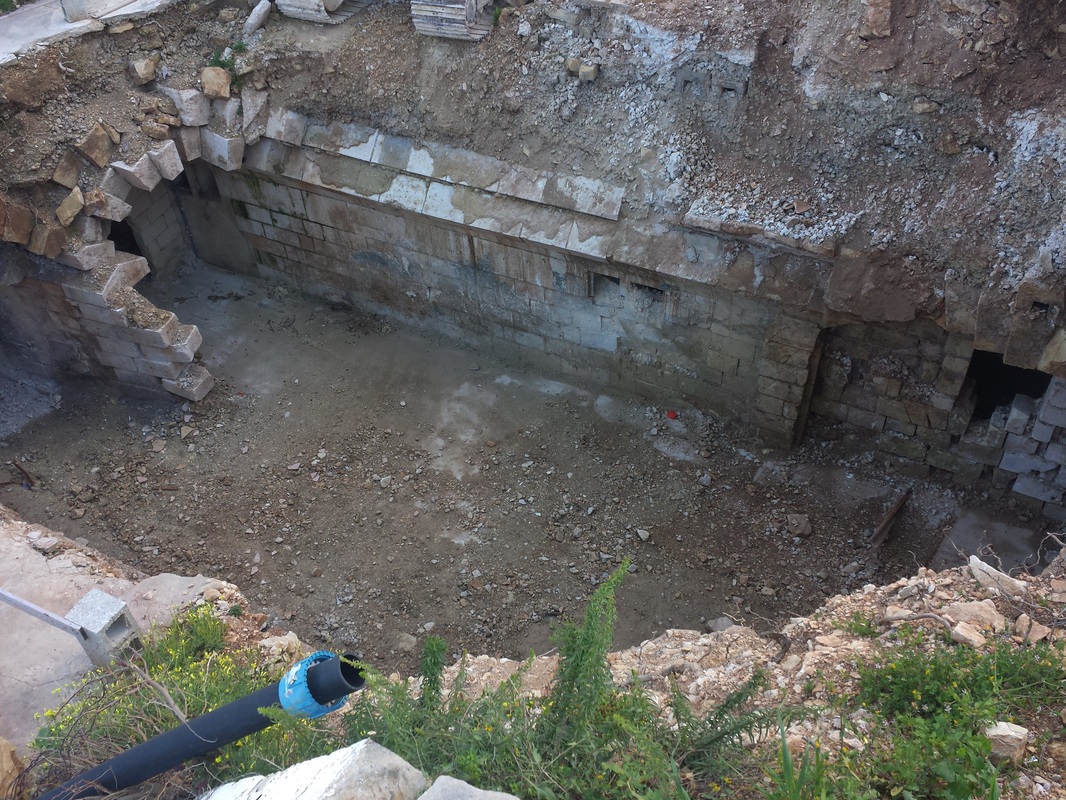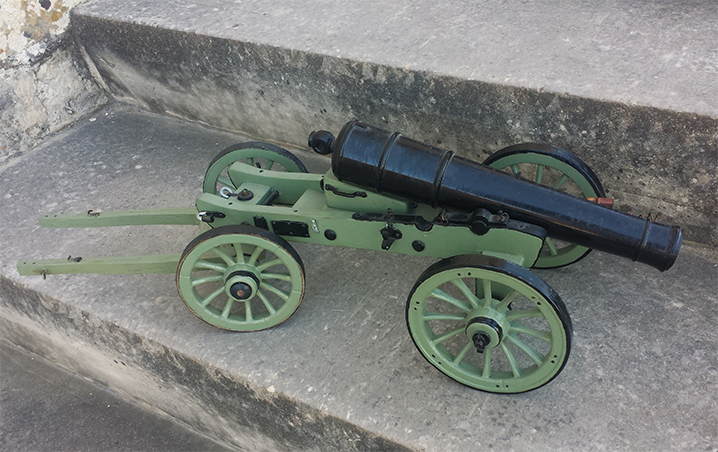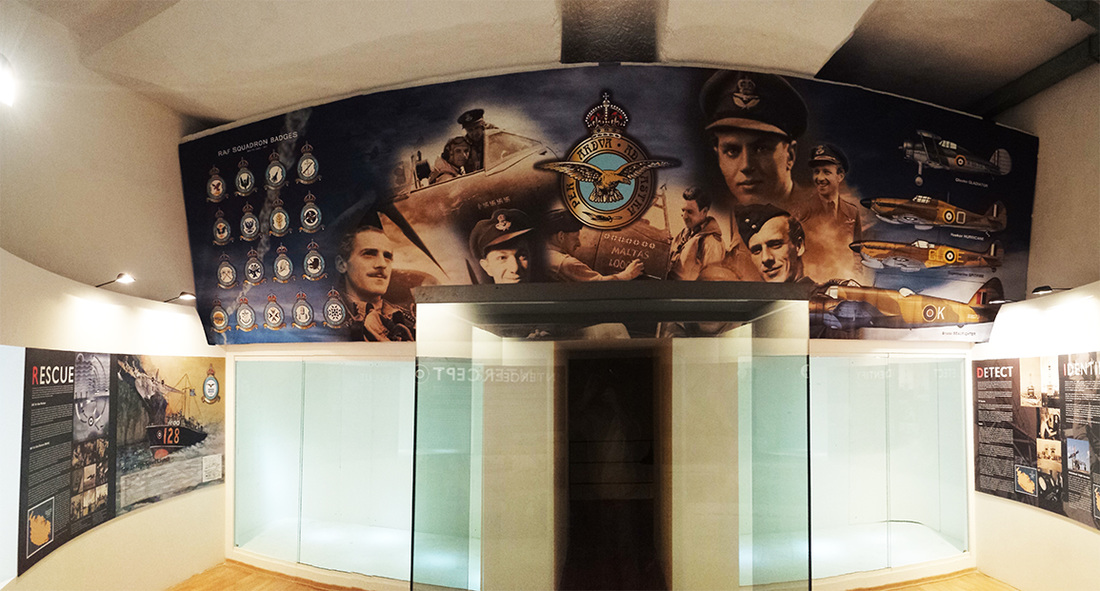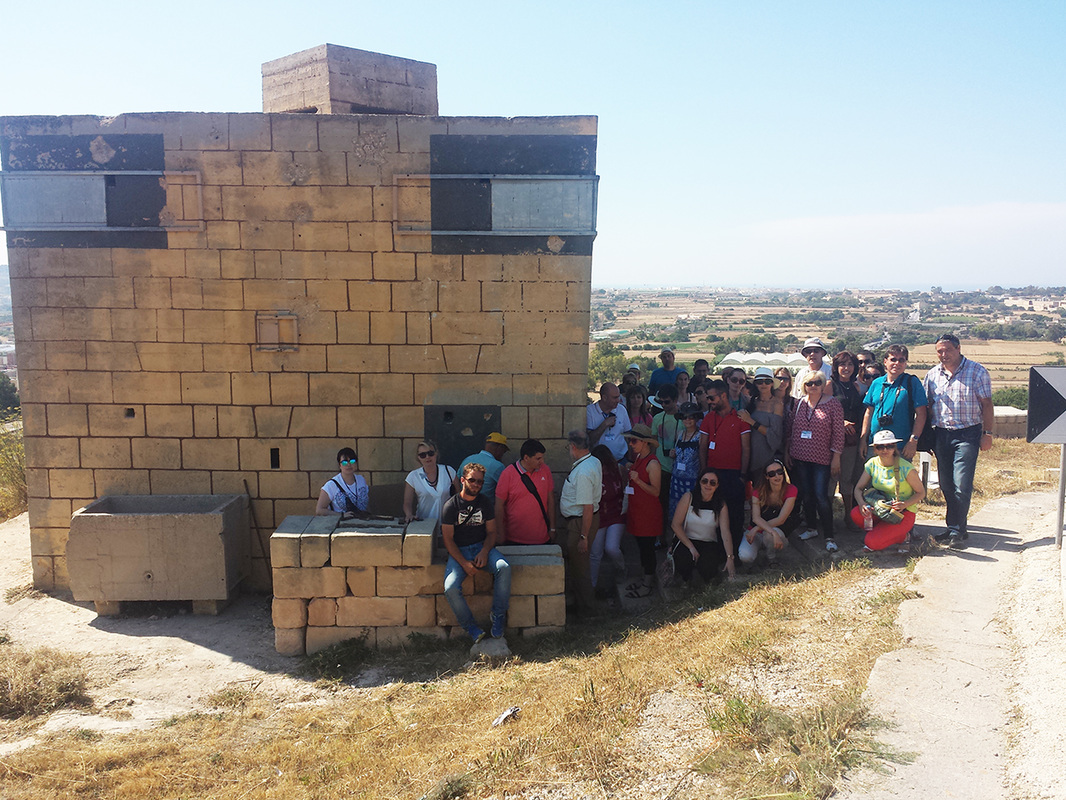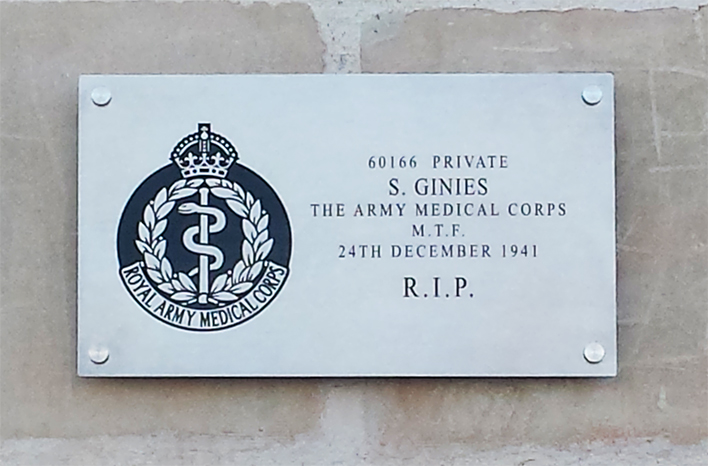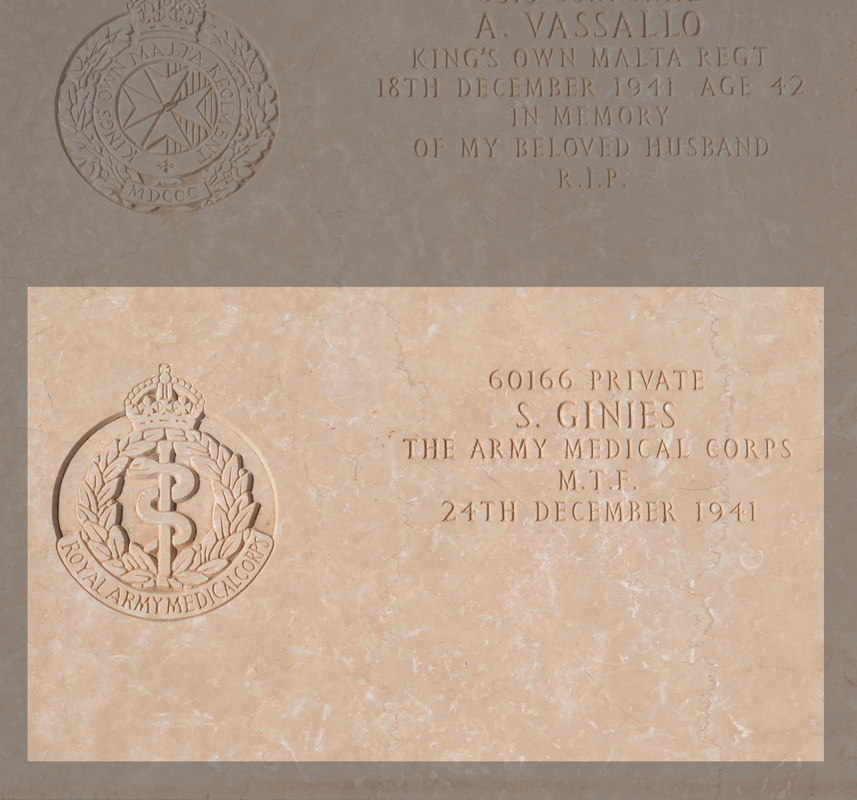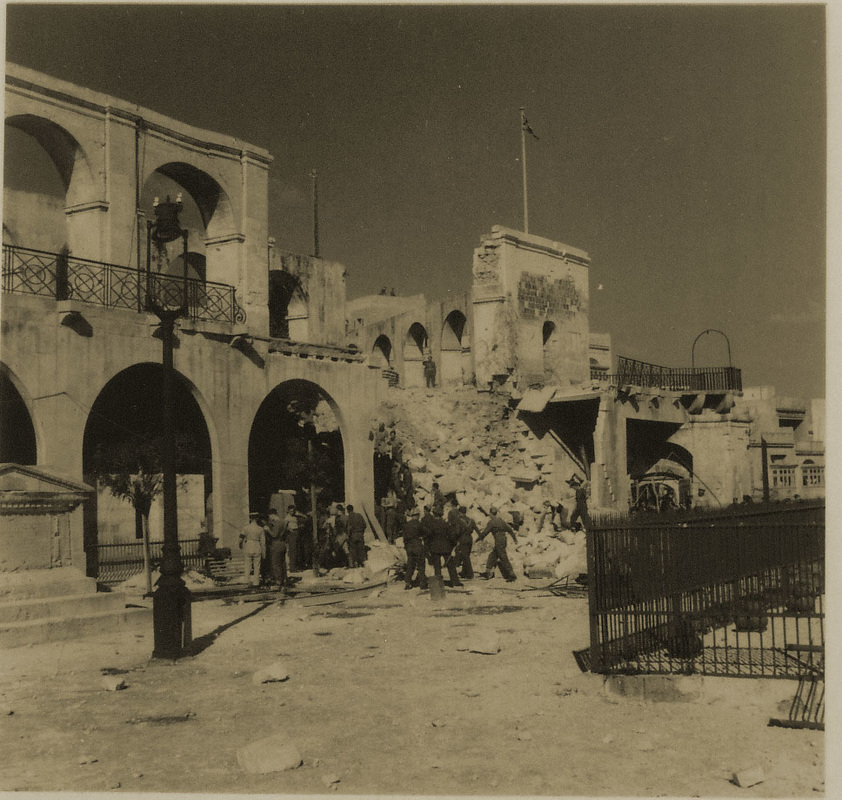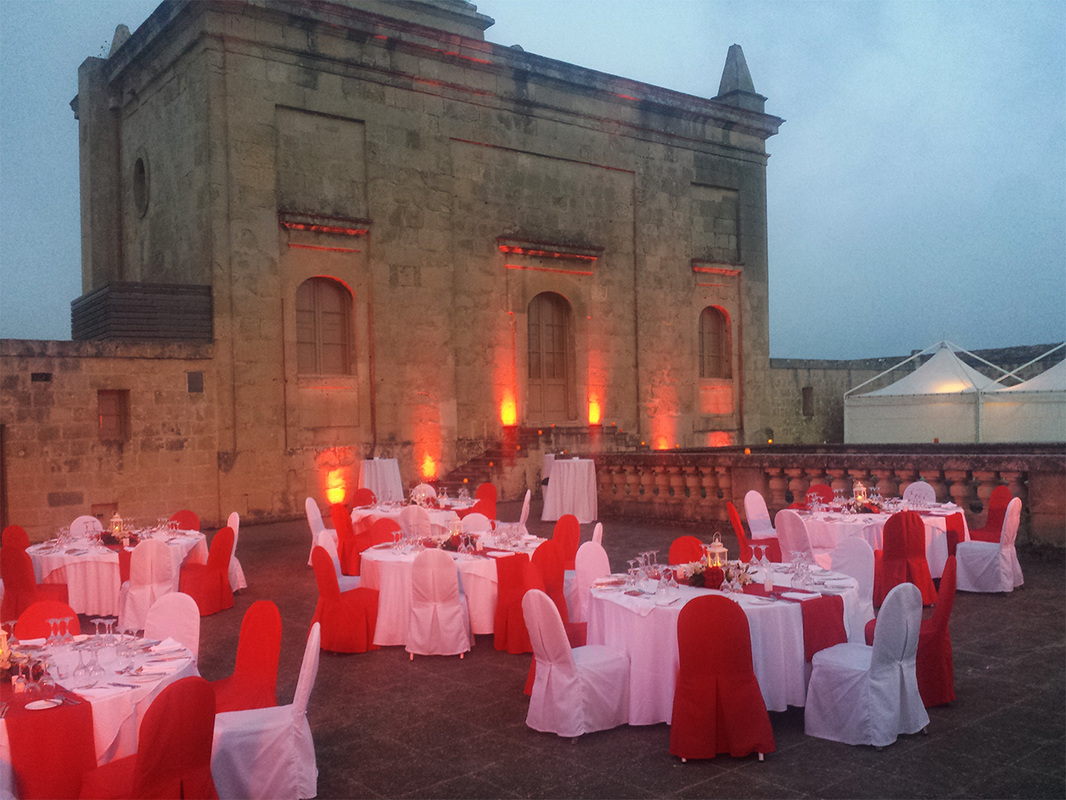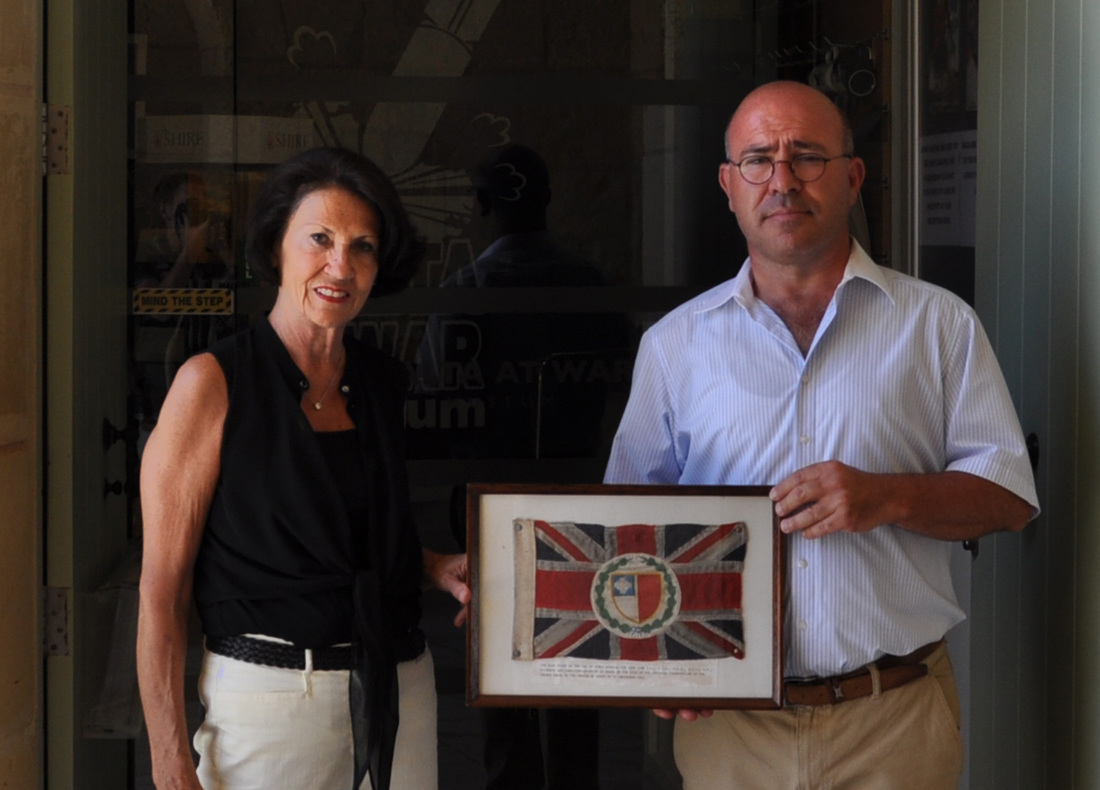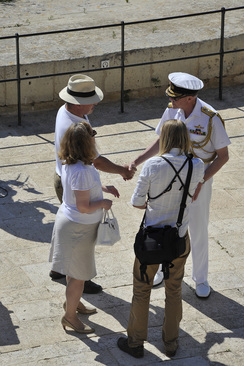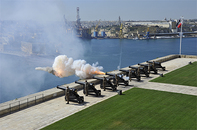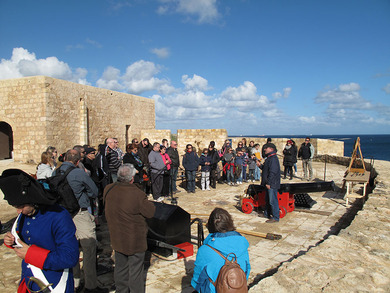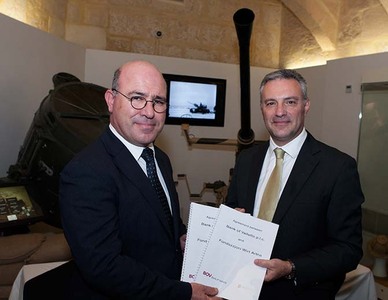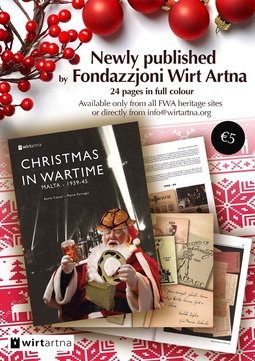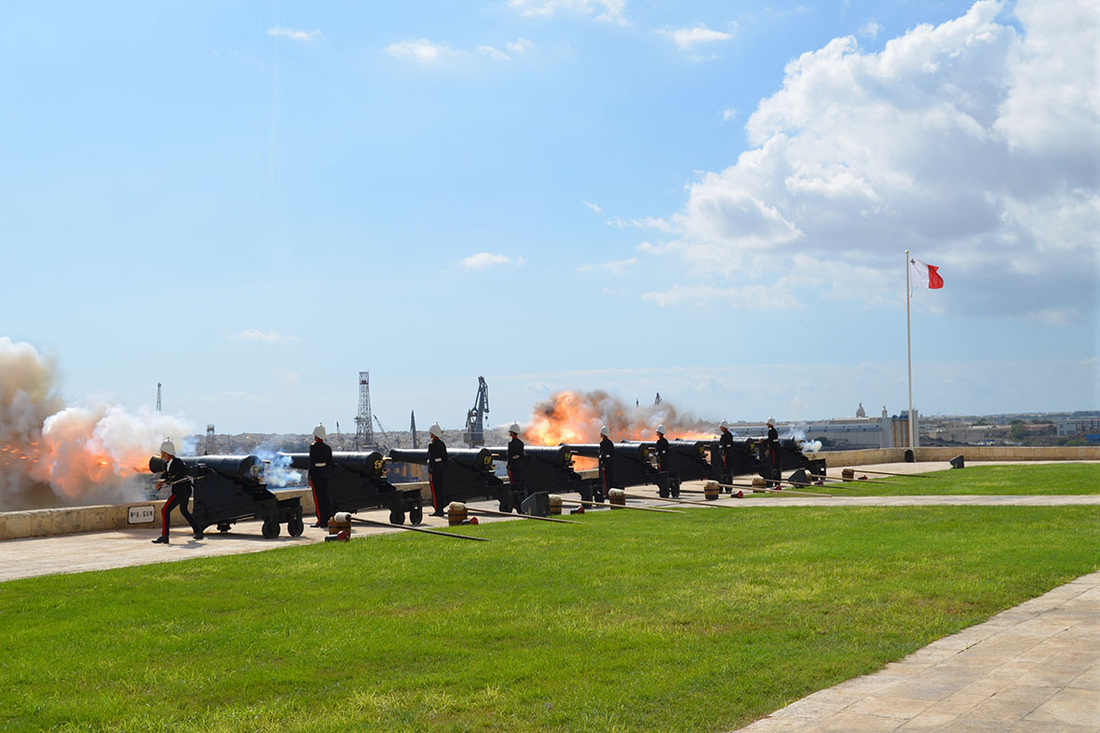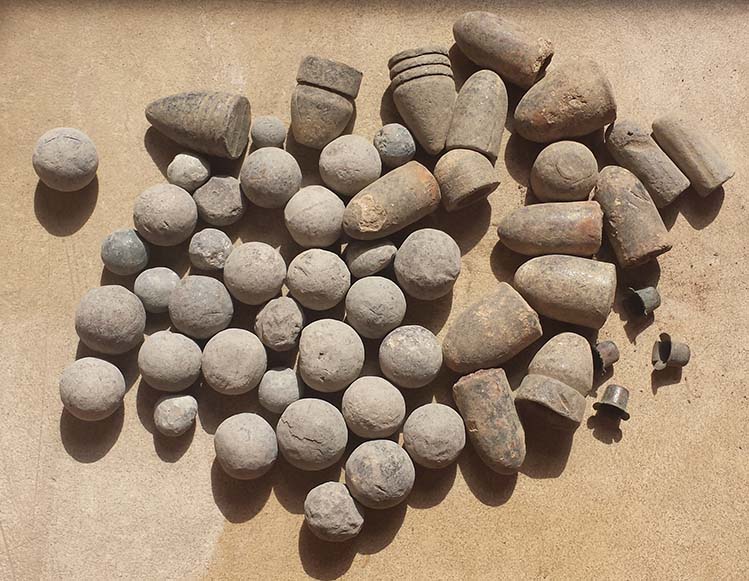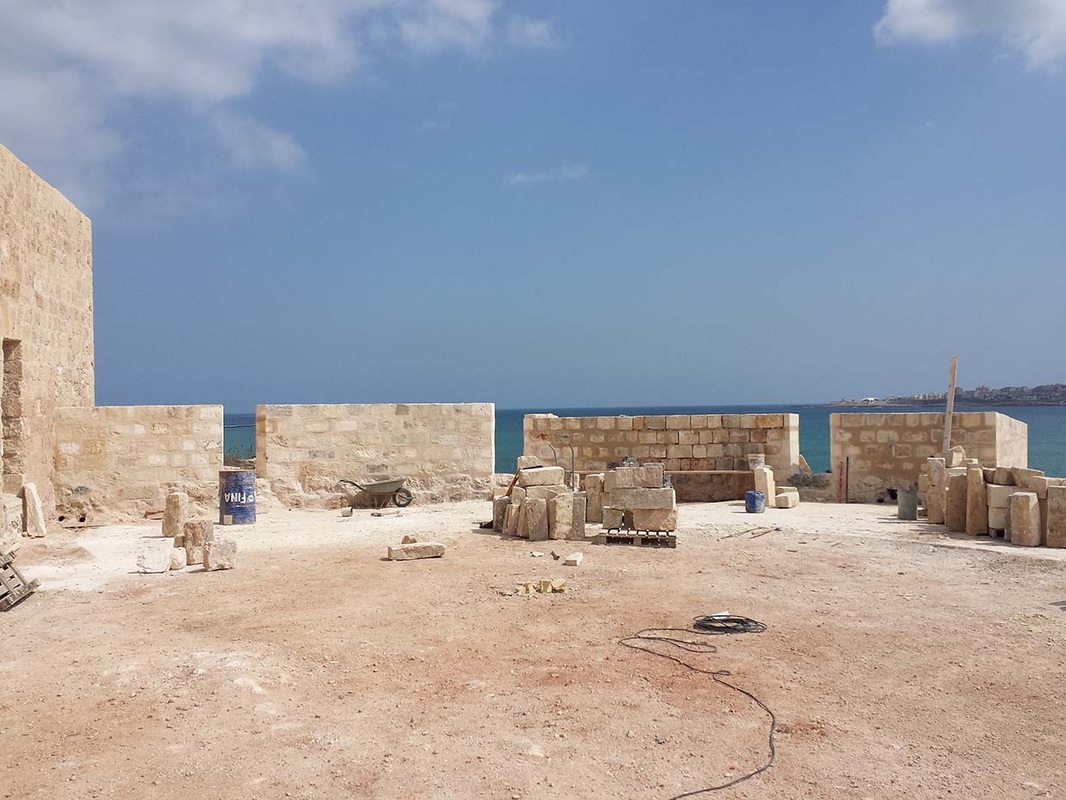Conservation News - Fort Rinella
|
Planting of more indigenous trees and shrubs has been resumed at Fondazzjoni Wirt Artna's Fort Rinella Nature and Heritage Park in Kalkara. The tree and shrub saplings were kindly donated by Ambient Malta and the supporting works and long-term maintenance of the same is being kindly supported by The Alfred Mizzi Foundation. More trees and shrubs are being added next week and the weeks following in addition to thousands of other which were planted by FWA over the past six years.
Fort Rinella is surrounded by about 8 tumoli of open land which consists of four fields and the fort's defensive killing ground. The tree planting is taking place in the former and not the latter as that is conserved in its barren state as originally intended by the military engineers. A good variety of species is being planted to encourage cross pollination and help foster a sustainable habitat. The Fort Rinella Nature and Heritage Park is home to all sorts of insects, snakes, vipers, frogs, shrews, bats, common country mouse and rats and chameleons. It also attracts a lot of birds. The tree mix includes almost all of the indigenous species found in Malta including fruit trees. Amongst these are olive trees which are annually harvested for olives which are pressed for oil and sold to sustain the park. Garden vegetables are also being grown on a small scale as an experiment. A small nursery is also planned to start propagating new saplings for more tree planting on site but also elsewhere. When completed the park will include a nature route, a heritage route, an educational services cabin for use by visiting school children and a pond for the growing of wet plants. this will compliment the overall visitor experience as witnessed at Fort Rinella and its upcoming Artillery Park also within the same grounds. Fondazzjoni Wirt Artna is hugely indebted to Ambjent Malta and The Alfred Mizzi Foundation for the current phase of planting taking place. Special thanks goes to Claudette Gambin from Ambjent Malta for her sound technical advice about the species to be planted and their siting. |
Latest Donation
|
A significant military personal archive belonging to Majors Anthony and Moses Caruana and Major Peter Farrugia, all Royal Malta Artillery officers, has kindly been donated to Fondazzjoni Wirt Artna by the Caruana family of Casal Paola. The archive consists of numerous original military correspondence, military certificates, manuals, exercise books, ledgers, invitations, death cards and photographs and covers the first 60 years of the 20th century It also includes a pristine 1916 khaki Wosleley pith helmet issued to Major Anthony Caruana when he joined the Royal Malta Artillery as a soldier boy during the inter-war period. There is also a lovely piece of soldiers' fret work commonly made by soldiers in the past. Included in the paperwork are unique instructions to be adopted by the Heavy Anti-aircraft Gun batteries for raid reporting to the Anti-aircraft Gun Operations Room at the Combined War H.Q. under the Upper Barracca.
The donated items were presented to FWA Chairman Mario Farrugia by John Caruana and Ray Cachia Zammit representing the Caruana family at the Malta at War Museum in Birgu. |
Armistice Day Commemorated at the Saluting Battery
|
Today, Fondazzjoni Wirt Artna marked Armistice Day – the cessation of hostilities on the Western Front of World War I at the "eleventh hour of the eleventh day of the eleventh month" of 1918 with a special ecumenical service and a two-minute-silence held at the Saluting Battery in Valletta. The ceremony was led by The Reverend Canon Simon Godfrey – Chancellor of St. Paul’s Anglican Cathedral.
A significant number of dignitaries and representatives of the Veterans’ Associations were involved. This year we also had a contingent from H.M.S. Albion which is currently in Malta and a number of men from the Royal Engineers. A number of school children from St Edward's College, Malta were present as well. At the 11th hour, a gun was fired to give start to a two-minute period of silence. Wreaths were then laid at the foot of the temporary cenotaph by their Excellencies and attending ex-servicemen associations. Fondazzjoni Wirt Artna wishes to thank the Armed Forces of Malta for the musicians, Corinthia Caterers for providing refreshments, and all participants. After the ceremony, the British High Commissioner H.E. Ms. Cathy Ward and Mr. Mario Farrugia unveiled the funerary monument of Colonel Henry Anderson Morshead. The grave was rededicated by Reverend Simon Godfrey. The full-scale architectural model of the missing part of Colonel Henry Anderson Morshead’s funerary monument has been reconstructed complete with its escutcheons and inscriptions. This is the result of Fondazzjoni Wirt Artna’s long-term commitment to rediscover and reconstruct Col. Henry Anderson Morshead’s funerary monument as part of its ambitious restoration of the Saluting Battery in Valletta to its former glory. |
|
Conservation News
|
Fondazzjoni Wirt Artna - the Malta Heritage Trust is pleased to announce that following a long period of careful study of Colonel Henry Anderson Morshead's funerary monument ruins at the Saluting Battery, Valletta it will be unveiling on situ a full-scale architectural model of the same in which its long missing upper part has been faithfully reconstructed.
The unveiling ceremony will take place immediately after the Armistice Day commemoration held at the Saluting Battery on Friday 11th November 2022 at 10.45 - 11.02hrs. On the same occasion the Reverend Canon Simon Godfrey, Chancellor, St.Paul's Pro Cathedral, Valletta will rededicate Col. Anderson Morshead's grave/crypt located under the monument. FWA plans to restore the remaining ruins and rebuild the missing part of the monument complete with its stone balustrade for which it is awaiting planning permission. Until such time the monument's model will remain on display at the Saluting Battery. The latter is the result of a combined effort between FWA's technical and historical researching teams and is funded by the Bank of Valletta plc.. |
Latest Donation
|
A beautiful wooden and highly artistic Royal Malta Artillery wall plaque was presented by Charlie Brown to Fondazzjoni Wirt Artna for display at its various military museums. The plaque is made from different types of wood includes a three dimensional representation of the RMA cap badge, collar grenades and formation patches worn by the regiment while serving as part of the British Army of the Rhine in Germany in the 1960s. It also includes a representation of Germany as divided between the Allies and the USSR during the Cold War along with the 1st Regiment flash. The plaque was made by Mr Brown as a tribute to the officers and men who had served in the regiment until its disbandment. It will be included in the part of the Malta Time-gun Museum dedicated to the Maltese Gunners which is set to open soon.
A brief presentation ceremony was held at the Saluting Battery in Valletta during which Mr Brown formally presented the plaque to Mario Farrugia, Chairman of Fondazzjoni Wirt Artna. For similar donations please contact Fondazzjoni Wirt Artna by sending an email: info@wirtartna.org |
Olive Picking Event at Fort Rinella
|
A most successful olive picking session was held this Saturday at the Fort Rinella Heritage & Nature Park in Kalkara with the help of a number of volunteers who generously answered FWA’s call for help. A total of 200kg of olives were collected in a few hours which is more than twice the yield of last year. This would produce some 20 litres of prime table olive oil which will be bottled and sold from the Fondazzjoni Wirt Artna’s museums to raise much needed funds for the upkeep of the heritage & nature park. The picked olives have already been delivered to the olive oil press and will be bottled and available for sale in two weeks’ time. It will be offered for sale on a first come first served basis like last year.
The event ended with refreshments and a guided tour of Fort Rinella. FWA wishes to thank all volunteers who have participated in this event. |
Exchange of Salutes - S.P.S. Gotheborg
|
Yesterday, Fondazzjoni Wirt Artna in collaboration with the Malta Tourism Authority held a rare exchange of maritime salutes between the Saluting Battery in Valletta and the visiting S.P.S. Götheborg sailing vessel. This event recreated a past maritime tradition when foreign visiting ships including armed merchantmen were required to discharge their loaded cannon outside the harbour in the form of salutes as a sign of their good intentions to which the fortress acknowledged the compliment with an equal number of blank rounds.
The SPS Götheborg III is a sailing replica of the Swedish East Indiaman Götheborg, launched in 1738 which sank off Gothenburg, Sweden, on 12 September 1745, while approaching the harbour on her return from a third voyage to China. Construction of the replica started in 1995, with the hull launched in 2003, and the rig fully tested for the first time in 2005. In 2008, Götheborg completed its first Baltic Sea Tour. The East Indiaman Götheborg is classified as a passenger ship sailing under the ordinary Swedish flag. It is the world's largest operational wooden sailing ship. |
21 National Gun Salute in Memory of H.M. Queen Elizabeth II
|
On the occasion of the state funeral of H.M. Queen Elizabeth II, Queen of the UK and former Queen of Malta (1964-74), the Armed Forces of Malta fired a 21-gun national salute from the Saluting Battery in Valletta. Given that this was an official state occasion the army Ordnance, field gun, Q.F. 25 Pdr Mark II on Mark I carriage were used in lieu of the eight 32-pdr Smooth Bore Breech Loading saluting guns which presently equip the battery.
It is to be said that this occasion was a historic event in itself in being the first occasion since 1952, the date of closure of the Saluting Battery, that a formal state ceremonial salute was fired by the Maltese army from the battery in Valletta. The guns used today were also the original ones which equipped the Saluting Battery between 1946 and 1952 and which remain in regular ceremonial use in the army. |
Full Gun Salute On Victory Day
|
Today Fondazzjoni Wirt Artna marked the feast of the 8th of September - Victory Day with a special event at the Saluting Battery culminating with a full-gun salute at midday.
8 Settembre/Victory Day marks the lifting of the Great Siege in 1565, the defeat of the French in 1800 and the surrender of Fascist Italy followed by the surrender of the Italian fleet in Malta in 1943. This event was very well attended by locals and tourists alike. |
Inauguration of the Third Window Exhibition
|
Today FONDAZZJONI WIRT ARTNA in collaboration with FONDAZZJONI KOTTONERA (Hon. Glenn Bedingfield) inaugurated the third window exhibition at the Malta at War Museum, Couvre Porte, Vittoriosa which is dedicated to Operation Pedestal - the Santa Marija Convoy on its 80th anniversary.
The window exhibition is designed to be viewed from outside the museum by passers-by and includes various original objects which have a direct connection with the historic convoy that has saved Malta and helped shift the balance in favour of the Allies in the Mediterranean in WW2. Amongst the objects on display are the medals and officers' Merchant Marine sword of Bill Richmond, third officer on board the merchant ship MV Rochester Castle; personal documents of Arthur Harvey Dadson, Quartermaster on board the MV Port Chalmers and the dress jacket of Captain Hugh Askey Corbett, CBE, DSO, DSE, First Lieutenant on HMS Lookout which was one of the Convoy escorts. The current window exhibition also includes two innovations on the previous editions namely the viewing of original film footage of the convoy and also an artefact trail inside the museum which offers further objects and information related to the theme. The exhibition can be viewed from Monday to Saturday between 10am and 5pm until October 2022. |
21-Gun Salute to Commemorate the 80th Anniversary of Operation Pedestal
|
Fondazzjoni Wirt Artna – the Malta Heritage Trust in conjunction with the NATIONAL FESTIVITIES COMMITTEE is pleased to inform the public that on the occasion of the 80th anniversary from the arrival of the Santa Marija Convoy – Operation Pedestal on 14/15th August 1942 a national gun salute will be fired to mark the historic occasion from the Saluting Battery in Valletta starting at 12.00hrs. The public is encouraged to attend.
This occasion is being held to mark the historic occasion and also to commemorate the 350-550 lives of British and Commonwealth seamen lost in this crucial operation which saved Malta from certain starvation and surrender in World War Two. |
Banif Bank Supports Fondazzjoni Wirt Artna
|
Banif Bank employees have very kindly selected FONDAZZJONI WIRT ARTNA – the Malta Heritage Trust as June’s recipient for the donation of personal funds to support a cause they truly believe in via the #YourCause initiative.
A short presentation as held today at the Saluting Battery in Valletta by Sandro Montebello, Head of Credit, BNF Bank and Mario Farrugia, Chairman FWA. FWA wishes to thank all BNF employees who have taken part in the noble initiative. This is not the first time that BNF Bank has supported FWA in its work in the cultural heritage conservation field. |
Latest Acquisition
|
Royal Observer Corps Insignia for display at the Lascaris War Rooms in Valletta. William Warwick a former ROC members has very kindly donated a small collection of Royal Observer Corps insignia for inclusion in our upcoming Malta Observer Corps display. The collection includes metal and fabric insignia. From top left: ROC brooch large (Oct 1929 – April 1941), ROC cap badge, ROC brooch large (1941 – 1952), ROC dress collars, WW2 ROC should title, WW2 ROC 12 Group (Bristol and Bath) shoulder identification number, WW2 Blue Spitfire 1st annual test badge, WW2 Chief observer’s rank badge, ROC brooch (1952 – 1996) and post war staybrite buttons (small and large).
Although the Royal Observer Corps had not served in Malta in WW2, a parallel home grown independent observer formation was raised in 1942 by former members of that corps to augment radar information with ground based visual one. It was found at the time that radar coverage began to falter once an aircraft approaching the island crossed an imaginary radius of 10 miles as taken from the centre of the Island. Furthermore, Gun Laying radar became confused when defending fighters got close to their prey something that was further complicated by the fact that not all friendly aircraft were yet equipped with Identification Friend or Foe transponders. The Malta Observer Corps formed part of RAf Fighter Operations and was controlled by the Senior Fighter Control Officer. Their officer-in-charge was Flying Officer John ‘Maxie’ Surman who also designed the 1943 RAF War Rooms at Lascaris. The unit consisted of 100 men mostly young male scout members who were serving as auxiliary volunteers with the signals and medical units. They had six observation stations at Palace Signal Tower (Valletta) later St. John’s Cavalier, Fort Tas-Silg, Għargħur Naval Signal Station, Dingli Naval Signal Station, Red Tower and Ċitadella Gozo. Each observation station was manend by a minimum of three men and equipped with powerful binoculars, an observers’ instrument known as Micklewaite height and direction finder, a telephone set and sometimes radio. Each post was dually linked with the RAF Filter Room and the Malta Observers’ Operations Room at Lascaris. The observers’ job was that of reporting any air and sea movements especially during raids. All information was fed in as plots for ease of plotting at both operation rooms. The information was checked and cross referenced with other available information in the Filter Room and if correct transmitted quickly to the Fighter Operations Room for plotting and action. |
The MOC wore a standard RAF uniform and had no distinctive insignia. It was stood down in a parade held at RAF Hal Far in 1944.
The Royal Observer Corps was formed in the UK in 1925 as part of the formation of an RAF command concerning the Air Defence of Great Britain. The ROC was to provide visual detection, identification, tracking and reporting of aircraft over Great Britain. In April 1941 it was awarded the title Royal by His Majesty King George VI in April 1941, in recognition of service carried out by Observer Corps personnel during the Battle of Britain. Throughout the remainder of the Second World War, the ROC continued to complement and at times replace the Chain Home defensive radar system by undertaking an inland aircraft tracking and reporting function, while Chain Home provided a predominantly coastal, long-range tracking and reporting system. With the advent of the Cold War, the ROC continued in its primary role of aircraft recognition and reporting, and in 1955 was allocated the additional task of detecting and reporting nuclear explosions and associated fall-out. The ROC wore a standard RAF uniform with its own insignia. It was disbanded in 1996. |
Conservation news
|
Fondazzjoni Wirt Artna has today joined various other history and heritage organisations in registering its written objection with the Planning Authority to planning application PA0435322 by Waste Serve Ltd. for the conservation, restoration of Romeo Romano Gardens at Santa Venera and the conversion of an existing structure into a catering establishment therein. FWA is objecting to the last part of the application concerning to the introduction of a catering establishment whilst approving and encouraging all genuine efforts to conserve and restore the Grade 1 scheduled baroque symmetrical garden. This garden is one of very few of its nature which remains largely intact as designed and its symmetry which is an intrinsic principle in baroque architecture including gardens should not be tempered with. FWA is also against the uprooting of any of the mature trees in this garden.
One can send his objection online using this link until the 5th August: https://www.pa.org.mt/en/representationform?CaseFullRef=PA/04353/22&SystemKey=261078&target= |
New Project at the Lascaris War Rooms
|
A new permanent display on the Royal Air Force’s Air Sea Rescue Service (ASR) in Malta during World War Two is currently being worked on at the Lascaris War Rooms. The new display is housed in part of the Filter Room’s plotters’ rest room which was altered after the war. It will feature original rescue equipment as used by RAF pilots during the war along with scale models of the different types of rescue launches and auxiliary-craft, documents, uniforms, medals and insignia.
The ASR was responsible from the rescue of downed airmen into the sea irrespective of whether they were friend or foe. They operated a fleet of very fast air sea rescue launches, auxiliary craft and flying boats from their main base at Kalafrana, St. Paul’s Bay and temporarily for the duration of the Allied invasion of Sicily, in 1943, at Sliema and Gozo (one launch each). The Air Sea Rescue Service was started from nothing in Malta early in the war since until the first part of 1940 no operational flying was conducted from the Island. It eventually developed into a first rate rescue service so much so that from 1944 onwards it took the responsibility for most ASR duties in the Mediterranean resulting in the enormous Malta Search and Rescue Region that Malta is responsible for today - an area comprising 250,000 Sq. km of water stretching from Tunisia to Greece. The choice of location right next to the RAF Filter Room is deliberate since ASR was coordinated from that room. |
Book Donation
|
Major John Stroud and Lieutenant Kayleigh Gelfo from the Armed Forces of Malta have presented copies of the newly published history of the Armed Forces of Malta to Mario Farrugia, Chairman of Fondazzjoni Wirt Artna. The richly presented book covers the history of the Armed Forces of Malta from its inception on 1st October 1970 as the Malta Land Force and its five decade long evolution into the present day versatile armed forces. This is the first every published work of its nature and comes out in time following the 50th anniversary from the formation of the force two years ago. Major Stroud and Lieut. Gelfo were tasked with the coordination of the book which not only records the history of the force but also offers a very detailed picture of it today. The donated books were deposited in FWA’s reference library held at its H.Q. housed in the 17th century gatehouse at Notre Dame Gate, Vitroriosa.
|
Important Addition
|
Mr Michael Cassar Torreggiani on behalf of the Cassar Torreggiani family has very kindly presented the original wartime brassard worn by Major-General Clifford Thomason Beckett who was Commander Royal Artillery, Malta between 5th May 1941 and 13th July 1942; Acting General Officer Commanding, Malta between 14th July 1942 and 4th August 1942 and Major-General Royal Artillery, Malta between 5th August 1942 and 28th December 1942. Beckett was born on 9th of November 1891 and died on 8th of July 1972. He joined the army in 1911 and retired in 1946.
The arm band comes with a hand written note by Michael’s father, Major Paul S. Cassar Torreggiani M.B.E., stating that the armband identified the office of the Senior Gunner Staff Officer in Malta during World War II. It belonged to the Commanding Royal Artillery (C.R.A.) in Malta during the period 1941 – 42. It came into his possession when he was acting as Beckett’s Personal Assistant during the war. Cloth armbands woven, stitched or printed were issued early in the war as a means of identification to servicemen or public officials and were to be worn at the sign of an emergency over civilian clothes. This example will be placed on display at the Lascaris war Rooms where Beckett had an office. |
Latest Donation
|
The Gill family have donated a 22nd Cheshire Regiment Tercentenary Commemoration Spode Plate to Fondazzjoni Wirt Artna. The plate belonged to their late father, Christopher Gills, born In Malta in 1921. At the age of 14yrs Christopher joined the Cheshire regiment as drummer boy. At 20 yrs old he returned to Malta as a British soldier, taking part in the defence of Malta during WW2.
The family wished to keep the Malta connection alive and decided to donate the plate to the MALTA AT WAR MUSEUM in Vittoriosa. The 22nd (Cheshire) Regiment was raised at Chester in 1689 as Colonel the Duke of Norfolk's Regiment of Foot. It was numbered 22nd Foot in 1751, to which Cheshire was added in 1782. On 5 September 1843, the 22nd Foot was granted permission to bear the word Scinde on its Regimental Colour in commemoration of its actions in the campaign against the Ameera of Scinde in the early part of 1843. On 1 July 1881, the Cardwell Reforms dropped regimental numbers from regimental designations and The 22nd (Cheshire) Regiment of Foot became The 1st Battalion The Cheshire Regiment. The 2nd Battalion was at Dunkirk, North Africa and Italy before returning to be part of the initial landing at Normandy. The 1st Battalion was in North Africa and Malta during the siege and finally in NW Europe. The 6th and 7th Battalions fought in Italy. The Cheshire Regiment bears on its Colours the Battle Honour Malta 1941—42. The 22nd (Cheshire) Regiment arrived in Malta from Egypt on 21st February 1941. The Battalion took over positions across the island, but the longest stay was by B Company, who from 1st April 1941 took over responsibility for the defence of the Royal Navy Dockyard and continued in this role until 23rd January 1943. On the 17th February 1943, the eight-pointed star of the Cheshire Regiment was unveiled at the Dockyard in Vittoriosa. B Company was renamed B 'Malta' Company, in honour of their achievements during the siege. In the 1970s, the regimental badge was removed during the construction of the Red China Dock. It was re-located in Fort St Elmo. |
Latest Donation
|
Four 3.7 Inch Shells have been donated to Fondazzjoni Wirt Artna by Arthur, Stephen and Cindy Dutton. The shells belonged to their late father, Alfred Dutton who lived in Floriana during WW2. Alfred was an avid collector of WW2 memorabilia particularly war medals and other related artefacts.
The QF 3.7-inch AA was Britain's primary heavy anti-aircraft gun during World War II. It was roughly the equivalent of the German Flak 8.8 cm and American 90 mm, but with a slightly larger calibre of 3.7 inches, approximately 94 mm. Production began in 1937 and it was used throughout World War II in all theatres except the Eastern Front. It remained in use after the war until AA guns were replaced by guided missiles beginning in 1957. |
VIP Visit at the Lascaris War Rooms
|
This afternoon, Fondazzjoni Wirt Artna had the pleasure of welcoming Mrs. Elizabeth Jones and her son to the war rooms.
Elizabeth, who served as a WREN, used to work with N.A.T.O. in the Communications Centre (COMCEN) at the war rooms between 1967-68. After the war, Malta became one of the largest and most popular oversea postings for WRENS, with the majority infact working within the COMCEN at the War H.Q. During her first visit back to the war rooms since her service years, Elizabeth was able to take an emotional trip down memory lane, speaking to our staff about her treasured memories of the war rooms and Malta. If you, or any relatives, have any connections to the war rooms, please get in touch with us on Facebook messenger or by email at info@wirtartna.org |
Latest Donation
|
Interesting encounter this afternoon with Louis Fsadni who has kindly donated to Fondazzjoni Wirt Artna a copy of his new book about the history of the St. George's Football Club at Bormla. The book include several photographs and other material on the subject from FWA's archive. On the same occasion, Louis has also donated an original receipt made to his father during WW2 for the excavation of a private air raid shelter at what was then Coronation Gardens in the Vittoriosa Main Ditch. This will be immediately added to the display on air arid shelters at the Malta at War Museum which is located but a very short distance away from the air raid shelters excavated for the Fsadni family in the war.
|
Conservation News
The full-scale maquette of Colonel Henry Anderson Morshead's funerary monument which remained at the Saluting Battery until the 1950s before being mysteriously dismantled is now in its final stages of completion. If all goes well it will be installed on site in the next fortnight. A history of this monument and a biography of Colonel Henry Anderson Morshead who was Commander Royal Engineer between 1829 and 1831 and who died as Acting Lieutenant Governor on 11 November 1831 is also being prepared. The maquette has made it possible to reconstruct the monument to its smallest detail given that the original working drawings were not found. This will be followed with the monument's reconstruction in stone and marble as the original structure. The finished monument in stone will be complete with its highly ornamental balustrade enclosure. More on this project soon.
80th Anniversary From The Award of the George Cross to Malta
A commemoration service to mark the 80th anniversary from the award of the George Cross by H.M. King George VI to Malta was held jointly by Fondazzjoni Wirt Artna and the George Cross island Association (G.C.I.A.) at the Saluting Battery, Valletta on Monday 18th April 2022 starting at 11.00hrs under the auspices of His Excellency Dr George Vella, President of the Republic of Malta.
This event was attended by members of the diplomatic corps, the Armed Forces of Malta, the Malta Police Force, and the veterans' associations.
This event was attended by members of the diplomatic corps, the Armed Forces of Malta, the Malta Police Force, and the veterans' associations.
Latest Donation
|
Today was a red letter day at the Lascaris War Rooms as David Surman, son of Flight Lieutenant Maxie Surman, RAF - the person tasked with the planning and design of the Lascaris War Rooms by Air Officer Commanding, Malta Sir Keith Park in 1942/43 visited the war rooms in Valletta. He was met by Mario Farrugia, FWA Chairman; James Hamberger, Keeper of the War Rooms; Umberto Ruggiero and other FWA staff and volunteers. Mr Surman was shown round the underground complex and was taken to the room which in WW2 housed his late father’s office as O.C. RAF Observers (Malta). At the end of his visit Mr Surman donated to Fondazzjoni Wirt Artna his father’s unique archive concerning his role in the completion of the War Rooms and the formation of the RAF Observer Corps in 1942, his war medals and his cap badge.
Flight Lieutenant Surman’s archive consists of a rich collection of wartime photographs of the RAF part of the War Rooms, a collection of photographs, paraphernalia and an MSS history of the RAF Observer Corps in Malta written by one of its Maltese members in 1946, various correspondence related to the war rooms project, his letter of appointment as Flight Lieutenant , a copy of his wife’s photograph which he kept framed in his office in the war rooms and various other items of direct interest to the war rooms project. This archive will now make it possible to FWA to further improve the state of the war rooms. This donation was very well timed as FWA is currently working on a new museum display at the War Rooms on the RAF Observers (Malta) in WW2 who formed an integral part of the enemy reporting system which fed the RAF Filter Room and were present in the RAF Fighter Operations Room first under the Upper Barracca Tunnels and later at Lascaris. A good part of Flt. Lt. Surman’s war items including his medals are to be included in this display. Mr Surman was accompanied by Ms Sue Hudson and a common friend. Note: For similar donations please contact us by sending an email: info@wirtartna.org. All donations are duly acknowledge and placed on regular display. |
80th Anniversary From the 2,000th Axis Air Raid on Malta
Today the 7th April 2022 marks the 80th anniversary from the 2,000th Axis air raid on Malta and the heaviest one of the war until then – 7th April 1942. It is also the anniversary of when the grand Royal Opera House and the Auberges de France, d’Auverne and d’Italie in Valletta were completely destroyed or damaged. On that fateful day, swarms of enemy bombers took of from Sicilian aerodromes on their way to bomb the island from the air. The raiders came in thick waves amounting to hundreds of bombers and fighter bombers escorted by fighter planes.
The attack lasted for most of the day at the end of which some 280 tons of bombs were dropped resulting in 70% of all housing in Valletta and Floriana demolished or damaged. Despite the ferocity of the occasion the number of civilian victims was low at 13. This was thanks to the excellent rock hewn air raid shelters and the discipline observed by most of the population during air raids.
Eight days later H.M. King George VI bestowed on the Maltese and their defenders the highest civilian award by the British government - the George Cross to “bear witness to a heroism and devotion that will long be famous in history”.
The attack lasted for most of the day at the end of which some 280 tons of bombs were dropped resulting in 70% of all housing in Valletta and Floriana demolished or damaged. Despite the ferocity of the occasion the number of civilian victims was low at 13. This was thanks to the excellent rock hewn air raid shelters and the discipline observed by most of the population during air raids.
Eight days later H.M. King George VI bestowed on the Maltese and their defenders the highest civilian award by the British government - the George Cross to “bear witness to a heroism and devotion that will long be famous in history”.
The Saluting Battery Fires a 21-Gun Salute
|
Fondazzjoni Wirt Artna – the Malta Heritage Trust fired a 21 gun salute in honour of His Holiness the Pope on the occasion of his visit at the Grand Harbour on Saturday 2nd April 2022.
A 21 gun salute is reserved to honour monarchs and heads of state. The custom stems from naval tradition in the sixteenth century, when a warship entering a foreign port would fire each of its cannons while still out of range of targets. Since cannons then required a considerable time to reload, the ship was effectively disarmed, signifying the lack of hostile intent. In the earliest days, seven guns was the recognized British national salute because seven was the standard number of weapons on a vessel. The early regulations stated that although a ship would fire only seven guns, the forts ashore would fire three shots to each one shot afloat, hence the number 21. Odd numbers were chosen, as even numbers indicated a death. |
New Aquisition
An original British Lewis Light Machine Gun has been added to WW2 small arms display at Fondazzjoni Wirt Artna’s Malta at War Museum at Couvre Porte, Vittoriosa. This type of gun was widely used in the Second World War in Malta by the three fighting branches of the British Armed Forces as armament mounted in the hundreds of beach, defence, and reserve posts and anti-aircraft sangars.
The Lewis gun was privately designed by the US Army Colonel Isaac N. Lewis basing his work on initial attempts by Dr Samuel N. Mc Clean who originally envisioned a different water cooled gun. Colonel Lewis’ end result was a simpler air-cooled design. It was mass produced in the United Kingdom by the British Small Arms BSA as from 1914 for use by the British, dominion and colonial forces. A smaller number was purchased by Belgium. It saw extensive use in the First World War were it was used in different roles including as aircraft armament. It went on in continuous use until the Korean War in 1953 although by the latter half of the Second World War it was increasingly replaced by the more modern Bren Gun.
Today very few examples survive in good condition and as a result it is a much sought-after relic by museums and collectors. Fondazzjoni Wirt Artna is particularly grateful to the many visitors to the museum who have donated funds to make this acquisition possible.
Specifications
Mass: 28 pounds (13 kg)
Length: 50.5 inches (1,280 mm)
Barrel length: 26.5 inches (670 mm)
Width: 4.5 inches (110 mm)
Cartridge: .303 British
Action: Gas-operated long stroke gas piston, rotating open bolt
Rate of fire: 500–600 rounds/min
Muzzle velocity: 2,440 feet per second (740 m/s)
Effective firing range: 880 yards (800 m)
Maximum firing range: 3,500 yards (3,200 m)
Feed system: 47- or 97-round pan magazine
Sights: Blade and tangent leaf
The Lewis gun was privately designed by the US Army Colonel Isaac N. Lewis basing his work on initial attempts by Dr Samuel N. Mc Clean who originally envisioned a different water cooled gun. Colonel Lewis’ end result was a simpler air-cooled design. It was mass produced in the United Kingdom by the British Small Arms BSA as from 1914 for use by the British, dominion and colonial forces. A smaller number was purchased by Belgium. It saw extensive use in the First World War were it was used in different roles including as aircraft armament. It went on in continuous use until the Korean War in 1953 although by the latter half of the Second World War it was increasingly replaced by the more modern Bren Gun.
Today very few examples survive in good condition and as a result it is a much sought-after relic by museums and collectors. Fondazzjoni Wirt Artna is particularly grateful to the many visitors to the museum who have donated funds to make this acquisition possible.
Specifications
Mass: 28 pounds (13 kg)
Length: 50.5 inches (1,280 mm)
Barrel length: 26.5 inches (670 mm)
Width: 4.5 inches (110 mm)
Cartridge: .303 British
Action: Gas-operated long stroke gas piston, rotating open bolt
Rate of fire: 500–600 rounds/min
Muzzle velocity: 2,440 feet per second (740 m/s)
Effective firing range: 880 yards (800 m)
Maximum firing range: 3,500 yards (3,200 m)
Feed system: 47- or 97-round pan magazine
Sights: Blade and tangent leaf
Works at the Fort Rinella's nature park resume
Following the long hiatus forced on its actives by the global pandemic, Fondazzjoni Wirt Artna – the Malta Heritage Trust is pleased to announce that it is resuming work on the formation of a nature park around Fort Rinella in Kalkara. Over the past days some parts of the large expanse around Fort Rinella have been de-weeded while other parts were intentionally left with the weeds to promote the area’s rich biodiversity; hundreds of olive trees were pruned, hedges cut to size and 150 rosemary shrubs planted. Work is currently at hand to prepare an area for the planting of more trees in the next fortnight. This time a mix of local oak, almond, olive, carob, pistacchio and araar trees will be planted. Throughout the pandemic FWA maintained round the clock watering and basic maintenance of the park to ensure that none of the trees and shrubs died.
The rosemary shrubs planted today were kindly provided by Parks Malta.
The rosemary shrubs planted today were kindly provided by Parks Malta.
Special Firing of the Noon Day Gun
This week, Fondazzjoni Wirt Artna will be hosting personnel from the 16th Regiment Royal Artillery who are here in Malta to study the Air Defence procedures and systems of the island during WWII. Whilst in Malta 2nd Lieutenant Munro-Smith was invited by Fondazzjoni Wirt Artna to fire the noon-day gun at the Saluting Battery, Valletta. For a long period of time, Malta's fortunes were inextricably linked to those of the United Kingdom and events such as these continue to strengthen the important and longstanding relationship between the UK and Malta.
This group will be visiting Fondazzjoni Wirt Artna’s various museums and attractions, mainly, the Saluting Battery, the War HQ Tunnels, the Lascaris War Rooms and Fort Rinella.
This group will be visiting Fondazzjoni Wirt Artna’s various museums and attractions, mainly, the Saluting Battery, the War HQ Tunnels, the Lascaris War Rooms and Fort Rinella.
St Paul's Day Full-Gun Salute
The guns at the Saluting Battery were fired at noon today to mark the feast of St Paul's Shipwreck. This tradition dates back to the times of the Order of Saint John in Malta and the holding of such events form part of Fondazzjoni Wirt Artna’s efforts to revive long-lost traditions.
Colonel Henry Anderson Morshead sepulchral memorial at the Saluting Battery
|
Now that the Christmas and New Year festivities are over work has resumed on the full-scale maquette of the Colonel Henry Anderson Morshead sepulchral memorial at the Saluting Battery. Some very significant findings were made in the last few days covering its ornamental detail by which we now have 98% of all the necessary information to be able to reconstruct the missing parts of the monument which were unceremoniously dismantled and lost in the 1960s. At this rate the maquette is to be completed in the next two weeks after which it will be installed in the void of the surviving part of the monument's plinth where it will remain until the stone and marble replacement is completed.
|
Conservation News
|
This week Fondazzjoni Wirt Artna has embarked on a new exciting project which will see a long lost historic monument returned like a phoenix. For this purpose a full-scale model is being built to allow us to establish its exact architectural proportions and ornamental detailing given that its original plans were not found. For the time being no more will be said about it to allow our readers to guess which monument this involves.
|
Conservation News
A quick visit to the Saluting Battery in Valletta will soon make one notice that the 64-pdr carriages are currently being re-painted in a paler shade of grey than the one used before which was the standard British Army lead-grey used in the painting of wooden gun carriages. This exercise is the result of a lengthy process of historical research aimed at locating the exact shade of paint used in this process.
The new lighter shade consists of one part black mixed with 20 parts of white which in Victorian times and even earlier would have been lamp black powder mixed with white zinc oxide and linseed oil refined with turpentine. For the sake of uniformity army paint was as far as possible supplied ready mixed by the Ordnance Department. But in cases where this was not possible artillery officers were supplied with the correct formula for them to mix or source from local sources.
The lighter shade of grey was used by the British Army in temperate climates like that of Malta to protect wooden gun carriages and vehicles from the baking effects of the sun. It also blended well with the lighter colour of the stone surroundings. Otherwise artillery carriages were painted in a darker shade as was the case until the present at the Saluting Battery and which is now rectified.
The new lighter shade consists of one part black mixed with 20 parts of white which in Victorian times and even earlier would have been lamp black powder mixed with white zinc oxide and linseed oil refined with turpentine. For the sake of uniformity army paint was as far as possible supplied ready mixed by the Ordnance Department. But in cases where this was not possible artillery officers were supplied with the correct formula for them to mix or source from local sources.
The lighter shade of grey was used by the British Army in temperate climates like that of Malta to protect wooden gun carriages and vehicles from the baking effects of the sun. It also blended well with the lighter colour of the stone surroundings. Otherwise artillery carriages were painted in a darker shade as was the case until the present at the Saluting Battery and which is now rectified.
Artefact Donation
A lovely wartime publication titled “Knitting for the Royal Air Force” was donated to Fondazzjoni Wirt Artna by Michael Gough, one of our guides at the Lascaris War Rooms in Valletta for display at our museums. The book was published in 1939 by the Royal Air Force Comforts Committee of 20, Berkley Square, London W1as guidance to civilians wishing to help in the war effort by knitting items of clothing for use by members of the Royal Air Force. The book provides the knitter with the correct RAF and WAAF patterns to follow as non-pattern clothing was not allowed to be worn by servicemen and women.
The book belonged to Michael’s paternal aunt Hilda Margaret Gough known as Meg sister to Michael’s father Wing Commander Vincent Gough who was Officer i/c Administration at RAF Luqa in the late 1960’s. Michael is himself an ex-RAF man with a Malta connection. Between 1972 and 1975 he was stationed in Malta with the Royal Air Force as an SAC Supplier. He married at RAF Luqa in 1973 at what is now the Armed Forces Chapel which was then part of 2 Site RAF Luqa.
For similar donations please contact us on info@wirtartna.org
The book belonged to Michael’s paternal aunt Hilda Margaret Gough known as Meg sister to Michael’s father Wing Commander Vincent Gough who was Officer i/c Administration at RAF Luqa in the late 1960’s. Michael is himself an ex-RAF man with a Malta connection. Between 1972 and 1975 he was stationed in Malta with the Royal Air Force as an SAC Supplier. He married at RAF Luqa in 1973 at what is now the Armed Forces Chapel which was then part of 2 Site RAF Luqa.
For similar donations please contact us on info@wirtartna.org
Armistice Day Commemorated at the Saluting Battery, Valletta
Today, Fondazzjoni Wirt Artna marked Armistice Day - the day when World War I ended on the 11th November 1918 with a special ecumenical service and a two-minute-silence held at the Saluting Battery in Valletta. The ceremony was led by The Reverend Canon Simon Godfrey – Chancellor of St. Paul’s Anglican Cathedral.
Owing to the COVID-19 pandemic and in the light of the risks posed, this years’ annual Armistice Day Commemoration on the 11th of November was not open to the general public. Instead, only a limited number of invited guests, including dignitaries and representatives of the Veterans’ Associations, were involved in a shortened ceremony at the Saluting Battery, Valletta.
At the 11th hour, a gun was fired to give a start to a two-minute period of silence. Wreaths were then laid at the foot of the temporary cenotaph by their Excellencies and attending ex-servicemen associations.
Fondazzjoni Wirt Artna wishes to thank the Armed Forces of Malta for the musicians, Corinthia Caterers for providing refreshments and all participants.
Owing to the COVID-19 pandemic and in the light of the risks posed, this years’ annual Armistice Day Commemoration on the 11th of November was not open to the general public. Instead, only a limited number of invited guests, including dignitaries and representatives of the Veterans’ Associations, were involved in a shortened ceremony at the Saluting Battery, Valletta.
At the 11th hour, a gun was fired to give a start to a two-minute period of silence. Wreaths were then laid at the foot of the temporary cenotaph by their Excellencies and attending ex-servicemen associations.
Fondazzjoni Wirt Artna wishes to thank the Armed Forces of Malta for the musicians, Corinthia Caterers for providing refreshments and all participants.
Artefact Donation
A complete post-war Royal Navy Chief Petty Officer’s winter uniform belonging to the late Chief Petty Officer Philip Fairnington-Graham was donated to Fondazzjoni Wirt Artna. Fairnington-Graham joined the Royal Navy at the young age of 16 years as a boy at HMS Ganges shore establishment in Ipswich in 1945. He went on serving until 1963 reaching the rank of Chief Petty Officer. Fairnington-Graham was posted to Malta in 1959 joining HMS Falcon, the Fleet Air Arm airfield at Hal Far where he served as C.P.O. Stores until 1961. During this period he was joined by his family and had a son – Nicholas born at Mtarfa - the donor of the uniform. Mr Nicholas Fairnington-Graham donated the uniform in memory of his father on behalf of his family to Mario Farrugia, Chairman of Fondazzjoni Wirt Artna during a short presentation held at the Lascaris War Rooms in Valletta.
For artefact donations please contact: info@wirtartna,org
For artefact donations please contact: info@wirtartna,org
The Rolex Middlesea Race
The Saluting Battery has once again been chosen by the Royal Malta Yacht Club to serve as their base from where they signal the starting up of the yacht races with the guns serving as starting guns. This year's is the 42nd edition of the Rolex Middlesea Race organized by the Royal Malta Yacht Club and for which 114 participants were attracted. Fondazzjoni Wirt Artna wishes all participants well and may the best one win.
Olive Picking Event
A most successful olive picking session was held last Saturday at the Fort Rinella Heritage & Nature Park in Kalkara with the help of a number of volunteers who generously answered to FWA’s call for help. A total of 87kg of olives were collected in a few hours. This would yield some 11 litres of prime table olive oil which will bottled and sold from the fort’s entrance kiosk to raise much needed funds for the upkeep of the heritage & nature park along with a new batch of cured olives in brine from last year’s crop. The event ended with refreshments and a guided tour of Fort Rinella by the fort’s keeper David Church.
FWA will soon be planting more olive trees in the park along with a mix of other species of trees and shrubs to encourage cross pollination and biodiversity. This will go hand in hand with beekeeping which is also being introduced this month.
FWA wishes to thank all volunteers who have participated in this event.
FWA will soon be planting more olive trees in the park along with a mix of other species of trees and shrubs to encourage cross pollination and biodiversity. This will go hand in hand with beekeeping which is also being introduced this month.
FWA wishes to thank all volunteers who have participated in this event.
The Second Temporary Exhibition Inaugurated at the Malta At War Museum
The second edition of the innovative "Window on History" has been inaugurated this morning at the MALTA AT WAR MUSEUM at Couvre Porte, Vittoriosa. The new public display space in the shape of a window looking out onto the main historic Vittoriosa entrance makes it possible for the museum to increase its public outreach by holding small periodic themed exhibitions lasting a number of months each time. Its position and overall design takes into account the fact that it is to be viewed and enjoyed free of charge from outside the museum by passers-by.
The second theme chosen for the exhibition focuses on the use of steel helmets for the protection of soldiers from WW1 up to the present day. In total, there are 33 different helmets on display all derived from Fondazzjoni Wirt Artna's reserve collection and which are kept in storage.
This project was carried out by Fondazzjoni Work Artna - the Malta Heritage Trust with the kind financial support of the Fondazzjoni Kottonera - Cottonera Foundation. It was inaugurated this morning by the Hon. Glenn Bedingfield Chairman of the Kottonera Foundation in the presence of FWA's Chairman Mario Farrugia and the press.
The exhibition is available for regular visiting throughout the normal opening hours of the Malta at War Museum in Birgu (Mon to Sat between 10.00 and 16.30hrs including public holidays) until the end of November 2021 when it will be replaced by a new theme.
A copy of the exhibition catalogue can be obtained by clicking on this link: https://issuu.com/fondazzjoniwirtartna/docs/steel_helmets
Please support Fondazzjoni Wirt Artna's work with your contribution. Even €1 will make a difference.
The second theme chosen for the exhibition focuses on the use of steel helmets for the protection of soldiers from WW1 up to the present day. In total, there are 33 different helmets on display all derived from Fondazzjoni Wirt Artna's reserve collection and which are kept in storage.
This project was carried out by Fondazzjoni Work Artna - the Malta Heritage Trust with the kind financial support of the Fondazzjoni Kottonera - Cottonera Foundation. It was inaugurated this morning by the Hon. Glenn Bedingfield Chairman of the Kottonera Foundation in the presence of FWA's Chairman Mario Farrugia and the press.
The exhibition is available for regular visiting throughout the normal opening hours of the Malta at War Museum in Birgu (Mon to Sat between 10.00 and 16.30hrs including public holidays) until the end of November 2021 when it will be replaced by a new theme.
A copy of the exhibition catalogue can be obtained by clicking on this link: https://issuu.com/fondazzjoniwirtartna/docs/steel_helmets
Please support Fondazzjoni Wirt Artna's work with your contribution. Even €1 will make a difference.
Artillery Hand Painted Wall Sign
A hand painted wall sign describing the armament nature and its number was completed by Fondazzjoni Wirt Artna today in Casemate No.1 at the new Malta Time Gun Museum in Valletta. The sign has been recreated to the exact dimensions and quality of the originals which were painted by Royal Engineers sign writers. Wall signs of this nature marked each and every British gun position whether in a casemate, en-barbette or behind parapets. The position of the sign differed according to the nature of the gun as mounted - above the embrasure in a casemate; low below the gun in a barbette and high on a merlon in case of a parapet mounted gun. The wall sign completes the 24-pounder carronade casemated flanking position display in Casemate No.1 at the Malta Time gun Museum. It is to be said that the side arms to the left of the carronade were not always so formally stored but were at times simply piled up on either side of the gun carriage itself. Needless to say that in our case we had to secure them in a wall mounted bracket to make them more visible and tamper proof against misbehaving visitors.
Sandbagging of wartime Bofors gun
Fondazzjoni Wirt Artna - the Malta Heritage Trust has today completed the sandbagging of the British Bofors L/60 40mm Light Anti-aircraft gun at the Malta Time-gun Museum in Valletta. This gun represents another Bofors gun that was originally installed at the Saluting Battery in November 1939 as part of the anti-aircraft defence of the dockyard and the Grand Harbour. Given its excellent siting this gun saw extensive action during the Blitz and was credited with a number of confirmed kills - enemy aircraft hit. The gun was manned by both the Royal Artillery and the Royal Malta Artillery. It was removed from the Saluting Battery in 1944.
From FWA archive: Photpograph of Major John Boettiger presenting the scroll honouring the people of Malta to Field Marshal Lord Gort, Governor of Malta.
Amongst the thousands of historic photographs held in FWA's archive there is a photograph taken during the formal presentation of the US President Roosevelt's scroll honouring the bravery of the people of Malta during World War Two by Major John Boettiger to Field Marshal Lord Gort, Governor of Malta in on December 8, 1943.
In early August, 1943, Mr. Thayer Lindsley, a friend of Franklin Delano Roosevelt since undergraduate days at Harvard, suggested in a personal letter to the President that some sort of award should be given to the people of Malta. Mr. Lindsley wrote: "Perhaps the Congressional Medal of Honour could be bestowed on their little Isle that has withstood for so long the onslaughts of the enemy".
It appears that this matter had already been discussed by the American President with Prime Minister Winston Churchill during the latter's visit to Washington, D.C. On August 10 a memorandum was sent from the White House to Mr. Robert A. Livett, the Acting Secretary of War, asking if there was some decoration that could be given to the island of Malta and its people. The President expressed the opinion that such an act "would be a fine gesture".
In his reply to the White House memorandum Mr. Lovett agreed that such an act would be a fine gesture, but he pointed out that existing laws concerning the award of decoration would not permit their use in such an instance.
Without taking the matter up by legislation in Congress the President acted on his own initiative. On November 15, 1943, the Government Printing Office in Washington, D.C., received a request from the White House for the production of a scroll suitable for framing or exhibition which would honour the people of Malta for the bravery and fortitude they had shown while under terrific and devastating bombardment by modern aerial warfare. The suggestion came from the White House that the scroll should be 16 x 24 inches in size, properly decorated and inscribed with a message expressing heartfelt gratitude.
President Roosevelt made a flying visit to Malta on December 8, 1943 and at an impressive ceremony at the Luqa Aerodrome the scroll was read and presented to Lord Gort, Governor General of Malta. In the Presidential party were General Dwight D. Eisenhower, Lieutenant General Spaatz, Admiral Leahy, Harry Hopkins, and others. In his speech of acceptance Lord Gort expressed his gratitude for the President's citation and declared that the scroll would be "a treasured and highly prized addition to the historic archives of Malta" He further stated that with the President's permission he had it in mind to reproduce the citation in bronze and to have it placed in the Palace Square in Valletta, "where it will stand in all weathers as a permanent monument to a great and unique occasion"
The original document is today preserved at the National Library of Malta.
Clarence John Boettiger (March 25, 1900 – October 31, 1950), known mainly as John Boettiger, was an American journalist and military officer. He was the second husband of Anna Roosevelt, the daughter and first child of President Franklin D. Roosevelt and First Lady Eleanor Roosevelt.
In early August, 1943, Mr. Thayer Lindsley, a friend of Franklin Delano Roosevelt since undergraduate days at Harvard, suggested in a personal letter to the President that some sort of award should be given to the people of Malta. Mr. Lindsley wrote: "Perhaps the Congressional Medal of Honour could be bestowed on their little Isle that has withstood for so long the onslaughts of the enemy".
It appears that this matter had already been discussed by the American President with Prime Minister Winston Churchill during the latter's visit to Washington, D.C. On August 10 a memorandum was sent from the White House to Mr. Robert A. Livett, the Acting Secretary of War, asking if there was some decoration that could be given to the island of Malta and its people. The President expressed the opinion that such an act "would be a fine gesture".
In his reply to the White House memorandum Mr. Lovett agreed that such an act would be a fine gesture, but he pointed out that existing laws concerning the award of decoration would not permit their use in such an instance.
Without taking the matter up by legislation in Congress the President acted on his own initiative. On November 15, 1943, the Government Printing Office in Washington, D.C., received a request from the White House for the production of a scroll suitable for framing or exhibition which would honour the people of Malta for the bravery and fortitude they had shown while under terrific and devastating bombardment by modern aerial warfare. The suggestion came from the White House that the scroll should be 16 x 24 inches in size, properly decorated and inscribed with a message expressing heartfelt gratitude.
President Roosevelt made a flying visit to Malta on December 8, 1943 and at an impressive ceremony at the Luqa Aerodrome the scroll was read and presented to Lord Gort, Governor General of Malta. In the Presidential party were General Dwight D. Eisenhower, Lieutenant General Spaatz, Admiral Leahy, Harry Hopkins, and others. In his speech of acceptance Lord Gort expressed his gratitude for the President's citation and declared that the scroll would be "a treasured and highly prized addition to the historic archives of Malta" He further stated that with the President's permission he had it in mind to reproduce the citation in bronze and to have it placed in the Palace Square in Valletta, "where it will stand in all weathers as a permanent monument to a great and unique occasion"
The original document is today preserved at the National Library of Malta.
Clarence John Boettiger (March 25, 1900 – October 31, 1950), known mainly as John Boettiger, was an American journalist and military officer. He was the second husband of Anna Roosevelt, the daughter and first child of President Franklin D. Roosevelt and First Lady Eleanor Roosevelt.
FWA salutes the memory of Guido Lanfranco
IN MEMORIAM - Fondazzjoni Wirt Artna salutes the memory of Guido Lanfranco Malta's foremost student and teacher of nature, language and folklore and an inspiration to generations of nature and heritage conservationists, who passed away to a better life today on Victory Day 8 September 2021 at the age of 90 years. In his passing away Malta has lost one of its greatest sons and has opened a void that will not be filled easily.
New Display at the Malta Time-Gun Museum
Four different types of British late 18th and 19th century smooth-bore cannon were added to the display at the Malta Time-gun Museum. These are an Armstrong 24-pdr, a Blomefield 24-pdr, a Monk 32-pdr and a Dundas 32-pdr. Each of these guns represent a type of armament which once equipped the nearby Saluting Battery whether for defence, saluting, signalling or time-keeping purposes.
Other types of artillery equipment to be found at this new museum are two 16th century bronze Order of St. John mortar and cannon; a British 24-pdr carronade; the last surviving time-gun (32-pdr SBBL – Smooth-bore Breech Loader); two types of British 18-pdr Quick-firing field guns and a British 25-pdr Quick-firing field gun.
This project is actively supported by the Malta Tourism Authority and the Bank of Valletta.
Other types of artillery equipment to be found at this new museum are two 16th century bronze Order of St. John mortar and cannon; a British 24-pdr carronade; the last surviving time-gun (32-pdr SBBL – Smooth-bore Breech Loader); two types of British 18-pdr Quick-firing field guns and a British 25-pdr Quick-firing field gun.
This project is actively supported by the Malta Tourism Authority and the Bank of Valletta.
FWA Salutes Salvatore Mousu
|
Fondazzjoni Wirt Artna salutes the memory of one of Malta’s cultural heritage stalwarts and a leading light to many – Salvatore Mousu who has passed away to a better life yesterday.
For many years Mousu was the driving force behind many cultural organizations and was a persistent and outspoken voice against the destruction of Malta’s cultural heritage. He will be best remembered for the many years spent in organizing his widely popular Sunday visits to places of interest and for his love of Italian opera, classical music and the Neapolitan song. |
Malta's WWII Nerve-Centre Restored
The Malta Airport Foundation and Fondazzjoni Wirt Artna have marked the completion of the four year-long restoration of the Combined Operations Room and adjoining operation rooms and offices at the underground War Headquarters in Valletta.
To Read the Full Article click on this link: https://timesofmalta.com/articles/view/before-and-after-maltas-world-war-ii-nerve-centre-restored.893233?fbclid=IwAR1TWWxJO30InrngW3CcpHFe6cuBHaQxP9gmLdW1x5me6SIjRsyHwMI66ag#.YRZ8ev03o2A.facebook
To Read the Full Article click on this link: https://timesofmalta.com/articles/view/before-and-after-maltas-world-war-ii-nerve-centre-restored.893233?fbclid=IwAR1TWWxJO30InrngW3CcpHFe6cuBHaQxP9gmLdW1x5me6SIjRsyHwMI66ag#.YRZ8ev03o2A.facebook
Latest Donation
John Zammit and Graziella Galea-Pirotta have kindly presented FWA with a 3 LAA Regiment Royal Malta Artillery (T) Military Transport Maintenance Chart. This chart or board was used by the regimental military transport to schedule its vehicle maintenance.
This Regiment was formed at Fort St. Elmo on the 18th March 1941, when Malta was trying to cope with the onslaught of the all-powerful Luftwaffe, and it was felt that the Light A.A. defences of the Island needed reinforcing to meet the ever-increasing attacks on such vulnerable targets as the airfields, dockyards and harbours.
3rd LAA Regiment, RMA was disbanded at the end of the war, only to be reformed in September 1951 as a Territorial Regiment. , along with the 11th HAA Regt.
When the British Army switched to guided missiles for defence against high-flying aircraft, 11th HAA was turned into a LAA Regt., and sometime later it was amalgamated with 3rd LAA, to form the 3/11th Light Air Defence Regt, RMA as part of the post-Independence Malta Land Force.
This Regiment was formed at Fort St. Elmo on the 18th March 1941, when Malta was trying to cope with the onslaught of the all-powerful Luftwaffe, and it was felt that the Light A.A. defences of the Island needed reinforcing to meet the ever-increasing attacks on such vulnerable targets as the airfields, dockyards and harbours.
3rd LAA Regiment, RMA was disbanded at the end of the war, only to be reformed in September 1951 as a Territorial Regiment. , along with the 11th HAA Regt.
When the British Army switched to guided missiles for defence against high-flying aircraft, 11th HAA was turned into a LAA Regt., and sometime later it was amalgamated with 3rd LAA, to form the 3/11th Light Air Defence Regt, RMA as part of the post-Independence Malta Land Force.
Work On The New Exhibit At The Lascaris War Rooms Almost Complete
Work is nearing the ending stages on our new permanent exhibit at the Lascaris War Rooms.
"The War H.Q. - it's history and evolution" will chart the long and varied history of the British War Headquarters on Malta between 1940 and 1977.
This project has been funded by the Malta Tourism Authority.
"The War H.Q. - it's history and evolution" will chart the long and varied history of the British War Headquarters on Malta between 1940 and 1977.
This project has been funded by the Malta Tourism Authority.
Book Presentation
|
Fallen from the Moon: Robert Edward Juice Wilson: His life on Earth: A Dossier by Anthony Barnett has just been added to our library dedicated to the two great wars. The book is about the life and times of jazz musician Juice Wilson and his connection with Malta.
Maltese musicians who worked in Strada Stretta and Balzunetta during the late 1940s and early 1950s believed that African-American Juice Wilson had stoked the love for jazz music in Malta. Wilson arrived on the island on 21 December1937 with two other musicians and entertainer Levy Wine. They got stuck in Malta when WWII broke out. Wilson and Wine ended up spending a number of years performing in Balzunetta and Strada Stretta, two entertainment hot spots that pulled thousands of servicemen particularly British and American. The book includes reminiscences about Wilson and Wine by Spanish, French, English and Italian musicians and critics as well as Maltese performers who knew Wilson up close, namely Vinny Vella; Frank Camilleri, il-Bibi; Ġużi Curmi, il-Pusé, and Tony Carr aka George Caruana. Carr later worked as a session musician with international recording artistes among them Donovan and Paul McCartney. The book was presented to Fondazzjoni Wirt Artna C.E.O Mario Farrugia by George Cini on behalf of Anthony Barnett. Cini is the author of Strada Stretta: Secrets and Stories from behind closed Doors. |
A Long Lost Grain Silo Unearthed at Castille Place
A long lost grain silo has been unearthed at Castille Place, Valletta in the course of temporary road widening works currently taking place at the start of St. Ursola Street a short distance away from the ramp entrance into the new Time-gun Museum.
The silo in question is cylindrical in shape and was excavated by hand into the live rock. It roughly measures some 20m deep and 2m across. Another similar silo is found in the side entrance into the Time Gun Museum from Castille Place and which is currently shared by the Malta Military Bookshop.
The grain silos were excavated during the Hospitaller period and were used to store grain in them until well after the end of the Second World War. Their location within the City walls was intentional and in line with provisions against a siege.
Fondazzjoni Wirt Artna has reported this find to the Superintendence for the Cultural Heritage who in turn is seeing that its preserved.
The silo in question is cylindrical in shape and was excavated by hand into the live rock. It roughly measures some 20m deep and 2m across. Another similar silo is found in the side entrance into the Time Gun Museum from Castille Place and which is currently shared by the Malta Military Bookshop.
The grain silos were excavated during the Hospitaller period and were used to store grain in them until well after the end of the Second World War. Their location within the City walls was intentional and in line with provisions against a siege.
Fondazzjoni Wirt Artna has reported this find to the Superintendence for the Cultural Heritage who in turn is seeing that its preserved.
Casemated Gun Position Recreated at the New Time-Gun Museum
In the run up of Fondazzjoni Wirt Artna's completion of the new Time-gun Museum at the old Garrison Church Crypt, Castille Square, Valletta one of two casemated gun positions is being recreated complete with its artillery ramp, armoured shutters and a 24-pounder Carronade.
Prior to it becoming the Garrison Church's Crypt this building was a 'Piazza Bassa' or a re-entrant battery, one of five which protected the Valletta land-front from enemy scaling. When in 1855 the present-day Garrison Church building was completed the flanking battery was retained albeit roofed over thus turned into a casemated battery. Its two gun positions were moved forward from their original position when open and for which two hardstone artillery ramps were built to allow the 24-pounder carronades to fire their deadly load through the casemated embrasures or windows.
In the 1870s, the Valletta land-front became superfluous to the island's defence and was abandoned by the military. All armament was removed in the process along with the two iron 24-pounder carronades. The "Crypt" was converted into a gun powder magazine for which all shutters were covered in copper as protection against spark and fire. It remained in use as such until the early 1890s when black powder gave way to quick-burning powder and muzzle loading armament to breech-loading guns.
The building was then relinquished by the military until 1940 when the Royal Artillery established in it's Fixed Defences H.Q. complete with its gun operations room. From here all the coastal artillery fortress guns, the anti-invasion beach guns, field artillery and anti-tank guns were coordinated. The Fixed Defence H.Q formed part of the War H.Q. and the building was interlinked with the War H.Q. tunnels via a spiral stair case. entrance was via the present day Malta Military History Bookshop doorway to the left of the Upper Barracca Gardens' entrance right next to the horse cabby stands.
Traces of the artillery ramps including some of the original hard stone slabs surfaced during renovation works of the Crypt. It appears that the military had broken them up to make space for the many offices and the gun operations room in WWII.
One of the ramps is being returned as shown in the photographs here. This is a Fondazzjoni Wirt Artna project supported by the Malta Tourism Authority and the Bank of Valletta.
Prior to it becoming the Garrison Church's Crypt this building was a 'Piazza Bassa' or a re-entrant battery, one of five which protected the Valletta land-front from enemy scaling. When in 1855 the present-day Garrison Church building was completed the flanking battery was retained albeit roofed over thus turned into a casemated battery. Its two gun positions were moved forward from their original position when open and for which two hardstone artillery ramps were built to allow the 24-pounder carronades to fire their deadly load through the casemated embrasures or windows.
In the 1870s, the Valletta land-front became superfluous to the island's defence and was abandoned by the military. All armament was removed in the process along with the two iron 24-pounder carronades. The "Crypt" was converted into a gun powder magazine for which all shutters were covered in copper as protection against spark and fire. It remained in use as such until the early 1890s when black powder gave way to quick-burning powder and muzzle loading armament to breech-loading guns.
The building was then relinquished by the military until 1940 when the Royal Artillery established in it's Fixed Defences H.Q. complete with its gun operations room. From here all the coastal artillery fortress guns, the anti-invasion beach guns, field artillery and anti-tank guns were coordinated. The Fixed Defence H.Q formed part of the War H.Q. and the building was interlinked with the War H.Q. tunnels via a spiral stair case. entrance was via the present day Malta Military History Bookshop doorway to the left of the Upper Barracca Gardens' entrance right next to the horse cabby stands.
Traces of the artillery ramps including some of the original hard stone slabs surfaced during renovation works of the Crypt. It appears that the military had broken them up to make space for the many offices and the gun operations room in WWII.
One of the ramps is being returned as shown in the photographs here. This is a Fondazzjoni Wirt Artna project supported by the Malta Tourism Authority and the Bank of Valletta.
Unique Cannon Carriage restored by Fondazzjoni Wirt Artna through BOV Support
A unique 19th century British 58 cwt timber garrison standing carriage was immaculately restored by Fondazzjoni Wirt Artna through Bank of Valletta’s support.
Although relatively complete the carriage was in a terrible state of preservation and had extensive parts of its woodwork eroded, missing or damaged. Its metalwork especially that which held it together also needed of a lot of attention. This garrison standing carriage is a general copy of the standard British naval carriage but fitted with metal wheels for use in land fortifications.
Charles Azzopardi, Executive PR and Marketing at Bank of Valletta met with Fondazzjoni Wirt Artna’s Executive Chairman Mario Farrugia at the Time Gun museum in Valletta to view the restored carriage.
‘We are particularly proud of this particular carriage, as although hundreds of them equipped Malta’s fortifications during the 19th century, this is the only surviving timber specimen, as later carriages were constructed of iron’ said the FWA Chairman. ‘The carriage will be displayed at the Time Gun Museum, housed at the former Garrison Crypt Church at Castille place in Valletta, currently also undergoing restoration, and will tell the history of the Saluting Battery and its role as a time-keeper.’
‘Conserving our rich heritage forms part of Bank of Valletta’s commitment to the Community in line with our ESG Principles,’ said Charles Azzopardi. ‘As a long-term main partner of Fondazzjoni Wirt Artna, we are proud to again be associated with the Time Gun Museum Project that will offer a detailed experience of artillery in Malta throughout the ages as well as Malta’s principal role in the Mediterranean basin.’
‘We encourage the public to visit the numerous historical sites managed by Fondazzjoni Wirt Artna all over Malta, an enriching experience in itself, while also assisting the FWA to continue in their mission to safeguard Malta’s unique heritage.
Although relatively complete the carriage was in a terrible state of preservation and had extensive parts of its woodwork eroded, missing or damaged. Its metalwork especially that which held it together also needed of a lot of attention. This garrison standing carriage is a general copy of the standard British naval carriage but fitted with metal wheels for use in land fortifications.
Charles Azzopardi, Executive PR and Marketing at Bank of Valletta met with Fondazzjoni Wirt Artna’s Executive Chairman Mario Farrugia at the Time Gun museum in Valletta to view the restored carriage.
‘We are particularly proud of this particular carriage, as although hundreds of them equipped Malta’s fortifications during the 19th century, this is the only surviving timber specimen, as later carriages were constructed of iron’ said the FWA Chairman. ‘The carriage will be displayed at the Time Gun Museum, housed at the former Garrison Crypt Church at Castille place in Valletta, currently also undergoing restoration, and will tell the history of the Saluting Battery and its role as a time-keeper.’
‘Conserving our rich heritage forms part of Bank of Valletta’s commitment to the Community in line with our ESG Principles,’ said Charles Azzopardi. ‘As a long-term main partner of Fondazzjoni Wirt Artna, we are proud to again be associated with the Time Gun Museum Project that will offer a detailed experience of artillery in Malta throughout the ages as well as Malta’s principal role in the Mediterranean basin.’
‘We encourage the public to visit the numerous historical sites managed by Fondazzjoni Wirt Artna all over Malta, an enriching experience in itself, while also assisting the FWA to continue in their mission to safeguard Malta’s unique heritage.
Free Museum Entrance
We are pleased to inform you that Fondazzjoni Kottonera has entered into an agreement with Fondazzjoni Wirt Artna to offer all the residents of Cottonera and the adjacent towns free and unrestricted entrance to the MALTA AT WAR MUSEUM at Vittoriosa and Fort Rinella in Kalkara for the whole of 2021. It is hoped that through this initiative the residents are encouraged to explore and enjoy more frequently the rich heritage and history of the area.
For this purpose, a voucher is being distributed to all residents which when presented with an I.D. card will give them free access to the two aforementioned museums.
May we encourage everyone who is benefitting from this scheme to make frequent use of this educational and entertaining opportunity.
For this purpose, a voucher is being distributed to all residents which when presented with an I.D. card will give them free access to the two aforementioned museums.
May we encourage everyone who is benefitting from this scheme to make frequent use of this educational and entertaining opportunity.
Fort Rinella Night Tour
Night Tour at Fort Rinella this week - a few shots taken during the event which was enjoyed by all.
News Update
|
We are pleased to report that following yesterday's appeal for funds to pay for an extension of the water irrigation system at Fort Rinella which will allow for the planting of more trees we have received a total of €120 in online donations in less than 24 hours. This is most encouraging and we wish to thank all donors for it. This also means that we still have another €380 to raise to reach the target. So please help us raise the remaining amount by donating a minimum of €5 by going to our donation link http://www.wirtartna.org/making-a-donation.html
Please keep tuned to our pages where we shall be reporting more on this exciting nature project which has raised a lot of positive feedback and pledges of support including from AMBJENT MALTA |
Tree Planting at Fort Rinella
|
One hundred and twenty Tamarisk trees were planted on part of the open ground that surrounds Fort Rinella in Kalkara. Plans are at hand to increase this number of trees to some three thousand to create an indigenous coastal woodland on what was before much-abused wasteland. The tree planting will not affect the original defensive belt around the historic fort nor obscure the structure. Fort Rinella is surrounded by eight hectares of open land which Fondazzjoni Wirt Artan has purposely cleared from tons of rubbish and repristinated.
The Tamarisk tree is indigenous to Malta and tends to flourish in a saline environment similar to the one where Fort Rinella is located. The trees were donated by Infrastructure Malta as part of its planning obligation to replace which needs uprooting in the course of road works. FWA plans to turn the open grounds around Fort Rinella into a nature park which will start coupling a visit to the historic fort with a relaxing experience in a blissful environment. Please support this initiative to raise €500 to pay for an extension of our current water irrigation system by donating €5 on the following link: http://www.wirtartna.org/making-a-donation.html to fund our new water irrigation system Thank you |
RECENT AQUISITION
|
An important acquisition consisting of a collection of personal effects of a German Bomber Pilot who took part in the First and Second German Blitz over Malta in 1942 while based in Sicily has been made by Fondazzjoni Wirt Artna.
The importance of this acquisition stems from the fact that it is varied and complete and belonged to one of the enemy raiders from one of the elite units which were used against Malta during World War Two, the Kampfgeschwader 54 "Totenkopf". The collection consist of clothing, orders and medals, flying equipment, personal records and other effects used in the course of action against the island by Unteroffizier (Sergeant) Hans Hassemer. Of note there are a number of photographs contained in a photography album that show one of the squadron planes flying over the silhouetted islands, others showing damage sustained by the island’s defences and others show parts of the coast and terrain as they appeared from one of the aircraft during a bombing raid. Hans Hassemer was awarded the Iron Crosses First and Second Class, the Luftwaffe Honor Goblet, the Eastern Front Medal, all three Bomber Front Flying Clasps in bronze, silver and gold and the wound badge. He was killed on the 10th of May 1943 and lies buried at Motta Sant'Anastasia, Catania. This acquisition was made possible through a generous contribution made to FWA by the The Alfred Mizzi Foundation. The collection is being placed on permanent display at the Lascaris War Rooms as part of the interpretation about the air war in Malta during the period 1940 – 42. The Lascaris War Rooms itself is a massive underground space excavated by the British during the war to offer additional accommodation space for the personnel who worked in the nearby underground War HQ that runs under the Upper Barracca Gardens in Valletta. Late in 1942 it started being converted into a full-blown modern War Headquarters from where the last stages of the air war over Malta were fought and the invasion of Sicily was direct between 9th July and 17th August 1943. FWA is currently working on a large-scale exhibition on the latter to mark its 75th anniversary. This is to be located within the Lascaris War Rooms and is to be completed this year. |
SAVING OUR HERITAGE
|
Fondazzjoni Wirt Artna has formally written to the Planning Authority to register its objection to the proposed destruction of an old and massive urban garden forming part of the 18th century Palazzo Giannin at St. Philip's Street, Ghaxaq - planning application PA/00421/18 - excavation for basement level of garages, construction of 30 residential units above garden level and restoration of garden area.
Following are the reasons for our objection: 1) Palazzo Giannin and its garden are Grade 2 Scheduled property 2) The garden itself is a typical walled Maltese traditional baroque garden which dates back to the late 18th century and survives largely complete 3) Along with other old gardens in the vicinity it forms one of the last breathing spaces at the heart of Ghaxaq 4) It is listed in the South Malta Local Plan along with the Gnien tal-Kmand and the one of Villa Mekrech as 'Private Gardens Meriting Protection' safeguarded through the South Malta Local Plan under policy SMIA 10. The policy specifically states that: "MEPA will not consider any new development or redevelopment proposals that create independent residential/non-residential units, including garages for the parking of vehicles. And that any development must not compromise the openness of the enclave and should be minimal and in no case exceed 15% of the total soil and planted area. The proposed plan suggests to leave a mere 20% of the original garden unbuilt 5) The garden in question contains several Maltese baroque features the nature of which have become rare 6) The proposed development will result in the complete destruction of a large number of very mature trees some of which are protected species and the mature ecology present in the garden 7) It is wholly insensitive and detrimental to the overall traditional built environment and will seriously negatively affect the skyline of the village It is hoped that good sense will prevail in considering this case and that it will be ultimately saved for posterity. We have reached a point in this country were we must hold on to what is left of our cultural heritage and not give in to further acts of insensible greed and over development. FWA is not against development but will never accept the systematic and uncontrolled destruction of our built heritage in the name of ugliness and mere utility. Malta must learn to do things properly and that also applies to planning its future development whether in providing new housing or for its industrial needs. Destroying what is beautiful is not an option. We must stop the systematic uglification of this one time charming island. |
LATEST DONATIONS – Naval wall plaques and Operation Pedestal edition of “Victor” comic
|
Second time visitor to the Malta at War Museum, Welsh Arfon Williams has kindly donated to Fondazzjoni Wirt Artna two naval wall plaques of HMS Ledbury and HMS Penn along with a 1964 mint edition of “Victor” comic dedicated to Operational Pedestal of August 1942.
HMS Ledbury was a Royal Navy escort destroyer of the Hunt class Type II built by J. I. Thornycroft Ltd on 24 January 1940. Air raid damage to the yard delayed her construction and she did not launch until 27 September 1941. Her initial assignment was to perform escort duties between Scapa Flow and Iceland. She remained in this theatre for the first part of the war, during which time she served with the ill-fated Arctic convoy PQ 17 in June 1942, from which twenty-four ships were lost. Only two months later she took up the role of close escort in the Pedestal convoy to Malta. During the fierce attacks that dogged the convoy, Ledbury claimed three enemy aircraft destroyed and five damaged, and was one of three destroyers that helped the crippled oil tanker Ohio into the Grand Harbour. She later took part in the Allied landings in Sicily, Salerno, and operations in the Adriatic and Aegean. HMS Penn was a P-class destroyer armed with four QF 4-inch Mark V. Like the Ledbury she was ordered under the Wartime Emergency Programme and was laid down at the Newcastle-on-Tyne yard of Vickers Armstrong on 26 December 1939. Penn was launched on 12 February 1941. Also like the Ledbury, the Penn was involved in Operation Pedestal in 1942. She had the distinction of towing the damaged SS Ohio with her vital supplies of fuel into Grand Harbour, Valletta. The Victor was a British comic paper published weekly by D. C. Thomson & Co. Ltd. It ran for 1657 issues from 25 January 1961 until it ceased publication on 21 November 1992. The Victor told adventure tales in comic book format. It featured many stories that could be described as "Boy's Own" adventures. In particular, each week the front cover carried a story of how a medal had been won by British or Commonwealth forces during the Great War or the Second World War. “S.S. Ohio Runs the Gauntlet to Malta! carried in No.166 of 25th April 1964 was one of these. Mr Williams is a former soldier in the Royal Welch Regiment and has a deep interest in military history especially the Zulu Wars. For the last 25 years he has volunteered at the Regimental Museum of The Royal Welsh (Brecon). Mr Williams presented his donation to Mr Mario Farrugia Chairman and CEO FWA in front of the Victory Museum Café at Couvre Porte in the presence of his wife Lesly. |
SALUTING BATTERY HISTORIC ENTRANCE
|
Since 2009 Fondazzjoni Wirt Artna has been bound to restore the original historic multi-gated entrance into the Saluting Battery in Battery Street (STRADA SALUTO) in Valletta to complete its hugely successful Saluting Battery project. We are reproducing today three paintings of this entrance executed by the celebrated Schranz painters from 1843 and post 1855.
These images are taken from the new Fondazzjoni Patrimonju publication 'Celebrating 200 Years of Shranz - 2017). This entrance was reformed into a three gated one by the British in line with their building of the Lascaris Battery in 1854 for which they had also reshaped part of the Saluting Battery walls and installed the long flight of hard stone steps reached from present day St. Anthony’s square. The rooms to the left are two Ordnance Rooms built for servicing the Saluting Battery and later extended to accommodate the Master Gunner responsible for the Valletta Eastern Defences and his family. In 2012, FWA was awarded a planning permit to undertake this project which was appealed by a third party but won again. After five years, FWA is still waiting for the responsible authorities to do what is needed for it to give start to this project which will complete its fabulous restoration of the Saluting Battery which is now officially the most viewed heritage attraction in Malta. Please support FWA's bid to complete this project by sharing this post with all your friends and family. |
Latest Aquisition
|
A very fine collection of antique artillery models has been happily received by Fondazzjoni Wirt Artna – the Malta Heritage Trust for display at its upcoming Saluting Battery Museum in Valletta.
The collection comprises of five antique fine models of British Victorian guns namely a 9-pdr Rifled Muzzle Loading (RML) gun 6 cwt, a 13-pdr RML 8 cwt gun, a 64-pdr RML MKIII on a garrison carriage, a 12 pounder Smooth –Bore breech loader gun and a 12.5-inch RML gun mounted on its traversing carriage. The first model to be shown here is the 9-pdr RML 6-cwt gun mounted on a wooden block trail carriage. All others will follow in the coming days. This type of carriage was widely used in the colonies especially in India. The 9-pdr RML was a 19th century British Rifled Muzzle Loading (RML) gun produced in two weights of barrel 8 and 6 cwt. It was produced for use by field, horse and naval artillery and fired a projectile weighing approximately 9 pounds (4.1 kg). In 1871, the 9-pdr RML 8cwt field gun was selected by the Royal Artillery to replace the more sophisticated Armstrong 12-pdr Rifled Breech Loader (RBL) of the same weight which had acquired a reputation for unreliability. The gun was rifled using the system developed by William Palliser, in which studs protruding from the side of the shell engaged with three spiral grooves in the barrel. In 1874, a 6 cwt version was introduced for horse artillery and was later adopted for field artillery use, replacing the 8 cwt version. All variants used the same ammunition, which took the form of shrapnel shell, case shot and common shell. The 9 pounder remained in front-line service with the Royal Artillery until 1878 when the 13-pdr RML pounder 8 cwt gun was introduced, however it remained in use with colonial forces until 1895 and saw action in the Anglo-Zulu War of 1879, the First Boer War of 1881 [1] and the Anglo-Egyptian War in Egypt. SUPPORT FONDAZZJONI WIRT ARTNA by becoming a member http://www.wirtartna.org/become-a-member.html |
HERITAGE NEWS - Historic stone plinth vandalised
|
The historic stone plinth standing at a junction in Santa Liberata Street Kalkara has been unceremoniously vandalised during the festive period. In the process, the top part of the plinth was severely damaged with some of its over-sized capping stones dislodged and toppled over. The rest of the structure sustained similar damage. Not so long ago this same historic monument was subjected to some very crude ‘restoration’ interventions which has left it covered in repointing material.
The stone plinth dates back to the Hospitaller period and originally mounted a large timber crucifix. This crucifix was removed from it during an act of incredible bravado carried out by members of the Zejtun Militia to spite the occupying French enclosed in Fort San Salvatore but a few meters away during the French Blockade in 1799. The crucifix was marched from there to Zejtun were it was re-erected in the town square on the right side of the parish church where it remains to this day. Fondazzjoni Wirt Artna – the Malta Heritage Trust has taken note of this act of vandalism and has since informed the authorities. Please share. |
|
WAR HQ Restoration Project
|
First stretch of original reclaimed vinyl tiles have started being relayed in the Combined Operations Room (COR). The restoration of the COR is almost finished following painstaking work by our dedicated maintenance unit. The chamber is being finished in its late 1960s livery which is the way it looked when it was permanently closed down in 1977. The COR was fully modernised in 1968 giving it the configuration in which it had survived to this day. However, this room is of paramount importance for Malta for it is the very Fighter Operations Room from where the air defence of Malta was coordinated during the crucial Battle for Malta 1940 – 1942.
When in use as a Fighter Operations Room as Sector Operations Room No.8, this room was supported by a Filter Room and an Anti-aircraft Gun Operations Room at its back. The former served for the filtering of all radar information about the presence of airborne aircraft approaching or in the vicinity of the island. Once verified this information was relayed to the Fighter Operations Room for plotting onto its table. The latter served entirely for the coordination of the land-based anti-aircraft defence of the island during a raid. It is to be said that the job of the Fighter Controller responsible from the Fighter Operations Room was that of coordinating the air defence of the island whether using just fighters or guns or both. Following the completion of this room work will start on the reconstruction of a full scale replica of both the early Filter Room and the Gun Operations Room both of which were dismantled after the war’s end. The restoration of this most important part of the underground War Headquarters in Valletta is generously funded by the Malta Airport Foundation. |
Firing of the start-cannon for the 38th edition of the Rolex Middle Sea Race at the Saluting Battery
|
At the Saluting Battery, Valletta today – Fondazzjoni Wirt Artna was honoured to once again having been entrusted the Royal Malta Yacht Club with the firing of the start-cannon for the 38th edition of the Rolex Middle Sea Race. This is the fifth year in succession that FWA has been involved in this prestigious sea race.
The Rolex Middle Sea Race is unquestionably a very prominent and popular one. Participation in it comes from all parts of the world, from South Africa to the United States, from Chile to New Zealand. In all, 103 yachts an in excess of a thousand crew from 30 different countries will take part. This year’s edition marks potentially the most international line-up in the race’s history. Starting from the Grand Harbour its course will cover 606-nm and will circumnavigate Sicily. The circular course ensures it’s a constant challenge for crews and the weather in the Mediterranean is very changeable especially during this time of year. Together with two legendary offshore races – the Rolex Fastnet and the Rolex Sydney Hobart – the Rolex Middle Sea Race forms an integral part of Rolex’s involvement with offshore sailing. |
Dedication of Memorial Bench at Fort Rinella
|
DEDICATION OF MEMORIAL BENCH - with Pam Roe daughter of Tony William John Roe (1941 - 2012) and Stefan Hales-Jozefzcky. Tony a native of the Inner- Hebrides was a loyal supporter of Fondazzjoni Wirt Artna and its long-term restoration of Fort Rinella and its Armstrong 100-ton gun at Kalkara. Indeed, he was one of the very first visitors to make it to the fort as soon as FWA had embarked on its restoration some 30 years ago. Over his many trips to the island he never failed to come and see us there. Accompanied by his charming family including his grandchildren for always found time to explain all the work that we had put into the fort over the years. Tony was a solar person who was a pleasure to talk to and he is sorely missed by all.
To mark this long-lasting relationship between Tony Roe and Fort Rinella a memorial bench is being dedicated to Tony’s memory at Fort Rinella. The bench is funded by the Roe family and is being placed along one side of the Armstrong 100-ton gun emplacement, a favourite spot with Tony each time he would venture to the Fort to a have a look at the big gun. At the going down of the sun and in the morning We will remember him. |
Breaking News
|
Wartime artillery observation post at Triq Emvin Cremona, San Gwann. Part of the outer skin of the left side wall of the 18/19th century rural building on which an artillery observation post was added in WW2 has collapsed during the last rainy days. Immediate action is required to shore up the collapsed part and to save this important historic building. The collapsed building material ought also to be salvaged to allow for the reinstatement of the collapsed part. An experienced drystone builder experienced in building with “xulliel” material is to be sourced for this job. This will ensure that the original construction pattern and finishes employed in the construction of this building will be matched.
This same structure was subject to a planning application a few months back in which permission was sought for its demolition to make way for modern apartments. At the time Fondazzjoni Wirt Artna, the San Gwann Local Council and the San Gwann Cultural Society were successful in lobbying the authorities in favour of its retention. The Planning Authority had agreed with that and had obliged the developer not only to retain but also restore the building complete with its WW2 edition. At the time, FWA had offered the developers its free services to help restore the building but never heard anything back. Following the latest collapse, FWA has written again to the Planning Authority and the Superintendence for the Cultural Heritage to take the necessary steps to save this building. We all hope that this incident will not serve as a convenient excuse to have the historic building demolished. Please support this initiative by liking and sharing it as wider as you can. |
Latest Donation
|
A rare Air Raid Precautions Identification Card was donated to Fondazzjoni Wirt Artna – the Malta Heritage Trust by the family of Maurice and Elizabeth Camilleri originally from Tarxien but now living in Australia. The ARP ID Card was belonged to their mother, Elizabeth nee’ Pulis when she served as a ARP Warden No. 217 for Tarxien and Paola. She became a volunteer Air-Raid Warden on 22nd May 1940 and remained so throughout the war. Her husband Maurice Camilleri was also a member of the same unit as were others from both sides of the family. The Tarxien ARP was headed by Anthony Paul Bilocca who was the First Aid and Decontamination Centre Superintendent.
Many of the superintendents were leaders of the Scout Movement, who in 1935 were called to attend courses given by British officers and some Maltese doctors, about poisonous gas because of a possible air attack. Days before Malta was attacked the superintendents occupied centres, generally state schools, about ten all over the island. Each centre had its own doctor, air-raid wardens and constables, whose duty it was to look for and carry the casualties to the centre. The ARP personnel also reported to the General Headquarters at Hamrun any damages caused during the attacks. The newly donated card will now be added to our permanent display on Air Raid Precautions at the Malta at War Museum at Couvre Porte, Vittoriosa. |
Recent Aquisition
|
Fondazzjoni Wirt Artna has acquired a large collection of British wartime printed propaganda material including some 150 posters of various sizes. Included in this collection are some posters printed in Malta by Maltese Lithographers, others over-printed in Maltese abroad and a ‘Thank You Malta’ Poster. The latter was produced in two varieties, one to publicly acknowledge the role played by the Maltese public in raising much needed funds for two Spitfire fighter aircraft for the defence of Britain during the crucial Battle of Britain and another for funding a mobile canteen. Other funds went to buy medical supplies for the British Red Cross and the St. John’s Ambulance Brigade. The fundraising was mostly carried out by the Anglo-Maltese League at a time when the war in Malta was still in its infancy. The two Malta-funded aircraft were symbolically named “Malta” and “Gozo” (featured).
With the acquisition of the said poster FWA now has a copy of each of the “Thank You Malta” posters in its collection. During the Battle for Malta a UK based “Malta Relief Fund” was started in return which raised far bigger funds to help out the beleaguered islanders with food, clothing and medicinals. FWA has several items from this fund in its collection some of which can be seen on display at its Malta at War Museum in Vittoriosa (Birgu) More on the rest of the newly acquired poster collection in future updates. |
Unusual Find - Wartime British Aerial Bomb
|
An unusual donation was recently made by history buff and militaria collector Steve Cali to Fondazzjoni Wirt Artna in the shape of an inert wartime British aerial bomb. The object in question is an M.C. 500-lbs Mk IX. It has an overall length 4-in (less tail), a body diameter of 12.9-inches and wall thickness of .42-inches. When filled it weighed 499-lbs.
The bomb had an exploder container screwed in its nose and base plate. This type of bomb could be filled with 210-lbs of Amatol, 226-lbs Amatex, 222-lbs RDX/TNT or 232-lbs Torpex. Amatol is a highly explosive material made from a mixture of TNT and ammonium nitrate. RDX is a more energetic explosive than TNT which was used widely in World War II. TNT or Trinitrotoluene is a powerful yellow chemical compound with convenient handling properties whose explosive yield is considered to be the standard measure of bombs and other explosives. Torpex was a secondary explosive, 50% more powerful than TNT by mass. Torpex comprises 42% RDX, 40% TNT and 18% powdered aluminium. |
The bomb has parallel sides, a welded body with on ogival nose and a slight rear taper, similar in construction to the U.S. General Purpose bombs. Indeed this type of bomb was provided with dual suspension lugs (single and double) which made it possible to use by both British and U.S. aircraft.
Originally the aerial bomb was donated to Steve Cali by an elderly Siggiewi farmer who then kindly passed it on to Fondazzjoni Wirt Artna. The bomb had been in the Siggiewi farmer’s family for some three generations. It was used as an agricultural implement to flatten the surface after the annual plough. According to the same it had originated from a nearby RAF bomb dump at RAF Qrendi where it may was surplus to requirements. Its overall condition is very good albeit rusty and minus its suspension lugs which will now have to be recreated as part of a thorough restoration effort to get it back to its original state. Missing parts such as the nose exploder and tail section are currently being sourced. Assistance for the project has very kindly been forthcoming from the Air Historic Branch of the RAF. Once completed this impressive wartime piece of aerial ordnance will be placed on display in the new Operation Husky museum exhibition at the Lascaris War Rooms which is to be completed by mid-next year in time to mark the 75th anniversary of the Allied invasion of Sicily. |
New Saluting Battery Museum at Castille Place , Valletta - Royal Artillery Captain, Mounted Khaki Uniform, 1915
LATEST ACQUISITION - 32nd Light Anti-Aircraft Regiment RA Battle Dress Formation Badge
|
An important addition was recently made to Fondazzjoni Wirt Artna’s museum collection in the shape of a small but very rare embroidered cloth formation sign of the 32nd Light Anti-Aircraft Regiment Royal Artillery part of which was stationed in Malta during the Blitz.
During World War Two, the island was protected by a very dense anti-aircraft artillery cover which along RAF fighters won the Battle for Malta against great odds. The land based anti-aircraft defence was provided by two Artillery Brigades consisting of British and Maltese Regiments: 7th Anti-Aircraft Brigade consisting of 32nd Light Anti-Aircraft Regiment RA; 65th Light Anti-Aircraft Regiment RA; 74th Light Anti-Aircraft Regiment RA; 3rd Light Anti-Aircraft Regiment RMA and 4th Searchlight Regiment RMA. 10th Anti-Aircraft Brigade consisting of 4th Heavy Anti-Aircraft Regiment RA; 7th Heavy Anti-Aircraft Regiment RA; 10th Heavy Anti-Aircraft Regiment RA; 2nd Heavy Anti-Aircraft Regiment RMA and 11th Heavy Anti-Aircraft Battery RMA. |
The 32nd Light Anti-Aircraft Regiment started off as part of 51st AA Brigade with its HQ in Falkirk Scotland. In February 1941 it was transferred to 36th AA Brigade in the Edinburgh/Forth area. The regiment was then sent to Malta and arrived by convoy (Operation Substance) on 24th July 1941. It remained in Malta until 4 November 1943 under 7th AA Brigade (disbanded early 1944) and returned to the United Kingdom. Upon its arrival, the regiment was tasked with the air defence of a good part of Central Malta including the air defence of Ta’ Qali airfield and later of the Naxxar - Sliema - Valletta area including Marsamxett Harbour.
It arrived in France under 107th AA Brigade from 6-19 August 1944. It deployed for the Liseux/Risle Crossings on 25 August 1944. 223rd Battery moved to Dieppe under the brigade on 2 September, while the rest of the regiment was under the brigade at Abbeville and the Somme on 4 September. The regiment then moved under the brigade to Dunkirk on 17 September and remained there into early 1945, when the brigade came under II Canadian Corps in the north.
The formation badge consists of dark blue shield superimposed by a white St. Andrew ’s cross that denotes the and a red Maltese eight pointed cross.
The British Army introduced the use of Army Corps and Divisional Signs during World War One (1914-18) but stopped their use in the post-war regular army except in the case of five Territorial Army Divisions – the 42nd (2nd London), the 49th (West Riding), the 51st (Highland), 52nd (Lowland) and eth 55st (West Lancashire) Division.
During the 1939-45 War, formation signs (redesignated “Formation Badges” in 1941) were universally adopted, being reintroduced in 1940. They were more widely used during World War Two than in the case of the previous War, for their use was extended to Home Commands and Districts, Overseas Commands, Districts, Garrison and Sub-Areas, and to Training Establishments and Administrative Units. Over five hundred such badges worn by British, Dominion, Indian and Colonial troops are known to have been used.
The formation badge played an important role in war as a distinctive sign, and as a means of promoting esprit de corps. At the end of World War Two the War Office decided to retain their use and encourage the introduction of new ones and with time they had become an established feature of British Army military battle dress all the way up to the present.
This formation sign will be added to the display at the new Saluting Battery museum in Valletta which is being worked on at present and which will open shortly.
It arrived in France under 107th AA Brigade from 6-19 August 1944. It deployed for the Liseux/Risle Crossings on 25 August 1944. 223rd Battery moved to Dieppe under the brigade on 2 September, while the rest of the regiment was under the brigade at Abbeville and the Somme on 4 September. The regiment then moved under the brigade to Dunkirk on 17 September and remained there into early 1945, when the brigade came under II Canadian Corps in the north.
The formation badge consists of dark blue shield superimposed by a white St. Andrew ’s cross that denotes the and a red Maltese eight pointed cross.
The British Army introduced the use of Army Corps and Divisional Signs during World War One (1914-18) but stopped their use in the post-war regular army except in the case of five Territorial Army Divisions – the 42nd (2nd London), the 49th (West Riding), the 51st (Highland), 52nd (Lowland) and eth 55st (West Lancashire) Division.
During the 1939-45 War, formation signs (redesignated “Formation Badges” in 1941) were universally adopted, being reintroduced in 1940. They were more widely used during World War Two than in the case of the previous War, for their use was extended to Home Commands and Districts, Overseas Commands, Districts, Garrison and Sub-Areas, and to Training Establishments and Administrative Units. Over five hundred such badges worn by British, Dominion, Indian and Colonial troops are known to have been used.
The formation badge played an important role in war as a distinctive sign, and as a means of promoting esprit de corps. At the end of World War Two the War Office decided to retain their use and encourage the introduction of new ones and with time they had become an established feature of British Army military battle dress all the way up to the present.
This formation sign will be added to the display at the new Saluting Battery museum in Valletta which is being worked on at present and which will open shortly.
Press Event held at the Underground War H.Q. Tunnels
|
Today, a special Press Event was held at the underground War Headquarters in Valletta. For the past years, FWA has been engaged on the restoration of this vast underground military complex which covers an area of 28,000 square meters and which remains to this day as one of Malta’s best kept secret. Extensive work has been carried out and the restoration of an original military wall map, which measures some 20m across, is in its final stages. The map dates back to the time when NATO was in Malta (1954 – 1971) and served for the conduct of combined operations by both the British and NATO Forces in the Mediterranean. The press had the opportunity to meet with the specialist conservator, Ms Francesca Muscat, who is restoring the map, and to see another two older maps accidentally found underneath this map and also see the latest achievements in the restoration of the War HQ complex. The restoration of the wall map and the combined operations is being funded by the Malta Airport Foundation.
|
Restoration of Victorian Steam Pump for Fort Rinella

A little peek about what is brewing up at Fort Rinella in Kalkara. The steam pump shown in the picture is a Joseph Evans and Sons original Victorian steam pump identical to the one original mounted at Fort Rinella and which formed part of the steam driven hydraulic power plant which traversed and loaded the Armstrong 100-ton gun. This steam pump has been sourced in the UK by FWA friends Oliver Barnham and Brian Hill and has since been acquired, overhauled to working condition and finished to its original specifications. The sourcing and restoration of this pump forms part of a larger project which will see the return of the locomotive type of steam boiler which worked a steam pumping engine and which in turn pumped up a hydraulic accumulator to store the hydraulic power which worked the 100-ton gun at Fort Rinella. All this work is being funded through voluntary contributions and donations by FWA friends, supporters and visitors to our heritage attractions.
Once this work is complete, the next step will be the restoration of the Armstrong 100-ton gun – the world’s largest cannon to full working condition. But for this we will need more than words of encouragement as the project will cost hundreds of thousands of Euros besides a monumental task to disassemble the gun, refurbish all existing parts, replace missing and eroded parts and re—assemble.
Once this work is complete, the next step will be the restoration of the Armstrong 100-ton gun – the world’s largest cannon to full working condition. But for this we will need more than words of encouragement as the project will cost hundreds of thousands of Euros besides a monumental task to disassemble the gun, refurbish all existing parts, replace missing and eroded parts and re—assemble.
Latest Donation

Coronation Medal of Police Inspector Anthony Cauchi and War Medals of 35171 Sgt. Paul Cauchi 3 Regt. K.O.M.R. presented to Fondazzjoni Wirt Artna by the late Paul Cauchi's children Pierre Cauchi, Maria Cauchi, Therese Diffey and Anna Finlason. The donated medals and cerrtificate will be added to the ever growing display of wartime objects on display at the MALTA AT WAR MUSEUM at Couvre Porte, Vittoriosa.
Latest Donation
|
Latest Donation - Philip Linnell has donated his late father’s naval uniform to Fondazzjoni Wirt Artna. Philip’s father was a Leading Seamen in the Royal Navy Volunteer Reserve where he was a Steward. Navy Stewards work in Officers’ Messes at sea and ashore and are responsible from serving anyone from the most junior officer in the Navy to Heads of State and members of the Royal Family. Their role is varied and includes serving up to three meals a day, bar tending; setting up and serving at official functions including cocktail parties, formal dinners, buffets, and morning and afternoon teas; and providing VIP support to high profile international and diplomatic functions. At action stations, stewards would form first aid and stretcher bearer parties.
The uniform is a post-May 1943 Class III single-breasted Working Dress jacket with three button front fastening. It is in excellent condition and in its internal breast pocket were found a number of period naval forms, passes and other correspondence. LD8928 David H. Linnell joined the RNVR on 24th March 1952 and served on board HMS CERES and Trafalgar. He left the navy in 1954. The uniform which is complete with its original breeches and braces is to be displayed at the new museum display currently being worked on at the Lascaris War Rooms in Valletta. Should anyone have any similar objects and wishes to share or donate them to us he/she is encouraged to get in touch by email: infro@wirtartna.org or call us on 21803091. |
Latest Donation
|
Latest donation - An interesting lot of wartime pictures along with the Malta George Cross Fiftieth Anniversary Medal and a Royal Artillery Sergeant rank insignia originally belonging to 5620964 Sergeant Leonard Rogers were donated to Fondazzjoni Wirt Artna by Janet and David Gibbons of Plymouth. Janet is the daughter of Leonard Rogers.
Rogers was born in Plymouth area on 9th November 1921. He enlisted into the Devon Regiment Territorial Army on 5th May 1939. He was transferred to the Royal Artillery on 26th February 1940. He came to Malta as part of the 74th Light Anti-Aircraft Regiment Royal Artillery on 10th July 1941 and remained here throughout the Blitz till the 18th July 1943. He formed part in Operation Husky the invasion of Sicily as part of the invading force. In 1944 he was transferred to the Royal West Kent Regiment and a year later to the Queen’s Royal (West Surrey) Regiment where he ended the war on the 1st December 1945 in time for Christmas at home. The donated pictures show Rogers posing with various Bofors gun teams around Malta. They also show military vehicles, buildings and locations from the time. The Malta George Cross Fiftieth Anniversary Medal is a commemorative medal created by the government of Malta awarded in the name of the President of Malta. It was established on 17 January 1992, to honour the collective effort of all those who saw active service in Malta in World War Two. This medal was introduced to assuage the disappointment of countless Siege of Malta veterans who have never ceased to clamour for the institution of a Malta Campaign Medal by the British military authorities. All service men who served in the Malta during the Siege were awarded the Africa Star instead. This collection of memorabilia will now be deposited into Fondazzjoni Wirt Artna’s military archive at its Headquarters at Notre Dame Gate, Vittoriosa. Should anyone have any similar objects and wishes to share or donate them to us he/she is encouraged to get in touch by email: infro@wirtartna.org or call us on 21803091. |
New Lot of Victorian Wall Lanterns for Fort Rinella
|
A large lot of Victorian wall lanterns has been received by Fondazzjoni Wirt Artna for use at Fort Rinella, Kalkara. This model of lantern was produced by the famous Birmingham lamp makers C.J. Murray. It was produced between 1870 and 1910 and was widely used by the British military to light up its establishments. This type of lantern has three windows and a glazed bottom to allow the reflection of light downwards. When originally introduced it could take both a gas and an oil lamp. Our examples will be utilised light up the main hall way, the Engine Room and the Pump Room at Fort Rinella.
|
Two 64-pdr traversing carriages make a come back at the Saluting Battery
Fondazzjoni Wirt Artna has started the process to return to the Saluting Battery two full scale 64-pdr traversing replica carriages after that they have been missing for more than 130 years!
Traversing carriages which run on iron rails and is capable of being trained quickly onto a target were introduced in the late 17th century in Europe. But in Malta they were introduced on a large scale by the British in the first half of the 19th century in Malta and went on being used till the 1890s after which they were relegated to history. Unfortunately, at the time not one example was retained for posterity. These carriages are made from two parts a lower part known as the traversing platform and an upper part known as the sliding carriage. The latter was designed to slide into the platform each time that the gun is fired and was hauled back with the help of block and tackle and lots of elbow grease for loading.
The two traversing carriages are to mount two original British 1840s 32/64-pdrs. This gun started off as a 32 pounder smooth-bore muzzle loader and was later at the time of the studded elongated shell converted into a 64-pdr rifled gun.
This project is being funded in full by the HSBC Foundation to whom we are deeply grateful. This is the first time ever that such historic artillery pieces are being returned to our ramparts. It is hoped that through this work more will better understand the nature of our historic defences which have so shamelessly been denuded from the very armament for which they were originally built.
Donation of Edwardian Military Papers
|
Two military folders containing annual inspection reports of various Royal Garrison Artillery Companies including those of the Royal Malta Artillery stationed at the various forts and batteries in 1907. The files belonged to Lieutenant Colonel Alfred Trapani M.V.O. Commander of the Royal Malta Artillery at the start of the 20th Century. In 1882 he was one of the four Royal Malta Fencible Officers in charge of 10th Battery RMFA which volunteered to form part of Lt. General Garnet Wolsey’s expeditionary army in Egypt to fight Urabi Pasha’s rebellion (Egyptian Campaign 1882). Participation in this campaign earned the regiment the battle honour Egypt 1882 which is still borne by the present Armed Forces who are the direct descendants of the regiment. He retired from service in 1915. The military papers were presented to Mario Farrugia, Chairman FWA by the established horticultural and landscape lecturer and consultant Peter Calleja who is a direct descendant of Colonel Alfred Trapani M.V.O. at Fort Rinella, Kalkara. The donated papers are being deposited in the FWA’s growing military archives located at Notre Dame Gate, Vittoriosa.
|
Combined Operations Rooms Restoration, Valletta
|
Great progress has been achieved in the renovation of the Cold War Combined Operations Room at the underground War Headquarters complex in Valletta. This room was last remodelled in 1969 and fortunately for us at Fondazzjoni Wirt Artna most of the original plans and some working drawings have survived. This room was lost used in 1976 as the war room for a combined British Forces and Nato exercise in the Mediterranean. It was relinquished by the British military in July 1977 and unfortunately was left to rot and open to much abuse. It is currently undergoing extensive restoration by FWA. This work is wholly funded by the Malta International Airport Foundation. It is expected to be completed by the end of the current year. Members of the public are being taken to see these rooms on daily guided tours from the Saluting Battery starting at 10.30 and 13.00hrs.
|
Wartime Bomb Disposal Officer Uniform Tunic donated to Fondazzjoni Wirt Artna
|
A rare bomb disposal officer service dress tunic was donated to Fondazzjoni Wirt Artna – the Malta Heritage Trust by the children of Malta Blitz veteran and Royal Engineers Bomb Disposal Officer Lieutenant George Daniel Carroll for display at the Malta at War Museum at Couvre Porte, Vittoriosa.
Carol was in Malta between April 1941 and June 1942 during the height of the Malta Blitz and was responsible for saving untold numbers of civilian and military lives while risking his own to render safe hundreds of unexploded enemy bombs. After completion of his officer training he was attached to the Royal Engineers. He served in London as a Bomb Disposal Officer in October at the height of the blitz – serving for his first three weeks without any formal training in the job. In April 1941, he was posted to Malta aged just 23, where he was placed in sole charge of Army bomb disposal for all of Malta and Gozo outside of RAF and Royal Navy premises. In his first two weeks of service on the Island some 240 unexploded bombs were reported. In November 1941, Lt Carroll handled 518 unexploded bombs including the highly sensitive ‘Thermos’ anti-personnel type, of which 128 were made safe by Royal Engineers Bomb Disposal in a single day. 19 of the bombs had been put in the police station in the basement of the Royal Opera House. |
Lt Carroll devised and personally operated a remote-controlled mechanism and string railway to remove each bomb safely from the building. The removal operation took two days.
In January 1942 in response to escalating Luftwaffe bombing a second Bomb Disposal Officer and Section were allocated to Malta. Between them Lt Carroll and Lt T W T Blackwell with their Sections made safe 500 high explosive bombs of 50kg to 1800kg in less than four months, as well as hundreds more anti-personnel bombs and incendiaries. Following surgery for a life-threatening perforated ulcer, Lt Carroll was posted back to the UK in June 1942. He returned to bomb disposal duties in London, serving for another 15 months before ill-health forced his retirement from the Army in February 1944. He spent three years as a professional actor before he married and settled down to a career as a schoolmaster. George Daniel Carroll hailed from a working-class Catholic family in Newcastle and was a scholarship postgraduate Engineering student at the University of Durham when he volunteered for the Army in 1939. To the last he saw his main role in Malta as protecting the Island’s people for whom he developed a great affection during his service here, making many good friends. He returned to the Island several times after the war; his last visit was in 2005. George Carroll died in 2012. Carroll’s service dress tunic was presented to Gianluca Gorgio Falzon Museum Manager at the Malta at War Museum on behalf of Fondazzjoni Wirt Artna by his children Susan Hudson author of UXB Malta and Terrance Patrick Carroll in the presence of FWA Chairman Mario Farrugia and Collections Manager Gabriel Micallef. |
British authoress on the footsteps of her grand parents at the War Rooms
Caroline Smailes, British authoress of the bestselling historic novel ‘Like Bees to Honey – bhan-nahal lejn l-ghasel’ has visited the Lascaris War Rooms in Valletta to see for herself the very place where her grandparents worked and met for the first time in World War Two. This life experience led them to marry and live a very happy life despite much resistance from both sides of the family to the idea that n English Protestant would marry into a Maltese Catholic family.
Caroline’s novel is based on the life experiences of George Dixon and Helen Cauchi from Birkirkara who during the war worked as radio operator and RAF plotter respectively. Caroline’s book was published by Friday Fiction part of the Harper Collins Publishers in 2010. Other titles by the same authoress are Disraeli Avenue, In Search of Adam and Black Boxes.
Caroline’s novel is based on the life experiences of George Dixon and Helen Cauchi from Birkirkara who during the war worked as radio operator and RAF plotter respectively. Caroline’s book was published by Friday Fiction part of the Harper Collins Publishers in 2010. Other titles by the same authoress are Disraeli Avenue, In Search of Adam and Black Boxes.
Super find at the Underground War HQ Tunnels in Valletta
|
In the course of work currently at hand in restoring the underground War Headquarters in Valletta by Fondazzjoni Wirt Artna, an exciting discovery of two early wall or plotting table maps has been made behind a post-war wall map in the Combined Operations Room. In all there are some 18m of map to be still discovered. This work is possible through a very generous grant provided by the Malta International Airport Foundation which will help complete the restoration of the whole of the War HQ complex started some years back with the help of European Regional Development Funds. More on this soon.
|
New 19th Century cannon traversing carriages for the Saluting Battery
|
|
Two replica British 19th century 64-pdr traversing carriages arrived today at Fondazzjoni Wirt Artna from the UK for eventual mounting at the Saluting Battery in Valletta. These carriages were used in Malta between the 1830s and the 1890s and served for mounting a whole series of cannon for up to 10 inch in diameter. Carriages of this nature were usually mounted at salient points in fortifications. Five such carriages were once mounted at the Saluting Battery in Valletta. The two examples will be mounted at the salient points of the battery were their original iron pivots were returned by FWA following its restoration of the battery in the period 2004 - 2009. These carriages allowed for the quick and accurate training of the guns on moving targets. They are the first authentic examples to be returned to our historic fortifications after a long absence of some 130 years. The carriages were funded by the HSBC Foundation. A part sponsorship was also received for their transportation by Express Group. Their mounting at the Saluting Battery is planned for the end of March.
|
MIA Foundation sponsors restoration of the Combined Operation Rooms at the underground War Headquarters in Valletta
|
Fondazzjoni Wirt Artna has received €280,000 as sponsorship from the Malta Airport Foundation to restore a grouping of underground rooms within the War Headquarters in Valletta which housed the Combined Operations Rooms between 1940 and 1977. These rooms which housed a Combined Operations Room which also doubled as a Fighter Operations Room, a radar Filter Room and an anti-aircraft gun operations room served as the main point from where the air defence of the island was conducted during the Air Battle for Malta 1940 – 43.
The underground War Headquarters in Valletta is spread on an area measuring 28,000 square meters. A good part of this mainly the mainly tunnel/dormitory, the VIP area and the Counter-guard have already been restored thanks to substantial funds received under the European Union Regional Development Fund and is already accessible to the public. Likewise a large part of the nearby Lascaris War Rooms are also open to the public following extensive restoration some years back thanks to funds received by the Bank of Valletta and the Ministry of Finance Good Causes Fund. Between them they already attract thousands annually. The current restoration will make it possible to link together the different parts of the complex which are readily restored to form one large multi-period military heritage park. The complex is located under the Upper Barrakka Gardens all the way to St Peter and Paul Counterguard across Valletta’s main ditch and is best reached either from the Bus Station in St. James Ditch or via the Saluting Battery in Valletta. The Malta Airport Foundation was set up in 2014 to independently manage and implement Malta International Airport’s Corporate Responsibility (CR) projects and investments for maximum impact and transparency. The MIA Foundation’s contribution in this project is the largest ever in Malta's heritage to date. |
Wrought iron chandeliers for Cotoner Hall
|
New wrought iron chandeliers for the new Cotoner Hall at Notre Dame Gate, Vittoriosa. This massive hall has recently undergone a complete make-over and is being readied to host a substantial number of very high profile events connected with the Maltese presidency of the Council of the EU. This hall along with a beautiful large vaulted cantina and spacious terrace are also available for one-off private and corporate events. For further information please contact: info@wirtartna.org.
|
Fondazzjoni Wirt Artna Signs Guardianship Deeds for 11 Historic Buildings
|
On Friday 16 December 2016, six guardianship deeds were concluded between the government and Fondazzjoni Wirt Artna which will enable the latter to preserve and manage on a long-term basis eleven publicly owned historic buildings and sites. The properties falling under these deeds are Fort Rinella, Kalkara; Notre Dame Gate, Birgu; Madliena Tower; AB1 Beachpost, Mellieħa; Military Bridge, Madliena; Fougasse, Madliena; R15 Reserve Post, Naxxar; RAO Beach Post, Kalkara; French Post, Couvre Port, Vittoriosa, St. Thomas Tower, Marsaskala and Triq il-Wiesgha Tower, Xghajra.
Under these deeds, the temporary tenure of eleven historic buildings already in the care of FWA was formalised and placed on a more permanent basis enabling the foundation to plan ahead and invest in longer terms. The longest held historic property in this list is Fort Rinella in Kalkara which for the last 25 years FWA has restored, manged and established as Malta’s only live museum. The legal contracts were signed by the Superintendent for Cultural Heritage Anthony Pace and Mario Farrugia as Chairman of Fondazzjoni Wirt Artna in the presence of the chief government notary Keith Francis German and Dr Timmy Gambin Chairman for the Committee of Guarantee. A copy of the guardianship deeds will be tabled by the Minister for Culture at the House of Representatives for its final seal of approval. Following the signing of the deeds, FWA will be restoring St. Thomas Tower in Marsascala which will become a Piracy Museum; Notre Dame Gate in Birgu which will house a new museum dedicated to Malta’s role in World War One and the Triq il-Wiesgha Tower along the Xghajra Coast which despite being restored by the foundation some ten years ago, is again up for more restoration. |
FWA’s principal museums and attractions voted as Malta’s best
|
TripAdvisor, Inc.- the world’s largest travel website company providing reviews of travel-related content has for the fourth year running granted to all of Fondazzjoni Wirt Artna’s principal museums and historic attractions a Certificate of Excellence and a Traveller’s Choice Award.
Fort Rinella has been voted as the best museum in Malta by visitors. The Lascaris War Rooms followed in the second position while the Malta at War Museum and the Saluting Battery were voted in the 4th and 5th position. Fondazzjoni Wirt Artna is a self-funded voluntary organisation which for the last 30 years has been actively working for the better appreciation and the preservation of our national heritage through conservation and direct management. These excellent results were only due to the sheer dedication of our volunteers and staff who are always so ready to do that extra bit to make everyone’s visit to our attractions a special one. |
Gun powder testing collection
|
An important antique gun powder tool and pistol collection has been obtained by Fondazzjoni Wirt Artna for display at its new Saluting Battery museum in Valletta which will be opening early next year. The new museum is housed in the former Upper Barracca Garrison Church crypt at Castille Square, Valletta.
The earliest component in the collection goes back to the mid-18th century. It completely consists of English and continental examples. Gunpowder testing pistols were flintlock boxlock pistols that had the barrel replaced with a cylindrical spinning hopper and. A gunpowder manufacturer would use these pistols to ensure proper functioning and quality of their powder. The hopper would be filled with gunpowder, and when fired the force of the discharge would spin cylinder. The cylinder was marked with increments, and like the rod on a tire gauge, the increments would gage the power and grade of the gunpowder. Gun powder proofing locks worked in the same fashion. The oldest example included dates to the mid-18th century. This collection is to be added to other examples of similar artefacts and will be placed in display at the new Saluting Battery Museum located at the former Upper Barracca Garrison Church Crypt in Valletta which will open early next year. This acquisition was funded through individual donations made by our generous visitors at our various museums and attractions. |
Scale model of a 100-ton gun ammunition lift
|
Scale model of a 100-ton gun ammunition lift – an accurate scale model of one of the two hydraulically operated lifts at Fort Rinella has been complete by our resident engineer and model maker Pete Morecombe. This model comes hot on the heals on our recent visit at Gibraltar where a team of FWA volunteers had surveyed all of the surviving original hydraulic machinery at Napier of Magdala Battery in Gibraltar. Napier of Magdala was one of two 100-ton gun batteries built in Gibraltar . The other was Victoria Battery which early in the 20th century lost its 100-ton gun to Napier of Magdala after that the gun at the latter developed a dangerous crack in its muzzle following an accidental double loading. The scope of this model is to ascertain some of the methods of construction used in its making. This will lead to two full scale replicas being built in the immediate future possibly in the coming months.
The original lift consisted of an iron frame structure which supported a wooden base at the centre of which was fitted a turntable and notch shaped ‘stool’. The latter served for locking the ammunition trolley into place after it was loaded on the turntable and swerved into position lined up for loading. The 100-ton gun ammunition trolleys consisted of a heavy wooden block shaped as a horizontal open ended trough fitted with four gun metal wheels which enabled it to ride on the trolley rails set into the floor of the ammunition chambers. This trolley was capable of taking both a shell and a cartridge at each stage of loading. The loading would only take place after that the ammunition trolley is risen to the gun floor level and lined up with a loading port positioned in the heavy armoured cupolas which protected the lift shafts. The gun would be traversed and lined with the port. In the process the gun barrel with dislodge with own weight a heavy cast iron port stopper or cover to expose the port hole. The stopper served to protect the interior of the cupolas and lift shafts from the entry of sparks or any flame when the gun fired or during an engagement. With the gun and trolley perfectly line din position a 35 foot rammer would be activated to push the shell and cartridge in reverse into the barrel of the gun making it ready to be trained on target and fired. Fondazzjoni Wirt Artna is set to restore the Armstrong 100-ton gun to full working order complete with its unique steam driven hydraulic set-up making it the only such example anywhere in the world. Active assistance is being received in this project by the Gibraltar Museum and the Gibraltar Tourism Board. FWA is reciprocating by offering free assistance to the Gibraltarians to restore their 100ton gun and battery. |
1915 Birth & Batismal Certificates donated
|
Robert and Sue Pritt have kindly donated to Fondazzjoni Wirt Artna original birth and baptismal certificates of Ida Nora Corbett born to a Royal Engineers father in Malta on 29th September 1915. She was baptised on the 18th November 1915 at the Barracca Garrison Church, Valletta and her family lived at the time at St. Francis Barracks in Floriana.
Her father, Sergeant Arthur William Corbett was a Sapper who served in Malta from before WW1 until 1917 when he was evacuated on a hospital ship back to England. Ida Nora Corbett is Sue Pritt’s late mother. The documents were presented by Robert Pritt on behalf of his wife to Mario Farrugia FWA Chairman at the Saluting Battery. |
Fondazzjoni Wirt Artna Marks Armistice Day
|
|
Fondazzjoni Wirt Artna marked Armistice Day - the day when World War I ended on the 11th November 1918 with a special interfaith ecumenical service and a two minute-silence held at the Saluting Battery in Valletta. The ceremony was led by The Reverend Canon Simon Godfrey – Chancellor of St. Paul’s Anglican Cathedral, the Parish Priest at the Parish of St. Dominic in Valletta Father Michael Camilleri OP and the Imam Mohamed El Sadi. In attendance were a number of diplomatic representatives. The ceremony was also well attended by representatives of the Royal British Legion, the Royal Navy Association, the Royal Marines Association, the George Cross Island Association and many ex-servicemen and members of the public. At the 11th hour a gun was fired to give a start to a two-minute period of silence. Wreaths were then laid at the foot of the temporary cenotaph by their Excellencies and attending ex-servicemen associations. |
Armstrong 100-ton model presentation
|
A scale model of the Armstrong 100-ton gun was presented to Phil Smith at the Gibraltar Museum by FWA Chairman Mario Farrugia during a recent field trip to Gibraltar by an FWA technical team. Phil served as a very competent guide and assistant during a week-long visit at Gibraltar by the FWA team. During their visit the FWA team was allowed to minutely examine the Armstrong 100-ton gun at Napier of Magdala along with all of its extant mechanical traversing and loading mechanism. The same took place at Victoria Battery, the other 100ton gun emplacement were an original hydraulic accumulator still survives. Special thanks for making this FWA visit to Gibraltar so successful should also go to our long-time supporters Dr Clive Finlayson of the Gibraltar Museum, Dr Darren Fa of the Gibraltar University, Daryl Sheriff of the Gibraltar Tourism Board and Francis Mena of the Gibraltar Fire Brigade. The main aim of the FWA team visit was that of re-examining the two 100-ton gun batteries at Gibraltar where a lot more of the original mechanical set-up which powered and loaded the gun still survives and where the sole surviving gun is also more complete than the one at Fort Rinella. The information gathered will now allow us to replace as many of the missing parts as possible from the 100 ton gun at Fort Rinella and will also allow us to recreate most of the missing traversing and loading mechanism this being our ambition from day one when we had embarked don this ambitious project way back in 1991. Manufacture of the first missing parts will be starting next week at a local engineering firm.
|
Donation of Wartime Malta Poster Cards
|
A set of ten wartime Ministry of Information large format photographic poster cards form the series ‘Malta at War’ were donated by Welsh couple Alistair and Anthea Guthrie to Fondazzjoni Wirt Artna. Each card measures 36 x 46cm and consists of a black and white large format photograph glued to an orange card board which has a perforation at each corner to enable hanging. |
Poster cards of this nature were produced in great quantities during WW2 for propaganda purposes but very few survive. They covered all fronts including that in Malta. The donated examples feature an excavation scene at the War HQ in Valletta; the old Rail Way Tunnel air raid refuge; the remains of crashed German aircraft in a field; a light machine gun anti-aircraft crew standing in a dry stone sangar; an RAF pilot scrambling to his fighter aircraft in an aircraft pen; a Beaufighter twin engine multi role aircraft taking off; two families standing outside their air raid shelter entrance and three scenes from a convoys to Malta.
The Ministry of Information (MOI) was formed on 4 September 1939, the day after Britain's declaration of war and lasted till 1946. Its function was ‘To promote the national case to the public at home and abroad in time of war’ by issuing ‘National Propaganda’ and controlling news and information. It was initially responsible for censorship, issuing official news, home publicity and overseas publicity in Allied and neutral countries. These functions were matched by a responsibility for monitoring public opinion through a network of Regional Information Offices. Its representative in Malta was the Bureau of Information with its head office in Valletta and branches across the island. The donated cards are to be added to the display about the wartime information media at the Malta at War Museum at Couvre’ Porte, Vittoriosa. |
Wartime resident at Fort Rinella Interviewed
|
A most rewarding oral history interview was carried out with Mrs Ivy Atkins nee Powell who as a child during the last war lived with her step parents at Fort Rinella, Kalkara. Ivy’s step father Guzeppi Born was the resident Admiralty Constable at Fort Rinella. The fort was then serving as a safe dispersal store for the Royal Navy where important victuals not least the all-important navy (grog) rum was stored. During her stay at Fort Rinella, Ivy had witnessed several interesting war episodes. This included the Italian E-boat attack of July 26, 1941. She was also present when Fort Rinella was hit at several places during a German air raid. |
On that occasion she was sleeping right under the window of the Guard Room (Red Arrow) when she was rudely awoken by one of the explosions which brutally dislodged a heavy armoured mantlet from the window frame and sent it flying to the far end of the room. On that night, Fort Rinella suffered serious damage to parts of its gorge wall over the gate (since restored by FWA); to its flanks still evident and also to parts of its counter-scarp but its interior was saved. Interestingly, the bomb crater caused by the bomb which exploded in line with the Guard Room window has also been retraced, cleaned and preserved by FWA volunteers and is still there for visitors to see. During works parts of an exploded 50kg German General Purpose bomb was found namely parts of its tip and one of its tail fins.
Besides her Fort Rinella memories including how the different parts of the fort were used in wartime, Ivy also vividly recounted what life was like at the time in the vicinity of the fort and at Kalkara. This interview took place as a result of a recent visit that Ivy and her children John Atkins and Anna Aquilina paid to Fort Rinella . FWA runs an Oral History Project through which it records the memories of individuals who have a story worth telling. If interested to take part yourself or wish to recommend another person please send us an email at info@wirtartna.org. |
40mm Bofors Light Anti-aircraft gun at the new Saluting Battery Museum in Valletta
|
Work is currently at full swing to complete the new Saluting Battery Museum located at the former Garrison Church Crypt at Castille Place in Valletta. This museum will house the entire collection of historic artefacts connected with the 500 year old history of the Saluting Battery. Its collection includes original uniforms, badges, navigational – time keeping and artillery instruments, weapons, ammunition, paintings, documents and artillery pieces. Just today, an original 40mm Bofors Light Anti-aircraft gun has been manoeuvred into its display position at this place. In two days’ time the newly acquired British 25-pdr field gun will be joining the collection at the same place.
The Bofors 40 mm gun is an anti-aircraft/multi-purpose autocannon designed in the 1930s by the Swedish arms manufacturer AB Bofors. It was one of the most popular medium-weight anti-aircraft systems during World War II, used by most of the western Allies as well as by the Axis powers. The British employed a considerable number of these guns in Malta throughout World War Two. One of these was located at the right salient of the Saluting Battery and was credited with a number of direct hits. The new Saluting Battery Museum is to house an example of most of the artillery pieces once emplaced at the Saluting Battery. |
LATEST ACQUISITION - Brass Plaque from H.M.S Nelson
|
H.M.S Nelson was one of two Nelson-class battleships built for the Royal Navy during the inter-war period and began service as the flagship of the British Home Fleet.
In 1941, Nelson was charged with convoy protection in the Atlantic and took part in the chase of the German battleship Bismarck. During June 1941, Nelson formed part of ‘Force H’ and added firepower to critical convoys heading to Malta. She supported Operation Torch in 1942 and took part in the Sicily landings in 1943. The Italians signed the armistice on September 29th 1943 on the decks of H.M.S Nelson at Malta. H.M.S Nelson joined the flotilla taking part in the Allied invasion of northern France during D-Day an in 1945, Nelson joined the Allied naval strength in the Indian Ocean to help attain naval superiority. On 6th September 1945, the Japanese surrender of Penang was signed on board H.M.S Nelson. Nelson was decommissioned in February 1948 and used as a target ship for aerial bombing exercises for several months. |
Latest addition at Fort Rinella
|
Latest addition at Fort Rinella – Two faithful replica boxes for the storage of bomb fuzes had been added to the Shell Store at Fort Rinella. A fuze Box had been positioned at each end of the tunnel-like shell store in which 100 shrapnel and armour piercing shells were stored when Fort Rinella was active. The boxes were created after much research both on site and elsewhere. Earlier this year much work was carried it in restoring the adjoining Ammunition Loading Chambers, Cartridge Store and Shell Store to their present state. There remains some other work to be concluded such as the reconstruction of a working replica of the speaking tube system by which the gun crew communicated with the ammunition crews positioned in the Cartridge and Shell Store; a working hydraulic Lift and rammer and a complete Shifting Lobby in which the ammunition crews would change into their Magazine uniforms before proceeding into the Cartridge Store. All these are on our list and are set to be completed by the end of 2017.
This year Fondazzjoni Wirt Artna is marking its 25th anniversary from the beginning of the restoration of Fort Rinella and its Armstrong 100-ton gun. Fort Rinella is today one of the primary historical attractions in the South-east of Malta besides being voted as the best museum in Malta. If you approve of our work please join us as a member. You can join online here: http://www.wirtartna.org/become-a-member.html Please also like and share this post. |
British 25-pdr field gun for the Saluting Battery Museum
|
Latest Acquisition – A 25-pounder gun has been acquired by Fondazzjoni Wirt Artna for display at its upcoming Saluting Battery Museum located at the former Garrison Church Crypt at Castille Place, Valletta.
The 25-pounder was the major British field gun and howitzer during World War II. It was introduced into service just before the war started, combining high-angle and direct-fire, relatively high rates of fire, and a reasonably lethal shell in a highly mobile piece. It remained the British Army's primary artillery field piece well into the 1960s, with smaller numbers serving in training units until the 1980s. A small number remain in use by the Armed Forces of Malta as saluting guns. Four 25-pdr guns were positioned at the Saluting Battery between 1948 and 1954 as saluting armament. The new Saluting Battery Musuem will open to the public soon. |
Wash-out accumulator model
|
A detailed scale model of the secondary hydraulic accumulator which formed part of the original steam driven mechanical set-up which powered the Armstrong 100-ton gun at Fort Rinella was made by FWA member Pete Morecombe. The model is the result of a study in the wake of building a full-scale working replica to be restored to the fort.
This accumulator served for storing the hydraulic power generated by a Joseph Evans and Sons horizontal steam pump. The stored power was used to flush the Armstrong 100-ton gun barrel with water prior to each load. The 100-ton gun was history's first mechanically powered gun and could fire a one ton shell every six minutes. Work on the reconstruction of a full-scale replica of the accumulator has already started and an original J. Evans & Sons steam pump has also been sourced and purchased in the UK. Important input in this project is being generously made by FWA supporters Oliver Barnham and Brian Hill too. |
Original street bunting from the Coronation of 1936
|
A stretch of original street bunting from the Coronation of 1936 has been put on display at the Malta at War Museum in Vittoriosa. This new addition now adorns the part of the museum dedicated to the wartime Government of Malta and the Commanders of the Three Services.
The coronation of King George VI and Queen Elizabeth as King and Queen of the United Kingdom and the Dominions of the British Commonwealth and as Emperor and Empress of India took place at Westminster Abbey, London, on 12 May 1937. King George ascended the throne upon the abdication of his brother, King Edward VIII, on 11 December 1936, three days before his 41st birthday. Edward's coronation had been planned for 12 May 1937 and it was decided to continue with his brother and sister-in-law's coronation on the same date. It is of note to say that the public garden located in the Vittoriosa Ditch right next to the Malta at War Museum was originally laid at that time to mark the historic occasion. Hence, it was given the name of Coronation Gardens which eventually also gave their name to the air raid shelter that underlies the same museum. |
Lord Gort’s granddaughter visits the Malta at War Museum and the War HQ Tunnels
|
A most exciting and evocative visit was made today by Lord Gort’s granddaughter Mrs Anne Harries to the Malta at War Museum, the War HQ Tunnels and the Saluting Battery while on a brief stop at Malta.
Gort was a much loved wartime governor of Malta and a leading British military figure. He is widely credited with saving the island in 1942 from the clutches of certain defeat. He is also the one who personally brought with him the George Cross to present to the nation. Gort was known to have nerves of steel which is why at Malta’s darkest hour Winston Churchill installed him as governor of Malta and Commander-in-Chief. Mrs Harries is the daughter of one of Lord Gort’s daughter. During her visit at the Malta at War Museum she was shown a number of star objects with a direct connection with her illustrious grandfather such as the very flag flown on his car on the day that he presented the George Cross to the nation in Valletta in 1943 and the original script for his parting speech which was broadcast over the then Rediffusion radio service before he left the island in 1944. At the War HQ Tunnels she was shown the cubicle used by both Governors Dobbie and Gort throughout the siege which gave them quick access to the Combined Operations Room in case of need. Mrs Harries was accompanied by her husband David and family friend Mrs Jane McGregor. For FWA this was a great honour to be able to host a direct descendant of the Saviour of Malta. |
The Luxury Travel Guide Global Awards nomination for Fort Rinella
|
Fort Rinella has been nominated as a potential winner in the 2017 The Luxury Travel Guide Global Awards under the category for Holiday & Tour Specialist Awards.
The Luxury Travel Awards recognise and celebrate excellence across all sectors of the affluent travel and tourism industry in Europe, The Americas, Asia & Australasia, and Africa & Middle East. Their experts scour the globe and travel extensively in order to identify everything from the very best hotels, airlines and tour operators through to highlighting the most reputable tourism service companies. Each year the LTG Awards are broken down into regions to coincide with the release of their respective Luxury Travel Guide. They highlight the pinnacle of luxury with their Luxury Hotel Awards, continent awards and individual country awards which reflect the range of products and services provided. The Travel Awards and Hotel Awards identify the best accommodation options throughout the continent with its criterion focused on innovation & design, rooms & facilities, gastronomic achievements, service excellence, use of technology, sustainable development, and location. The Luxury Hotel Awards also recognise the hotels connection with their guests. Fondazzjoni Wirt Artna is very pleased with this nomination which comes in time when Fort Rinella is marking its 25th anniversary from the when it had opened its doors to visitors in 1991. Fort Rinella has undergone extensive restoration by Fondazzjoni Wirt Artna and has been established for the last two decades as Malta’s only live-museum. |
Final phase in the restoration of the War H.Q. Tunnels in Valletta commences
|
Following the solving of the massive problem caused by water ingress from the Upper Barracca Gardens located right above the War H.Q. tunnels in Valletta, work has now started on the completion of the last phase in the restoration of the same tunnels by Fondazzjoni Wirt Artna. This phase consists from the repair of the extensive damage caused by the long-term water ingress and the dressing up of the interiors with period artefacts and furnishings to recreate the original wartime lived-in ambience of the place. Credit for solving this serious problem goes to the Office of the Prime Minister and the Ministry for Transport and Infrastructure who were both instrumental in finding a lasting solution. First to be completed in the last phase was the original bomb and gas protected entrance into the complex. Other works in hand are the restoration of an original forced ventilation fan, installation of sanitary facilities, restoration of some 50 bunk-beds, restoration of original timber doors and reconstruction of missing ones, recreation of several fire points and alarm points, security points and the original internal lighting using proper period lighting fixtures. In line with this, the interior of the original wartime cubicles assigned to the Governor and Commander-in-Chief; Admiral Superintendent and Flag-Officer, Malta; Air Officer Commanding and the General Officer Commanding, Troops will be faithfully recreated after much searching.
|
FWA welcomes the turning of Dr Enrico Mizzi’s house in Valletta into a political history museum
|
Fondazzjoni Wirt Artna welcomes the decision taken by parliament to allocate the modest Valletta house in which former Nationalist Party leader Dr Enrico Mizzi, wartime political internee and post-war Prime Minister of Malta lived and passed away to become a political history museum. The new museum will be dedicated to the memory of Dr Fortunato Mizzi founder of the Anti-Reformist Party in 1883 and his son Dr Enrico Mizzi who led the Nationalist Movement up to his death in 1950 while incumbent in the role of Prime Minister of Malta. Dr Enrico Mizzi was imprisoned by the British for sedition in 1917 and interned in Malta between 1940 and 1942 and in Uganda between 1942 and 1945.
The house in question which is public property is at number 12, St. John’s Street. It will be leased for a period of 30 years to the Fortunato and Enrico Mizzi Foundation set-up in 2010 by Dr Enrico Mizzi’s son Monsignor Fortunato Mizzi and the Nationalist Party with the aim of preserving for posterity the historic memory and the precious documentary archive left behind by both Dr Fortunato Mizzi and Dr Enrico Mizzi. In addition to this great initiative, FWA feels that both this house and the one at 16, Old Mint Street which served as the seat for the historic ‘Tipografia Malta’ and where Dr Enrico Mizzi was arrested by the British in 1940 on his way to internment and exile, and where his father Dr Fortunato Mizzi died in 1905 are to be given maximum protection for their intrinsic importance in the evolution of Malta’s modern political history and the national pursuit for independence. |
FWA objects to the demolition of a WW2 Defence Post at San Gwann
|
Fondazzjoni Wirt Artna has formally objected with the Planning Authority to the potential demolition of a WW2 Defence Post at Triq Emvin Cremona, San Gwann as a result of planned new garages and residential units at the same site.
The building in question is a first rate World War Two defence post disguised as a traditional Maltese rural structure to fit in the (then) surrounding rural setting. It was built by the Royal Engineers during the early part of the war as part of the third (Reserve) line of defence from the coast. It consists of a windowless ground level rectangular block with an elevated observation turret in one of the corners. The latter is provisioned with horizontal slit-ports all round. All such posts were designed as bomb-proof standalone structures meant to resist capture if caught in an air drop zone during an invasion. They were intended to act in unison with other similar structures within shot of each other to stop or slow an enemy advance or direct it to a pre-determined killing-zone where it would be annihilated by concentrated plunging artillery fire from well-hidden howitzer or mortar batteries. The defence post in question forms an integral part of this intricate historic linear defence system which also represents the last stage in the evolution of static fortifications in Malta. Although originally over 200 posts were built as part of this scheme, today less than half survive which makes it all the more important to save and retain this example. |
Daughter visits Malta on the footsteps of her father
|
On 25th June 2016, Patsy and Alan Paxton native of South Africa but living in New Zealand entered the Grand Harbour on board the luxurious cruise ship Carnival Vista on a very personal call aimed at retracing the wartime places connected to Patsy’s father - Captain Lawrence Leo Taylor of the South African Engineers Corps.
Taylor was in Malta for a good part of 1944. He was involved in the reconstruction of the naval, military and civilian infrastructure which was so heavily bombed during the long Siege of 1940 - 1943. According to his war diary he was involved in the construction and repair of many bombed out buildings. While on the island, he contracted the Malta Fever which |
- saw him being sent back to South Africa in a very frail state. After some time in a military hospital he recovered fully and went on to have a wonderful family. He died of a stroke in 1977 at the young age of 60.
Prior to their visit, the Paxtons contacted Fondazzjoni Wirt Artna for assistance in identifying some of the places they wished to see. Amongst these there was the underground Naval Cold Stores at Pinto Wharf, Floriana which was built by Captain Taylor. FWA duly contacted Mr Kenneth Borg Cardona, the General Manager of the present day Valhmor Cold Stores who was kind enough to arrange a visit on the day when the Paxtons were to be in Malta. When the day arrived, the Paxtons were met by FWA representatives on the quay. There they were found readily armed with excerpts from Captain Taylor’s wartime diary and some of his Malta period snapshots to guide them through their memory journey. Their first stop was at the former Naval Cold Stores where they were met by Mr Kenneth Borg Cardona in person. For them this was to be all very emotional being able to stand at the very spot where Captain Taylor stood some 70 years before while busy building the cold stores. Following their visit to the underground cold stores, the Paxtons went on a wide tour of the other places and buildings connected with Captain Taylor’s stay in Malta. But before leaving they donated copies of Captain Taylor’s photographs and war diary to FWA for addition to its growing historic archive about local and foreign serviceman who served in Malta in both world wars. |
LATEST AQUISITION - Widow donates husband’s war medals
to Fondazzjoni Wirt Artna
|
Shirley Richmond, widow of former Merchant Navy Master Bill Richmond has donated her husband’s war medals to Fondazzjoni Wirt Artna for display at the Malta at War Museum in Vittoriosa. Bill Richmond had an eventful carreer in the Merchant Marine. In August 1942, as the Third Officer on board the Union Castle Line fast convoy ship M.V. Rochester Castle he took part in Operation Pedestal to supply Malta. His ship was one of only four which survived the terrible ordeal and reached Malta with enough supplies to save the island from certain capitulation.
Besides Bill’s medals, Shirley has also generously donated the original Rochester Castle red ensign which it flew during the Pedestal Convoy and an officers’ Merchant Navy ceremonial sword. The latter, belonged to Bill’s father John who was a Royal Naval Reserve Sub-Lieutenant in the First World War and a Chief Engineer in the Second World War in the Merchant Navy. The sword was later passed on to Richmond junior who carried on using it on ceremonial occasions connected with his service until retirement. FWA is grateful to Marion Swindell, friend and neighbour of Shirley Richmond for these important relic donations. |
FWA against proposed fuel station next to Turkish Muslim Cemetery at Marsa
|
Fondazzjoni Wirt Artna appeals to both the Planning Authority and government to stop in its tracks the proposed conversion of a derelict factory abutting the Turkish Muslim cemetery at Marsa into a fuel station and a car-wash facility.
Such a development is not only incompatible with the historic and sacred nature of the complex but will seriously leave a negative visual impact on the otherwise grand orientalist building dating to 1874. Given its nature it will also contribute towards the progressive degradation of the latter's stone fabric as a result of increased vehicular fumes. The Turkish Muslim Cemetery is a scheduled Grade I building. It was built in the Indo-Persian style by the celebrated Maltese Victorian Chief Government Architect Emanuele Luigi Galizia (1830 – 1906) upon the personal request of the Ottoman sultan Abdülaziz while in Malta in 1867. This architectural style is very rare in Malta and is to be found in a few other instances such as in teh case of Galizia's own summer house “Alhambra” in Rudolph Street, Sliema. FWA recommends that not only this proposed development is refuted but the area currently occupied by the derelict factory is also cleared and landscaped to further help accentuate better the grand architectural style of the Turkish Muslim Cemetery. |
Donation of a Digital Camera
|
Fondazzjoni Wirt Artna is very pleased to announce that the digital camera which it had lost to unscrupulous theft at Fort Rinella last October while the new ‘Soldiers of the Queen’ museum exhibition was being set up has now been replaced by another one donated by the long-time German FWA member and repeat visitor to Fort Rinella Gerhard Klaus. At the time, the stolen camera was being used to document the numerous military historical artefacts which were being included in the new exhibition at Fort Rinella. Following the incident, FWA had alerted both the police and also ran a public call for its return. The latter had generated a lot of sympathy with many sharing our posts to family and friends in the hope of the camera being returned but unfortunately this was not to be.
Gerhard Klaus is a passionate regular visitor to Malta and a very loyal supporter of FWA. His donation consists of a Nikon D5000 digital camera, two lenses, memory cards, protective carrying bags and a camera geo tagging device. Kind acts like this one go a long way not only to help us materially given our inherent financial limitations but also to fill us with hope that whatever we do and all the sacrifices we put in are indeed appreciated and are not in vain. THANK YOU GERHARD. |
MV Port Chalmers Donation
|
Fondazzjoni Wirt Artna has received an important donation of original wartime documentation belonging to Arthur Harvey Dadson, Quartermaster of M.V. Port Chalmers which was one of the three embattled convoy ships in Operation Pedestal which reached Malta at great odds on 13th August 1942.
Dadson was born on March 16, 1917 in Welling, Kent. He became and Able Seamen and joined Port Line, a commercial passenger and cargo shipping company, initially formed as the Commonwealth and Dominion Line in 1914. On 8th January 1940 he joined M.V. Port Chalmers a fast refrigerated food carrier built in 1933 for the Commonwealth and Dominion Line with a gross tonnage of 8,717. This ship was to be the most consistently fortunate unit of the Port Line Fleet through the war period. |
Despite taking part in many dangerous operations including two convoys to Malta, it has always managed to come through unscathed. It survived the war and went on in use till 1965 when it was replaced by a new vessel.
By the end of the conflict, the Port Chalmers crew had earned the highest number of decorations and commendations from amongst the rest of the Port Line fleet - one Distinguished Service Order (DSO); four Order of the British Empire (OBE); one Member of the British Empire (MBE); two Distinguished Service Crosses (DSC); four Distinguished Service Medal (DSM); three British Empire Medal (BEM) and four Lloyd’s Silver Medal for Meritorious Services despite several mentions in despatches and commendations for courage and devotion to duty and good services. Dadson received his DSM in November 1942 following Operation Pedestal along with another three members of the ship’s crew. Dadson was to serve his entire war service on board the Port Chalmers first as an Able Seamen and as from 24th March 1943 as its Quarter Master. He left the ship upon final discharge at the end of his war service on 18th December 1945. These items were donated in person to Mario Farrugia FWA Chairman by Mr Dadson’s grandson Gary Watts on behalf of his mother who had wished them returned to Malta. FWA will be adding this important documentary material to its growing historical archive and will at some point exhibit some of it as part of a new planned permanent exhibition about the Malta convoys at the underground War Headquarters in Valletta from where all the wartime convoys to Malta were coordinated. |
Banif Bank supports FWA
|
Banif Bank has entered into a three year collaboration with Fondazzjoni Wirt Artna (FWA), as a corporate sponsor. The Bank’s association with FWA started last year when the Bank contributed to the restoration of the 18th Century Mistra Battery.
The collaboration was announced at FWA’s annual event St. John’s Fire. As it does every year on June 23rd on the eve of the feast of St. John the Baptist, FWA marks the age-old tradition with the lighting of a large bonfire on the bastions of Valletta as was done in the times of the Order of St. John. The spectacle was commemorated by the lighting of a beacon and a full-gun salute, followed by a guided tour of the underground War H.Q. Tunnels and the St. Peter and Paul Counterguard. “We experienced the sterling work the team at FWA does and we were impressed with their dedication and with the love and passion they share for anything of significance to Malta’s history and heritage. It is for this reason that Banif is proud to embark on a long-term partnership with FWA, that will see our two organisations work together to fulfill this mission,” said Joaquim Silva Pinto, CEO who was granted the honour of lighting St. John’s Fire during the occasion. “As a Maltese Bank, Banif has forged many ties with the community over the years. Our values are reflected in the efforts of our team members and in the numerous initiatives we carry out to extend support in the fields of education, art, heritage and the environment. We look forward to the opportunities that this partnership will present.” |
New Saluting Battery Museum
|
The last phase in the completion of the new Saluting Battery Museum has begun. The new museum which will document the long history of the Saluting Battery in Valletta will encompass a large collection of original artefacts connected with this heritage monument varying from some of the cannon emplaced in it to uniforms worn by its gunners over the ages. There will also be paintings depicting the battery throughout the century, documents, instruments, equipment and ammunition. It will also include a variety of inter-active interpretation to help the visitor better understand and enjoy the history of this place. The new museum is housed in the former Upper Barracca garrison church crypt just before entering the public gardens and a short distance away from the Saluting Battery itself. Visitors to the new museum and the battery will be able to visit both using a single ticket. The new museum is also linked to the underlying War HQ Tunnels.
|
St.John's Fire Event 2016
|
As it has become customary, the traditional feast of St. John the Baptist was marked by Fondazzjoni Wirt Artna with the lighting of a large beacon at the Saluting Battery and the firing of a much expected gun salute. This event took place on the eve of the feast in the presence of senior dignitaries and members of staff of the Banif Bank plc. A long-term sponsorship by this bank was announced on this occasion. A special night-tour of the adjacent War H.Q. Tunnels ensued following the conclusion of the celebration. This was attended by a very large crowd which necessitated the holding of two tours instead of the projected one.
|
Malta Siege Veteran Collection
|
A small part from a collection of personal wartime memorabilia belonging to a Malta Siege veteran 1602878 Gunner Brian Wallis Finch, 68th Heavy Anti-aircraft Regiment, Royal Artillery who served in Malta from 21st April 1941 up to 5th July 1945 has been placed on temporary display at the Malta at War Museum, Vittoriosa. This collection along with other interesting items was donated by his nephew Steven Barnes of York, U.K. who also published a short history about his grandfather’s wartime exploits based on his letters sent home.
|
Latest Acquisition – World War One British Army Hard Tack Biscuit
|
Fondazzjoni Wirt Artna has acquired an original and still intact British army hard tack biscuit for display at its army food display within the ‘Soldiers of the Queen’ museum exhibition at Fort Rinella, Kalkara.Hard tack biscuit commonly called so as it was considered as tough as tack is perhaps the most infamous military food of all time: a baked biscuit which, in some form, fed armies and navies from the beginning of recorded history until the dawn of World War I.
|
In a time before refrigeration, pasteurization, canning, or preservation through chemical additives there were only so many ways a food could be kept without spoilage. Salting and dehydrating foods was a relatively easy way to make them last. Baking cereal grains into a dense biscuit made for easy transport and a reduced risk of spoilage although also open to worm infestation. On top of that it was also cheap so it was ideal to for feeding large armies. Up to World War One a British soldier could expect 1lb of this biscuit in lieu of bread when this was not available daily.
Given their hardiness, soldiers were known to soften the biscuits for consumption by whacking them with the butt of their rifles, soaking them in coffee, or softening them in water to then be fried in pork fat. For obvious reasons very few examples of these biscuits survive today which makes this example very special. |
FWA takes part in ANZAC Day commemoration
|
Fondazzjoni Wirt Artna has taken part in this year's commemoration of ANZAC Day organised by the Australian High Commission in Malta at the Pieta' Military Cemetery. A wreath was laid at the foot of the Cross of Sacrifice at this cemetery by FWA Chairman Mario Farrugia. Present were Government representatives, foreign legations in Malta, ex-servicemen associations and represenatives of civil society.
Between 1915 and 1916, thousands of A.N.Z.A.C. wounded soldiers from Australia and New Zealend were threated or buried in Malta as a result of disastrous Gallipoli and Darndanelles Campaigns in the Eastern Mediterranean. During that period, Malta was turned into a gigantic naval and military hospital base home to almost thirty hopsitals earning her the much deserved sobraquet of 'Nurse of the Mediterranean'. ANZAC Day is marked every year on the 25th April. |
Marble bust of the Hon. Joseph Howard, 1st Prime Minister of Malta 1921 - 23
|
Joseph Howard OBE (1862–20 May 1925) was Malta’s first Prime Minister under the Colonial Government between 1921 and 1923. He was educated at the Lyceum and the École Spéciale Militaire de Saint-Cyr. He headed the Cousis Cigarette Factory which was one of the principal manufacturers of tobacco products in Malta at the time. Between 1914 and 1925 he served as consul of Japan and later President of the Chamber of Commerce. He was also President of the Societa' dell'Arte, Manifattura e Commercio and President of the La Societa Filarmonica La Valette.
Howard was elected member of the Council of Government upon nomination by the Comitato Patriottico in 1912. He headed the Government Emigration Committee and in 1919 led the Maltese delegation to France to discuss the employment of Maltese labour in that country. In 1921, he joined the Unione Patriotica Maltese of Mgr. I. Panzavecchia and was elected Senator in the first Maltese Parliament. In the same year, he became Malta’s first premier by default since Panzavecchia, a clergyman, declined the post offered to him by Governor Lord Plumer. He remained in office between 1921 and 1923 with the support of the Labour Party. |
|
|
Fitting out of Pump Room Interior
|
Following extensive surface cleaning, plastic repair reconstruction and general lime wash of the Pump Room interior at Fort Rinella, work has now proceeded to its fitting out as originally intended with rows of iron hammock hooks, wooden floor boards and wooden shelve brackets. This room housed four manual pumps standing in a row at its middle. These could be worked by 40 men in case of the main steam engine housed in the adjacent Engine Room failing. Both steam engine and manual pumps served to generate the necessary hydraulic power by which the Armstrong 100-ton gun traversed and loaded. The men working these pumps would usually be infantry men from nearby Fort Ricasoli called in to provide local defence for the fort. It was estimated that four hours of relentless working of these pumps was required to allow the gun to traverse and load every 15 minutes. Plans are at hand at also recreating working examples of the pumps which when ready will be installed in place of the original ones in the room.
|
Saluting Battery Restoration Completion Inaugurated
|
The final phase in the long-term restoration of the Saluting Battery has been completed. The end of this work was marked by a formal inauguration held under the patronage of the Hon. Dr Ian Borg, Parliamentary Secretary for E.U. Funds and 2017 Presidency. The re-establishment of the Saluting Battery goes back to 2004 when an agreement was entered with the Malta Tourism Authority to restore a noon-day gun at this place. The Saluting Battery had laid dormant since 1954 and very few recalled its original use. Since then the battery was brought to all of its past historic functions which besides time marking also include the firing of maritime and ceremonial salutes to greet visiting ships and dignitaries. The guns of the Saluting Battery also fire salutes on national days and on the occasion of state funerals when they fire minute rounds. The Saluting Battery has become one of the main visitor attractions in Valletta and is considered as one of the oldest still operational Saluting Batteries in the world.
The final stage in the restoration of this property was made possible through co-funding received from the European Regional development Fund. This funding made it possible for the replacement of the saluting armament with safer modern replicas of Victorian 32-pdr Smooth-bore Breech Loading which will ensure continued use for many years. |
Donation of rare wartime maritime flag
|
Fondazzjoni Wirt Artna is honoured to have been entrusted with the preservation and display for posterity of the original red ensign of M.V. Rochester Castle – one of the only five Santa Marija Convoy (Operation Pedestal) mercantile ships which saved Malta in August 1942. The others were the legendary Ohio oil tanker, Brisbane Star, Port Chalmers and Melbourne Star.
The Rochester Castle was built at the famous Harland & Wolff shipyard in Belfast. She was one of four sisters which were a slightly larger version of the earlier `R` Class. In August 1942 she took part in one of the most famous convoys of World War Two "Operation Pedestal" the relief of Malta. Fifteen fast merchant ships were assembled along with many escorting war ships, among them H.M.S Eagle, to take much needed stores to the battered island. Out of the fifteen ships only five made it through. Rochester Castle sailed into Valetta on August the 13th, she had taken several torpedoes in the bow, fired from German E-Boats, and was drawing 36ft. The damage kept her in Malta until December when temporary repairs were made to allow her to make a dash for New York via Alexandria and Cape Town. Rochester Castle finally returned to the U.K in 1943 with a cargo of frozen meat. The Red Ensign was donated by Shirley Richmond widow of Bill who was the Third–Officer on the Rochester Castle when it sailed into Malta in August 1942 and who had kept it ever since in his possession as a memento. Mrs Richmond has also donated a Royal Navy Reserve officers’ sword belonging to Bill’s father who took part in the Battle of Jutland 1916. Following professional cleaning, conservation and mounting the Red Ensign is to be displayed in a new exhibition dedicated to the Malta Convoys at the Lascaris war Rooms in Valletta. Mrs Richmond is expected to visit Malta soon along with her friend Marion Swindell. |
Plant propogation
|
A large-scale plant propagation programme has been started at Fort Rinella to generate new plants for the embellishment of the extensive open grounds around the fort. This programme is being headed by Gabriel Garcia who has extensive experience in plants and gardening and is also reasonable for the management of the display arena and the open grounds at Fort Rinella. So far hundreds of plants were created representing some fifteen different species of shrubs and trees. Many of these are expected to be ready for planting around Fort Rinella in May this year.
|
Malta George Cross display completed
|
A new display dedicated to Malta’s granting of the George Cross in April 1942 by King George VI has been completed at the Malta at War Museum in Vittoriosa. This includes a collection of rare star objects from the time all of which are connected with the display theme. Included there is an accurate replica of the George Cross, the King’s citation and its presentation case and stand; Malta’s first ever George medal awarded to Dockyard Foreman Frank Mallia in 1940; the very personal standard of Governor Gort which includes the first ever known depiction of the George Cross on the national colours; the only known example of Malta ‘post 1944 colonial red ensign, the original George Cross and blue canton used on the palace flag up to Malta’s Independence Day on 21st September 1964 when the blue canton was removed from the national colours and an original copy of the Governor Dobbie published by the Studio Magazine in 1942 to publicly acknowledge the latter’s role in saving Malta and in obtaining the George Cross for the island.
|
Refurbishment of Fort Rinella's Engine Room starts
|
Along with Fort Cambridge in Sliema and the two 100-ton gun batteries in Gibraltar, Fort Rinella was history's first-ever mechanical fort equipped in such a way that its armament could be operated with minimal human effort. Following the complete refurbishment of the Pump Room at Fort Rinella now work has moved to the adjacent Engine Room. These two rooms were the nerve centre of Fort Rinella in its heyday for they accommodated the steam driven hydraulic gear by which the Armstrong 100-ton gun traversed and loaded. FWA is currently set at completing the refurbishment of the whole interior of the fort. It also aims at returning as much of the missing gear and fixtures as possible. Once these two rooms are ready they are to house a new permanent exhibition about the history of the fort and its monster gun. This will include scale models, period artefacts and a very large model of the Italian ironclad “Duilio” for which the 100-ton was original designed and built in 1872 by Lord William George Armstrong.
|
The wartime experiences of Michelle Attard
|
An interview was recently held with 92 year old Michelle Attard from Balzan about his child and early adulthood experiences in wartime Malta. Mr Attard was born in Algiers in the 1920s. During the Abyssinian Crisis he followed his father to Malta following the premature loss of his mother settling in Hamrun. When the war broke out he was a student at the Lyceum in Valletta. Being too young for conscription he went on attending school and during his daily commutes he went on to witness most of the epic stages of World War Two in Malta such as Malta’s entry into the war; the Illustrious Blitz; the first arrival of the Spitfires from on 7 March 1942 when fifteen Spitfires were flown off from HMS Eagle to bolster the air defences of the island; and many other interesting instances. This interview was carried out as part of FWA’s ongoing oral history project which is aimed at recording for posterity the personal experiences of individuals having a story worth telling. After the war, Mr Attard went on to study at Oxford University for a number of years and upon his return to Malta he became an architect. The interview was held at the Malta at War Museum in Vittoriosa in the presence of his daughter-in-law.
FWA is always looking for individuals to interview for this project. So if you are reading this and you think that you or a member of your family may contribute to this initiative please do get in touch by sending an email on info@wirtartna.org or call us at the office during normal hours 21800992. You don’t have to come to us as we can to you for the interview. |
FWA hands over Kordin III to Heritage Malta
|
Kordin III prehistoric site at Poala which for the last 20 years was cared for by Fondazzjoni Wirt Artna has now been handed over to Heritage Malta to include to their portfolio of archaeological sites of national importance. The handing over took place during a brief ceremony attended by FWA Chairman Mario Farrugia, HM CEO Kenneth Gambin and HM Chief Curator Godwin Vella. The site will remain available to the public by appointment. This move was necessitated by a number of factors not least Malta's resolve to obtain a UNESCO status for this site which can only be carried out by a state organisation and also FWA's resolve to concentrate more on military heritage sites and buildings which is in fact are its specialty.
|
New FWA promotional brochures
|
A new set of promotional brochures has been published by Fondazzjoni Wirt Artna to promote its various museums and heritage attractions. A new one has also been added to promote the War Headquarters Tunnels in Valletta. A digital version of the same can be uploaded from the visitor section of the respective museum or attraction website.
|
Drystone wall building
|
The last part of the boundary wall which secures the open land around Fort Rinella is currently being completed using traditional building methods and materials. The part of wall in question measures some 20m and will be some 4m high in parts. It is being built by the same expert drystone builders who had rebuilt the long missing parts of Mistra Battery at Mellieha. The building style adopted for this wall is the same as used by the British in the building of defensive works in Malta such.
|
Restoration of historic wall signs
|
Over one hundred wall-painted signs are currently being restored or recreated at Fort Rinella. These served in their time to indicate the particular use of a given room or space, to mark the numerous lighting windows inside the Loading Chambers and Cartridge Store (from both ends) and to provide direction inside the fort. Given the fact that most of these signs were applied directly to a stone surface many of them were lost. All original examples in various state of conservation were retained and preserved whereas all missing ones were recreated using similar materials, patterns and fonts as originally used. All modern signs were painted by hand in the same fashion as the originals.
|
Filippo Venuti oil painting at Fort Rinella
|
An interesting oil painting depicting a Maltese Royal Malta Regiment of Militia sergeant by the late 19th century Italian painter Fillippo Venuti has been added to the museum collection at Fort Rinella. Venuti was an accomplished artist in Italy. He moved to Malta on account of bad health in the late 19th century and remained here for a number of years along with his family. During that interlude he became one of the island’s most prolific painters of both religious and profane subjects. This painting captures the typical image of the late Victorian soldier with his nicely parted hair do, well-groomed mustache and a straight martial look. This painting is the only one known by this painter to feature a military subject. It is being displayed in the part of the ‘Soldiers of the Queen’ display dedicated to the Maltese Regiments in the British Army.
|
Recent Acquisition - Six 3-inch naval shells
|
Six British 3-inch shells were recently added to FWA’s museum collection. Five of these are ordinary solid practice shells. Another is a rare jacketed armour-piercing round. The 3-inch calibre was mostly a naval one although half-way through World War One the same calibre was adopted for the first land based anti-aircraft guns. This went in use well into the first stages of World War Two. The acquired ordnance is naval.
|
University Engineering Students at Fort Rinella
|
A guided visit was recently held at Fort Rinella for University of Malta Engineering students. This was organised on account of this department’s involvement in a trans-European research and study project focusing on historic structures built in concrete. The building of Fort Rinella is known to contain one of the first instances in Malta were non-armoured Victorian concrete was used to cast most of its massive gun emplacement.
|
New Fuze boxes for Fort Rinella
|
Two new replica fuze boxes are currently being recreated for mounting on either side of the underground Shell Store at Fort Rinella, Kalkara. These served for keeping shell fuzes in them which were only to be fitted to the shells in the process of loading. At Fort Rinella two types of fuzes were then in use – Boxer Time Fuze and Pettman Percussion Fuze.
|
Recent Acquisition - Turkish Peabody-Martini rifle
|
An interesting example of Turkish Peabody-Martini-Henry single shot rifle has been acquired for Fondazzjoni Wirt Artna’s growing collection of historic militaria. Turkey bought more than 600,000 Peabody-Martini-Henry’s, during the Russo-Turkish War of 1877-78, from Providence Tool Company, USA, which owned the rights to the Peabody action. These were to be an exact duplicate of the British Martini-Henry, which was the Mark I at the time. These rifles were chambered to the Turkish Army’s own unique cartridge, the 11.3x59R, known in Britain and America as the .45 Turkish. The example in question seems to have been rechambered to a smaller calibre at a later stage. Hundreds of these rifles were captured by the British during the Egyptian Campaign of 1882 and later during the War in Sudan. Thousands were later captured in the Middle-East and in Persia during World War One. After cleaning and conservation this rifle will be added to the ‘Soldiers of the Queen’ display at Fort Rinella.
|
Special Night Tour - a great success
|
A hugely successful night tour was held yesterday at the Malta at War Museum, Vittoriosa by Fondazzjoni Wirt Artna. A big thank you goes to everyone for supporting this event: visitors, FWA friends, volunteers and FWA staff members. We wish to inform that the winning numbers for the fund-raising raffle drawn at the end of the tour were 43, 93, 141 and 144. All prizes which were kindly provided by Mr Anthony Bugeja in his own capacity and Mr Stephen Bugeja of the Alfresco Restaurant, B'Bugia were claimed. Our next special event will be a unique Cottonera World War One Tour including a guided tour of Notre Dame (Zabbar) Gate, the Cottonera Military Hospital, an illustrated lecture and a WW1 themed coffee break on Freedom Day Thursday 31st March 2016 starting at 10.00am and lasting till 13.30hrs. More details http://www.wirtartna.org/events.html
|
Underground Ammunition & Loading Chambers Completely Restored
|
Painstaking work started at the end of summer 2015 by FWA maintenance staff has seen the complete restoration of the underground ammunition and loading chambers at Fort Rinella. This included the renovation of the impressively built barrel vaults, the cleaning of the ammunition trolley rails set into the concrete floor, the overhaul of two of the original four ammunition loading turntables and the manufacture and fitting of some 28 wall-mounted lighting window frames complete with their copper safety grills (used for lighting up the chambers). In the process all surviving historic painted signage has been cleaned and conserved and where long gone recreated by copying the original ones. Fort Rinella has two parallel loading chambers lit by lighting windows in its walls and fitted with iron narrow gauge rails and turntables. These served for loading of ammunition from the Shell and Cartridge Stores onto awaiting trolleys running on rails. Plans are currently at hand to recreate the long extant four loading trolleys.
|
Recent Acquisition
|
Rare British War Medal issued to a Maltese volunteer serving with a British front line regiment. The medal belonged to 636350 Private Francois Pace, a Gozitan who had served in the 20th Battalion London Regiment during the First World War (1914-1918). The British War Medal (1914-1918) in silver was awarded to those who entered a theater of war between 1914 and 1920.
Photo (FWA_377) |
War Canoe donated to FWA
|
Canoe Cockles Mk1**
The principal war canoes used by the Royal Navy or the Army were based on the peacetime ‘Folbot' sports kayak, manufactured by the Folbot Company. Needless to say the original design had to undergo significant and continuous modification and refinement in order to meet the rigorous requirements of sustained oceangoing combat operations. First and foremost the craft were renamed and officially designated 'Cockles'. Canoes of this nature were used by British Special Forces on military raiding missions during World War II. Amongst the earlier units using these boats were the Army Commando Special Boat Sections, which evolved into the Special Boat Squadron. Within the Royal Navy an organization called the Combined Operations (Assault) Piloting Parties (COPP’s) was developed while the Royal Marines developed the Royal Marine Boom Patrol Detachments (RMBPD) and the separate Detachment ‘385’. These two units were the forerunners of today’s Royal Marine Special Boat Service (SBS). In addition there was the Small Scale Raiding Force (SSRF) and the Sea Reconnaissance Unit (SRU).The donated canoe will form part of a new exhibition on Combined Operations launched from Malta during WW2 based at the Lascaris War Rooms. |
Alan Lloyd a long-time FWA member and former volunteer and employee has very kindly donated a full-scale replica of Cockle Mark 1**, war canoe (circa 1942) which had built himself as part of an experimental archaeology project to Fondazzjoni Wirt Artna. The example donated is a direct replica of war canoe type used by Combined Operations, Malta in March 1943 to raid the southern coast of Sicily in an effort to gather useful information about the depth of the Sicilian coastal waters in line with ‘Operation Husky’, the Allied invasion of that island in July 1943. This operation was coordinated from the Combined Operations Room at the Lascaris War Rooms following its opening in February that year.
In that ill-fated mission, a team of 15 men was transported to within half a mile or so of their target and then launched in canoes from submarines. Before launching they were loaded with the equipment, and then floated free form the partially trimmed submarine. The teams operated in pairs. Each pair consisted of a seaman responsible from the sea reconnaissance, and a soldier to conduct the on-shore military surveys. The latter sat in the front cockpit with his navy paddler in the rear. They paddled to within a few hundred yards of shore and anchored to allow the heavily equipped soldier to swim to the beach. Lieutenant Philip Smith, RN, one of the expedition leaders, surveyed the area around Gela on the south west coast, with his partner Lieutenant D. Brand, RNVR. Due to the appalling weather, upon completion of their mission, they missed the rendezvous with their carrier, the Royal Navy submarine P44 United. Refusing capture, they opted to paddle their way back to Malta from Gela with just one paddle covering a 75-mile trip in heavy seas in forty-four hours. This epic journey earned Smith and Brand the DSC for their courage. Despite this glorious deed and the heroic dedication shown by all the other men, the operation was not a success. Tragically, of the original 15 men sent on this mission, five were captured; five were lost and only five returned to base. But important lessons were learned which ultimately saved the lives of thousands of Allied troops worldwide. |
Wartime gas mask re-arranged
|
The wartime gas mask display at the Malta at War Museum, Vittoriosa has been re-arranged to include more items. Newly included are a set of very rare German World War One period instructional wax models of battlefield gas wounds. Next time in Cottonera do pop in at this museum to see this display and many other additions and improvements that we have put in place over the past few months. The museum now has its own book cafe' - the VICTORY CAFE' where you can have a sip and eat a bite in a nice atmosphere but also buy a book and have a read. This museum opens daily between 10am and 5pm.
|
New exhibition at the Lascaris War Rooms
|
Pictorial Exhibition about Christmas in Wartime Malta 1939 - 1945. This exhibition charts the different aspects of five Christmases as experienced by the Maltese civilian population and the British garrison during the Blitz of 1940 - 43 and beyond. The exhibition portrays the subject chronologically and includes lots of never seen images from the time. This exhibition is ideal for both grown-ups and children and comes free with a normal entrance to the Lascaris War Rooms. for visiting hours etc. please visit http://www.lascariswarrooms.com/visitor-information. Please share.
|
New George Cross display at the Malta at War Museum, Vittoriosa
|
Latest project at the Malta at War Museum, Vittoriosa by Fondazzjoni Wirt Artna - a full-scale replica of the George Cross award to Malta by King George VI as originally presented to the public when it had toured the island in 1943. This will form part of a new display about the George Cross at the same museum and which will also feature the following rare and original artefacts from the time: the first George Medal awarded to a Maltese on the first day of the war (11 June 1940); Lord Gort's car pennant which was flown on the day when he presented the George Cross to Chief-Justice George Borg on behalf of the Maltese nation at Palace Square and an original colonial red ensign of Malta.
|
Restoration of military publications
|
Joseph Schiro, a well-known authority on book and paper restoration has very kindly restored free of charge a number of rare 19th century military publications belonging to Fondazzjoni Wirt Artna for inclusion in the “Soldiers of the Queen” permanent exhibition at Fort Rinella, Kalkara. The publications in question consist of a French Treatise on Military Chirurgy publish by The Imperial Academy of Medicine in Paris in 1863; the Queen’s Regulations dated 1854, a British Treatise and Practical Guide for Military Tailors and Uniform Makers dated 1877 along with other volumes. Some of these were in an incredibly poor state of conservation and Mr Schiro has managed to restore them back to glory and in thus doing has helped to save them for years to come. FWA is hugely indebted to Mr Schiro for his valued contribution.
|
Restoration of Loading Chamber No.1 Complete
|
Latest works at Fort Rinella. restoration of Loading Chamber no.1 complete with an ammunition turntable and Lighting Windows. This work forms part of a general revamp of Fort Rinella which will see all of its interior restored and reconstructed as originally intended.This will be followed with a major fund-raising campaign in 2016 to raise enough funds to fully restore the Armstrong 100-ton gun in the same fort back to full working order - complete with its steam driven hydraulically operated set-up.
|
Soldiers of the Queen Exhibition at
|
The last stages in the completion of the new 'Soldiers of the Queen 1837 - 1901' at Fort Rinella have now been completed. Some twenty-seven story boards covering the history of the Victorian Army have now been installed. These boards provide details about every aspect of the army through the period including its role in Malta.
|
Conservation work at Xghijra Tower
|
Following a general restoration carried out on Xghijra Tower limits of Zabbar some 15 years ago by FWA and funded by Mepa , time has come again for the same to undergo a general conservation exercise to generally seal its masonry against the entry of rain water, protect it against the effects of sea salts and consolidate or change any seriously deteriorating stolen work. In lien with this a complete architectural survey of this building has been carried out to asses the what conservation work is needed. A restoration application has also been entered with Mepa with the aim of conducting the works. Once this work is completed, this tower will be opened on given days of the month for public visiting.
|
Restoration of natural habitat around
|
FWA has applied with Mepa for the restoration of the immediate open ground surrounding Mistra Battery at Mistra Bay, Mellieha. This work is meant to restore the natural habitat in the area which is currently suffering from uncontrolled trampling by people and vehicles, profuse littering, unrestrained B.B.Q. holding and much vandalism. In its application, FWA has suggested that all vehicular access up to a distance of 50m from the battery is closed using a stile gate which in turn allows free and unhindered access to pedestrians, cyclist and horse riders. Given the fact that area around the battery is a popular B.B.Q. location in summer, FWA is proposing to provide permanent tables and benches and refuse bins located in a naturally non-sensitive position to mitigate the current damage being caused by B.B.Quers to the area.
|
Notre Dame Gate surveyed
|
FWA has just concluded the complete architectural surveying of Notre Dame Gate a.k.a. Zabbar Gate/Bieb is-Sultan in Vittoriosa. This work has been conducted both to update the conservation documentation for the building but also to facilitate the completion of the last stages of restoration of the same.
|
New museum exhibition at Fort Rinella
|
Visit our online daily progress calendar
|
A new permanent museum exhibition focusing on the British Victorian army is currently being put together at Fort Rinella. This latest addition to the historic fort forms part of an extensive revamping of the same which will be seeing the relocation of all modern visitor amenities which are currently housed inside the fort to a new temporary building outside it to make way for the faithful restoration and reconstruction of all the fort's interiors as they originally stood in Victorian times. The new exhibition is located in the soldiers' defensible barrack rooms that run along the full-length of the fort's gorge. Spanning nine different rooms it will chart the rapid evolution of what was initially a hugely inefficient and fossilized army into a first-rate army forerunner of Kitchener's New Army which faced the full might of Germany's Imperial Army along the French in World War One. The new display will feature hundreds of original and rare objects from the reign of Queen Victoria such as uniforms, weapons, equipment, regalia, documents, paintings and photographs. It will also include a section dedicated to the British Army in Malta and to the Maltese Regiments forming part of it. This exhibition is timed to be completed by the end of October 2015. An online daily progress diary is being kept for the benefit of our readers which can be accessed by selecting the provided button or by directly visiting Fort Rinella’s web page www.fortrinella.com.
|
Trespassers into Mistra Battery to be prosecutedA group of some twenty youths who on the evening of the 25 July 2015 had trespassed and held an unauthorised social activity in Mistra Battery are to be prosecuted for trespassing and holding an unauthorised social activity at this Grade I historic site. A civic-minded member of the public who was in the vicinity of the early 18th century coastal battery located at Mistra Bay limits of Mellieha and was witness to the abuse alerted Fondazzjoni Wirt Artna to take action. Following verification, immediate steps were taken by FWA officials to clear the intruding party. FWA wishes to publicly acknowledge and thank the private individual who alerted FWA and the police for their timely support received on this occasion.
|
Over the past year and half, FWA has spent almost €300,000 in restoring this battery back to its original state with the support of a number of sponsors chief of which the Malta Environment and Planning Authority and the Banif Bank plc. Notwithstanding, Mistra Battery is constantly targeted by vandals and selfish individuals who repeatedly force their way into it to hold their BBQs and drinking parties leaving a veritable mess behind. Irreparable damage has been suffered on occasions as in the case of the battery’s original artillery stone platform which had been blotted by BBQ fires. The stone platform at Mistra Battery is one of the last few intact ones that survive in the Island. FWA wishes to make it known that Mistra Battery is constantly under watch and that all acts of vandalism or unauthorised intrusion will be thoroughly checked and persecuted. The general public is also encouraged to help out in protecting Mistra Battery by calling on 79874153 in case of abuse. |
Late-18th Century French Cannon Salvaged
|
A late-18th century French cast-iron muzzle-loading cannon recently salvaged by Transport Malta has been assigned to Fondazzjoni Wirt Artna for preservation and eventual display. This cannon is a 24-pounder which is some 8-feet long and weighs almost 3 tons. Despite having served as a mooring bollard for many years in the inner part of the Grand Harbour the overall state of this cannon is remarkable good. When fully restored, this piece of ordnance will be placed on display either at Mistra Battery or St. Thomas Tower. |
Kordin III Archaeological Excavations
|
An ERC (European Research Council) funded FRAXUS (Fragility and Sustainability in Restricted Island Environment: Adaptation, Culture Change and Collapse in Pre-history) project led by Prof. Caroline Malonie of Queen's University, Belfast resulted in extensive new archaeological investigations taking place at the Kordin III prehistoric temple at Paola. Taking part in this effort were also the Superintendence for the Cultural Heritage; the Classics & Archaeology Department UOM*; Built Heritage & Conservation Department UOM; the Biology Department UOM, Cambridge University and Queen's University, Belfast. The Malta team was led by Dr Anthony Pace, Superintendent for the Cultural Heritage and Dr Nicholas Vella Senior Lecturer and Head of Department of Archaeology at the University of Malta. The exploratory excavations focused on those areas which remained largely untouched by earlier excavations. These works were carried out with the consent of Fondazzjoni Wirt Artna which is the appointed guardian of this site. *University of Malta |
Rare George Medal donated to FWA
Fondazzjoni Wirt Artna has received by way of donation one of the first two George Medals to be awarded to a recipient in Malta during World War Two and the first ones outside Britain. The donated example was awarded to Frans Mallia, Chargeman of Labourers at H.M. Dockyard from Zurrieq. The medal was donated by the heirs of Mr Mallia and has been placed on permanent display at the Malta at War Museum at Couvre’ Porte, Vittoriosa.
On 11th June 1940, during one of the first Italian air raids on the island a bomb fell close to a light anti-aircraft gun at Corradino showering it with flying splinters and debris. In the event, a member of the crew was instantly killed and others injured. The gun was put out of action. To protect the equipment from further damage volunteers were called for to erect round it splinter plates, weighing three-quarters of a ton each. R. J. Lewis, Chargeman of Fitters and Mr. Frank Mallia, Chargeman of Labourers volunteered with their respective gangs immediately for this service and without hesitation. Mallia's exemplary coolness and his leadership inspired his gang to undertake the task which lasted ten days under incessant air attack. On the following day these men and their gangs undertook the transport and re- erection of the gun, a task which in normal times would have taken fully four days using all available daylight. They did it in five days and three hours in spite of frequent aerial bombardments, with no protection beyond their steel helmets. They never stopped working, although bombs dropped occasionally within 100 yards. Both men were personally recommended for the award by Vice-Admiral Malta Sir Wilbraham Ford. Its confirmation was announced in the London Gazette of 17 December 1940 and eventually presented to the recipients by H.E. the Governor of Malta Field Marshal Viscount Gort GCB, CBE, DSO & Two Bars, MVO, MC V.C. during a special investiture held at the Palace on 15th September 1943 a full week after Italy’s surrender. |
Richard John Lewis Richard John Lewis was a Pembrokeshire man and a former Pembroke Dockyard engineer, who had spent nine years away from his homeland working at HM Dockyard Malta as a chargehand of fitters. He was later singled out for high praise in March 1941 for his work on repairing the aircraft carrier HMS Illustrious, which was badly damaged in air attacks in the Mediterranean. At Pembroke Dockyard, he had worked in the engineering department, and his grandfather, Captain Childs, was at one time owner of the Hobbs Point-Neyland ferry service. Back home he was described as an ordinary man who showed massive bravery in what were continual air raids when Malta endured more bombing than anywhere else in the world. Not much is known about him after his episode in Malta except that he lived with his wife and children at Limekilns in Fife, Scotland. He died in March 1963 a few months after Frank Mallia in Malta. In 2008, his medal, a photograph of John Lewis and other items belonging to Mr Lewis’ daughter, the late Mrs BGM Douglass, had been presented to Pembroke Castle for museum display. These were later entrusted to Pembroke Dock’s Sunderland Trust by the Pembroke Castle Trust, which was given the medal in 2008. Mallia and Lewis were two of the earliest awarded the medal. The George Medal The George Medal (GM) is the second highest civil decoration of the United Kingdom and Commonwealth after the George Cross. The GM was instituted on 24 September 1940 by King George VI to reward acts of civilian courage in the face of enemy action and brave deeds more generally. In announcing the new award, the King said that this medal was to serve as a new mark of honour for men and women in all walks of civilian life. He proposed to give his name to it, as in the case of the George Cross (GC), which was to rank next to the Victoria Cross. The Warrant for the GM was issued along with that of the GC on 24 January 1941, and published in the London Gazette on 31 January 1941. The first award was made to Patrick King of Shiremoor, Northumberland, an air-raid warden who rescued a blind woman from a house during an air-raid. The original Warrant for the GM did not permit it to be awarded posthumously but this was changed in November 1977. The medal is primarily a civilian award, but it may be awarded to military personnel for gallant conduct that is not in the face of the enemy and for which purely military Honours are not normally granted. Bars are awarded to the GM in recognition of the performance of further acts of bravery meriting the award. In undress uniform or on occasions when the medal ribbon alone is worn, a silver rosette is worn on the ribbon to indicate each bar. Recipients are entitled to the post nominal letters GM. Approximately 2,122 medals have been awarded since its inception in 1940. Description The GM consists of a circular silver medal featuring the crowned effigy of the reigning monarch on its front. The reverse shows St. George on horseback slaying the dragon on the coast of England, with the legend "THE GEORGE MEDAL" around the top edge of the medal. The ribbon is 32mm wide, crimson with five narrow blue stripes. The blue colour is taken from the George Cross ribbon. |
New Stone floors for Mistra Battery
|
Both block houses at Mistra Battery are having their long lost stone floors repaved with franka flag-stones. Their interiors are also being tackled along with the installation of water, electricity and sanitary services. These works are being funded by Mepa through their EIPP fund. Upon the completion of these works and the instillation of adequate museum interpretation this site will start being opened on a regular basis for public visiting. |
More recent images of the flooded parts of the wartime air raid shelter under the
|
As reported earlier, parts of the newly refurbished and interpreted wartime air raid shelters under the Malta at War Museum in Vittoriosa were flooded by water caused by an unknown source. Despite many efforts by the Restoration Directorate to locate the source of this sudden leak no firm conclusions have yet been reached. Work is set to continue in the coming days to try to solve this problem. It is sad to say that besides causing much frustration this difficulty has also ruined many months of solid work undertaken by FWA staff and volunteers in turning this air raid shelter into Malta's first ever interpretation centre focused on the subject of wartime underground protection. Early estimates suggest that the cost of losses so far sustained as result of this flood may well reach a five figure. In the meantime, we wish to acknowledge all the support currently being given by the Restoration Directorate in solving this problem.
May we also appeal to our readers to help us out in this hour of need by making a monetary contribution towards the reparation fund specifically set-up by FWA to help her make good all the damage caused as soon as the water leak is stopped. |
Irrigation water floods part of the
|
A series flood has recently developed in parts of the underground air raid shelters forming part of the Malta at War Museum in Vittoriosa. This is the direct result of the over saturation of the substrata overlying the shelters from excessive water irrigation of the new lawn above. Some 500 litres of water is being pumped out twice a day from the tunnels. Besides much irritation and dirt, the presence of water in the tunnels is causing much humidity which could be detrimental to the museum located above. It is of note that FWA had finished refurbishing this part of the museum only late last year. The Restoration Directorate originally responsible from the restoration and landscaping of the Couvre' Porte are kindly assisting in solving this problem before much damage is caused. |
Concreting in of oak trees in Valletta
|
Following recent landscaping works in front of the Upper Barracca Gardens entrance, two mature oak trees standing on either side of the original entrance of the Garrison Church Crypt, which will be housing our new Saluting Battery Museum in Valletta, had there tree holes concreted over. FWA took steps to report this matter and we are informed that immediate steps are being taken to remove the concrete which otherwise would have made their watering impossible. |
Wartime bread display at the
|
A display about wartime bread in Malta has been added to the Malta at War Museum in Vittoriosa to complete the section about food and rationing in World War Two. The display is housed inside the original horse drawn bread box standing in the main gallery of the museum. |
Donation of Maritime Artillery Wall Plaque
|
A plaster example of a Maritime Royal Artillery wall plaque was kindly donated by Denis A. Darmanin to FWA for inclusion at the Malta at War Museum. The plaque was integrated into the display dedicated to the convoys which supplied Malta in World War Two. The Maritime Royal Artillery was a special formation within the Royal Regiment of Artillery consisting of some 4,000 officers and men who were seconded to the Admiralty early in the war to protect mercantile shipping against aerial attack. Our museum is also lucky in having two complete uniforms of an officer from this elite and brave unit who saw service on various convoys to Malta between 1941 and 1943. One of these is on show next to the plaque. |
Malta air defence display at the
|
Work is currently at hand to complete a new museum exhibition dedicated to the methods employed in World War Two by the British to defend Malta against air attacks at the Lascaris War Rooms in Valletta. The new display will feature large and colourful story boards to explain each and every stage in the defence system as used by both the Royal Air Force and the Royal Artillery. The same will also include original uniforms depicting the aviators of both sides, documents, instruments and equipment related to the subject. The exhibition is housed in the former office block located between the Sector Operations Room No. 8 and the Filter Room. |
A new ceremonial uniform for the Saluting Battery gun crews
|
A new ceremonial uniform has been adopted for wear by the Saluting Battery gun crews. The uniform is a faithful replica of the original one worn by gunners from the late Victorian period up to 1915. It consists of a dark blue serge tunic having eight buttons at the front and eighth at the back (decorative). This tunic has a red collar edged in yellow. The cuffs are decorated with Austrian knots and the shoulder boards are formed from yellow box cord. The tunic is worn on dark blue breeches decorated with a vertical scarlet stripe along the outer seam. White Wolsey pattern white helmets are worn on the same fitted with metal chin chains, ball tops and the 1902 Royal Malta Artillery badge. Only white buff accoutrements are worn on this uniform. the choice of this uniform was dictated by the historic period when the present saluting guns were in service at the battery 1906 - 1924.
|
25-pdr MKI guns return to the Saluting Battery
|
The 25-pdr MKI saluting guns which for ten years after the war were mounted at the Saluting Battery returned to the same battery on Friday 10th July 2015 for use during the joint Armed-Forces of Malta and the Royal Regiment of Artillery commemoration from the formation of the latter 300 years ago. These guns were removed from the Saluting Battery in 1954 by which time most VIPs visiting the island entitled to gun salutes had started reaching the island by air and no longer by sea. This was the first time that these guns were returned to the battery in so many years and for some of us it was a welcome trip down memory lane.
|
Ubique300 - joint AFM-RA commemoration at the Saluting Battery
On the 26th May 2016 the Royal Regiment will celebrate its 300th Anniversary. As part of the celebration of this significant milestone, a west to east circumnavigation of the globe will be held by the regiment, commencing at its birth place in Woolwich in mid 2015, and finishing at its Regimental home in Larkhill.
A baton, designed to represent its 300 years, will be carried by its representatives around the globe, before being presented to H.M. The Queen as its Captain General when she reviews the Regiment at Larkhill on the date of its Foundation. The circumnavigation is seen as an exciting and unrivalled opportunity for all corners of the Regimental family: Regular, Reserve, Veterans (through the RAA) and RA cap badged UOTC, CCF and ACF units, to play their part in this commemoration. The regiment will also seek the support and engagement of Commonwealth Artillery nations and close Allies as the Armed Forces of Malta who in 1970 were formed following the disbandment of the Royal Malta Artillery. |
A joint commemoration from the formation of the Royal Regiment of Artillery 300 years ago was held by the Armed-Forces of Malta and the Royal Regiment of Artillery at the Saluting Battery on Friday 10th July 2015 with the support of Fondazzjoni Wirt Artna. The commemoration saw the firing of seventeen gun salutes from the eight 32-pdr SBBL guns at the Saluting Battery and four 25-pdr field guns of the Armed Forces of Malta. The guns were manned by gun crews from the Armed Forces of Malta, the 105 Regiment Royal Artillery and Fondazzjoni Wirt Artna. The event started off with the marching in of the gun crews to take post by their guns followed by the AFM band. Pipers from 105 Regt RA escorted the Commander AFM and the Commander 105 Regiment down to the battery to take the general salute. Following the salute and inspection of the crews the gun salutes were fired from all guns. The event was concluded with short speeches, the signing of Captain General parchment by the Commander AFM and the cutting of the Ubique300 cake. A reception followed.
|
District Gunner Sergeant Beveridge RA fires the noon-day gun
|
District Gunner Sergeant Beveridge RA was invited by Fondazzjoni Wirt Artna to fire the noon-day gun at the end of the Ubique300 commemoration held at the Saluting Battery. FWA felt it was only appropriate that the District Gunner who back home is responsible from the firing of the time gun at Edinburgh Castle, Scotland, possibly the most popular time gun in the world, to fire our gun in Malta. Watched by all his comrades, invitees and the numerous public, District Gunner Sergeant Beveridge made his Regiment proud in correctly firing the Victorian 32-pdr SBBL gun at the appropriate hour and with almost no previous training. In doing so, Sergeant Beveridge has gone down as the first British gunner to once again fire a time gun in Malta since 1954. Talks were held to twin the Saluting battery with the One O'clock Gun in Scotland.
|
San Gwann tal- Hgejjeg - St John's Fire
|
For the second consecutive year, the age-old tradition of lighting a large beacon to mark the feast day of St. John the Baptist was recreated by Fondazzjoni Wirt Artna at the Saluting Battery, Valletta. The lighting was followed by a full gun salute from the battery guns as in the time when Malta was ruled by the Order of St. John between 1530 and 1798. |
Bank of Valletta plc volunteers plant trees in the open grounds at Fort Rinella
|
Two hundred mature olive trees and four hundred shrubs were planted by Bank of Valletta plc staff volunteers in the open grounds around Fort Rinella in Kalkara. This initiative forms part of the corporate social responsibility and environmental agenda of the bank. Fondazzjoni Wirt Artna has welcomed this initiative which fits with its own long-term landscaping strategy for the open spaces around the historic fort. Most trees and shrubs were planted along the perimeter of the open grounds but a small olive grove has also been formed from some 75 trees. The newly planted trees add on to yet another 200 olive trees planted a few months back on the initiative of the British-American Tobacco Company. No trees were planted directly onto the glacis of the fort as this is being left shorn of any vegetation or structures as originally meant to be. Towards the end of summer a variety of other indigenous trees and plants are to be planted to create a more balanced Eco-system around the fort which at present supports a very rich variety of fauna.
|
Traditional bell-shaped well restored
|
An unmarked and long buried traditional bell-shaped well discovered in the open grounds of Fort Rinella has been emptied from tons of debris and filth, restored and put back to good use. FWA has long been restoring all the original water catchment and storage systems at Fort Rinella which it is now using to support its landscaping of the same. The well in question holds 9,000 gallons of water. The original water catchment leading to it consisting buried stone channels has also been restored to full use. All work in this project was done by the FWA in-house Maintenance Team.
|
All four main FWA heritage attractions awarded the TripAdvisor Certificate of Excellence 2015
|
All of Fondazzjoni Wirt Artna's heritage attractions were awarded the Tripadvisor Certificate of Excellence for 2015. The attractions in question are Fort Rinella in Kalkara, the Saluting Battery in Valletta and the Malta at War Museum in Vittoriosa. The same sites were successful in receiving the same award every year for the last three years. This is TripAdvisor's highest award to visitor attractions and goes a long way to show the high level of commitment that FWA, its staff and volunteers dedicate to its attractions. FWA is also grateful to the thousands of visitors who had visited its sites and also taken the trouble to favorably comment on their experiences on TripAdvisor. Awards are given on the basis of volume and ratings given by individual visitors.
|
Parts of Armstrong 100-ton gun recoil tank unearthed at Fort Cambridge
|
Significant parts of the iron recoil tank from the Armstrong 100-ton gun originally at Fort Cambridge, Sliema has been unearthed recently as a result of excavation works at the center of the coastal battery. The tank was found buried amidst the ruins of the shell and cartridge stores of the battery which had collapsed as a result of a direct hit received during an air attack in 1942. At the time the battery was serving as an anti-aircraft searchlight battery. Fort Cambridge sister to Fort Rinella both built between 1878 and 1886 for one Armstrong 100-ton Rifled Muzzle Loading gun. Fort Cambridge is the older of the two and the only one built as a mirror image of the four 100-ton gun emplacements built in Malta and Gibraltar. From the works conducted at the fort, it appears that a heavy explosion had taken place above the shell and cartridge stores which although incredibly strong was not enough to cause a complete collapse although it had deformed the layout of both which made it impossible to rebuild. It is also evident that as result of the same explosion, the iron recoil tank of the Armstrong 100-ton gun which till 1956 was still present in the battery was completely cut-off from its place resulting in the twisted and jagged remains surviving today. The Armstrong 100-ton gun was cut up for scrap in the 1950s for scrap so the recoil tank in question is all that remains from it today.
|
Wartime Polish naval victims remembered with a wall plaque and gun salutes
The names of the 13 sailors who perished:
boatswain Andrew Hołowacz boatswain Alexei Cossacks Bosun’s Mate Stanislaw Dabrowski Bosun’s Mate Arkadiusz Kubik Mieczyslaw Bosun’s Mate Stanislaw Szwarc Bosun’s Mate Michael Zajączkowski mate Stanislaw Sadowski st. mar Joseph Biernacki st. mar Joseph Jankowski st. mar Edward Jesionowski st. mar Edward Zych mar Edward Olsztyn mar Profit Czeslaw |
On 16 June, the Upper Barrakka Gardens and the Saluting Battery hosted the celebration of the unveiling of a memorial plaque dedicated to 13 Polish crewmen who lost their lives 73 years ago on board ORP Kujawiak (L72). The destroyer was sunk in 1942 after running into a mine in Maltese waters while participating in Operation Harpoon.
The wreck was found by the Shipwreck Association with the support of the Polish authorities and the Department of Classics and Archaeology at the University of Malta and Dr Timmy Gambin. The ceremony was attended by both Maltese and Polish authorities including wartime Polish survivors. A 13-gun-salute was fired from the Saluting Battery in honour of the thirteen Polish sailors. |
Malta Maritime Police Helmet Plate
|
A rare Malta Marine Police Helmet Plate has been added to the Malta Police display at the Malta at War Museum. The badge dates to the early 20th century and was worn by members of the Marine Police on their pith helmets. The Malta Marine Police formed part of the Malta Police Force but was run as a semi-autonomous branch. It was responsible for law and order in the harbour areas and was tasked with anti-smuggling duties along the coast.
|
Acquisition of miniature cannon collection
|
A substantial collection of miniature cannon made by the late Major Edward (Eddie) J. Axisa RMA has been acquired by FWA for display at its museums. Major Axisa was a long time friend and supporter of FWA. Axisa joined the Royal Malta Artillery on the eve of World War Two after finishing school. He volunteered to join 5th Heavy Anti-Aircraft Battery Royal Malta Artillery under Major J.V. Abela M.B.E. RMA sent for service in Egypt on 7 May 1940. This battery returned back to the Island in March 1943. It saw service at Aboukir and the Suez Canal area. After the war he joined the Colonial Service and eventually became an engineer in the private industry. He fostered a great interest in military and political history and was a well known model engineer. His miniature cannon collection was considered the finest in Malta. The Axisa cannon will be displayed by FWA at its new Saluting Battery Museum housed in the former Garrison Crypt at Castille Place, Valletta and at Fort Rinella, Kalkara.
|
RAF mural at the Lascaris War Rooms
|
A large commemorative mural has been erected in one part of the Lascaris War Rooms in Valletta to honour the Royal Air Force pilots and their squadrons who have won the Battle for Malta in WW2. This mural forms part of an extensive effort currently at hand to provide the war rooms with new museum story boards and interpretation. It is located in a room which originally housed six offices between the Sector Operations Room and the Filter Room at ground level. Same room will house a new interpretation display outling the principal stages in the air defence of the island against air attacks.
|
Authentic Europe Network Project delegates visit the wartime R15 Reserve Post
|
Delegates from the ‘Authentic Europe Network Project ’ Spain, Sardegna, Bulgaria, Greece and Malta have visited the wartime R15 Reserve Post at t’Alla w Ommhu, Naxxar. This project is an E.U. funded one which aims at to create a sustainable network of small municipalities with little experience at European level in order to facilitate international cooperation. The project is represented in Malta by the Naxxar Local Council.
|
Wartime victim commemorated
|
A plaque has been installed at the Saluting Battery in Valletta to commemorate the death of 60166 Private Samuel Ginies aged 19 years as a result of enemy action on 24 December 1941. Ginies from Sliema belonged to the Army Medical Corps. He lost his life as a result of collateral damage sustained during a determined German air attack aimed at the War Headquarters housed in Lascaris Bastion which also saw the destruction of present day Emigrants House, a good part of the Upper Barracca arcade and visitor balcony. He was at the time taking refuge under the open arches at the Saluting Battery when these caved in. During the same raids rocket assisted bombs may also have been used.
|
Corporate Events at Notre Dame Gate
|
Two high-profile corporate dinners were held at Notre Dame Gate in Vittoriosa for the French industrial group Bouygues S.A. The company was founded in 1952 by Francis Bouygues and since 1989 has been led by his son Martin Bouygues. In 2011 it had over approximately 130,000 employees in 80 countries, generating €32.7 billion in revenue.
The group specialises in construction (Colas and Bouygues Construction), real estate development (Bouygeus Immobilier), media (TF1 Group), and telecommunications (Bouygues Telecom). |
Field Marshal Lord Gort’s personal car pennant donated to the Malta at War Museum |
Field Marshal Lord Gort’s
personal car pennant used at the time of the official presentation of the
George Cross to the People of Malta on 13 September 1942 was donated to
Fondazzjoni Wirt Artna for display at its Malta at War Museum at Couvre Porte,
Vittoriosa. The flag pennant belonged to the late Lt. Col L.A. Gigi Borg RMA and
was presented to FWA by his daughter Ms Anna Borg-Beigel on behalf of her
family. The flag represents the official Governor of Malta pennant used between
1943 and 1964. It measures 20 x 30cm and consists of a white circle bearing the
red and white Malta shield marked with the George Cross on a blue quadrant (the
colour of its ribbon) in its left corner and surrounded by a garland on the
Union Flag.
The flag is mounted in a glazed frame and marked “ The flag of the car of Field Marshal the Lord Gort V.C., G.C.B, D.S.O., M.V.O., M.C., Governor and Commander-in-Chief of Malta at the time of the official presentation of the George Cross to the People of Malta on 13 September 1942’. The dating of this flag to 13 September 1942, which is well before the date of the Royal Warrant of 28 December 1943 authorising the new armorial bearing of Malta with the George Cross, may well make it one of the first governor pennants of its kind. www.maltaatwarmuseum.com |
Royal Artillery group at Fort Rinella
|
A group of Royal Artillery gunners made it a point to witness the annual firing of the Armstrong 100-ton gun at Fort Rinella while in Malta. They reached Malta on an early afternoon flight to the island on the same day of the scheduled gun firing and not to miss anything they drove straight to the fort. As expected they did not regret it. The R.A. group was in Malta for joint training with the Armed Forces of Malta. They also visited the Malta at War Museum and the Clarissa War Rooms.
(Photo:Gerhard Klaus) |
Wartime publications added to FWA archives
|
A nice collection of original wartime publications has been added to the FWA archives. The collection consists of three Times of Malta editions marking important dates in the war such as the visit of King George VI to Malta in 1943, an edition of the official magazine of the Air War H.Q. Malta at Lascaris, two editions of the Royal Corps of Signals in Malta, various Ministry of information publications about aspects of the war, an edition of the UNION JACK newspaper published by the British Army and magazine about the 8th Army.
(Photo: Gabriel Micallef) |
Rich aviation collection put on display the Malta
|
A rich collection of original World War Two aviator kit has recently been added to the Malta at War Museum in Vittoriosa. The collection includes complete uniforms, flying kit and equipment from the British Royal Air Force, the Italian Regia Aeronautica and the German Luftwaffe.
|
Rear-Admiral Alan du Toit of the Australian Navy at the Saluting Battery
|
Rear-Admiral Alan du Toit of the Australian Navy has visited the Saluting Battery in Valletta on the occasion of the firing of a full-gun salute to greet the Australian warship HMAS ANZAC on its courtesy visit to Malta along with the Sailing Training Ship Young Endeavor to mark the 100-ton anniversary from the start of the Gallipoli Campaign in 1915. He was accompanied by H.E. Jane Lambert Australian High-Commissioner to Malta. On arrival they were both greeted by FWA Chairman Mario Farrugia.
(Photo: Gerhard Klaus) |
Exchange of gun salutes in the Grand Harbour to mark the 100th anniversary of Gallipoli landings
|
|
A rare exchange of gun salutes has taken place in the Grand Harbour between the guns of the Saluting Battery in Valletta and those of the Australian frigate HMAS ANZAC. This event took place upon the arrival of the Australian naval ships HMAS ANZAC and STS Young Endeavor both of which were greeted with gun fire as in times gone by. Both ships visited Malta as part of their world tour marking the 100th anniversary from the start of the Gallipoli Campaign in 1915.
(Photos: Gerhard Klaus) |
GALLIPOLI weekend at Fort Rinella
|
A special weekend was held at Fort Rinella to mark the 100th anniversary of the Gallipoli landings in 1915. This consisted of a spectacular re-enactment recreating period trench warfare complete with simulated machine gun fire, artillery barrage and explosions.There were also illustrated lectures, films and other activities all intended to highlight the historic event.
(Photo: Gerhard Klaus) |
ROMANUS at Fort Rinella
|
A Roman weekend was held at Fort Rinella in February with the participation of the Maltese Roman Legio Fretenssis X re-enactment group. The event proved to be a great crowd puller. Large-scale battlefield formations were re-enacted. A full scale Roman catapult was also used in this event. Roman bread and wine was sold at a roman food stall at this event. ROMANUS was supported by the Bank of Valletta.
(Photo: Stefan Abela) |
Successful open day at Mistra Battery
|
An open day was held at Mistra Battery on the first day of February. This has generated a lot of interest with many still trying to get in at closing time. This special event consisted of a mixture of activities all intended to provide information about the architecture, history and past uses of the battery. Work on this battery was started in the spring of last year when a very thick layer of concrete which hid the original stone flooring of the same was broken and removed. This was followed with the restoration of some seven musketry loop-holes to their original dimensions, the rebuilding of a breach in the parapet wall and all of the gun embrasures that had been demolished years ago. There still remains some more work to be done on this property before it can be opened it to the public as a cultural attraction. FWA also plans to return to it its full compliment of 18th century artillery as listed in 1761 and for which it is currently raising funds. Anyone interested to donate can do so here.
|
Bank of Valletta plc renews its support as FWA's main partner |
The Bank of Valletta plc has renewed its long-term support to Fondazzjoni Wirt Artna as its main partner. This support goes back many years and through it FWA has been able to carry out many work at its various cultural heritage sites and attractions. Through the same agreement, the BOV will also be supporting FWA's 'Hands on Heritage Programme' which is a year-long reach out to schools and children groups.
|
New publication by FWA - Christmas in Wartime Malta 1940 -43
|
'Christmas in Wartime Malta' is a new 24 page fully
illustrated booklet published by Fondazzjoni Wirt Artna to accompany the upcoming special dual-exhibition on the subject to be held concurrently
at the Malta at War Museum, Couvre Porte', Vittoriosa and the Lascaris War
Rooms, Valletta (13 December 2014 and 13 January 2015). The book is co-authored
by Kevin Cassar and Mario Farrugia. It documents the way that four wartime
Christmases were celebrated in Malta by both the civilians and their defenders
during the period 1940 - 1943. It can be obtained solely from all FWA heritage attractions
(Fort Rinella, Lascaris War Rooms, Saluting Battery, Malta at War Museum) during
normal opening hours for €5 or by mail at €6. For mail orders please send an
email to info@wirtartna.org. Two book signing sessions of this booklet will
be held on Saturday 13 December 2014 as part of the special open day at the Malta at War Museum, Vittoriosa. Viewing of the exhibition is free with every paid museum entrance. Wirtartna Friends will enter free on presentation of their subscription card.
|
Armistice Day at the Saluting Battery 2014
|
Despite extreme north-easterly
winds blowing straight into the Saluting Battery, Fondazzjoni Wirt Artna has
again this year, marked Armistice Day at the Saluting Battery in Valletta with
a trans-denominational commemoration. The ceremony was led by the locum at St.
Paul's Anglican Cathedral Rev. Neill Robb, the Parish Priest at the Parish of
St. Dominic's in Valletta Father Michael Camilleri OP and the Greek Catholic
Orthodox Reverend George-Mifsud Montanaro. The event was well attended by
representatives of the Royal British Legion (Malta), the Royal Navy Association,
the Royal Marines Association, the Commando Association, the Royal Air Force
Association and many ex-servicemen and members of the public. Also in attendance were the British and
Australian High Commissioners to Malta. At 11.00 o'clock one of the
battery guns was fired to give start to a two-minute period of silence. This
was followed by a second gun which brought the period to a close. Wreaths were
then laid at the foot of the temporary cenotaph by their Excellences and
attending ex-servicemen associations.
FWA has re-started marking this important historic event following its restoration of the Saluting Battery in 2004. |
Drone Filming of the Saluting Battery
|
The Saluting Battery has been filmed from the air by a local filming company using a filming drone. For this occasion our gun crews have fired the saluting guns in successive pairs to create a uniquely dramatic effect. As one can understand this is not normal practice at the battery where gun salutes are fired according to a very strict established norm as practiced internationally. An exception was made in this case given that the filming was in line with an artistic video to promote the country.
|
Donation of Crimean War ammunition
|
A large collection of original mid-19th century lead musket shot and bullets dating back to the Crimean War of 1853-6 has been kindly donated to Fondazzjoni Wirt Artna by Eugene, a Ukrainian supporter of our work at Fort Rinella. This ammunition hoard consists of round musket shot, elongated bullets and copper percussion caps. They represent a very important stage in the evolution of fire arms from muzzle-loading smooth-bores to rifled breach-loading. The collection will be put on display at Fort Rinella as part of the new historic weapon display which is currently being worked on in the barrack room area.
|
Missing part of embrasured gun parapet rebuilt at Mistra Battery
|
The missing part of the embrasured gun parapet has now been rebuilt at Mistra Battery. This part of the battery was demolished during the last war possibly by the military who occupied the building. With the three gun embrasures back in place, the restoration of Mistra Battery is progressively inching its way towards the final completion of the project still set for the end of the current year. FWA is currently planning to hold a series of activities at this site to offer the public the opportunity to learn more about this lovely historic building. First amongst these will be a general clean-up of its surroundings including the still virgin carstland from mounds of rubbish left behind by the habitual picnickers and campers in the area. This clean-up will be held in conjunction with the Bank-of-Valletta Volunteers. A general call will be made to all our members to come and help along.
|

